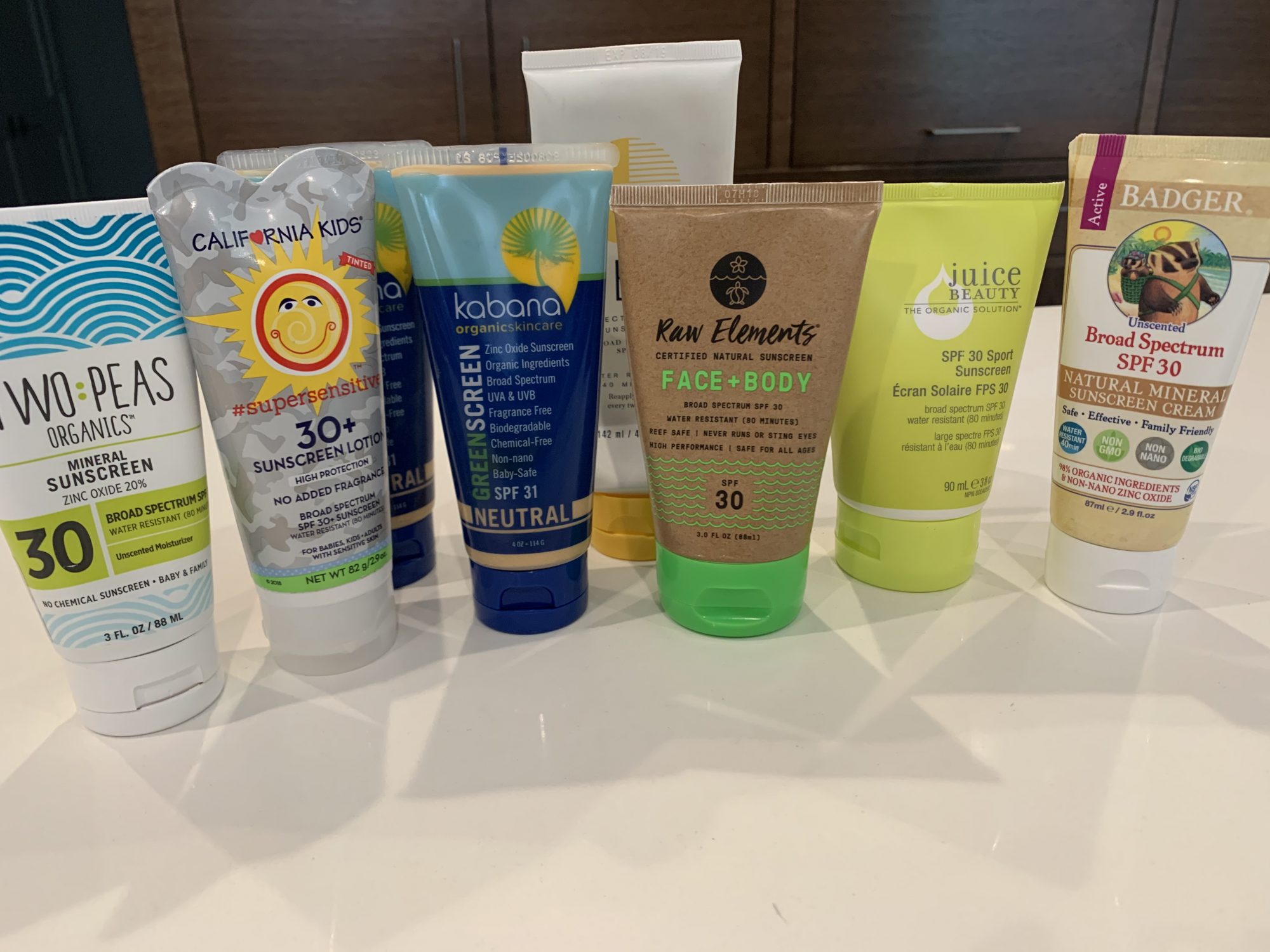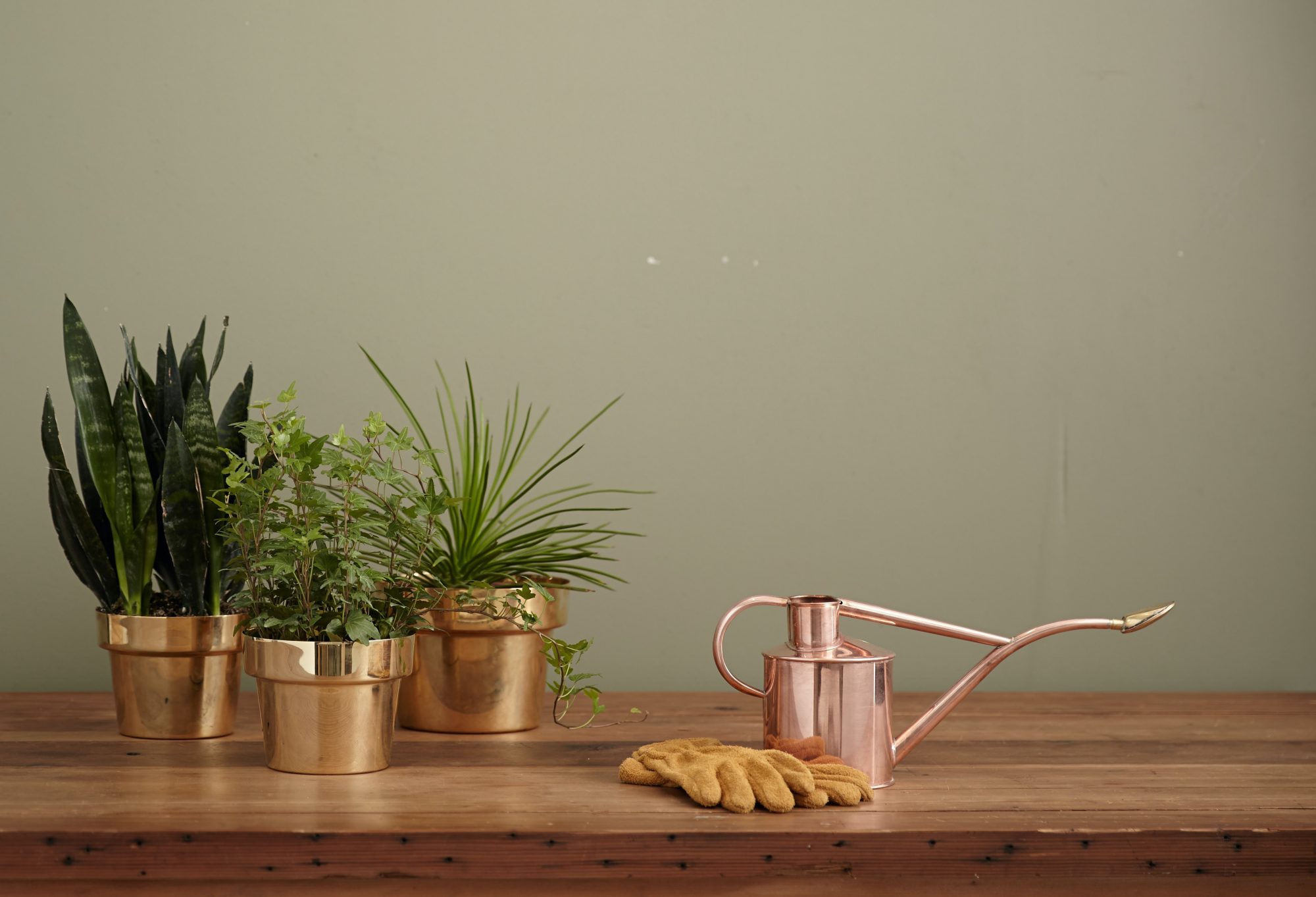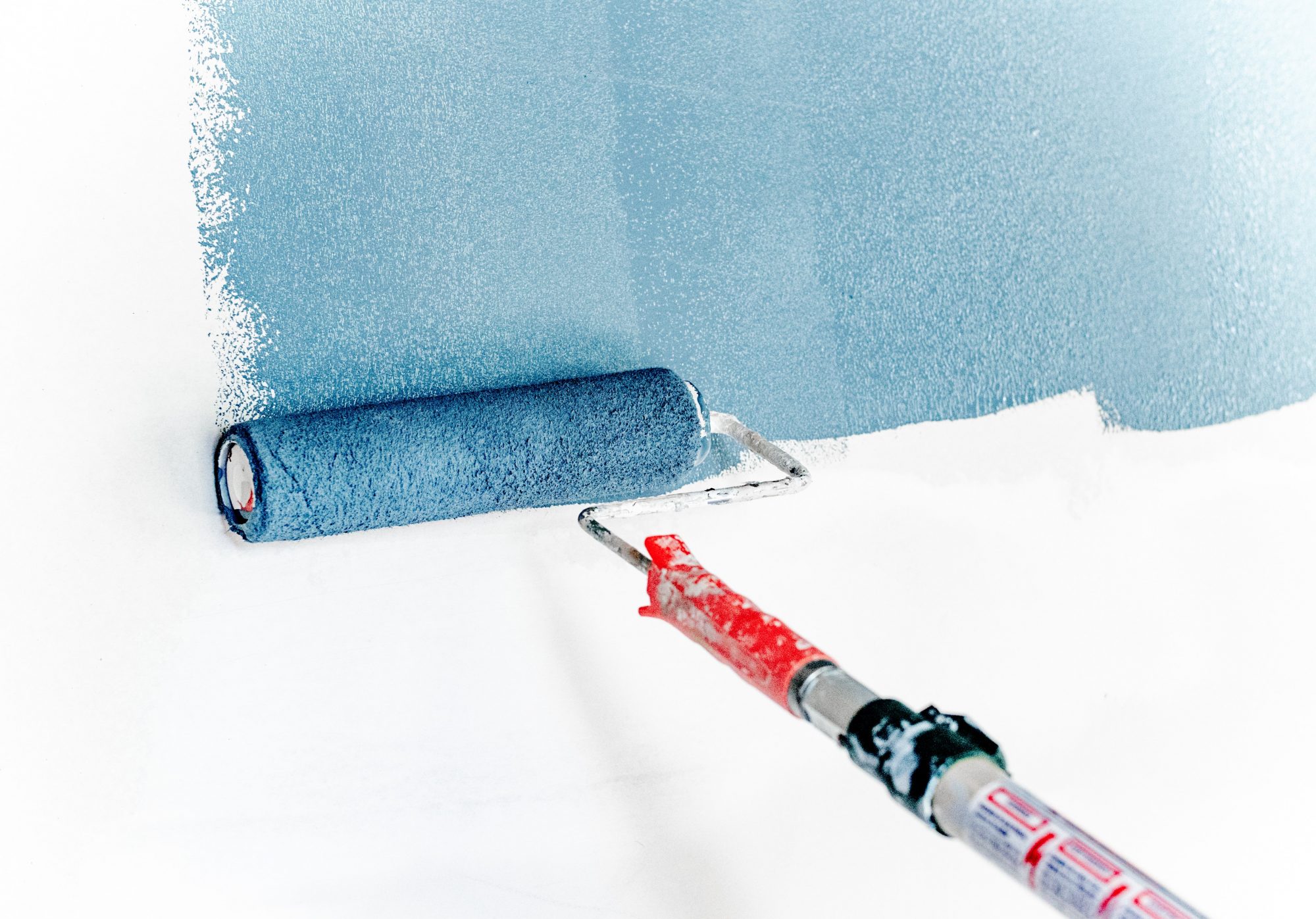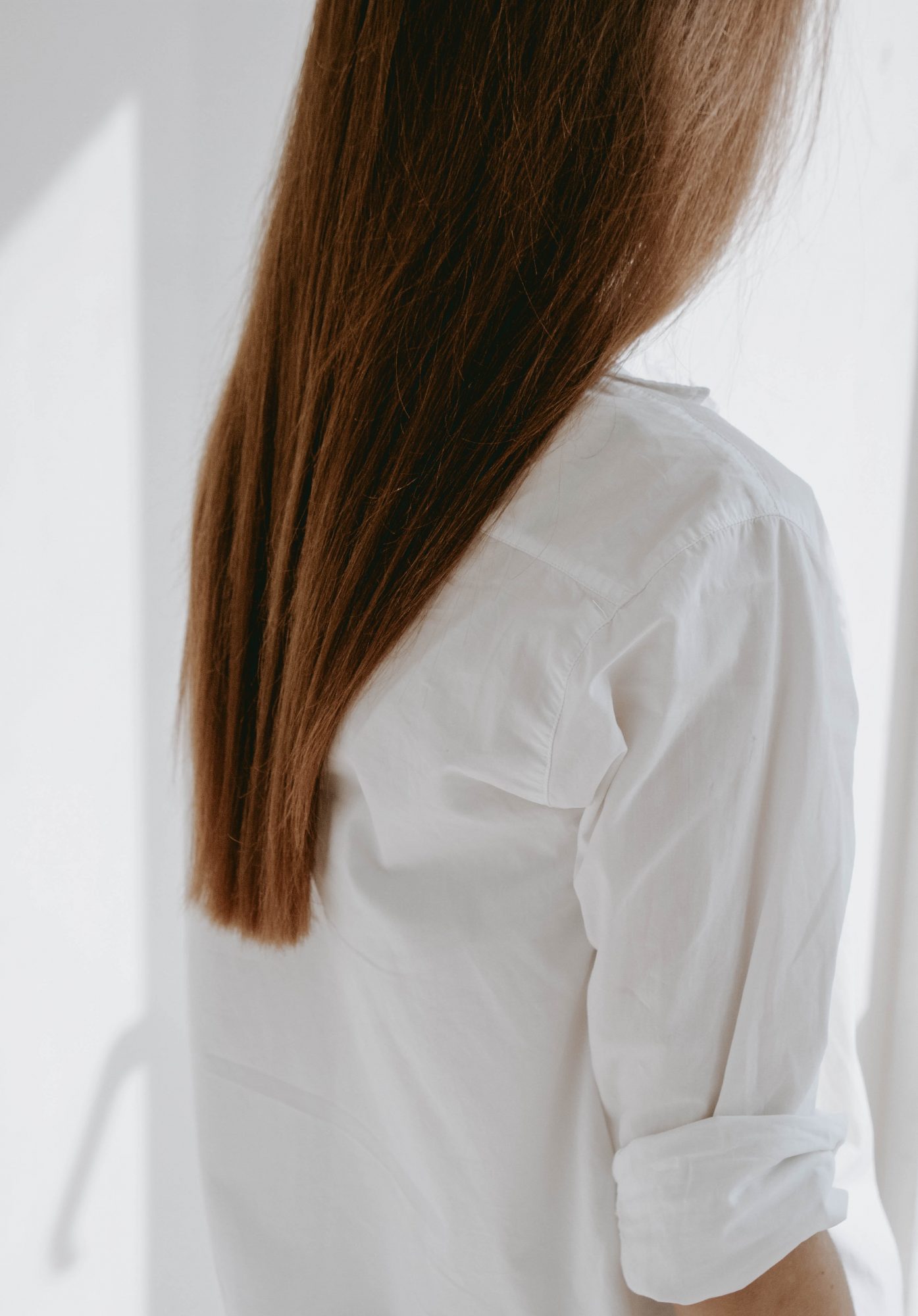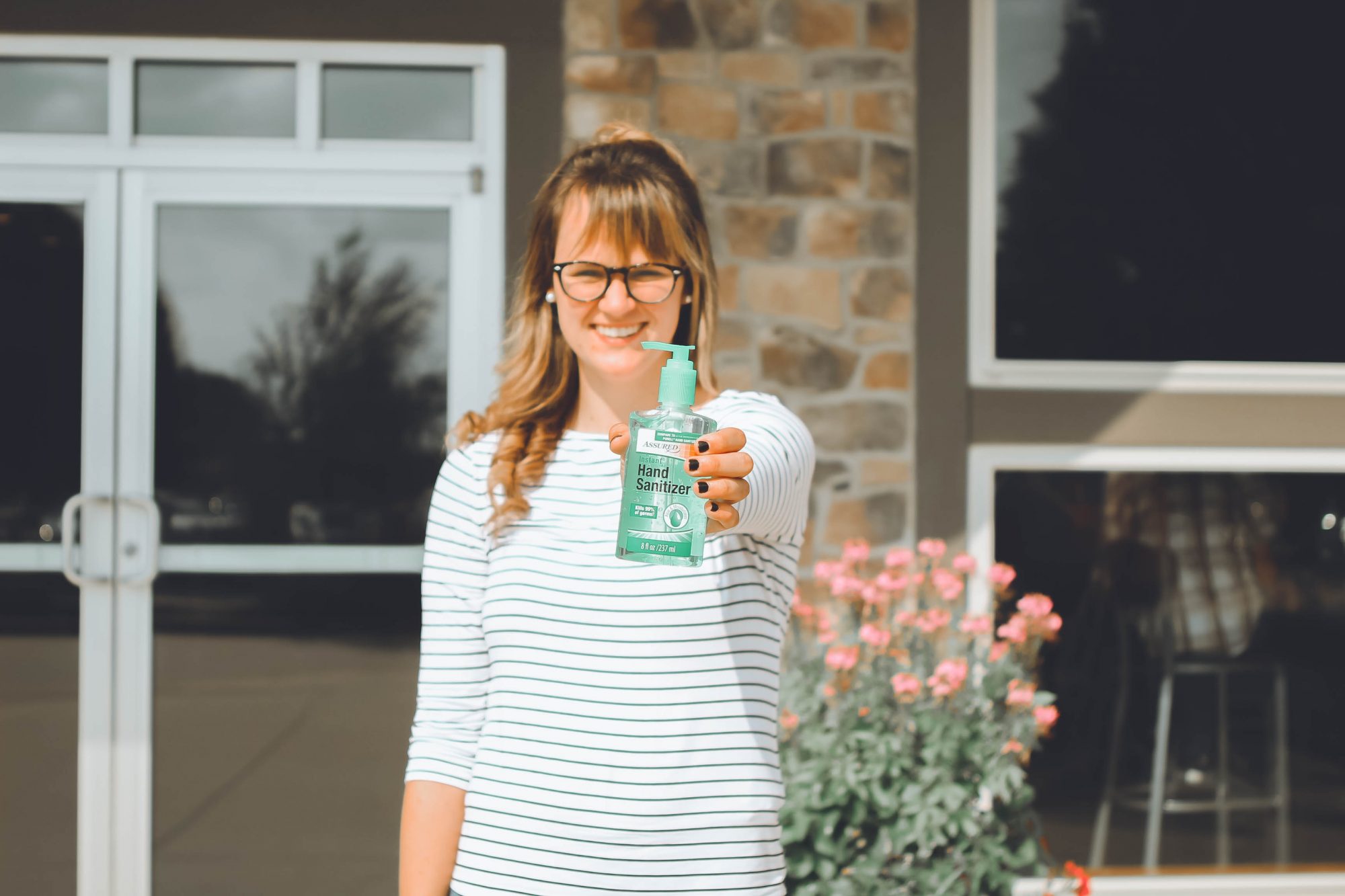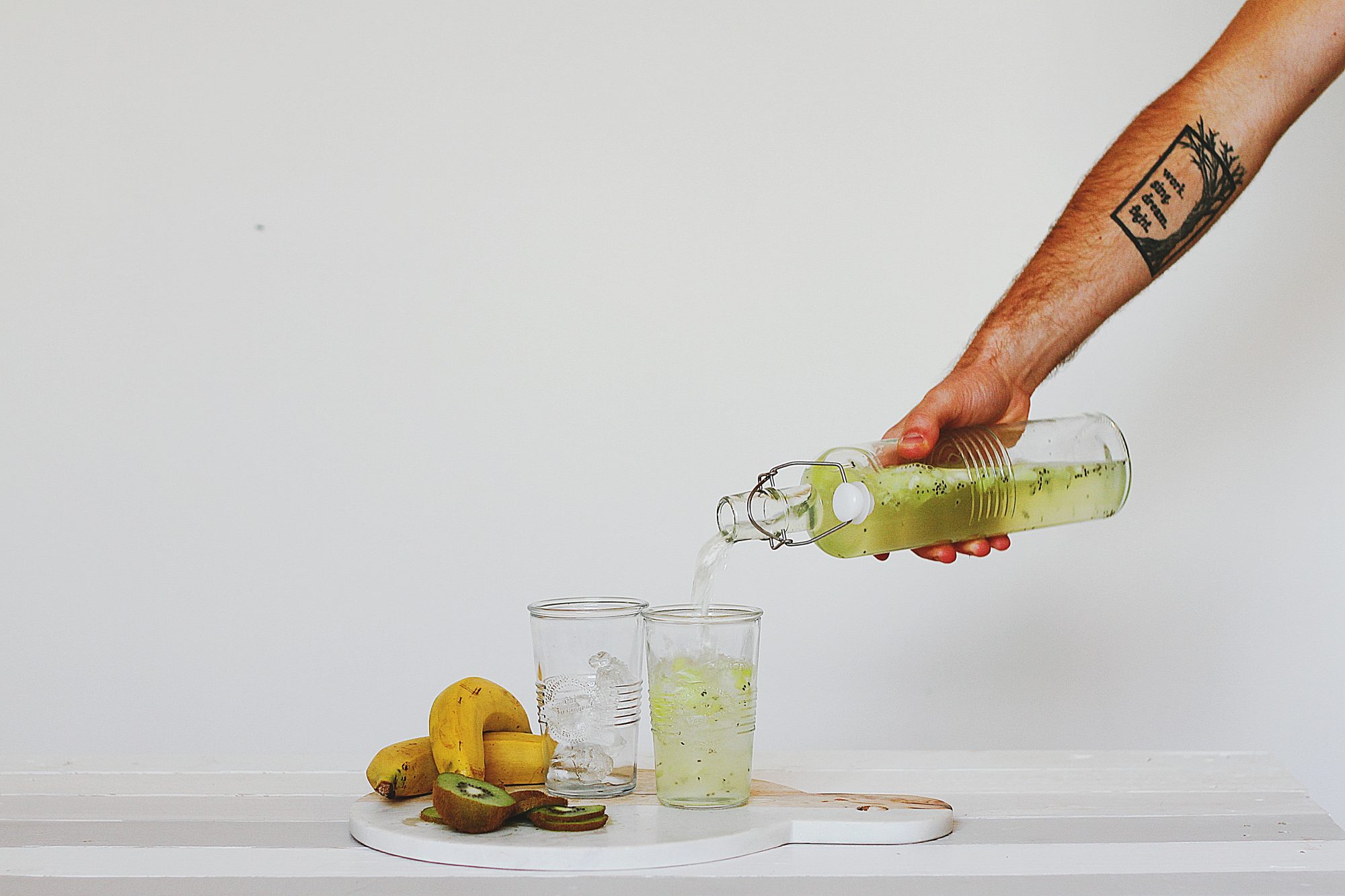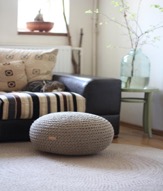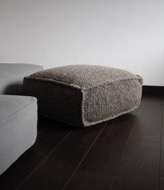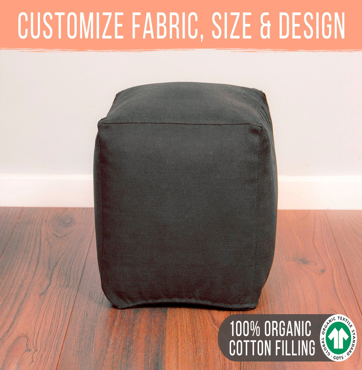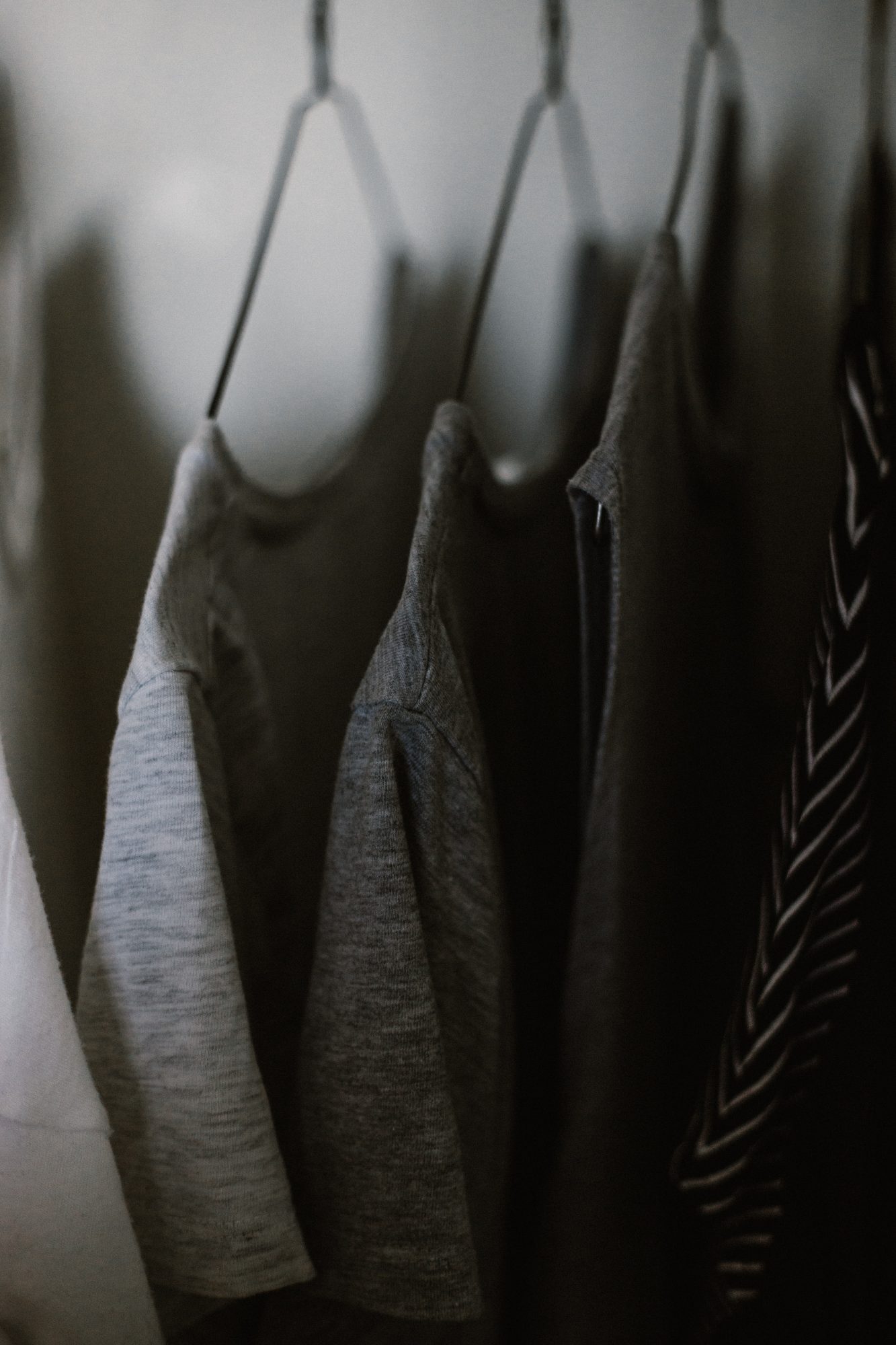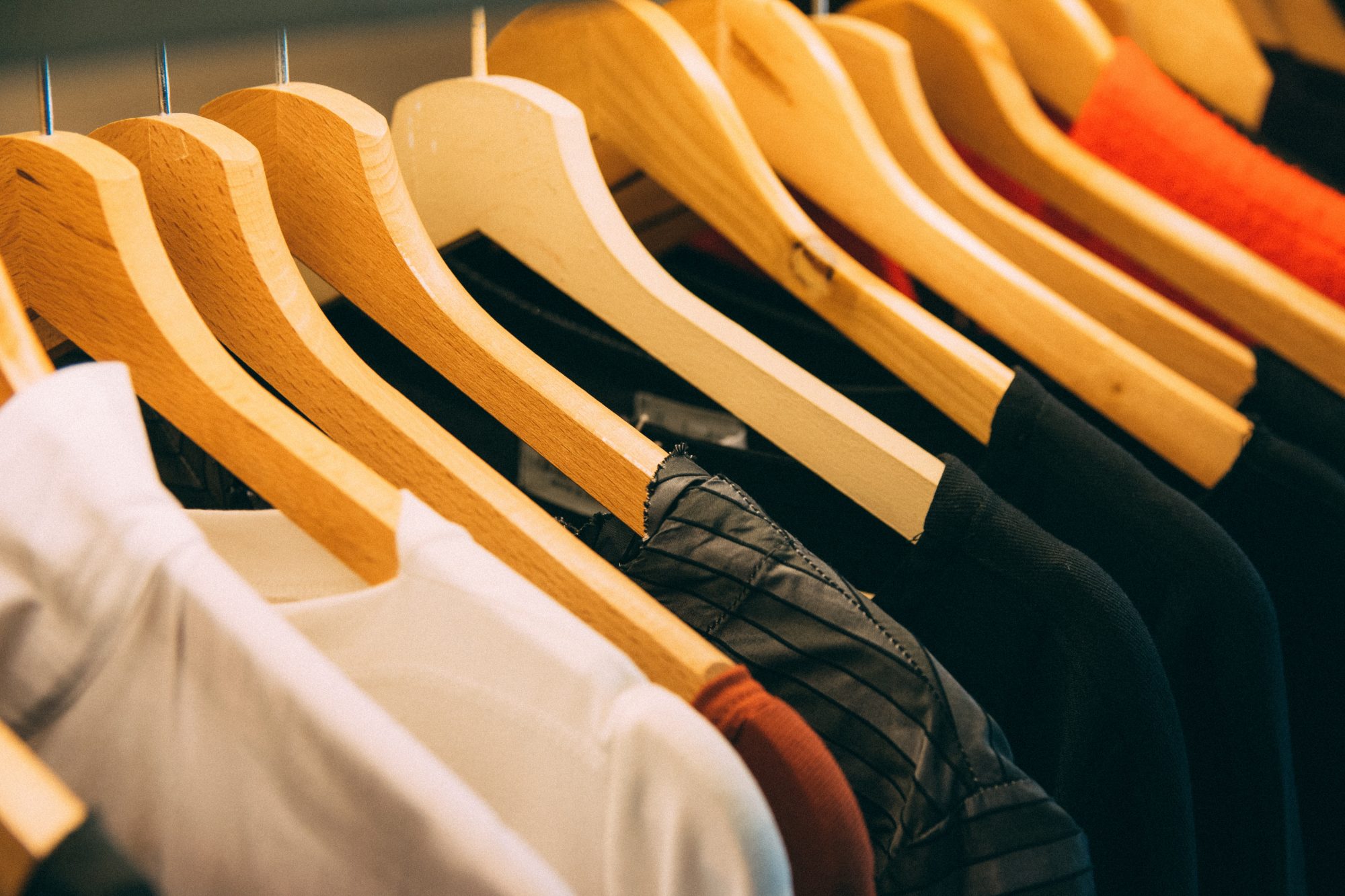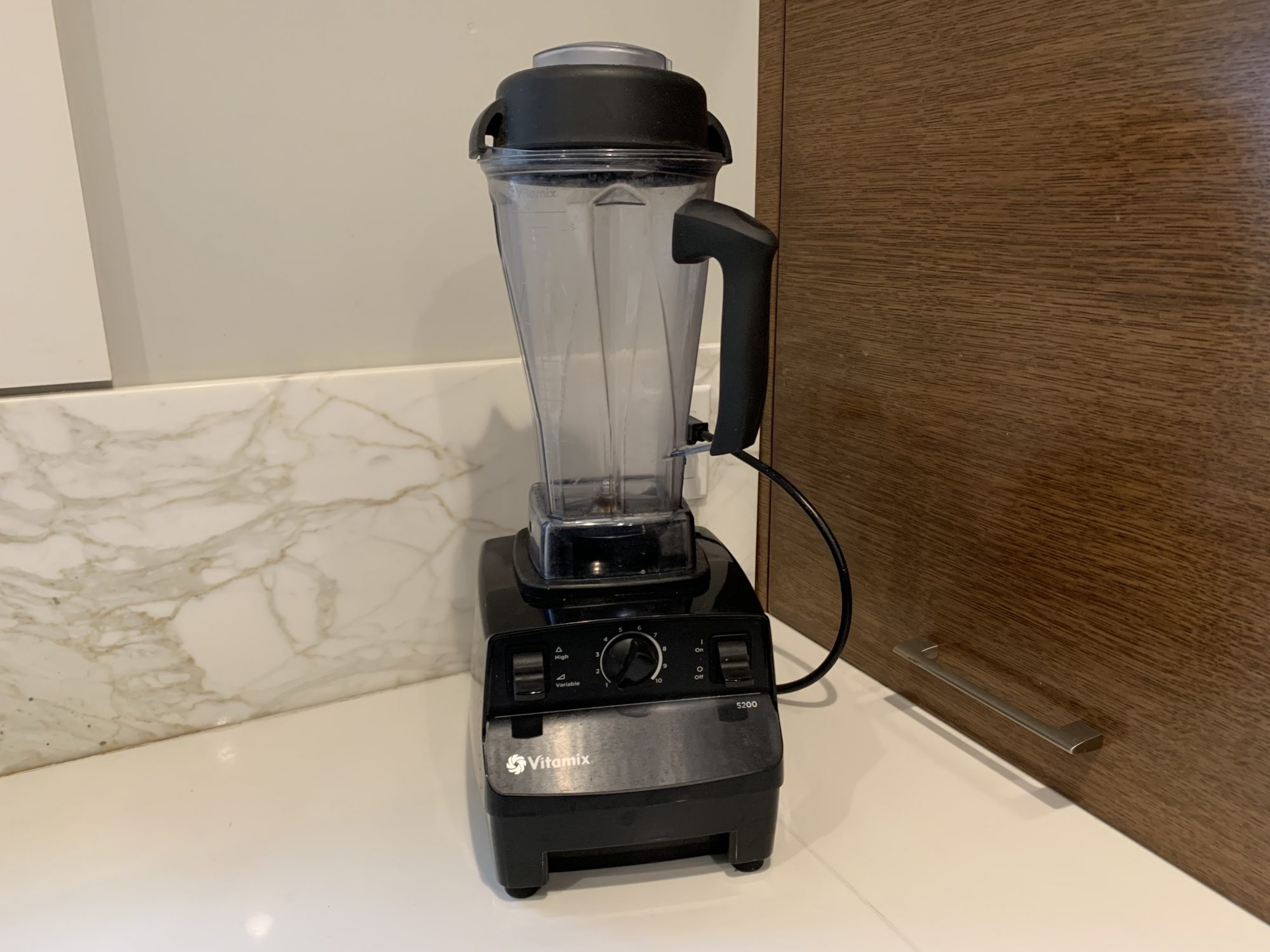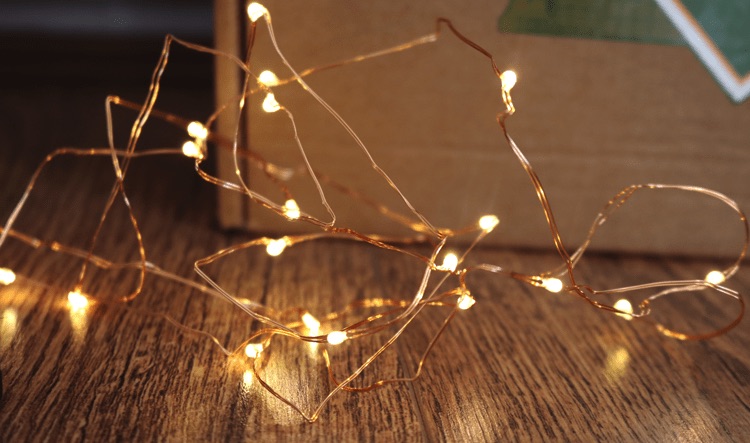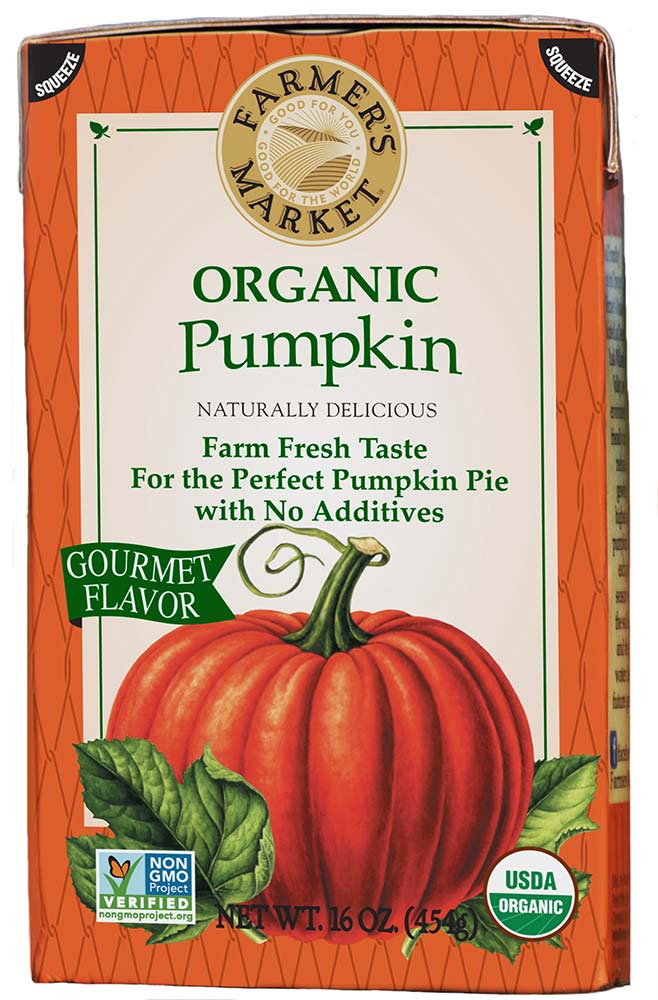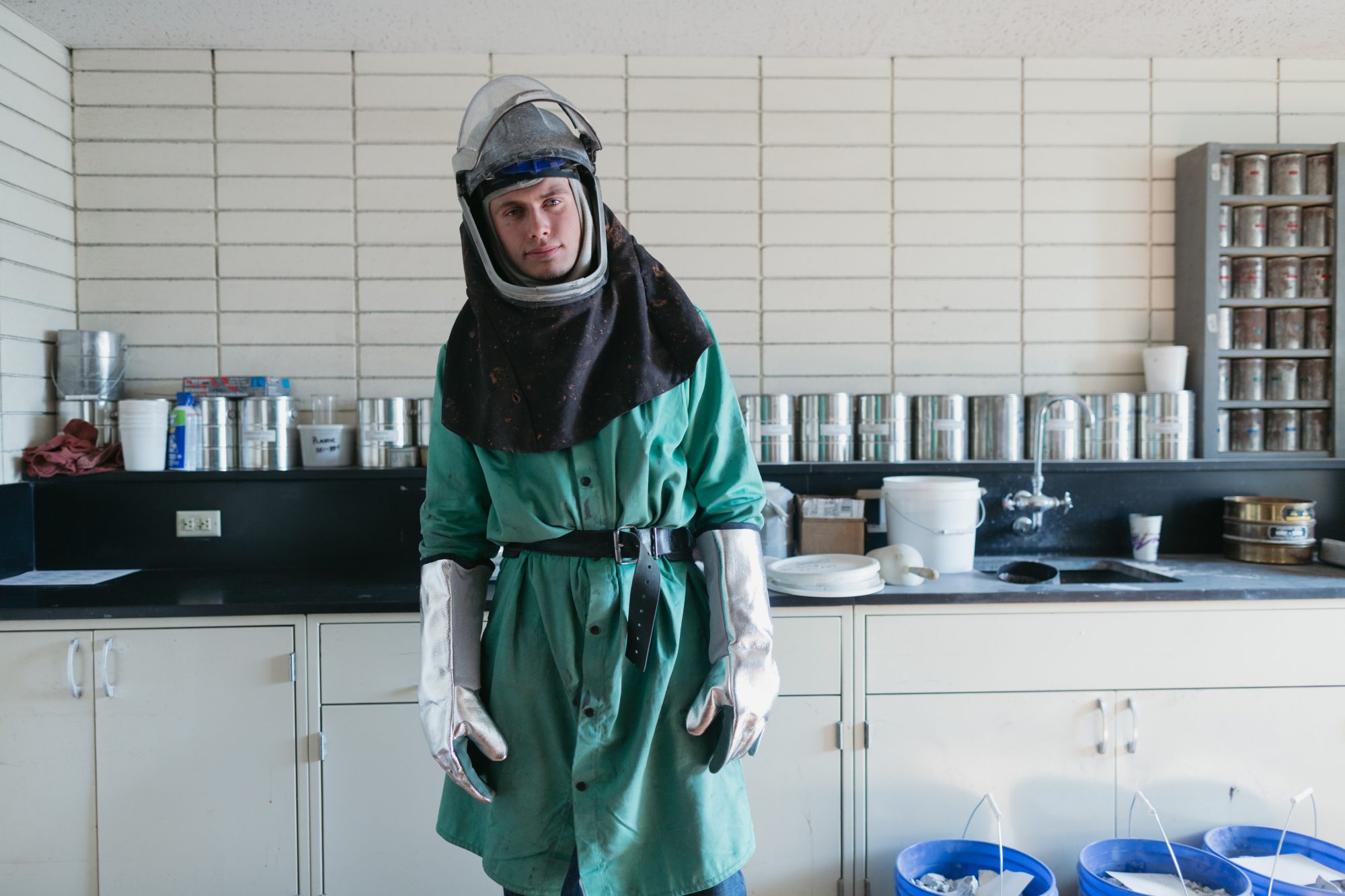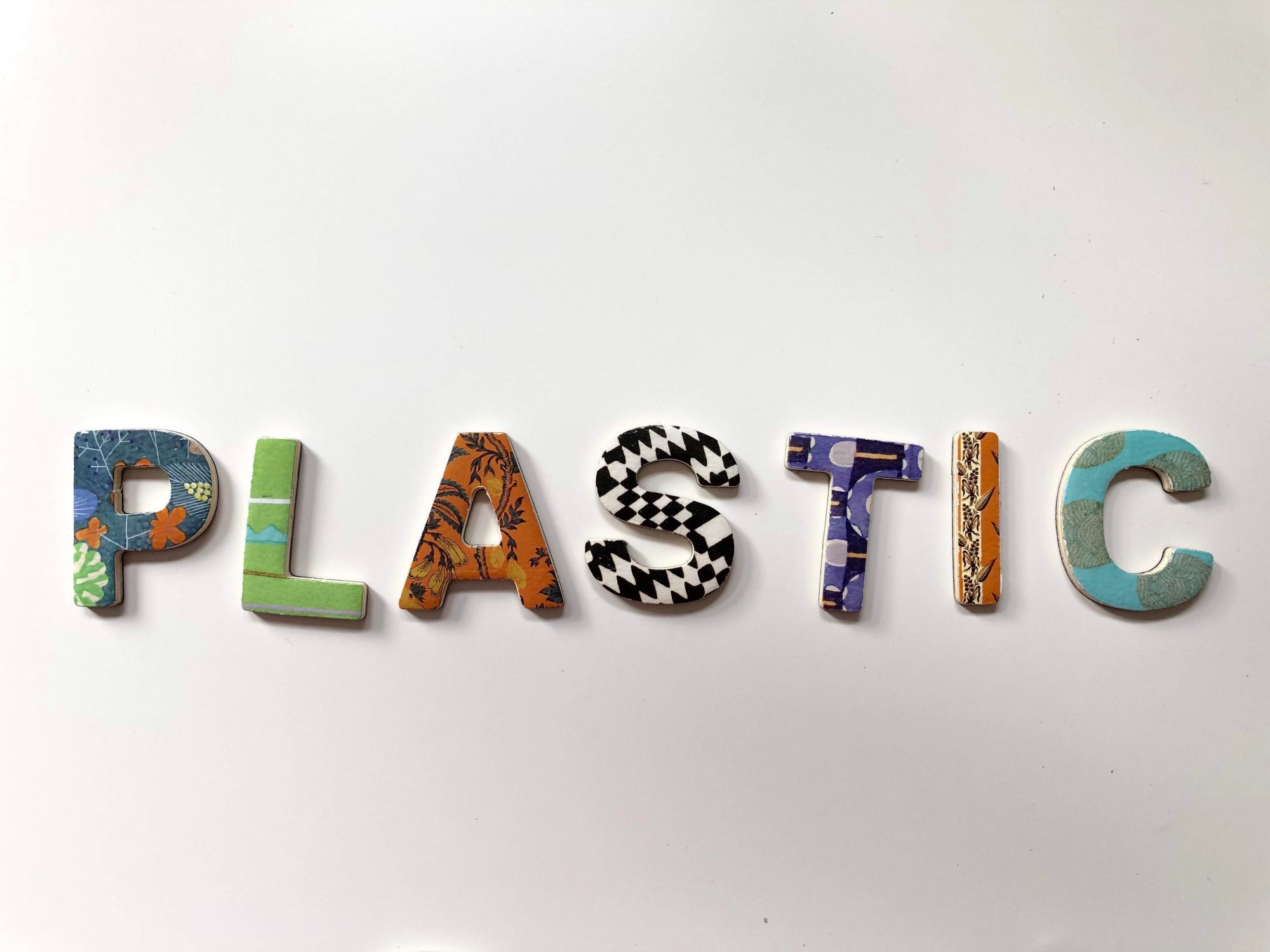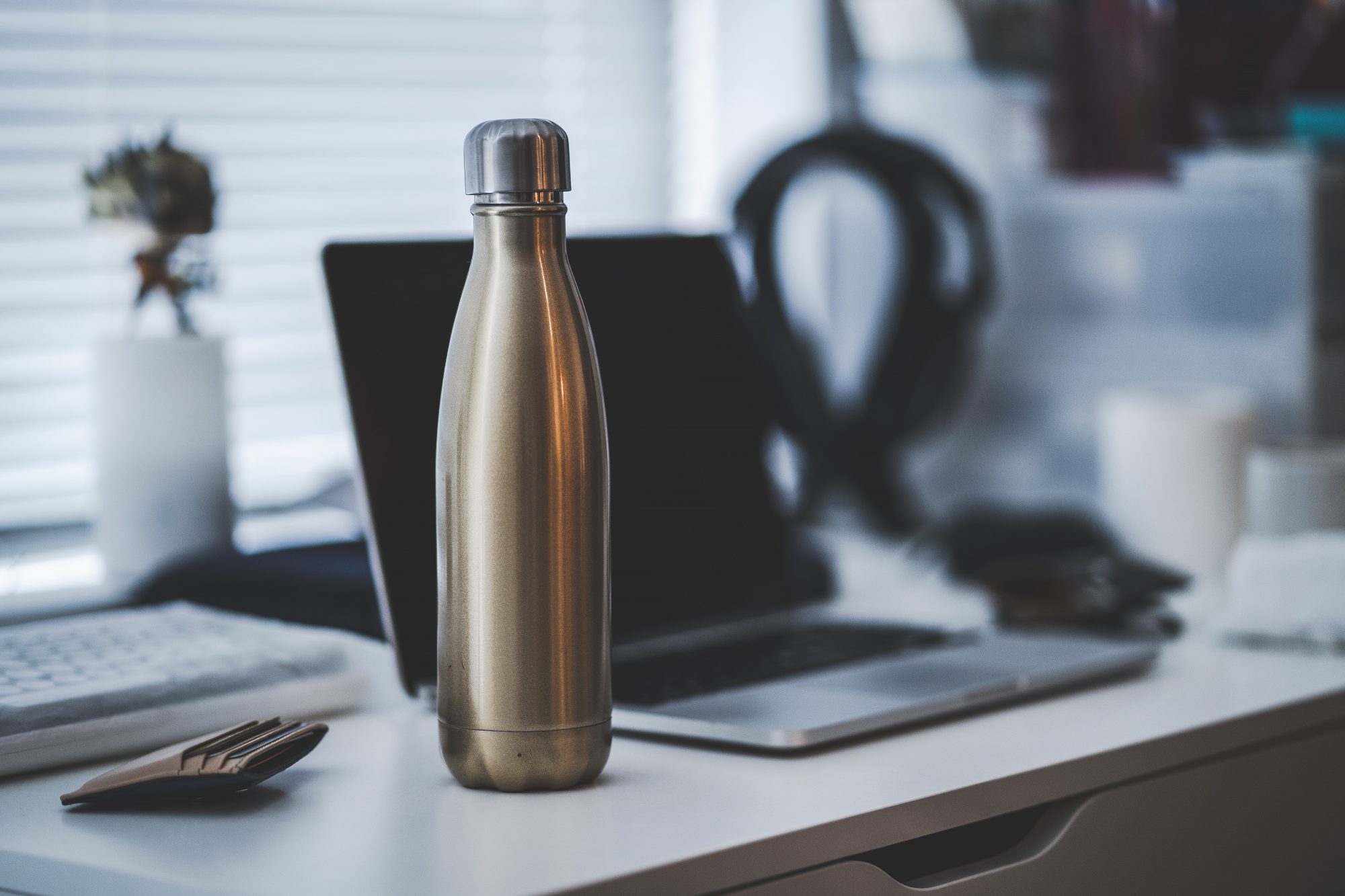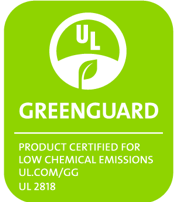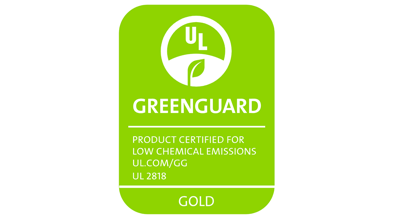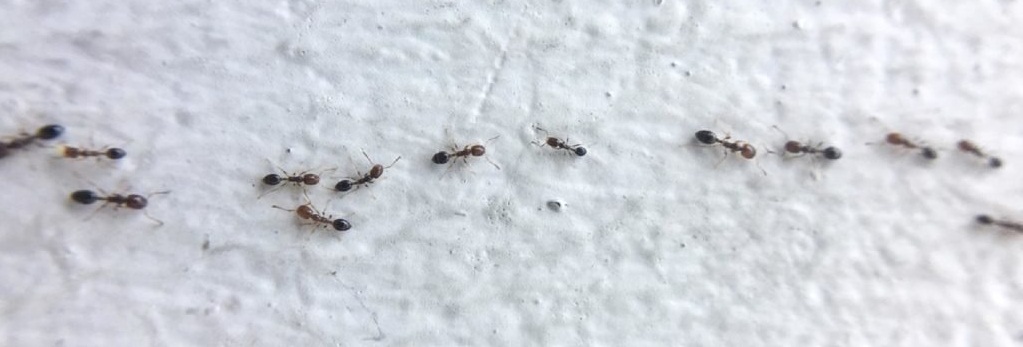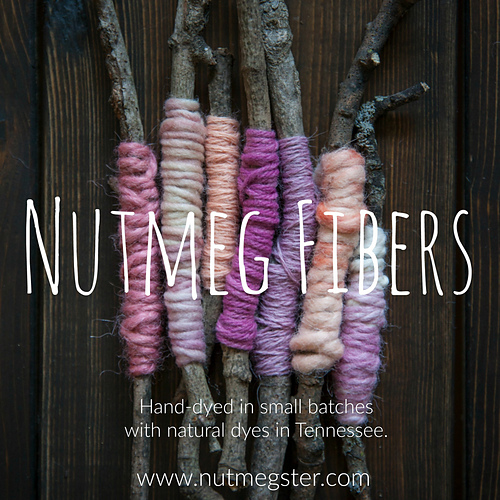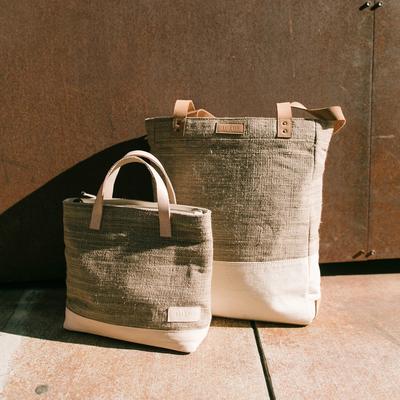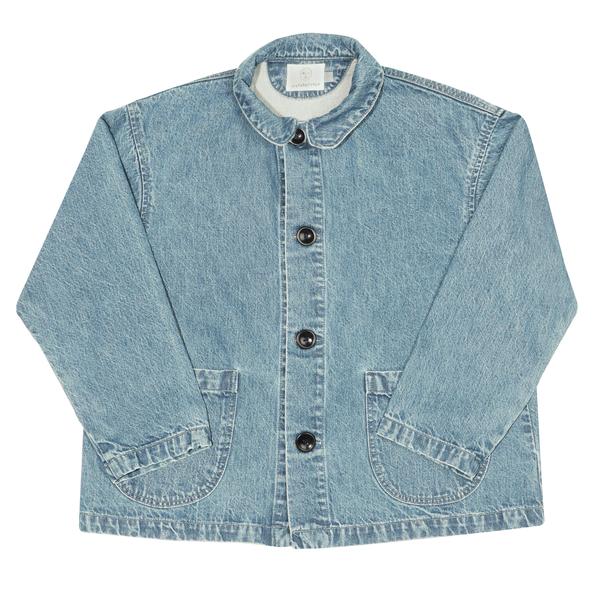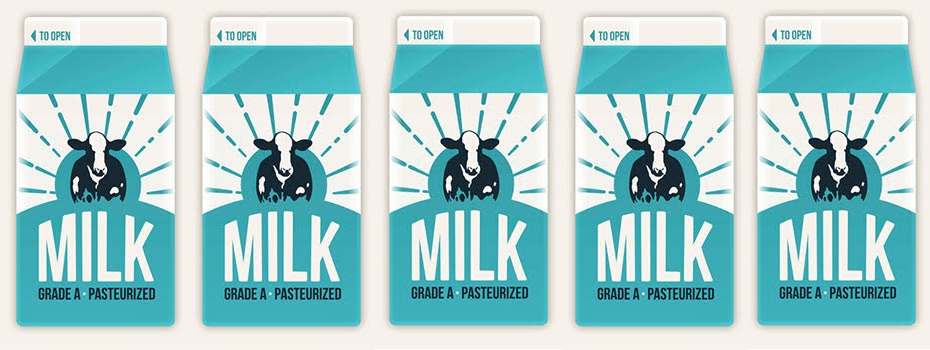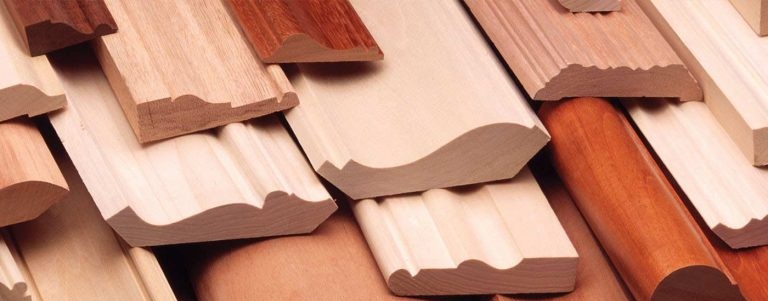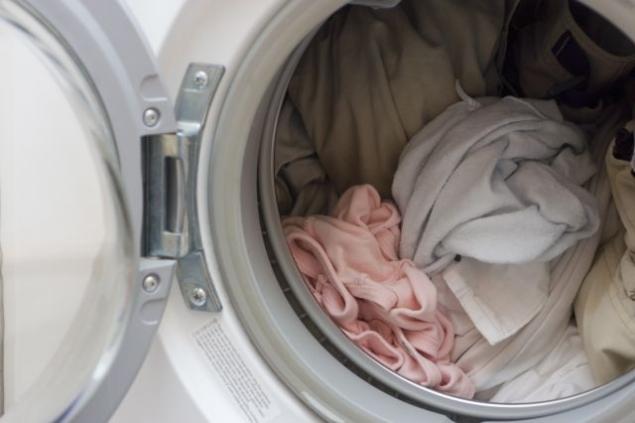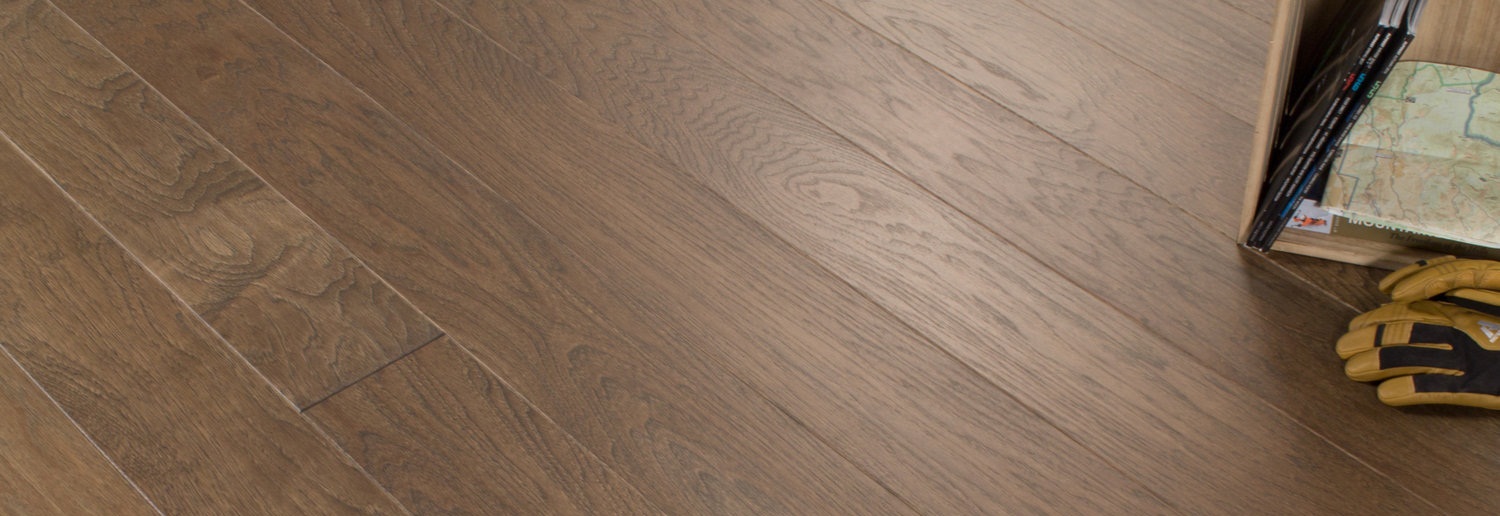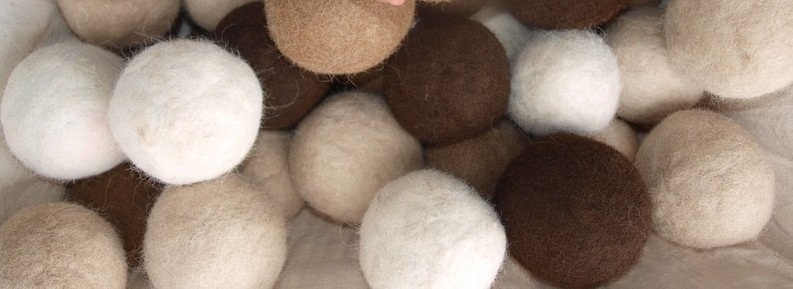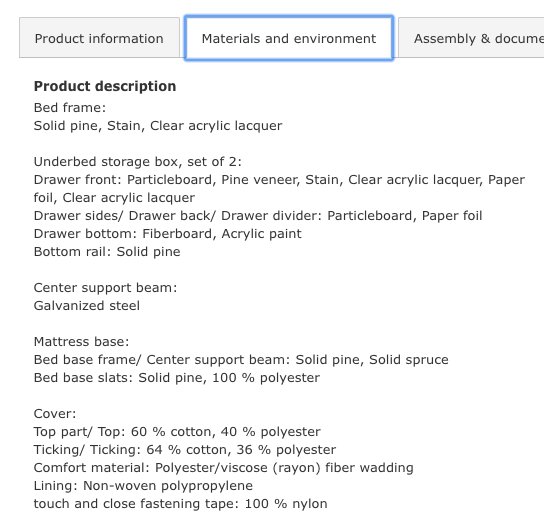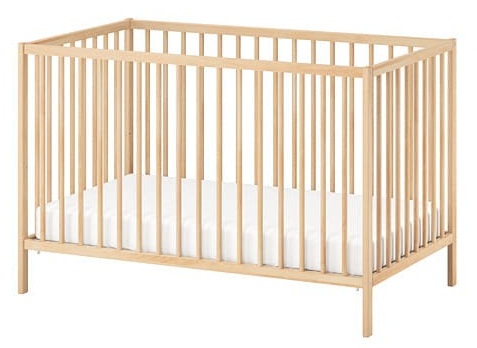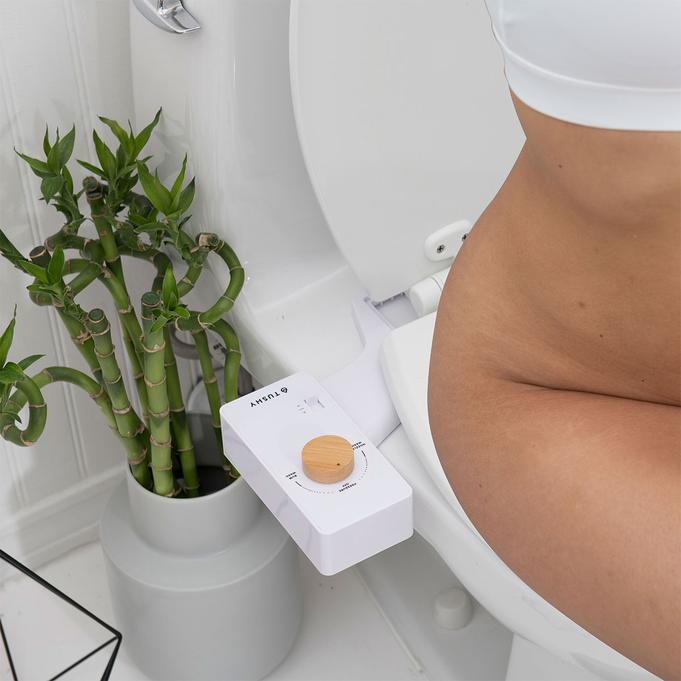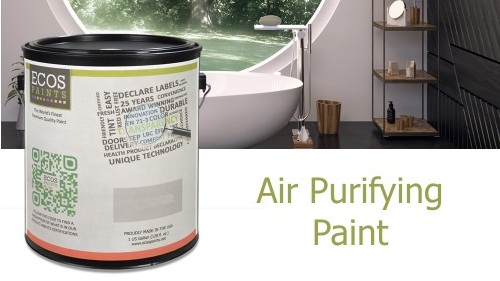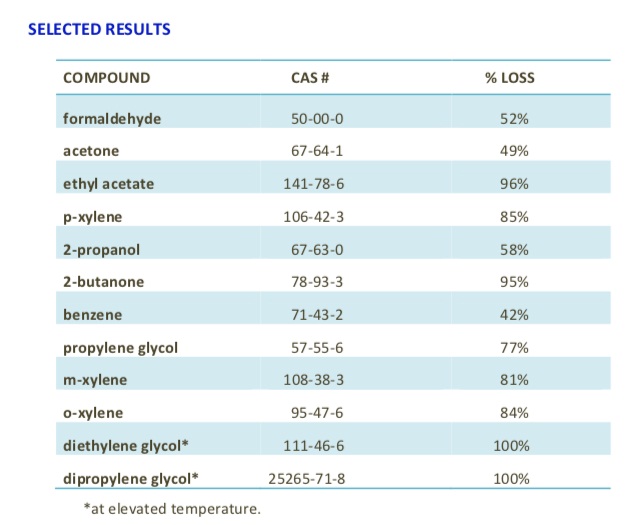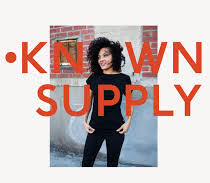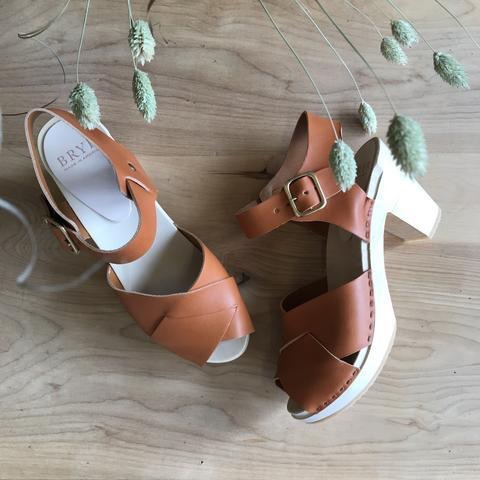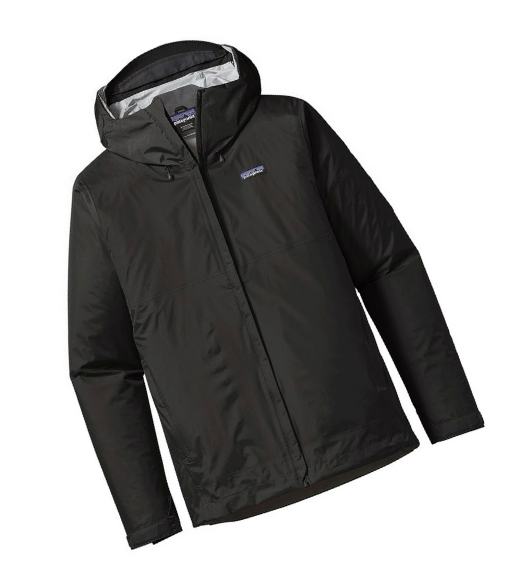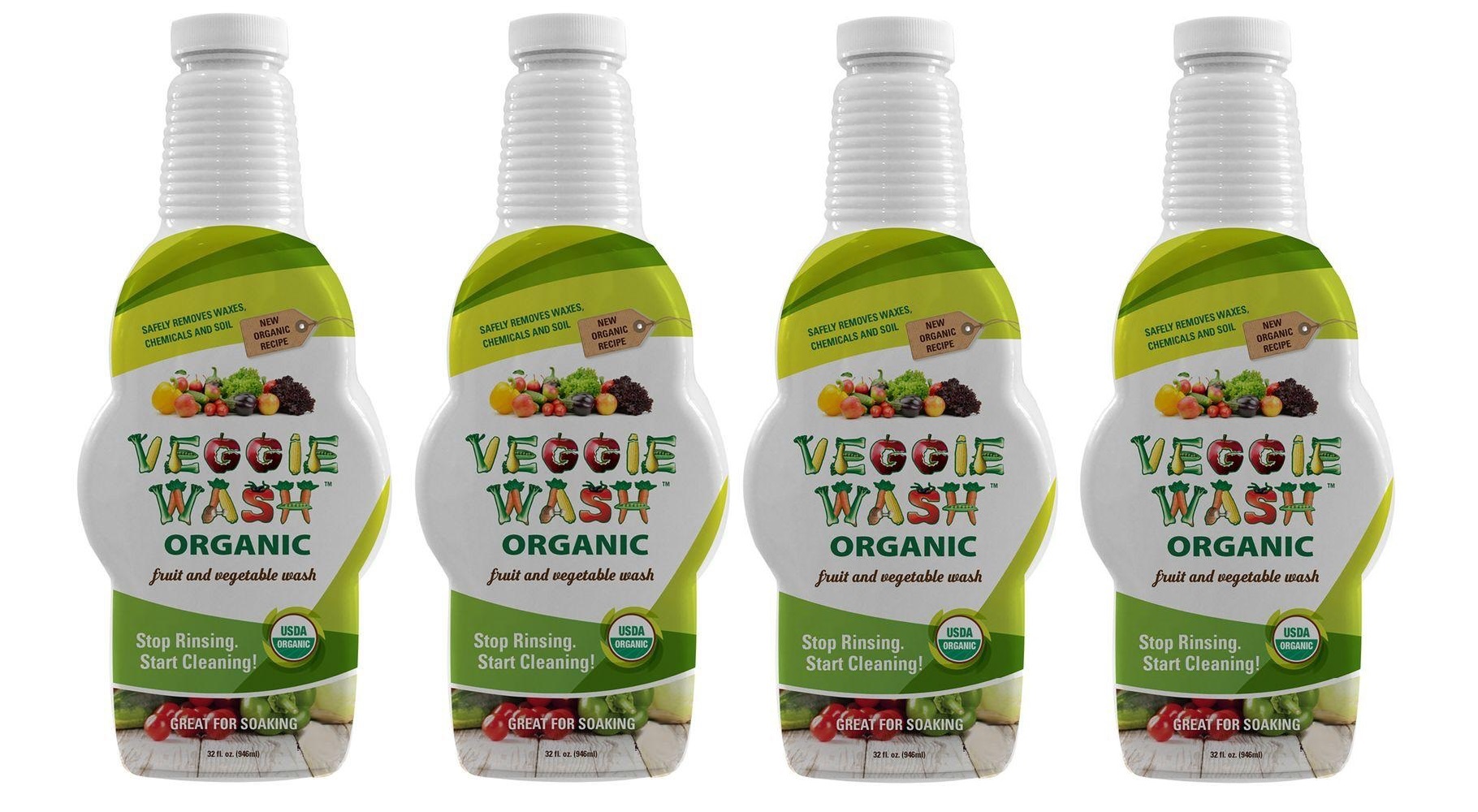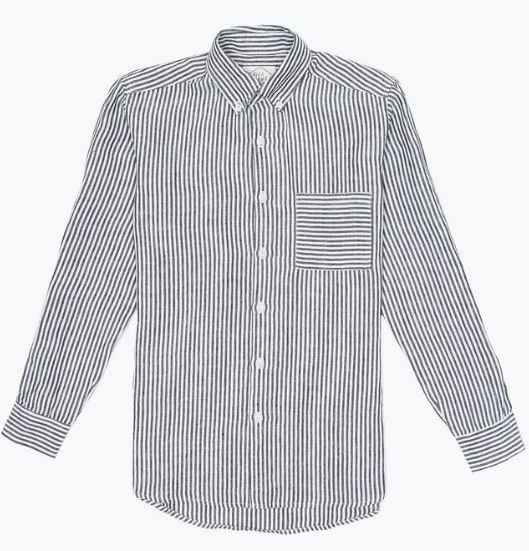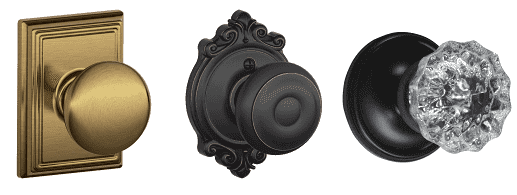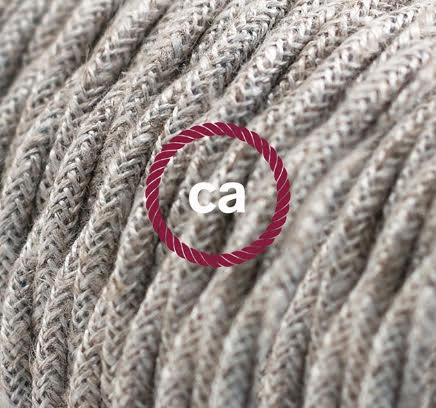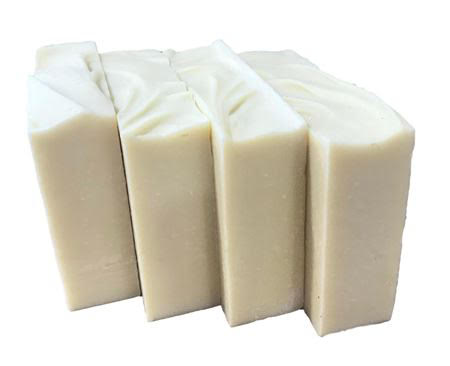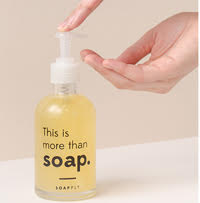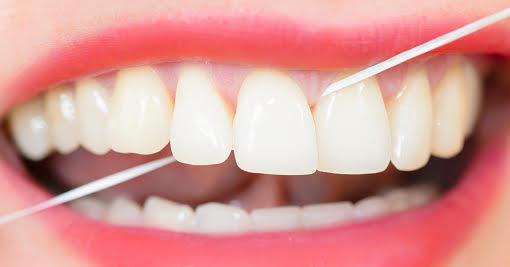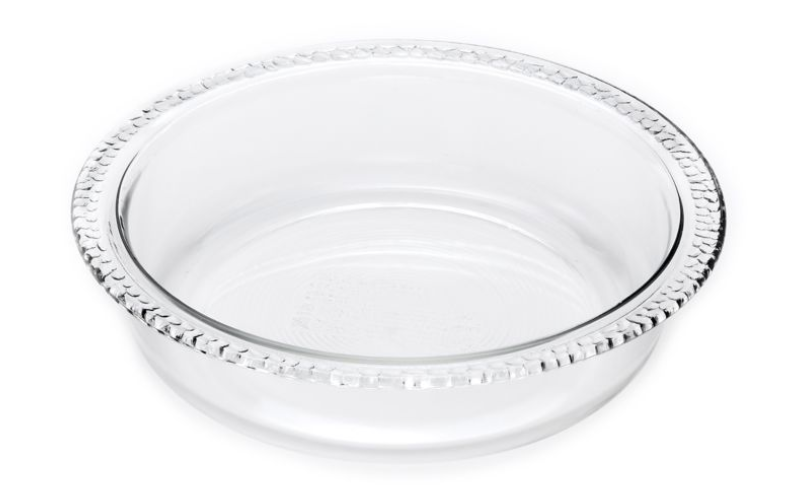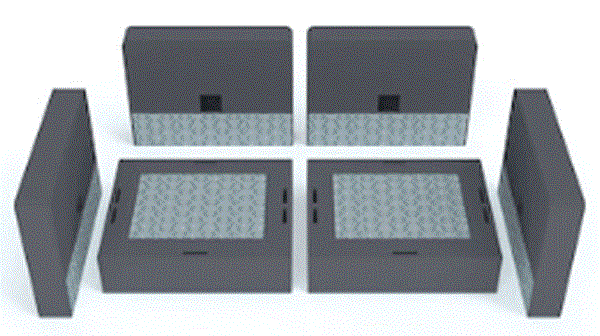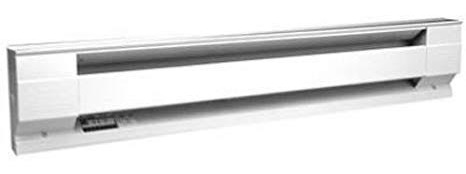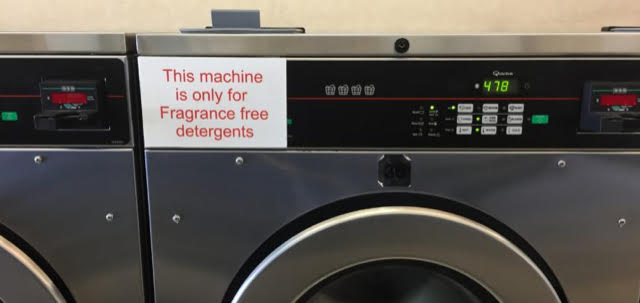
Electromagnetic Fields
What You Need to Know About Your HVAC and Indoor Air Quality Copy
 Today my guest is Judy Rachel, a Home Performance Professional specializing in third party, independent home energy audits, best green building practices specifications and HVAC system design. We’ll be talking about the basics of how your HVAC works, choosing correct filters, why we have indoor air quality problems and how to solve them, and how to get to know your HVAC system so you can use it properly. Judy writes and teaches building science / energy efficiency curricula for various community and city colleges, as well as for workforce training programs. She provides both classroom and hands-on trainings. She is a senior lead trainer for Efficiency First California, training contractors in the Home Performance with Energy Star curriculum. She is a lead trainer for Energy Conservation Institute’s Building Performance Institute (BPI) Certification trainings. Judy is President of the Eco-Home Network, a non-profit devoted to greening as many homes as possible. She is the field mentor for contractors participating in the Southern California Home Upgrade program. Along with being certified as a Building Analyst, Envelope Specialist, Heating Specialist and A/C and Heat Pump Professional through BPI, she is a field proctor for these certifications. As a HERS rater (Home Energy Rater) she does diagnostic testing, verifications and inspections for residential and small commercial buildings to ensure compliance with California’s Energy Code. Certified by Build It Green, she is a GreenPoint rater for new construction and a Certified Green Building Professional. Through National Comfort Institute she holds their Air Balancing and Carbon Monoxide & Combustion Certifications. Judy thinks the most amazing part of what she does is that by creating energy efficient homes she is actually able to improve the comfort, durability, indoor air quality, as well as, occupant safety within homes. www.greenachers.com
Today my guest is Judy Rachel, a Home Performance Professional specializing in third party, independent home energy audits, best green building practices specifications and HVAC system design. We’ll be talking about the basics of how your HVAC works, choosing correct filters, why we have indoor air quality problems and how to solve them, and how to get to know your HVAC system so you can use it properly. Judy writes and teaches building science / energy efficiency curricula for various community and city colleges, as well as for workforce training programs. She provides both classroom and hands-on trainings. She is a senior lead trainer for Efficiency First California, training contractors in the Home Performance with Energy Star curriculum. She is a lead trainer for Energy Conservation Institute’s Building Performance Institute (BPI) Certification trainings. Judy is President of the Eco-Home Network, a non-profit devoted to greening as many homes as possible. She is the field mentor for contractors participating in the Southern California Home Upgrade program. Along with being certified as a Building Analyst, Envelope Specialist, Heating Specialist and A/C and Heat Pump Professional through BPI, she is a field proctor for these certifications. As a HERS rater (Home Energy Rater) she does diagnostic testing, verifications and inspections for residential and small commercial buildings to ensure compliance with California’s Energy Code. Certified by Build It Green, she is a GreenPoint rater for new construction and a Certified Green Building Professional. Through National Comfort Institute she holds their Air Balancing and Carbon Monoxide & Combustion Certifications. Judy thinks the most amazing part of what she does is that by creating energy efficient homes she is actually able to improve the comfort, durability, indoor air quality, as well as, occupant safety within homes. www.greenachers.com

TOXIC FREE TALK RADIO
What You Need to Know About Your HVAC and Indoor Air Quality
Host: Debra Lynn Dadd
Guest: Judy Rachel
Date of Broadcast: October 30, 2014
DEBRA: Hi, I’m Debra Lynn Dadd. This is Toxic Free Talk Radio where we talk about how to thrive in a toxic world and live toxic-free. The first thing I want to tell you today – oh, besides the fact that it’s October 30 and it’s Halloween tomorrow – I should have on my website (and I doubt it), but if you had subscribed to my newsletter, I’ve been sending out different bits and pieces on the newsletter about how to have a less toxic Halloween.
There had been a few things that had come out, different organizations with things. But you might want to take a look at – there’s a website called HealthyStuff.org. They’ve just done a study of toxic chemicals in Halloween costumes and accessories and all those things for Halloween. So just go to HealthyStuff.org and take a look at what they had to say about the toxic chemicals in Halloween.
And you can also go to ToxicFreeTalkRadio.com and type in “healthy halloween” into the search box and you can listen to an interview I did with Annie Bond. We talked about different ways that we have had toxic-free Halloweens in the past and different things that you can do.
So I just encourage you to type in “halloween” or “green halloween”, “non-toxic halloween” in your favorite search engine and see what comes up because there’s a lot of things to know about how toxic Halloween can be and making it a less toxic occasion for your children.
So all that said, today, what we’re going to talk about is your HVAC system, which is ‘heating, ventilation and airconditioning’. I think that’s right, but my guest will correct me. We’re going to talk about indoor air quality.
And I decided to have this guest on because I was talking with her and she gave me so much information about my HVAC system that I didn’t know. I live here in Clearwater, Florida where we are in air-conditioning. My HVAC is on seven or eight months of the year. The things that I didn’t know, I thought all of you should know because if you have HVAC (as most people do), you need to know how it’s affecting your indoor air quality, what you can do. We’re going to talk about all these things.
My guest today is Judy Rachel. She’s a home performance professional specializing in third-party, independent home energy audits, best green building practices specifications and HVAC systems design. And so today, we’re going to be talking about the basics of how your HVAC system works, choosing correct filters, why we have indoor air quality problems and how to solve them and how you can get to know your HVAC system so that you can use it properly. So we’ve got a lot to talk about.
Hi, Judy.
JUDY RACHEL: Hi, Debra!
DEBRA: How are you today?
JUDY RACHEL: I’m doing great. How about you?
DEBRA: Good. And you’re in Los Angeles, right?
JUDY RACHEL: Yeah.
DEBRA: How’s the air quality there today?
JUDY RACHEL: Well, the air quality is just what it is in L.A. We’re a great, big city. I am in a valley where we have inversion layer. So it’s definitely got its good days and its bad days. Fall is definitely kind of a better season for us with the air quality. But all that being said, indoor air quality, studies are showing, is much worse than outdoor air quality even in cities like L.A.
DEBRA: Yes. And those studies have been going on for many, many years and we’ll talk about that.
I just wanted to say that I have a friend who lives in L.A. who is also a building scientist like you are. She does consultations about fixing your HVAC for indoor air quality purposes. But also, what was so interesting to me when I went to her house what a difference it made that I always thought I could just never live in L.A. But being in her house, the difference between the outdoor air quality and the indoor air quality was just amazing.
And of course, she lives in a completely non-toxic house. So she’s reducing her indoor [inaudible 00:05:43] source as she should. It made so much difference to not just have any old HVAC, but to be able to do the right thing and understand how it is. So I know it can make a huge, huge difference.
But before we get into the details, tell us how you got interested in this subject.
JUDY RACHEL: Well, I was actually searching very specifically for a job that I could be doing every single day of my life that I could feel good about, that was going to match up with my values of wanting to live a green, sustainable, non-toxic life. And in that search, I happened to kind of fall into building science.
I heard about home energy audits. I talked my way into a class on home performance and building science and I was lost. It’s absolutely fascinating. It’s amazing, the things that we don’t know or understand about the way our homes perform and the fact that in making a home energy efficient, we have all these wonderful byproducts. We get increased comfort, we get better indoor quality, we create more durable homes, we create healthier and safer homes.
So it just was this incredible revelation, “This is awesome! It’s fascinating. I could do this every day and wake up happy to be doing this.”
DEBRA: That’s really good. I’m so glad that you’re doing it because it is a field that people need to understand. It’s kind of technical. You explained it so clearly to me that I’m sure that the listeners are going to understand everything you say today.
So first, let’s start with explain the basics of an HVAC system.
JUDY RACHEL: Well, so basically, there’s actually two components to what we call an HVAC system. We have the component that we are actually conditioning the air in our home. And so that’s really the heating and air-conditioning component of it.
Typically, it’s best that it’s a completely separate system from the v portion, which is ventilation. The heating and cooling portion is conditioning our air. It’s supposed to be about comfort. And part of comfort is actually moisture removal in air-conditioning.
The v portion, ventilation is really about the contaminant and pollutants in our air and getting proper air changes through our house. It has its own two components. We have a source point ventilation where we’re actually removing the contaminants at a particular source.
So say in a bathroom where we have high moisture issues (showers, baths, that type of thing as well as odors), we want that sources removed. In the kitchen, we’re cooking. There’s combustion byproducts. We want those sources of contaminants removed.
And then we have the second component of ventilation, which is the whole house ventilation where we actually need to create air changes from the indoors to the outdoors, so that we get this body of air that moves through the house, so we actually can remove pollutants that might be building up in the home.
DEBRA: And that would include even things like if you think that you don’t have pollution (like I think I don’t have pollution in my house because I don’t have toxic chemicals), that would include things like the pollution that’s created when we breathe, when we exhale, things like dust mites that might be coming off your bad or…
JUDY RACHEL: Exactly!
DEBRA: Tell us about some of those pollutants that w might not be thinking of.
JUDY RACHEL: Right! And so the thing is is that dusts are very living. So even when we are making tremendous effort to not bring contaminants into our homes, the very fact of our existence in an enclosed space is creating – basically, we can call them contaminants. We are creating stale air. We’re breathing in the O2, we’re breathing out the CO2. We need to make sure that we have the right balance and mix of those things.
And then, our various cleaning supplies are releasing things. So, of course, if we’re trying to clean much more non-toxically, then there’s going to be less of that. But these things do build up. Just every effort we make – our skins are still shedding cells and if we have any pets, there’s dander. So there are just all kinds of things that are building up and basically just making the air stale when we have an enclosed environments, which is what our homes are. And in order for us to keep…
DEBRA: And we… go ahead.
JUDY RACHEL: Oh, I was going to say just so in order for us to keep our conditioned air conditioned in our houses, we do need to have an enclosed environment, so we need to make sure that we’re also getting the air changes.
DEBRA: Yeah, we need to go to the break, but I want to ask you a question about that when we come back. You’re listening to Toxic Free Talk Radio. I’m Debra Lynn Dadd. My guest today is Judy Rachel. She’s a home performance professional specializing in energy and indoor air quality. We’ll be right back.

DEBRA: You’re listening to Toxic Free Talk Radio. I’m Debra Lynn Dadd. My guest today is Judy Rachel. She’s a home performance professional specializing in both indoor air quality and also energy efficiency. These two things go together and I’m so interested in that balance.
So Judy, would you just tell us more about – I really want us, all the listeners and myself, to understand that the HVAC system, there’s this balance going on in our homes where we need to have the air heated and cooled in an energy efficient way, which means seal up the house.
That’s one of the reasons why we have indoor air quality problems now. This whole thing about indoor air quality, when I started writing it, it wasn’t even a phrase. It didn’t exist 30 years ago when I started writing.
I remember that then, there was the energy crisis. And after the energy crisis, they said, “We need to seal up all the houses to retain the heat and cooling and reduce the amount of energy we used.” And that’s when we started having indoor air quality problems because prior to that, houses leaked around little cracks and windows and all these things. And now, there was no longer the air exchange.
So tell us more about these opposites of needing to seal the house for energy efficiency, yet needing to have ventilation for indoor air quality.
JUDY RACHEL: So first, I want to say that there’s a little bit of a fallacy that we didn’t have the indoor air quality problems when our houses were leakier.
What’s happening in a leaky building is that the air exchanges are completely random and they’re from random sources. And because of the way physics work, hot moves to cold, wet moves to dry, the natural forces that go on particularly in a leaky house are that we get cold air coming in down low and we get warm air trying to exit up high. It creates this whole invective loop and pressure differentials that are happening from inside to outside.
And so if I’m bringing air in from down low in my climate air, that’s from raised foundation. So I’m sitting on top of a bunch of dirty, disgusting earth that very often has all kinds of rodents and raccoons and possums, skunks and everything else that get underneath my houses and…
DEBRA: Me too, me too.
JUDY RACHEL: …and/or even moist basements and things like that and in other parts of the country. So we’re bringing in air from those really horrible places into our home. And then it’s also trying to exit out the top of our home.
And then in the summer, it actually reverses. And so now, I’m bringing in air from my attic, which is another place where there’s all kinds of stuff going on up there that I really don’t care to be breathing that air.
So in our leaky houses, the air exchanges were much quicker, but they were still coming from sources that I really didn’t want to be breathing that air.
Then there’s also the portion of I basically built a home to shelter myself from outside conditions because I’m just not as hardy as, say, my predecessors in human history. So I want some comfort, I want an enclosure to keep me safe and to keep me comfortable.
So now, I’ve put in a forced air system. So I’m heating and cooling my air, but if the house is leaky, then my conditioned air is coming and going. The outside air is coming in and it’s messing up this air that I’m paying to condition.
So that’s where a lot of the energy efficiency comes in. If I have a leaky building and I’m trying to heat or cool it, I’m spending much more money heating and cooling that air because it is randomly coming and going and I don’t have any control over that.
Then the way that I deliver the air into the house is through this air distribution system, the air ducts. If those air ducts are leaky, then I’m bringing in this unconditioned air that’s also very typically from the crawl spaces that my ducts are running in or the attic if that’s where my ducts are running through or the walls if that’s where my ducts are running through.
So I’m losing my conditioned air, I’m bringing in unconditioned air and I’m also bringing pollutants in if I don’t make sure that my air distribution system, that those ducts are actually tight.
DEBRA: Yeah.
JUDY RACHEL: So they have both an effect on the energy efficiency of the equipment, of my home, of my energy bill, as well as my indoor air quality.
DEBRA: So one of the things that I didn’t understand several years ago was that I always assumed that air was coming in and out of the house. But I understand that in most, if not all HVA system, what it’s doing is recycling air.
And so the key thing of interest for me about that aside from the fact that we’re probably depleting oxygen is that when you’re recycling the air, then the pollutants that people who aren’t living in toxic-free houses like you and I, just the average American person or the average person in the world, they’ve got all these toxic chemicals going on.
They’re cleaning with toxic chemicals and spraying pesticides and fire retardants on the sofa and all these things and there’s no place for those pollutants to go and they just build up and build up and build up and build up over time to very toxic levels in the home.
So it’s not just what are the toxic chemicals, it’s toxic chemicals plus no ventilation.
So could you just explain about the recycled air and how then does the v part of HVAC work to be making these air exchanges?
JUDY RACHEL: Right! So yes, our forced air system really should just be moving inside air through the house. They shouldn’t be exchanging outside air at all. That’s part of what I was just saying in terms of leaky duct system, is that the force air system in our house and the ducts that are bringing that air to the various rooms is really like the circulatory system of our body. There shouldn’t be an exchange from inside to outside through that system.
So the heating and cooling portion is to make us comfortable, it’s to condition our air and it’s also to remove moisture in climate where moisture is an issue.
DEBRA: Before you go on, let’s go to break and then we’ll put it all together when we come back so you don’t get interrupted by the commercial.
JUDY RACHEL: Okay, great!
DEBRA: You’re listening to Toxic Free Talk Radio. I’m Debra Lynn Dadd. My guest today is and Judy Rachel from Performance Professional. Her website is GreenAchers.com”>GreenAchers.com. We’ll be right back.
DEBRA: You’re listening to Toxic Free Talk Radio. I’m Debra Lynn Dadd. My guest today is Judy Rachel. She’s a home performance professional specializing in indoor air quality and HVA systems.
So Judy, tell us a little more about – we were discussing about how the system recycles the air.
JUDY RACHEL: Great! And so, to recap, the heating and air-conditioning portion of our heating and cooling system, for most of us, was designed and installed to actually be a closed loop within our home. They were not installed to even clean our air. They purely are installed to circulate the air and to condition the air in the house and to remove moisture.
So then that leads us to the ventilation portion of HVAC. And that ventilation portion is very specifically about exchanging indoor and outdoor air and removing contaminants and pollutants in a controlled way (so not random like in a leaky house), in a controlled amount and is absolutely meant to increase the comfort and health of the occupants within the home.
So they’re two very separate systems and…
DEBRA: But they’re all together in one thing. I mean, somebody buys the HVAC and they’re going to get both, right?
JUDY RACHEL: Well, no. So the contractor…
DEBRA: This is a very important point. This is so important.
JUDY RACHEL: Yes.
DEBRA: Okay, go ahead.
JUDY RACHEL: Yeah, so the contractors are called HVAC because we’re still dealing with the movement of air and the principles of how air moves and the pressures that make air move. It moves in the temperature differences that work within air movement and the fact that we typically are distributing – well, we’re distributing air movement through duct systems. They’re motorized, there are fans and blowers.
And so the systems are absolutely within the realm of the same brain. The contractor that’s been trained to do the heating and cooling would very naturally be able to understand how a ventilation system would need to be designed and installed. So the two things are similar in the way that we’re using air, they’re different systems.
So if we want to use your heating and cooling system as a ventilation system, then it needs to be designed that way and we need to now start having some air exchanges from inside to outside happening with it.
None of our systems actually clean the air per se. So that’s not what’s going on with this system. Basically, to remove pollutants is not about scrubbing the air or cleaning it. It’s exchanging it with enough ambient air that is not going to have the parts per million of the pollutants in it.
So to some extent, we’re diluting. We want to truly dilute as in getting rid of it and having a much better body of air available for us.
DEBRA: But then, so this now leads us into two different areas. I just want to mention them both and then go in a certain direction.
So the first thing that I want to say is that if you’re ventilating in, say, Los Angeles, you’re bringing in the outdoor air, which is polluted. But as we said in the beginning that many studies have shown that indoor air pollution is worse than outdoor air pollution because you’ve got the outdoor air pollution and you’ve also got the pollution being produced by all the toxic things and breathing and all those things that are indoor.
And so, the second area then is about filters. I know that we think that if we have HVA systems, we’re putting in the filters in order to filter the air, so that it’s less toxic. But you told me something different. So tell us about filters.
JUDY RACHEL: Right. So the filter in the heating and cooling portion of our system is actually to protect the mechanical components of the system itself. It’s to protect the fan that’s blowing the air and it’s to protect the coil that is creating our [inaudible 00:31:34] air-conditioning, the coil that’s creating the cooling air, that’s taking the heat out of the air. So we need to keep those components clean so that they continue to function well and that whole system is able to function well and efficiently.
So that is truly why there are filters in the heating and cooling portion of our forced air system. It’s for the protection of the systems themselves is not actually to say scrub our air or filter the air for our respiratory health.
DEBRA: Okay! So then, there’s things that consumers need to know about when they go buy the filter because I know that I just go down to Lowe’s or Home Depot or someplace like that and I just was buying the filters that had the highest rating for removing particulates. But there’s reason why we shouldn’t do that. So tell us about that.
JUDY RACHEL: The filters in our system create a resistance to air movement and our systems are based on air moving. And there’s basically a certain budget. Like we have a budget for buying our groceries or for anything else, there is a budget for actually the motor and the system as to how much air it can move and how much air it can move consistently and effectively.
And since we’re trying to deliver the energy, the conditioned energy into the various rooms with the air, we know very specifically how much air we need to be delivering through the whole system and how much needs to go to these particular rooms.
And so every time I put something in the air stream (such as a filter), I am creating some resistance to air flow. And there is not a very big budget for what any of these fans can use. And I’ve got this entire duct system that I have to [inaudible 00:33:36], as well as the coil that I need to put on and so my budget gets used up by all of these things. The filter needs to be only a very small portion of that budget or I basically completely short circuit the entire very expensive system that I have installed and that’s supposed to be keeping me comfortable in my home.
DEBRA: So we need to go to break in just a few seconds. So tell us what is the guideline for what a consumer needs to do to choose the right filter?
JUDY RACHEL: Well, you need to know what the pressure drop is, how much resistance to air flow the particular filter is that you’re putting in a system and if your system can handle that amount of resistance to the air flow.
DEBRA: So that would be that you should use the filters that your contractor recommends. But if you don’t have a contractor (like for me, I just moved into a house and I have no idea which was it), so we’re going to talk about what to do in that case when we come back. And also, we’re going to talk about indoor air quality.
You’re listening to Toxic Free Talk Radio. I’m Debra Lynn Dadd. My guest today is Judy Rachel from Performance Professional in the field of energy efficiency and indoor air quality with HVAC. We’ll be right back.
DEBRA: You’re listening to Toxic Free Talk Radio. I’m Debra Lynn Dadd. My guest today is Judy Rachel. She’s a home performance professional specializing in balancing energy efficiency and indoor air quality. Her website is GreenAchers.com like ‘ache’, ache like your arm aches or your head aches or your lungs ache.
JUDY RACHEL: Exactly! Yeah, I think of it as “aching to be green”.
DEBRA: “Aching to be green,” good. That’s a good way to remember it. Okay! So if I don’t have any information from the contractor who installed my HVAC system, what is the quick answer about what I should do in order to find out what is the right filter for me?
JUDY RACHEL: Well, the quick answer is that it’s important to have a filter in your system to keep any dust and debris out of your system. So the least expensive filter that’s out there that will fit in the slot is going to be your best bet just to make sure you have a filter in your system.
But then really, the only way that you can possibly find out is a contractor that can specifically leave you with filters so that you can replace those. You would need a contractor to come in and actually measure what’s called the ‘static pressure’, the pressures on the system and to let you know what exact filter you actually can use for your system.
So even [inaudible 00:40:20] filters out there and they might fit into the slot, they absolutely can short circuit your system if they’re creating so much resistance to air flow. And it’s not something that you’re necessarily going to feel at the grill, so you really need to have somebody who can come in and take the measurement across the filter.
DEBRA: Yeah, I actually just had a new air-conditioner installed a few months ago. My contractor did not leave any filters with me or say anything about it. He just installed the filter that I bought from Home Depot. So I’m going to go back to my contractor and ask him specifically about this. He did a really good job installing it, but he just didn’t say anything about this.
And actually, listeners, the first time I’ve even heard about this was from Judy. It makes total sense to me that you want to have the best air movement that you can and protect your system and not have it all fall apart.
So tell us about indoor air quality problems. What are the source of indoor air quality problems and what’s the appropriate way to handle them if we can’t just put a filter on our HVAC and say, “Oh, we’re handling our indoor air quality problems.” People should not assume that they’re handled just because they have a filter in the HVAC.
JUDY RACHEL: Yeah, the indoor air quality issues are myriad and they definitely can come from indoors, outdoors and from things that we bring into our home. So kind of a short, quick, dirty list is you radon issues, there’s just environmental tobacco smoke, biological contaminants such as molds or animal dander or dust mites, bacteria and viruses.
Stoves, heaters, fireplaces and chimneys bring contaminants into our homes. The various household products that we have, formaldehydes in so many of the materials that are used to build our cabinetry and furnishings in our homes, pesticides, asbestos, lead and all the various VOC’s, adhesives, carpets, paint, upholstery, dry cleaning, bringing in dry cleaning to your home. Just washing outside, you track things in from the bottom of your shoes. Synthetic lawn and garden fertilizers as well as pesticides.
So unfortunately, the pollutants and contaminants comes from so many sources. And then, of course, when we do things like take showers or just breathe or cook, we’re also creating moisture. And then all those things that the moisture can actually – those molecules that moisture can attract. And so we want to make sure that we get those things out of our homes as well. And so that’s absolutely where ventilation comes into play.
And so some of the ventilation that we really need to do needs to be straight exhaust. There’s just certain areas of our homes where we need to be exhausting air out of our homes (particularly bathrooms and kitchens). They’re incredibly important.
DEBRA: And every house comes with exhaust fans unless it’s a really old house before they were required by law. But isn’t it like [inaudible 00:43:44] to not have those exhaust fans? So the thing is people have to use them. You need to use your exhaust fans.
JUDY RACHEL: Yeah, it’s so important.
DEBRA: You have to turn them on.
JUDY RACHEL: Turn them on. We need to use them. And so another thing is that there’s new ones that are so wonderfully quiet. So if you don’t turn it on because it’s just too noisy, look into getting one of the ones that has – it’s called the ‘sone rating’, that’s the noise rating, so a lower sone rating so that you don’t mind having it on. But they are essential to use.
And really opening doors and windows as pleasant as it seems and can feel, there’s definitely certain times of the year when most of us can’t open our doors and windows. And the other thing about opening doors and windows is that it’s one thing and it’s not controlled. We don’t know for sure that it’s actually working. If there isn’t a temperature difference from outside to inside, if there’s no wind, if it’s a still day, then there’s actually no movement happening across a door or window.
DEBRA: Wow.
JUDY RACHEL: I love opening my doors and windows, but I also know that that’s more a connection of myself to the outdoors than it is about truly getting ventilation in my household.
DEBRA: I haven’t thought about that.
JUDY RACHEL: Yeah. And so mechanical ventilation systems are just so important to know that I’m actually getting the controlled movement of air into and out of the house that I need to have happen. And in those systems, I absolutely want to design in a filter for those systems, so that I’m not bringing in excessive dust or particulates and other things from outdoors.
But once again, it is about air movement and it’s about air movement with a fan and through a duct system, so I still need to be concerned about is that filter restricting too much air flow. That’s the other part of it. Any of our systems that have filters, it’s really important to change them regularly.
DEBRA: So we’re talking about these two different systems and I’m guessing that if you had a properly designed HVAC system that there would be these two systems operating independently, but together. So that would mean two different kinds of filters, one to keep the conditioning part system clean and the other one, in the ventilation that might be removing pollutants. Is that right?
JUDY RACHEL: Yes. So in the ventilation system, I’m still definitely concerned about whatever fan it is and blower motor that I have in that piece of equipment. So I want to keep it clean. But in the fact that I am exchanging outdoor air with indoor air, I do want it to fit better as a filter that’s going to be stopping any pollutants that I know for sure might be coming in from outdoors (basically, kind of dusty type things in particular). I definitely want to make sure that the filter is good enough that insects aren’t going to be able to bypass it or [inaudible 00:47:09] it and things like that.
DEBRA: Of course! Of course, yes.
JUDY RACHEL: So that filter, I’m going to look at and design so that I’m doing better filtration with that filter rather than just trying to protect my motor with that filter for that system by…
DEBRA: So when you…
JUDY RACHEL: Go ahead.
DEBRA: We only have a couple of minutes left, so I want to make sure I ask this question.
JUDY RACHEL: Yes.
DEBRA: So again, when you’re going down to Home Depot or Lowe’s or whatever store you buy your filter and there’s all these filters on the shelf, most of those filters, if not all are going to be the filters that are keeping your system clean and you’re just going to put them on the slot. Where does this other filter go and how do you replace it?
JUDY RACHEL: So there actually should be a little bit of a filter over your exhaust fan (in your kitchen in particular). So you should make sure that that stays clear of grease and that it’s just right there and accessible.
DEBRA: Right.
JUDY RACHEL: If you actually have a whole house ventilation system put in to your house, then that’s one of the things that our ventilation contractors need to help us with. They need to help those filters to be accessible for us.
And that’s the same thing actually with the heating and cooling portion as well. They still do need to be accessible for us. And that’s why a lot of times, we put them where the return air (where the air goes back into the system) and so there’s a little pop open so we can just pop a filter back in and have that accessible to us.
So that really is something that our contractors need to help us with, to have to call them in every three months or something to change the filters. If that’s unfeasible, we need to be able to take care of that ourselves. Otherwise…
DEBRA: So if I don’t know that there’s a ventilation system like my conditioning system, but that I have fans in the kitchen and in the bathroom, I might not even have a ventilation system?
JUDY RACHEL: Yes. In most of our buildings (unless you’ve had some kind of energy retrofit done), you probably don’t have a whole house ventilation system. You’ve got your exhaust fans.
DEBRA: Okay, good. I’m sorry, I have to interrupt you because we’re coming to the end of the show. We only have a few seconds left.
JUDY RACHEL: Okay.
DEBRA: This has been so interesting and I want everybody to remember that I’m now making transcripts of all the shows. And so in a few days, you can go to ToxicFreeTalkRadio.com and look at the transcript of the show, read it.
You can go to Judy’s website, GreenAchers.com. And that’s like “aching to be green.” This is Toxic Free Talk Radio. I’m Debra Lynn Dadd. Be well.
Way to neutralize chlorine in wash water? Copy
Question from Marie
I think we just figured out that my teenager with MCS is very sensitive to the chlorine in our municipal water (used for washing clothes, of course). We are at a temporary location. When we find a place to move to, I planned on getting a whole house filter system which I have not researched yet. (We have been just using Brita for drinking and my son says I have to get something better NOW. I do have a chlorine filter on the shower.) Is there something we can do with the wash water for now?? Please offer any suggestions (Help!!). Thanks!!
Debra’s Answer
If it’s chlorine and not chloramine, you can get any carbon “undersink” filter and install it wherever you can in the pipe that leads to the washing machine. You can buy these filters at any home improvement store.
Tips for Non-Toxic Holiday Gatherings Copy
One of the best things about the holidays is gathering together with family and friends for special meals and gift-giving. Unfortunately, all of that cooking and decorating can add to indoor air pollution and toxic exposures. Here are some easy tips to keep your gathering safe and healthy.
Avoid Candles and Scented Décor
Candles made of paraffin wax can emit benzene, toluene and other dangerous chemicals. They also emit particulate matter that can get deep into your lungs. Fragrance from scented candles and scented décor usually contain phthalates which are released into the air and can be inhaled or absorbed by the skin.
Ventilate While Cooking
Cooking is a major source of poor indoor air quality. Proper ventilation is critical, particularly if you are cooking with gas. If you don’t have a range hood that vents to the outside, open your windows while cooking. If your range hood doesn’t extend over your front burners, make sure to cook on your back burners. Also, clean up any food particles on the burners because as they burn, they can release toxic by-products into the air.
Skip the Fire
Wood smoke can emit particulate matter as well as harmful chemicals including formaldehyde, and benzene. Studies show that up to 70% of the smoke released from the chimney re-enters your home. If you just can’t do without a fire, engineered logs, such as Duraflame, have been shown in third-party studies to burn cleaner than natural wood.
Skip the Gift Wrap
Some papers can be treated with inks, dyes and other chemicals. Additionally, some foil and colored gift wraps can contain lead. If you really want to wrap your gifts, IKEA has strict limits for lead and offers several unbleached wrapping paper styles. You could also try reusable fabric gift bags, which are better for the environment.
Choose Untreated Tablecloths
Wrinkle-free tablecloths can release formaldehyde and water-repellent cloths can contain perfluorinated chemicals, like Teflon. Choose an untreated, natural material like cotton or linen.
Ask Guests to Leave Their Shoes at the Door
Shoes can track in toxins from the outdoors including coal-tar from driveway sealers, pesticides, and bacteria. Keep a basket of slippers or socks at the door for guests to use.
Use Lead-Free Holiday Plates and Serving Pieces
Look for lead-free labels on holiday plates and serving pieces and don’t eat off of products labelled “Not for food use” or “For decorative use only”.
Be safe and enjoy the holidays!
Where to get custom non-toxic foam or stuffing
Question from Mimi
I was gifted the Poang Ikea Chair for nursing. It is very comfortable, but there is a distinct chemical smell. A quick google search has sent me down the rabbit hole of polyurethane foam and its potentially toxic qualities. I found your website through this search.
Instead of getting rid of the chair, I’d like to find an alternative foam/ cusion to replace the existing polyurethane foam. Can you recommend a vendor that can provide custom sized, non-toxic alternative cushions? I’d like to replace just the foam part and stuff a new non-toxic alternative in the existing upholestry.
Lisa’s Answer
Here is a source. It is not GOTS certified but they claim not to use any chemical additives to the natural latex. You might also call mattress manufacturers who use GOTS certified latex foam and ask if they will sell you custom cut foam.
Computer, Hemp, and Shoes
Question from Petra
I have MCS and I am looking for a new computer / laptop, which is working for people with MCS. Do you know something?
Do you know hemp fleece for making filling for a futon by my self?
Which are the best shoes and sandals for MCS?
Lisa’s Answer
I can point you to products that are free of harmful chemicals but I can’t say what anyone will or will not react to because everyone is different.
Here is a post I wrote on the least toxic computers. You can read through the comments and see what others have said about their reactions.
You can look at Debra’s List for non-toxic shoes. Again, I can’t tell you what you will or will not react too.
You can try White Lotus for fills to be used for a futon. They sell buckwheat, kapok, wool, natural latex, and cotton. I am not familiar with hemp being used as a fill.
Indoor Door Mat
Question from Judy
I’ve been looking for a nice looking indoor mat to place inside the apartment front door now that the weather is getting sloppy. I’m not finding anything I like. Either the bottom is smelly rubber or there is Microban. Do you have any information on what would be appropriate for a healthy home
Lisa’s Answer
You could use a metal boot tray like this. Hook and Loom has a good selection of 100% wool rugs with no backing or dyes. They also offer natural latex grippers to use under the rug. Wool is naturally water resistant but not water proof so it will get wet. Hook and Loom also has natural cotton rugs but those won’t handle dampness from shoes as well as the wool.
Bakeware
Question from Beth
Can you tell me what you suggest and where to purchase cookie sheets that are not aluminum or coated? The best, safest one out there?
Thank you!
Lisa’s Answer
I use one by All Clad. It is uncoated stainless steel. It is expensive but great quality. You can read this post I wrote recently on what to use to replace silicone bakeware and it lists some additional choices.
New Carpet
Question from Jane
We just had regular new carpet installed in our Master bedroom 2 weeks ago and the Smell is terrible!!! It’s still giving us headaches and congestion even with running our air purifier And whole house fans! Is there anything else we can do to get rid of it?
Lisa’s Answer
Unfortunately, carpet can be a significant source of indoor air pollution. Ventilation will help with some of the off-gassing but not all. Unless your air purifier is specifically designed to remove VOCs and other gases (most are not), it will not help. You can read more here about air purifiers that remove both VOCS and particles.
If your carpet is synthetic, AFM Safecoat makes a carpet-sealing system designed to seal in the chemicals but it does not work on natural fiber rugs.
Moisture-Wicking Technology
Question from Mir
I was looking at a simple sweatshirt that says it has ‘Moisture-wicking technology’. Does this always refer to a chemical treatment of some kind?
Lisa’s Answer
There is no specific standard for the term “moisture wicking” so it could vary. Wool can be considering a natural moisture-wicking material. Synthetic fibers such as polyester do not retain moisture like natural fibers do so they push excess moisture through the weave and away from your body. Even without a chemical treatment they could be considered “moisture-wicking”. Some fabrics do have a chemical treatment on the fabric to improve the performance.
Melaleuca
Question from Alex
I was wondering if you could go through the melaleuca ingredient glossary and let us know what you think of this list? It still bugs me that the individual product labels don’t clearly list the names of each ingredient instead saying “fragrance” or “plant-derived surfactants”.
Lisa’s Answer
I agree that the information provided is not sufficient to determine just how safe these products are. They have a list of 9 ingredients that they avoid but that leaves many other potentially harmful ingredients. They have over 400 products so I can’t go through all of them to give a more specific answers but I can say that just avoiding those 9 ingredients is not enough for me to say that all of the their products are safe. I also agree that listing fragrance on the label is enough to cause me concern.
Stainless Steel Dishrack
Question from Becca
I purchased this “brushed” stainless steel dish rack. It appears painted silver. Is this safe?
https://www.amazon.com/gp/product/B078JXFBDP/ref=ask_ql_qh_dp_hza
Lisa’s Answer
I submitted a question to Lifetime Brands which licenses the Kitchenaid brand name to product this. I will update this when I hear back. I don’t know what it is coated with. I assume it is some kind of epoxy. An uncoated stainless steel would be better, but overall this is a small exposure.
Space Heaters
Question from Melanie
I live in Minnesota, but will not be using my furnace this year. I believe there is mold in the air ducts. Had everything else checked but when I put it on I feel really out of it and last winter there was a lot of water dripping into my closet from the furnace & possible roof leak.
I will be able to get out March 1st. I have an infrared space heater & a utility heater you recommended. What can i do to make sure air doesn’t get too dry as I’m allergic to mold? I don’t want to get headaches or freeze to death with no heater either?
And what do you think about e3 air purification candles do they work?
Lisa’s Answer
Mold can grow in air ducts as it can feed on dust. But it sounds like you may have a problem instead of or in addition to the duct work. If you have water dripping into your closet that is a likely source. I’m not sure I fully understand your question but if you are asking if running an infrared heater will kill the mold, it will not. You need to find the source and eliminate the source of moisture. Also, dry air will not increase mold, moist air will. I looked at the candles. They use a botanical blend that they do not disclose and provide no scientific evidence to support their claims. I would not reply on this to eliminate mold spores. You really need to find the source of the mold and eliminate the moisture that it needs to grow.
Getting fragrance out of leather seats
Question from LA
Our college daughter who lives with us bought a used car, and realized afterward (when it heated up and especially when the seats are heated) that it has been treated with a fragrance. It does not seem to come out of the heating and cooling system, however, the surfaces smell like this fragrance when heated. Especially the leather seats. Then the fragrance sticks to the clothing wherever the clothing is in contact with the seats. Is there a way to get this fragrance out of the leather seats? Our daughter is not wanting to cover up her nice leather seats, so we’re hoping to find a way to remove the fragrance. The fragrance doesn’t bother her as much as it bothers me, as I am chemically sensitive and she is not. The fragrance sticks to her clothes, and then to the furniture in the house. Any suggestions? Thank you!!!!
Lisa’s Answer
If you can tolerate vinegar, you can wipe the leather with a 50/50 mix of vinegar and water. Test it on a small area first to make sure it doesn’t damage the leather. If you live in a warm climate, try leaving the windows open for several days. Readers, other suggestions?
Glass Cooking Jars
Question from Karen
Lisa’s Answer
Glass can have contaminants but it is typically inert and a safe choice. Clear glass with no paint or coloring is the safest type of glass but I can’t guarantee that any specific item will have no contaminants whatsoever. I think question is what is your safest choice? I can’t think of anything safer than clear glass. You can read more about glass here.
Mattress Cover
Question from Summer
Lisa’s Answer
This mattress protector is made from a GOTS certified organic cover, which is great. The fill is organic cotton but it is not certified. It is treated with an anti-microbial that is permitted by OEKO-TEX for their Standard 100 certification. OEKO-TEX does permit a number of different fire retardants and anti-microbial that they have determined are non-toxic. I would need to know more about what anti-microbial is used. But, I believe there are safer alternatives.
The reason I so strongly recommend Naturepedic is because their entire facility is GOTS certified and GOTS has the most stringent standard. Their mattress cover is 100% GOTS certified cotton. It is a waterproof pad so it does have a polyurethane barrier. The polyurethane is GOTS certified which ensures that no harmful additives are added. In its pure form, polyurethane is non-toxic. This is a great option if you need a dust-mite barrier.
This mattress pad is 100% GOTS cotton and does not have a waterproof barrier.
Bedframe Stains
Question from Stefany
Hello Lisa, do you recommend any of the finishes in this furniture website? Or is it better to get it unfinished and keep it unfinished (worried due to potential mold or termite). Or would it be better to finish it myself with Vermont natural coatings? (Even though I’ve never done it). Or is there another company you recommend more? I’m downgrading to a basement and would like to invest in a wood bed frame with the money I make from selling. I want to make sure I choose the right bed frame and non toxic finish. https://organicandhealthy.com/product/rolling-prairie/
Lisa’s Answer
I would need to have more information from the company about the different stain options. Teak oil can be natural or it can have added chemicals. The stain is referred to as “vegetable stain” but provides no further information. Linseed oil can be an allergen for some so I would test that first before using. The company looks to be committed to providing safe non-toxic products so I think its worth getting more information from them before taking on the project of staining it yourself. If you do decide to do it yourself Safecoat Duratone is a good choice.
Children’s Nap Mats at Preschool
Question from Mathew
Does pu leather pose the same risks as PU foam? Is PET (PE) foam generally safer than PU foam? I work at a preschool where all the mats are 100% Polyurethane foam. I want to find safe and viable alternatives. I’ve just started learning about the unsafe nature of these materials. And am looking to phase them out of my home and work surroundings as much as possible.
Lisa’s Answer
Pu leather is generally safer than PU foam. You can read more about it here. PE foam is generally safer than PU foam but either can have chemical additives so it’s hard to compare on product to another.
Avoiding foam in general is a good idea unless it is certified organic natural latex. I understand why preschools would want to have a cushioned mat for additional safety. The safest synthetic foam play mat I have found is Cream Haus.
It is free of some the most harmful chemicals such as PVC, EVA, TPA, BPA, Lead, Phthalate, Fire Retardants, Formamide, and Formaldehyde and it is OEKO-TEX Standard 100 certified which tells you that there is an additional standard that the mats need to meet.
Candles
Question from Madelyn
Hi Lisa! I have some questions about the toxicity of burning candles. My husband and I completely revamped our lifestyle a few years ago to a more healthy and non toxic life. We are very careful with what we buy and or bring into our home, especially with 2 young kids.
So we haven’t burned typical paraffin wax candles (I.e. yankee candle, etc) in a long time. We first went to soy candles then read those are also problematic, so we stopped. Then we tried beeswax tealight candles, but they were so expensive yet burned out extremely quickly and we were very disappointed so we stopped.
We have a harsh winter where we live and we’ve been trying to embrace the “hygge” (cozy in danish) lifestyle so we can learn to enjoy the winter season more. One of these recommendations is to burn candles which adds to the coziness of the home and makes you happier.
So back to the problem of what type of candles are non toxic? Are soy wax candles truly a bad alternative? Is beeswax the only safe option? If so, do you have recommendations of a brand or type that don’t burn out so quickly?
Lisa’s Answer
There is a whole list of candles on Debra’s List.
Dresser
Question from Sheryl
Have you found any affordable unfinished wood dressers that are not made with toxic materials?
Thanks!
Lisa’s Answer
You can check out Debra’s List for safe furniture brands. One of those listed is Unfinished Furniture Expo and they have reasonable prices. You can also opt to have them painted with Milk Paint.
Styrene Butadiene Latex Toxicity
Question from Viki
Having trouble finding information, I am able to understand, on the toxicity of latex mattresses made with blended [synthetic 60%/30% natural}latex.
Most of what is available on line is connected to businesses selling competing products and seems
biased.
Wondering if you could provide any insight or suggest a source for this information.
Lisa’s Answer
Styrene butadiene latex is a synthetic latex that is made with fairly toxic ingredients but once cured it is less toxic. A blended latex will have lower VOCs than a 100% synthetic latex but it will still have VOCs. I understand that natural organic latex is expensive but I think it is one of the biggest priorities if you are looking to lower your toxic exposure because you spend several hours every day breathing in it’s emission.
A mattress with 30% natural latex is not a natural mattress. I am also assuming the natural latex is not certified organic which means it is possible it could contain chemical additives.
Spandex
Question from Nikki
If an item that uses organic cotton is blended with 5% spandex is it considered fairly safe? I am trying to get natural products for my baby but some things are very hard for me to find without a small percent blend. I’m very limited it seems.
Also I am finding many organic cotton baby play Matt’s but all of them are filled with polyester filling!!!! Is this ok or do I need to continue the search?
I’m finding strict toxic free is overwhelming me as a mom preparing for a baby!
Between gots certified materials that still include spandex and Oeko-Tex certs that don’t use organic cotton ….
I am confused and just want to know what a realistic acceptable balance is!
Sincerely
Worried and overwhelmed mom 🙁
Lisa’s Answer
I understand how confusing it is! Your baby is already benefiting from the steps you have taken. Stress isn’t good for you or the baby. There is not a right or wrong answer about what is an acceptable balance. Focusing on the big things is important; like a nontoxic mattress and crib. 5% spandex in clothing is not something to worry about, particularly if it is certified.
An organic cotton mat with polyester filling that is Oeko-Tex certified is a good choice. I would choose this over the EVA mats that are popular. Have you checked Etsy? They do have some all organic cotton options. If you find one with polyester fill contact the vendor and see if they can make it with a cotton or wool fill.
I plan to do a deeper dive into playmats because I have gotten a lot of questions about it but I’m not sure I will have it before you need to buy one. Good luck!
Covering Lead Cords with Washi Tape
Question from Mary
I have seen several discussions on this site about the lead in cords. Would covering them in washi tape be a good idea to reduce lead exposure? Are there any concerns with washi tape?
Or what about painter’s tape?
Lisa’s Answer
I’d recommend a fabric cover. You can find hemp or other natural material covers on Etsy. I honestly had to look up washi tape because I had never heard of it. Any tape is going to introduce an adhesive. Washi is typically made from a natural fiber paper but the adhesive can vary by manufacturer. Overall, I don’t think this is a big exposure but if you are going to the trouble of covering your cords why cover them with something that could offgas?
Cover for Cochlear Implant Cords
Question from Miriam
My daughter wears cochlear implants, which have cables that connect the magnet to the processor. Her audiologist kindly gave us some covers to strengthen then and keep them from kinking up but when I asked the Etsy vendor about them, she informed me they are made from PVC. Could you PLEASE help me think of an alternative? These are something she wears every day, and on her head :-/.
Here is a picture of a cochlear implant:
https://advancedbionics.com/com/en/home/solutions/processors/naida-ci.html
and here is the link to the covers we were given:
https://www.etsy.com/listing/846131723/cochlear-hearing-aid-cable-twists
You can see a picture in the listing of what it is covering, as well.
Lisa’s Answer
Have you searched for silicone covers? I googled hearing aid covers and came up with several options. I’m not sure if they would fit your device but perhaps they could be cut. I don’t recommend silicone for baking but it is inert at room temperature.
No-VOC Exercise Equipment
Question from Greg
Any recommendations on no-Voc home exercise equipment? Looking for options from stationary bicycle to resistance bands.
-Here is an example of resistance bands :https://smarterlifeproducts.com/products/smartsport-resistance-tube-bands
-Home gyms are heavy on plastics.
-There may be some good examples of stationary bikes.
Lisa’s Answer
I think it would be a great business idea for someone to make truly safer gym equipment. Unfortunately, I don’t know of any that are truly No-VOC. I’m not sure that’s possible. The way I look at it is that the benefit of exercise outweighs the risks and you should minimize exposure where you can. Also, home gyms are a very good place to have a good air purifier that captures VOCs.
The resistance bands shown seem better. It’s good that they are not made with PVC but it doesn’t tell you what it is made of.
I haven’t looked into stationary bikes. Readers, any suggestions?
Organization
Question from Stefany
At the moment I can not afford real wood drawers or cabinets. Would metal drawer organizers be non toxic? I want to buy some down below for clothes and kitchen/pantry as well.
https://www.target.com/p/closetmaid-4-tier-wire-utility-cart-white/-/A-16694639#lnk=sametab
Lisa’s Answer
Unless you are sensitive to EMFs I think metal dressers are a good choice. Just make sure the metal is not coated with an epoxy or even vinyl coating. One of the items listed is powder coated which is a good choice. There were a couple that listed epoxy coating. I’d avoid those.
Cowhide Rug
Question from Stacey
I’m wondering if cowhide rugs are toxic, or if the end product is toxic to touch. I am aware that the tannins used in the process of leather-making are toxic, so I avoid leather furniture.
Would a cowhide rug be safe for my home?
Lisa’s Answer
Most cowhide rugs are made with a chrome tanning process, similar to leather. It is toxic. Some of the more toxic chemicals are Chrome VI, AZO-dyes, and formaldehyde. Like leather, cowhide can be made with a vegetable tanning process which doesn’t use chrome VI or some of the other harsher chemicals, but it does use chemicals. If you are interested in a vegetable tanned product, you would need to understand the chemicals used for the particular item.
Jewelry Glue
Question from Mir
Could you help me find a good jewelry glue?
This is not something I intend to use often; just to repair a few pieces of jewelry, so perhaps it’s less of a concern and the exposure is only while it’s drying?
I googled non-toxic jewelry glue but not sure what to look for. Ideally one I can get on Amazon or a low-shipping free :-/
These are the 2 I found recommended:
(1) Crafter’s Pick–The Ultimate
(2) Weldbond
I’m inclined to go with (2) b/c their website seems more transparent and they said they can provide an MSDS (they volunteered this in their FAQ). I emailed them, I’ll let you know what they say.
Lisa’s Answer
I looked for a MSDS online for Weldbond and didn’t see one. I’ve never used a jewelry glue before so I’m not familiar with a safer one. If you expect to use this only on occasion, I am not too concerned about it being a significant exposure. Make sure you use it in a well ventilated area, ideally outside, and allow it fully cure.
Convection Ovens
Question from Duane
Lisa’s Answer
I haven’t done a full investigation on ovens in general. If you have read my guide on Toasters and Toaster Ovens you’ll understand how challenging it is to get information about appliances. It is something that I plan to dive into at some point but it will be a very big project so I can’t give you specific timing.
Toaster and Toaster Oven Buying Guide
It’s hard to find safe, non-toxic kitchen appliances because manufacturers don’t always list the materials they use. Here’s a guide to help you find a toaster or toaster oven that uses safer materials.
Non-Toxic Dishes
Question from Lisa
Lisa’s Answer
I assume that the dishes are new. If so, Villeroy & Boch claims that their dishes use lead-free glaze. Even when manufacturers use lead free glazes, it’s possible that they could have traces of lead which can be a raw material contaminant. Typically white dishes are a safer bet. I believe the Manor pattern is white. You can read more here about lead in ceramic dishes.
The EU has been evaluating tightening their lead limits for ceramics but it hasn’t been updated since the 1980’s. I reached out to Villeroy & Boch to see if they meet or exceed California Proposition 65 limits but have not heard back. I recommend buying white ceramic dishwater that meets or exceeds Prop 65.
Tamara Rubin from leadsafemama.com tests products including dishes with XRF equipment to see if they contain lead. You could try that. The limitation of this is that it tells you if there is lead content but does not tell you if it leaches out of the product. You can use it as an extra precaution. The testing, however, is not done in a laboratory and only tests one sample. It can be a useful tool in some instances.
Stokke Oval Crib
Question from Nicole
Lisa’s Answer
I would need more information than is provided on their website but there are some red flags. The crib is described on some reseller websites as made of 100% beech wood. On the Stokke site it is described as solid beech wood but then further down in the details it says it is a combination of solid beechwood, Beech laminate and beech plywood. I find this very misleading. Laminate is made with adhesives so I would need to know what type of adhesives are used. Plywood may contain formaldehyde. I don’t see any certifications to confirm that they use formaldehyde-free plywood.
Also, the natural color has a finish that I would need to know more about. The white and grey are stained and I would need to know more about the stain used. You can call the company and ask if the have Safety Data Sheets for the finishes and materials used. If you get those I can look at them to tell you more.
Toy Dinosaurs
Question from Mir
My kids have been begging for toy dinosaurs. I am looking for your advice on the toxicity levels of a few, and what you’d do 😉
Depending on your answers, I think I may just make these ‘outside toys’. Please let me know if the risks of any of these materials, in your opinion, are still too high.
Most of the mass-produced ones seem to be made of vinyl, often described as “PVC-free vinyl”. Often I just can’t find the materials.
They like these (which are PVC!)
https://www.target.com/p/jurassic-world-legacy-collection-tyrannosaurus-rex-pack/-/A-75561714
Materials are listed as:
ABS (Acrylonitrile Butadiene Styrene), Polyvinyl Chloride (PVC), Metal, Polypropylene
My gut tells me PVC-free vinyl probably isn’t any better, do you know?
Here are some seemingly safer options, what are your thoughts?
https://www.greenrubbertoys.com/products-page/dinosaurs/dinosaurs/
Battat:
These actually look like the COULD be decent because they may just be like ABS plastic? But I can’t find details:
https://www.battatco.com/catalogs/2020/Terra_Catalogue_2020.pdf
And in another ‘low-toxin’ forum, these were suggested, although I can’t seem to find details:
Bullyland:
https://www.bullyland.de/en/products-worlds/dinosaur-park/
Sorry for all the links, I’m trying to do as much research as I can!
Lisa’s Answer
Based on the information available in the links, greenrubbertoys.com seems like the best bet. While I have a couple questions about their products, I am impressed with the information they do provide. They are made with natural latex. You might want to confirm that it is 100% natural latex with no additives but even if it isn’t, it’s a better choice than the others. They provide testing results for each product line. Toys with brown paint may contain very low levels of lead, far below allowable limits. Have your kids wash their hands after playing and of course, make sure they don’t put them in their mouths.
I would avoid anything with PVC. The Target item has PVC. The Hearthsong item has a Prop 65 warning label for Toulene, which means it is probably made of PVC. I couldn’t find any information on materials on the Bullyland, battatco or Desertcart websites.
PEVA and EVA are two non-PVC vinyls. They are typically safer than PVC because they don’t contain chlorine, and don’t typically contain phthalates. They are however, petroleum-based plastic and can contain a number of chemical additives. For example formamide is a hotly debated ingredient in EVA foam. I know it’s really hard to find toys that have no plastic. I think the natural latex dinosaur is a good choice!
Futonshop Products
Question from Anu
I am looking for toxin free living room furniture.
Is the Amish Chemical free futon truly chemical free?
What mattress should I choose- natural latex, wool, organic cotton, coconut ? What do I ask to know if the mattress is truly non-toxic?
Lisa’s Answer
The Amish futon frame looks to be a good, non-toxic choice. I would just confirm that the linseed oil is 100% linseed with no added ingredients. Some very sensitive people do react to linseed oil. It is not toxic but it can be a problem for some.
I’m not sure if you are looking for mattresses specifically at the futonshop or are asking a vernal question about mattresses. Here is a good link to an article that Debra wrote about Naturepedic. In her explanation about why Naturpedic is the best non-toxic mattress it tells you what to consider when buying a mattress.
Austin Air Purifier
Question from Roya
I wanted to get more information about Austin Air purifier. I just bought the standard one and and turned it on for the first time on full blast. It made me feel light headed and queasy. Just wondering is this normal because of too much toxins in my home? I bought this because i read that it’s top of the line and even read a study on it from John Hopkins it was also used during 9/11 at ground zero. So, does this normally make people feel this way at first and then it goes away I just don’t understand why it’s making me feel this way.
Lisa’s Answer
I can’t tell you exactly what made you feel ill because everyone is different, though people with hypersensitive have reported reacting to this unit as well as other air purifiers. The housing is metal though the wheels are made of plastic and some off gassing will occur. Some people have found that allowing it to run at full power outside or in a garage for a few days helps.
This is a very good unit. There are a few others that I think are better but you can read more about that in my Portable Air Purifier Buying Guide. You can read other people’s comments at the end where some reader’s indicate which air purifiers they have reacted to.
Carbon Water Filters
Question from Pia
Lisa’s Answer
I assume you are referring to the carbon in the filter. Carbon is safe. Just make sure you are replacing it as directed. When the carbon becomes saturated it can re-release impurities back into the water. I recommend avoiding plastic coffee makers as discussed in prior posts.
Cottonique Underwear
Question from Bonnie
Lisa’s Answer
I’m not a doctor and can’t tell you the exact health impact of a one-time bleach exposure for someone with a thyroid condition. I don’t recommend using bleach. Most bleach products contain several ingredients so I can’t give you specifics about how harmful the product is without knowing the ingredients. In general, sodium hypochlorite, a common bleach ingredient has been shown to cause skin and respiratory sensitization, eye irritation, and neurotoxicity. It is also very toxic to the aquatic environment. Cotton used for fabric is washed and processed to remove impurities. I am not aware of any reports of negative health effects from organic cotton due to manure.
Can You Use Lead Test Kits on Ceramic Dishes and Cookware?
I’ve written recently about the possible presence of lead in ceramic dishes and cookware. The FDA recommends using lead test kits as a way to determine if it’s safe to eat or drink from your ceramic ware. This type of test is helpful but limited. It’s important to understand what you can learn from it and what you can’t.
Lead test kits became popular after the EPA established the 2008 Lead Renovating, Repair and Painting rule (RRP) that allows certified contractors to use certain lead test kits to determine if regulated lead-based paint is present in housing and other facilities where children are present. Because the tests were designed to test paint some brands , such as Scitus, specifically state that they are not intended for ceramics. It’s important to make sure the test you buy is appropriate for this purpose.
3M LeadCheck is the Best Brand for Testing Ceramics.
3M LeadCheck is an easy-to-use swab that is rubbed on the surface of the item you are testing. If it turns red it indicates the presence of lead. The directions on the package state that it takes just 30 seconds to determine the presence of lead but it’s worth noting that a Consumer Reports review found that it can take up to 2 hours if there are low levels of lead! Make sure to wait this long to see if the swab turns red.
This Test Can Tell You if Lead Is Present but Not if It’s Free of Lead
The limitation of the 3M LeadCheck test is that it only detects lead down to 600ppm. That means that a product could contain over 500ppm of lead and still test negative. For perspective, the Consumer Product Safety Commission (CPSC) limits the amount of lead in children’s products to 100ppm. Because no level of lead is safe, this is simply not a sensitive enough test to determine that a product’s safety. If you get a positive result on your dishes or cookware, stop using them. If you get a negative result it does not necessarily mean that no lead is present.
Lead test kits can be helpful for identifying lead in children’s toys, ceramic tiles, older porcelain enameled bathtubs, sinks and toilets. Just remember that a negative reading doesn’t necessarily mean the item is free of lead.
Musty Chairs
Question from Audrey
Lisa’s Answer
I understand that your question is about getting rid of the smell but I’d also like to address the question of is the chair free of toxins.
First, regarding the smell, musty odor is due to mold or mildew. To get mold or mildew there must be a source of moisture. Is the humidity high in your home? If so, you may want to look into a dehumidifier. If not and you do not live in a humid climate, opening your windows and using a fan can help. You could also try leaving the chairs in the sun for a period of time. You can try to apply the vinegar which may help neutralize the odor. I can’t tell you whether or not that will damage your fabric.
Regarding the potential toxicity, I am concerned about two things. First, there could be mold in the cushions. You could open them up to check. If you cannot confirm that there is not any mold, I would not keep them. Also, if the cushion is made with foam it could be a source of many chemicals of concern such as formaldehyde and fire retardants. As foam gets older it breaks down and gets into household dust. Even if it doesn’t smell it can still be exposing you to chemicals. I don’t recommend upholstered furniture unless it is made with non-toxic fillers such as natural latex, wool or cotton.
LL Bean has Plastic in Their T-Shirts
Question from Bonnie
I was talking to a products specialist at LL Bean tonight asking about elastic in a T- shirt cuff. I decided to make sure elastic was not in their regular long sleeve shirts. Both the product specialist and I were surprised to learn a ‘plastic elastic’ is used to reinforce the shoulders. The pima cotton and regular T-shirts (100 % cotton), short and long sleeve, and pima cardigans contain plastic. I have been avoiding plastic because of possible thyroid cancer. My shoulder is a few inches from my thyroid where the T-shirt plastic is located. My question to know what type of plastic is used was forwarded to find out. Dryer heat will make the offgassing worse. This is not ‘ALL COTTON’, it is false advertising! I thought I was buying a safe product all these years. These are good shirts, and it is upsetting to learn plastic is in them.
Lisa’s Answer
Thanks for sharing this information. It’s frustrating that there is not better disclosure from manufacturers. I am not surprised that the product specialist was also not aware of this.
Particle Board Sealer
Question from Diana
Lisa’s Answer
Shellac is typically lower in VOCS than lacquers but not all are the same. It’s possible that you could be trading one problem for another. Also, I’m not aware of any shellac product that provides independent testing that it blocks VOC off gassing.
Non-Toxic Couch
Question from Elizabeth
Lisa’s Answer
My favorite brand is Medley (formerly called Stem). You would need to select natural latex as an option. I have a couch by this company and find it to be fairly firm and it holds up well over time. You can find other options on Debra’s List.
Incontinence Pads
Question from Janet
For moderate to heavy leakage, there’s not much available. Those 2 are the only ones I’ve found. I think they are better than others. I suspect the chemicals in incontinence pads worsen incontinence. There is lots of attention to toxins in menstrual & diaper products. This is a neglected area & a marketers dream I’d think. So many are searching for answers. If someone could actually reduce incontinence with pure products, I bet the results would be fast, obvious & convincing. It would also impact bladder infections & other related issues. The increase in quality of life would be substantial.
Lisa’s Answer
I haven’t looked into this category. That will be an extensive research project so beyond the scope of the Q&A. I’ll keep it on my list of future products to investigate.
Sweater
Question from Bonnie
Lisa’s Answer
Formaldehyde is typically used in clothing to minimize wrinkles. It can be found even in 100% cotton clothing particularly if it is something that wrinkles easily like a dress shirt. Here is one older study that tests several clothing items (pg 36) and as you can see there is formaldehyde found in 100% cotton as well as many types of cotton/synthetic blends. What it also shows is that items that are prone to wrinkling are more likely to test higher in formaldehyde. Given that a sweater is less likely to wrinkle it may not contain formaldehyde regardless of the material but I can’t tell you that for certain. You can call the companies and ask them but they are not required to disclose that information. If the item has a chemical odor that is an indicator (but not definitive) that it contains formaldehyde.
I wish that there was a standard rule of thumb that could tell more definitively what has it and what does not, but that is not the case.
Is There a Safe Slow Cooker or Pressure Cooker?
Both slow cooking and pressure cooking are thought to be healthier cooking methods and they are certainly convenient but are the materials used in the appliances safe?
Why I Prefer Pressure Cookers to Slow Cookers
There is no perfect pressure cooker or slow cooker and there are issues with the materials in each type. The concern with cookware materials is that heavy metals, synthetic chemicals, and contaminants can leach into food. Leaching increases with acidic foods, higher temperatures and longer cooking times. I prefer pressure cookers because of their short cooking time. The longer cooking times associated with the slow cooking method will increase leaching of any heavy metals or contaminants in the cookware.
Additionally, most new pressure cookers are made of stainless steel, which I consider a safe cookware material unless you are sensitive to nickel or chromium. Make sure that the steel does not have a non-stick coating. Some pressure cookers are made of aluminum which I don’t recommend. You can read more in the Ultimate Guide to Non-Toxic Cookware about stainless steel, aluminum and non-stick coatings.
There is one caveat. I don’t recommend using a stainless steel pressure cooker every day or with high frequency. While stainless steel is one of the safer cooking materials, it does leach nickel and chromium. You can read more about the health effects here. I recommend using stainless steel cookware in a rotation of other safe cookware.
Are Slow Cooker Materials Safe?
I don’t recommend any slow cooker for regular use but some are better than others.
Glazed Ceramic
Most of you are probably aware of the danger of lead leaching from ceramic slow cookers. This became widely publicized after a 2004 investigation by KUTV Salt Lake City found 20% of slow cookers leached measurable levels of lead. Lead had been used as an ingredient in the glaze to improve shine. Many manufactures have since stopped adding lead as an ingredient but it may still be present as a raw material contaminate. Additionally, glazes can contain additives such as titanium dioxide to make white interiors and aluminum oxide to stiffen glazes. The FDA randomly tests ceramic cookware for lead and cadmium but doesn’t test for other additives. Additionally, the FDA limit for lead in large ceramic containers like slow cookers is 1 mcg/mL . There is no safe level for lead so it’s important to reduce exposures as much as possible. California Proposition 65 has a much more stringent limit for lead at 0.5mcg/day. If you have a product that meets or exceeds Prop 65, it’s a better choice than one that does not. But, due to the long cooking time that could increase the leaching of any contaminants I recommend avoiding this type of slow cooker.
Non-Stick Ceramic Coating
I don’t recommend non-stick ceramic coating for any type of cookware or appliance. You can read more about it in the Ultimate Guide to Non-Stick Cookware.
Unglazed Ceramic
VitaClay and Miriam’s earthen cookware are two brands that make slow cookers with natural, unglazed clay. There are no heavy metals added to the clay but because it is a natural material and there is no coating to protect against leaching, any contaminants in the clay could migrate into food. Both VitaClay and Miriam’s provide testing that shows they meet or exceed California Proposition 65 standards for lead. Miriam’s earthen cookware website lists one test performed by an independent lab that shows no extractable lead, extractable cadmium or arsenic. That’s reassuring however, it doesn’t explain the testing method and because it is just one test, it doesn’t show consistent results with different batches of clay. VitaClay provides one test performed with an acidic solution to accelerate leaching that shows no detectable levels of lead, cadmium, mercury and arsenic.
If you currently own one of these, I’m not suggesting that you don’t use it. There is no evidence that there are harmful substances leaching from these appliances and people have cooked in earthenware for centuries. They may be fine to use but they are not without risk.
Stainless Steel
Stainless steel slow cookers are more of a concern than stainless steel pressure cookers because of the long cooking times, which increases leaching. If you only plan to use a slow cooker occasionally, stainless steel slow cookers are fine but I don’t recommend them for regular use.
My Choice is an Instant Pot multicooker
For many years I used a VitaClay slow cooker but when it broke, I replaced it with an Instant Pot that has both pressure cooker and slow cooker functions. I use the pressure cooker a couple of times a month and I use the slow cooker function only on occasion. I don’t use it for highly acidic foods such as chili or tomato sauce. I cook those in my glass ceramic Visions Dutch Oven.
Paint Gasses Smell
Question from Debra
Lisa’s Answer
It will eventually cure and stop smelling but the length of time will depend on many factors including the humidity, ventilation, thickness of coats, and whether each coat was dry before you put on another coat. You can use a fan and humidifier to quicken the pace but I don’t think you want to be breathing the fumes in the meantime. I would remove it to an outdoor location or garage until the odor subsides. You can read more here about how to minimize the odor and off gassing from paint.
“Ceramic-Coated” Pan
Question from Darshana
When you are researching again, would you take a look at this popular “ceramic-coated” pan?
Lisa’s Answer
I haven’t looked into this one specifically but I don’t recommend any ceramic-coated pans. You can read more about it in the Ultimate Guide to Non-Stock Cookware.
Dehumidification
Question from Patricia
We live in a 600 square foot condo in a cool, very damp and humid climate on the northern oregon coast. I am researching ways to decrease indoor humidity to decrease mold etc. as our humidity can be well over 50%. We do not have central air/AC (we have electric baseboard heaters) so I am thinking about portable dehumidifiers.
Are there any trusted brands you can recommend?
Anything I should avoid?
Any help is greatly appreciated!
Lisa’s Answer
I have not investigated dehumidifiers. Readers, any suggestions?
Safe Coffee Pots
Question from Pia
i bought a stainless steel coffee pot to eliminate the plasst but now i see there are bpa free coffeee pots-are they safe?
Lisa’s Answer
Unfortunately, The chemicals used to replace BPA have been shown to be just as harmful as BPA. The Additional problem with coffee pots is that leaching increases with temperature, time and the acidity of the food or beverage. Coffee is acidic and it the process uses hot water. Both of these increase leaching.
Why I Follow the Precautionary Principle When Evaluating Products
The precautionary principle is an approach sometimes used by policy makers in situations where there is the possibility of harm from making a decision and conclusive evidence is not yet available. It essentially means better safe than sorry. This is the approach that I use in evaluating the toxicity of products. When I research a product or material and there is credible, emerging evidence that it is potentially harmful I will recommend against its use. This doesn’t mean you should never use it or throw it away, but rather it’s an indication that there is a reason to be concerned and safer alternatives should be sought when possible. Think tobacco and asbestos. For years consumers were told that these products were safe, in spite of evidence to the contrary.
The current regulations in our country are not even close to adequate to keep us safe.
- Over 40,000 registered chemicals are in use in the U.S. and only 1% have been rigorously tested for safety.1, 2
- In the U.S., 11 chemicals have been restricted for use in Personal Care products vs. 1373 in the EU.3
- Congress passed a law in 2016 to improve regulation. As of 2020, the EPA is actually requiring less testing than under the old law.4
The belief that the amount of chemicals present in consumer products is so low that it is not concerning doesn’t take into account the cumulative or synergistic effect of the onslaught of chemicals we are exposed to every day. This example from oecotextiles.blog illustrates this risk. “a dose of mercury that would kill 1 out of 100 rats, when combined with a dose of lead that would kill 1 out of 1000 rats – kills every rat exposed!”
We must advocate for dramatic improvements from government and industry in chemical management. In the meantime, let’s choose to be safe rather than sorry.
Fabric Sourcing
Question from B
I have not found a fabric i like via any of the natural couch companies. How can I source my own non toxic fabrics? Do you have any suggestions for interior designers who can help me design a non toxic home? I am in MA. thank you.
Lisa’s Answer
I don’t know of a designer in Massachusetts but if you do find one that claims to design healthy homes I would check the credentials that qualify them to do that kind of work. Ideally, I would look for someone with a BBNC certification from the Building Biology Institute.
Eco-terric.com is located in California but they offer nation-wide design services. The best non-toxic fabric resource is Two Sisters Ecotextiles. They have a huge selection of very safe fabrics.
I am also available to consult with a local designer.
The Toxicity of Polyester and Polyethylene Terephthalate (PET)
 I was helping a reader evaluate a product made from polyethylene terephthalate and thought it would be helpful to share the information because it can be confusing. This material has more than one chemical name as well as many brand names. Also, surprisingly, it is not a phthalate!
I was helping a reader evaluate a product made from polyethylene terephthalate and thought it would be helpful to share the information because it can be confusing. This material has more than one chemical name as well as many brand names. Also, surprisingly, it is not a phthalate!
Debra Lynn Dadd wrote the following article on zerotoxics.com.
POLYESTER is a category of polymers that have a specific structure. As a material, it usually refers to a the type of polyester called POLYETHYLENE TEREPHTHALATE (PET)
It is the most common thermoplastic polymer resin of the polyester family and is used to make
- fibers for clothing (where it is called “polyester” or Dacron)
- recyclable containers for liquids and foods (where it is called PET or PETE)
- film for food packaging and space blankets (where it is called MPET or Mylar)
Polyester and polyethylene terephthalates are one and the same.
Polyester is the third most-produced polymer in the world, after polyethylene (PS) and polypropylene (pp).
GOTS-Approved Polyester & Polyethylene Terephthalate
Global Organic Textile Standard (GOTS) approves certain non-agricultural materials for use in making GOTS-certified products that are primarily made from organic agricultural materials. These “approved” materials must meet the portion of their standard that prohibits a whole list of toxic chemicals. “GOTS-Approved Polyester” and “GOTS-Approved Polyethylene Terephthalate” are polyester and polyethylene terephthalate, respectively, that qualifies to be used in GOTS-certified organic products because it does not contain any of their prohibited chemicals.
This makes polyester and polyethylne terephthalate two of the few plastics approved by GOTS for the making of the incidental “accessory” pieces needed to construct a quality product.
NOTE: About 85% of polyesters contain antimony, which is not allowed by GOTS. GOTS-certified polyester is tested to ensure no antimony is present in the polyester approved by GOTS. This does not mean that all polyester is approved by GOTS, only polyester that is free of antimony and other toxic residues.
Common Misconceptions
There are some common misconceptions about polyethylene terephthalate.
1. Polyethylene terephthalate contains ZERO polyethylene.
Plastics are made of basic units called “monomers.”
The monomer for PET is ethylene terephthalate. PET is commonly recycled, and has the number 1 as its recycling symbol.
The monomer for polyethylene is ethylene. PE is also commonly recycled and has the number 4 as it’s recycling symbol.
These are two different plastics.
2. Polyethylene terephthalate contains ZERO phthalates.
PET and PETE are acronyms for “polyethylene terephthalate.” It’s logic to think that “terephthalate” contains “phthalates.” But the toxic “phthalates” that leach out of plastics are “orthophthalates,” which is a completely different type of chemical than “terephthalate.”
Health Effects
PET has been approved as safe by the FDA and the International Life Sciences Institute (ILSI). In 1994, ILSI stated that “PET polymer has a long history of safe consumer use, which is supported by human experience and numerous toxicity studies.”
I also researched to see if there was any release of chemical gasses from PET into the air. (this is called “outgassing”).
NASA has a website called Outgassing Data for Selecting Spacecraft Materials Online where you can look up all kinds of materials they have assessed because they need to choose materials for spaceships that do not outgas. They found that PET needed zero curing time to be used in a spaceship. So if you are designing a spaceship or some other small area, PET would be a good choice.
All that said, in recent years there have been some concerns about specific uses of polyether and PET.
Problems with leaching from water bottles are the most widely publicized problem. Most commonly discussed is leaching of antimony, a metalloid element that is used as a catalyst in the making of PET. After manufacturing, a detectable amount of antimony can be found on the surface of the PET. While this can be removed with washing, antimony within the PET can migrate into the water in the bottle, or any other liquid contained in a PET bottle. According to the World Health Organization (WHO), the health risk of the resulting low concentrations is negligible (1% of the “tolerable daily intake).
Antimony is also present in polyester fibers, but again, will you actually be exposed to it and will it cause a health effect? This well-reserched post says no: O ECOTEXTILES: WIll the antimony in polyester fabric hurt me?
There have also been reports of leaching of aldehydes from PET bottles, enough to give an off-taste to bottled water. Even extremely low concentrations (10–20 parts per billion in the water) of acetaldehyde can produce an off-taste. Whether or not this poses a health risk is undetermined.
100% Linen Plus Sized Clothing
Question from Marcella
I was just browsing all the clothing websites you have for plus size women. It is a shame that I cannot find 100% linen whether organic or not for plus size women (22W or above 3X) that is affordable. It appears that these designers are making clothes for the rich and famous only. You pay more the label itself than you do the material.
Do you know or can you find a website that will meet the need of my request?
Lisa’s Answer
You can find my recommended brands on Debra’s List and here and here. I hope you find something that works for you.
PureCure Denture Detox
Question from Mary
Can you tell me if Pure CureDenture Detox is still in business? If not, do you know of a similar product or company where I might purchase detox kits to make my partial denture non toxic. I appreciate your time. Thank you.
Lisa’s Answer
Here is the company website. I do believe their process is safe as it is based on a proprietary blend including natural charcoal. However, I just want to be clear that there is no third party testing to authenticate that this eliminates toxics. I don’t think there is harm in trying.
Is There Such a Thing as Non-Toxic PVC?
Question from EM
Hello! I was recently trying to figure out what my garden hose is made of, and it turns out that it’s made of PVC (not surprising). What is surprising is that it’s advertised as “toxin-free — no lead, BPA or phthalates.” That’s confusing, and I’m suspicious. Your thoughts?
https://www.gardeners.com/buy/lightweight-garden-hose/8609547.html?SC=XNET0279#start=3Is
Lisa’s Answer
This is a great question. The answer is complex because there is no government regulation of the term “toxic-free”. That leaves the consumer in the position of evaluating the safety of the product. Lead, BPA, and phthalates are among the more concerning chemicals in PVC but they are not the only ones. PVC tends to have more chemical additives than some other plastics. These additives are not typically disclosed. They can include cadmium and biocides. PVC also off-gases. The only way to know for certain what exposure you have from this hose is to test the hose itself or the water that passes through. Out of caution, I’d steer clear of any PVC.
Are Air Fryers Really Healthy?
I’ve had several people ask me if air fryers are safe. There are really two parts to this question. First, we need to understand if the food made in an air fryer is healthy. Next, we need to see if the appliance itself has unhealthy materials that can leach into food. I’m not a nutritionist so the first part of the question is outside my area of expertise, but I have been learning about and eating a healthy diet for most of my life so I’ll offer my opinion.
Food made in an air fryer is healthier than deep fried food but that doesn’t mean it’s healthy. The main benefits over deep frying are fewer calories, less fat and lower levels of acrylamide. Air fryers use very hot, circulated air to cook the food. As a result, you can use a fraction of the amount oil used for deep frying. Some fryers claim to reduce fat up to 75%. Acrylamide is a compound that is formed when certain high-carbohydrate foods such as potatoes are cooked for long periods at high heat. Acrylamide is a probable carcinogen and has been linked to certain cancers including endometrial, ovarian, breast, pancreatic, and esophageal cancer (source). One study found that air fryers reduce acrylamides up to 90% (source).
Cooking meat at high temperatures for long periods form harmful substances including heterocyclic amines (HCAs) and polycyclic aromatic hydrocarbons (PAHs) which have been linked to an increased risk of cancer (source). HCAs are formed when meat is cooked above 300° for long periods and PAHs are formed when meat is exposed to smoke and flames. Meat cooked in an air fryer can still form these compounds.
To reduce the risk of forming HCAs and PAHs, avoid burning the food and remove any charred portions. It’s also really important to use some form of ventilation. At least when you fry on the stove top you can (and should!) use your range hood to ventilate and when you barbeque you are outdoors. You need to find a similar method of ventilation when air frying. Open a window or find a safe way to use the air fryer under your range hood to reduce the smoke and fumes.
Do air fryers contain toxic materials that could leach into food?
This part of the question is my area of expertise!
Many air fryers have non-stick coatings and are made of plastic. I don’t recommend them.
Non-Stick Coatings
Many air fryers use either a PTFE-based coating or ceramic coating. You can read more about why I don’t recommend either of these in The Ultimate Guide to Non-Toxic Cookware. Some people believe that ceramic coatings are safe but there is emerging evidence of risks associated with their use. At best, more research is needed to prove their safety.
Plastic
Many air fryers have a plastic casing. Even if the plastic does not touch the food it will heat up during cooking which can increase off-gassing. Read more about the toxicity of plastic here. Also, some may use insulation to keep the plastics from getting too hot. It’s not known what materials are used for this insulation.
Not Recommended
I don’t recommend any of these models because they are made of plastic and/or use non-stick coatings.
Ninja Air Fryer
The basket and crisper plate are made of aluminum with a ceramic non-stick coating. The casing is made of plastic. It does have a California Proposition 65 warning label but the company was unable to tell me which material requires it.
Cosori Air Fryer
The basket has a PTFE-based (Teflon) coating. The casing is plastic, made from polypropylene and polyphenylene sulfide (PPS).
GoWise USA
The basket has a PTFE-based coating. The casing is plastic. It does have a California Proposition 65 warning label on it but the company was unable to tell me what material requires it.
Better Options
These options are better because they are made primarily of glass or metal but each has some areas of concern.
The frying rack is uncoated and made of a chrome-plated aluminum. The baking pan is non-stick so if you purchase this item, I would avoid using the baking pan. The interior of the oven does not have a coating. The unit has a California Proposition 65 warning label for the 2 relatively small plastic parts (handle and legs), neither of which come in contact with the food.
The main compartment is made of tempered glass. The basket and racks have a non-stick coating. If you wanted to purchase this item, I would not use the basket and rack and look for an uncoated stainless steel rack with similar dimensions. It does have a California Proposition 65 warning label but the company was not able to tell me the material that requires it.
This is the Best Option I Found
The main compartment is made of tempered glass with uncoated stainless steel racks. It does not have a California Proposition 65 warning label.
Please know that I have not used this model or any of those referenced so I can’t speak to performance. This one seems to get good ratings online but you should check them out for yourself.
Personally, I plan to skip this trend and opt for healthier cooking methods like steaming and baking. If you do choose to opt in, select a model with safer materials and only use it on occasion.
Decal for Kids
Question from Miriam
My son wants some ‘Paw Patrol’ decals for his room. I’ve found some non-vinyl ones which supposedly are made from a “high quality polyester textile in North America”.I emailed the vendor and asked if they contain PFAS or lead, BPA, or phthalates. They replied ”
None of our products have any of these elements.” I’m not sure whether I can just take their word for it, or if there’s anything else to be asking about.
Lisa’s Answer
Unfortunately, there’s no way to verify their response other than testing the items. There will be a small amount of off-gassing from the polyester and the adhesive but given they are small in size I don’t think there is a big exposure. It’s definitely better than PVC. Odor is not a reliable way to determine the amount of off-gassing but it can be an indicator. If there is a strong smell I would not use them or at least air them outside for a few days. Also, better not to use them in the bedroom. Lead is regulated for children’s products and since the company makes specialty children’s products I would hope and assume they would avoid any use of lead so I would believe their claim. I also wouldn’t expect any need for PFAS. BPA would not really be an issue unless you were touching them and I assume that will not be the case. Phthalates can offgas but, again, they have claimed they do not contain any.
Odor in IKEA furniture
Question from Judith
I have had the PAX wardrobe and MALM dresser for several years now. In the past year I have noticed that when put clean, dry clothes in the drawers they have a musty smell when I take them out. I read your reply about them earlier in this list and it seems the off gassing should have occurred by now. Is there any other reason you can think of for this odor? I have tried putting charcoal deodorizers and wiping them down with baking soda to no avail. Thank you
Lisa’s Answer
I don’t think this is due to the furniture given that you have had it for some time. A musty smell comes from mold or mildew. Do you have levels of humidity in your house that could be causing moisture? Even though the clothes are clean do they have this odor before they go in the drawer?
Toxins in Dishes and Glassware
Question from Kelly
Do Mikasa Intaglio, Corelle Indian Summer, Fire King green dinnerware, any corning Ware or pyrex contain toxins? Does gold rimmed Monet glassware? Does Monroe (Lenox) stemware contain toxins?
Lisa’s Answer
Active Chair for Kids
Question from Miriam
We are setting up our homeschool environment and I have a few questions about furniture.
We’d like to get an ‘active’ chair for my son. Most of the ones I’ve found don’t look great, materials are not really disclosed. I did find this one, although more pricey, does this seem like a good option?
Made of beechwood grown and harvested in Northwestern Germany
Certified sustainable by the Programme for the Endorsement of Forest Certification (PEFC)
https://www.fully.com/chairs/kids/tic-toc-tyke-chair.htmlIt has 3 options for finishes:
1. PU varnish as a finish for naural,
2. black nitrocellulose lacquer for black, or
3. red nitrocellulose lacquer for red
Would you feel comfortable with any of these?
p.s. here are a few of the non-wood ones I had found, here and here – if any of these look decent, we’d do one of these perhaps:
Lisa’s Answer
I’d like a little more information about the chair from fully.com but it seems like the better choice over the 2 plastic alternatives. First of all, fully.com is a B corp and states that they are committed to transparency and minimizing toxins and waste so I imagine they will be willing and able to provide the information we need. The chair looks to be solid wood but the top of the chair is probably engineered. I would want the following additional information:
Is the top of the chair solid wood and if not does the engineered wood have any certifications such as CARB Phase 2, NAF, etc.?
Is the adhesive used low VOC? Is a Safety Data Sheet (SDS) available?
Is the PU lacquer low VOC? Is a Safety Data Sheet (SDS) available?
Safety of Microfiber Sheets
Question from Reenie
A friend ordered bamboo sheets and they sent her a soft microfiber set of sheets. Are these safe for the body and the environment? Thanks!
Lisa’s Answer
Empire Home Fresh Carpet
Question from April
Thank you so much for all your priceless info! Seriously. Thank you for this resources. I don’t know what I would do without it! I’m wondering if you’ve reviewed or have any insight into Empire Today’s Home Fresh carpet? It’s being touted as low to no VOCs and hypoallergenic. Not much is said about the installation materials. I’m wondering if this is a valid low cost option. I would greatly appreciate any info you can offer.
Lisa’s Answer
Building a Non-Toxic Home
Question from Jordan
In your “about me” description you mentioned you have built a few homes using nontoxic/low emitting materials. My family and I are going to be building our first home and would like to do the same. I am interested to know how you did this and materials used. So more on this topic would be helpful and I would be willing to pay for a consult as well if that is something you do.
Looking forward to seeing/reading all your knowledge on non toxic living.
Lisa’s Answer
Dining Chair Emergency
Question from Jordan
Congrats and thank you on being a non-toxic expert! I could really use your help. We are in dire straits trying to find dining chairs. We have been looking for several months and still have nothing. We are looking for vegan, organic/non-toxic, sustainable, fairly made chairs that are soft and comfortable. We also need the seat height a little higher than a lot out there. Aye Aye Aye!! If you have any resources to direct us to, you would be saving our lives. This chair search is giving me a stroke LOL
Lisa’s Answer
Sheets
Question from Barbara
Looking for some no iron safe sheets. What is your recommendation? Thank You
Lisa’s Answer
Dental Office Scented
Question from Bonnie
Last year my dentist office had very strong smelling “natural” air freshner. They were using a small pulg in tabletop machine in each room that had a mist coming out of it. I think they said it was one of the eseential oils. I told them even the essential oils were harmful as I read it somewhere. The dentist said he would remove it if I could prove it was bad for chemical sensitivity, to send what I read. Do you have info I could send him? I have been going there about 20 years.
Lisa’s Answer
Matchbox and Hot Wheels Cars
Question from Miriam
Lisa’s Answer
Air Fryers
Question from Catherine
Hello, I recently came across your site and so happy that I did !I would like to purchase a air fryer and would like to know your opinion . I had my eye on a air fryer that QVC is selling but I saw that it had a California warning label. Are air fryers safe ? I know that they are a healthy way to cook, but are they toxic ?
Lisa’s Answer
I haven’t researched air fryers yet but I, too, am curious. The California warning label is often due to lead in the cord of small appliances. I am not concerned about this as an exposure unless you you have small children who might have access to the cord. What I do want to look into is the coatings used on the inside of the appliance and the type of energy used to cook the food. Check back soon and hopefully I’ll have some answers.
Sofa
Question from Shelly
Do you onow anything about the daniel sofa from four seasons? My daughter is toxic week from aldehyde and we moved and I haven’t really found the source of it but now it might be our bedroom furniture so I can paint that will save seal but I’m wondering if I need to cancel my new sofa order. My bedroom furniture is from Ashlea and it says made in Vietnam. We’ve had it for three years. And my daughters sofa says that it’s phase 2 California formaldehyde compliant. So her issues might be from my furniture. It might be really bad because I’ve really suffered with constant UTIs and pain. Now I’m wondering if it’s some chemical in the furniture or maybe it’s the formaldehyde anything that you know that you can share is much appreciated.
Lisa’s Answer
There are several chemicals of concern that could be found in a traditional sofa. The most concerning are flame retardants. You could call the company and ask if they contain any. Here is an article that references other concerns. Most traditional sofas, including the one you mention, is made with polyurethane foam, which can have many chemicals of concern. California Phase 2 (CARB Phase 2) only measures the content from the wood components. It does not tell you about the foam and fabrics. You can check out Debra’s List of safe furniture makers.
Electric Glass Kettle
Question from Kate
I have metal allergies, including to nickel and chromium. I REALLY miss my electric kettle. There are electric kettles w foodgrade 304 stainless steel (which i understand contains nickel and chromium) bottom and lid and borosilicate glass sides and lip (eg ASCOT). Q: Does boiling water leach nickel and chromium from stainless steel? I know acidic food would.
Lisa’s Answer
I wrote an article about leaching from stainless steel into water. One study showed that stainless steel did not leach into water in any tested scenario. Most studies test stainless steel using acid solutions so more research is needed to provide a more definitive assessment of leaching into water. One factor that determines the amount of leaching is surface area and given that only part that comes in contact with the water is the bottom, leaching would be further limited. If you did not have allergies, I would say it’s a good choice. But given that you have allergies to metal I suggest you check with your doctor. I know some people with metal allergies avoid all stainless steel.
Bathtub
Question from Tracie
Sorry to bother you but i have looked for info and have had no luck on what tub to get because i cant afford to much. i was wondering if i got one that is plastic with a acrylic coat if it would work because a full acrylic tub just cost to much. if you have any idea i would be very grateful. i am very sensitive and can only eat 15 foods.
Lisa’s Answer
I’m sorry you are having a challenging time. If you are very sensitive, I can’t tell you what you will or will not react to because everyone is different. I can give you some general advice about the relative toxicity of different options. I usually recommend porcelain enameled steel or porcelain enameled cast iron but I know those can be pricey. Have you consider buying a used one? I’m not sure where you live but stores like Restore sell used building products. Just be careful not to buy one built before 1996 because the glazing could contain lead.
I don’t recommend acrylic tubs because they are made with petrochemicals and offgas. I don’t know what type of plastic is in the core of an acrylic coated tub so I can’t really speak to its toxicity.
Toxic-Free Desk and Chairs
Question from Elizabeth
Thank you so much for your awesome work and resources!! I’m wondering if there are any specific brands that you would recommend for a toxic free chair and desk?
Lisa’s Answer
It’s hard for me to answer that without a better understanding of your budget and just how “toxic -free” you want the items to be. You can look at the companies listed in the furniture section of Debra’s List for some good options.
Pottery Barn Whitney Desk
Question from KHedden
Does the Pottery Barn Whitney Corner Desk contain VOCs? I am trying to “de-tox” my bedroom and I was told that Pottery Barn Furniture is toxic!!
Lisa’s Answer
I can’t tell you the level of VOCs but there are some clues about the relative toxicity of the item. The good news is it’s made of solid hardwood with solid wood drawers. Engineered woods, which this doesn’t seem to use, tend to be significant sources of VOCs. The source of VOCs will come from adhesives used for the veneers and the paint/stain and finishes. You can call the company and ask if they can send you a safety data sheet (SDS) on the adhesives, paints and finishes but it is unlikely they will have that available. You can ask if they use low VOC materials, but again, that is unlikely. Finishes tend to offgas for a few months and then taper off, so the worst may be behind you.
While odor doesn’t tell you anything definitive about the toxicity of an item, it can be an indicator. If there is no odor coming from the desk that is a good sign.
If you are trying to detox your bedroom, I would start with your bed. If you have a traditional mattress made with polyurethane foam, I would be more concerned about that than the desk.
Janice’s
Question from Annique
I noticed an older question about Janice’s in Hartford, CT by people wondering if the company was still in existence. I called Janice’s & learned they are still open for business. Their website isn’t currently available, but they do have a mail out catalog.
I found these phone numbers online:
Phone: 800-526-4237
2nd Phone: 860-523-4479
Fax: 860-523-4178
Just thought you’d want to know!
Lisa’s Answer
Thank you!
Affordable Storage
Question from Anusha
I have going above and beyond with ikea to find out about their bamboo shelves and haven’t got any answers back about if they use veneers or is there any toxicity in they clear lacquer finish , and finally I found the Elfa options on container store but they are Epoxy-bonded steel construction , I am not sure if these are toxic ? its like I cannot find a toxic free storage system
Lisa’s Answer
Neither system will be entirely free of toxics. The epoxy-coated system will offgas. You did not give me enough information about the IKEA system to know what materials are used. If I had to choose one or the other without additional information, I would go with IKEA. They have a chemical management policy that is more stringent than many stores. They limit, but do not eliminate, the use of the most dangerous chemicals. The system you are referring to has veneers and a lacquer so it will have some VOCs but at least they will be kept to a minimal level. The Container Store does not have a similar policy and the levels of toxics in their products are unknown.
Here is a company called Simple Closet that sells solid wood closet systems.
SmileDirect Club TPU Aligners
Question from Rosie
I came across your wonderful website while researching TPU. I’ve been using SmileDirectClub aligners in lieu of braces for over a year and a half to straighten out my teeth . The aligners are in my mouth for about 22 hours a day. I found out from the company that they are made of a “BPA-free thermoplastic polyurethane material, as opposed to SLA (Stereolithography).” Do you think there is a health risk in having these aligners in my mouth for so long? Are there other questions I should be asking the company? Thank you!
Lisa’s Answer
I have looked into braces, aligners and retainers and unfortunately, there are no perfect answers. Fortunately, TPU is a plastic with fairly low toxicity. You can ask for a Safety Data Sheet (SDS) that may give you a little more information into the ingredients and health effects.
Cookware
Question from Christine
Hi: I just ran across this new non-stick cookware – The Always Pan – and wonder if it’s as healthy to use as the Xtrema cookware line (I purchased.
Lisa’s Answer
This is coated with ceramic, or gel sol, coating. I do not recommend it. You can read more about it in The Ultimate Guide to Non-Toxic Cookware.
Cali Bamboo Vinyl Plank Flooring
Question from Christina
Hello! I have been researching and driving myself crazy trying to find a safe flooring. We have vinyl peel and stick squares in our kitchen (they’ve been there since we bought the house 13 yrs ago) I’m sure they are done off gassing (no smell what so ever now) we are looking for safe flooring that can with stand our two huskies. We just purchased Cali Bamboo website – Cali Vinyl Pro Mute step in Dock Wood Oak color. It is Floorscore certified their website does list the reports of emissions. Have you heard any concerns of this brand? Any help would be appreciated. I am the only member in the family who is chemically sensitive. Since we already have the product, should I have my husband cut a plank open and put it in a glass jar for a week and see how it smells? I noticed it’s not free of phthalates – their reports states emissions under 50ppm. Can you help me to understand the danger the this? Thank you so much!!!
Lisa’s Answer
If you have to use a luxury vinyl flooring I think Cali is the best choice. That said, no vinyl flooring is a first choice for safety. It is the only brand that Andy Pace, owner of The Green Design Center, has tested and found no formaldehyde emissions. The company posts formaldehyde test results on their website. It does contain phthalates, thought they are at very low levels. Cali posts their test results that show phthalates very well below California Proposition 65 standards.
If you are sensitive, I always recommend testing a sample before installing. Putting a piece is a glass jar and leaving it out in the sun is a great method.
Safe Lighting
Question from Cynthia
I am looking for a safe sofa lamp and bedside lamp. Are there any manufacturers that you recommend?
I have chronic Lyme disease, “sick building syndrome”, reactive airway disease and more.
Also, what about light bulbs? Recommendations?
Lisa’s Answer
Incandescent light bulbs are the safest choice.
For lighting, I don’t have specific brands to recommend other than custom made. I do recommend Etsy to find makers who will tell you all of the materials used to make their products and who may substitute safer choices. For example, wood bases are ideal. Many makers on Etsy already use low VOC finishes and seals and some will use them on request. If you are not EMR sensitive, a metal base is also a good choice. For the shade, look for natural materials such as linen, silk or untreated grasses. Glass shades are a great choice. Many lampshade are lined with polystyrene, which does offgas. Again, you can ask the makers to use a natural material in its place.
Carbon Steel Cookware
Question from LM
I looked on the site and did not find anything about carbon steel cookware. Apparently it’s a “perfect hybrid of a cast iron skillet and a stainless steel frying pan. It has a cast iron’s heat retention, seasoning, and non-stick properties and stainless steel’s heat control, lightness and cooking speed.” Is it non toxic?
Lisa’s Answer
I recently published the Ultimate Guide to Non-Toxic Cookware. Carbon Steel is one of the safest options as long as it does not have a non-toxic coating on it. Carbon steel that is not coated needs to be seasoned regularly, just like cast iron.
Dental Floss
Question from Patricia
I hesitated in bothering you but I am frustrated with not getting answers to questions regarding dental floss. After reading about the dangers of Pafs Teflon coatings on floss I am trying to find a brand to purchase that is organic and chemical free. I threw my Oral B glide in the trash. I love the Listerine Ultraclean brand because it’s easy to use and doesn’t break but it’s a light blue plastic string. I called them and they said no chemicals. Do you know if that’s true? I went to purchase other organic chemical free brands but after reading bad reviews Like from too thick, breaking easily…to poor packaging I am lost as to what to buy. Any suggestions would be greatly appreciated. I would love to continue using the Listerine product but if it has chemicals I will stop.
Thanks for any feedback.
Lisa’s Answer
Unfortunately, I can’t tell you anything beyond what the company will disclose. If the product is plastic, the claim that there are no chemicals is not possible. Perhaps they said no chemical coatings? In any case, out of caution, I would not use it.
I use FlossPot. It’s made of silk and is fairly strong. My teeth are tight together and I do occasionally break the floss but not so often that it bothers me. I love that is comes in a stainless steel container that can be refilled.
Sprays in Stores
Question from Karen
Does anyone else react to disinfectant sprays used in stores during this virus?
Lisa’s Answer
Readers?
Micro Sanded Bed Sheets
Question from Bonnie
I found bed sheets on the bed,bath,& beyond website. The description states micro sanded. What does that mean? Sanded with what? It does not list the manufacturer.
Lisa’s Answer
Sandwashing is a process in which the fabric is put in a container with lava rock, silicone or rubber balls and rotated so the material is brushed to make it softer. While the process in theory should not add any toxics to the material I can’t say for certain if any chemicals are added to the process.
Asian Countries
Question from Debbie
Looking for references for nontoxic flatware and pots and pans made anywhere except Asian countries
Lisa’s Answer
You can look at my Ultimate Guide to Non-Toxic Cookware. Many of the companies listed manufacture in the U.S. or France. While I am all for buying products made in America, when I evaluate the healthfulness and safety of a product I am more interested in the practices and transparency of the company than the country of manufacture. I am more confident in the companies who demonstrate commitment to producing safe products, willingness to share information about materials and manufacturing processes, and have strict oversight of the production than I am about the location.
Bakeware
Question from Jennifer
I was wondering if you might be able to recommend safe bakeware, in particular a cake pan and muffin tin. What is the best material that won’t leach chemicals into my food?
Lisa’s Answer
You can read more about cookware and bakeware in the Ultimate Guide to Non-Toxic Cookware. Glass, stainless steel (if you are not sensitive to nickel), and cast iron are best choices.
I use a cast iron muffin pan and glass cake pans.
Fumigation of Natural Stuffing
Question from Tgw
Recently I have read that many pure and naturally grown stuffings (ie kapok and wool) and even GOTS organic cotton from countries other than the USA are fumigated with chemicals (for insects) just prior to entry here to the US. Products often do not list the country of origin for materials used; how do I avoid this since I have many sensitivities?
Lisa’s Answer
I agree this is an issue. The only way I know of to find this out is to call the company. There is no other source that I am aware of for this information.
Is Ceramic Dishware Safe?
Most ceramic dishware is safe to use as long as it doesn’t contain leachable lead or cadmium.
Lead in Ceramics
Lead has traditionally been used in ceramic glazes and decorations to give it a glasslike finish and allow colors and patterns to show through. Lead exposure is a serious health concern and every exposure is harmful, particularly to children.1 The EPA does not consider dishware to be a primary source of exposure but because lead is ubiquitous in the environment, including soil, food and water, it should be avoided when possible. 2 Fortunately, many manufacturers now use lead-free glazes, although lead may still be present in low amounts due to contamination of raw materials from the environment. Ceramic that is properly fired and doesn’t add lead as an ingredient shouldn’t leach.3
Cadmium in Ceramics
Cadmium is often added to glazes to create bright red and orange colors. It is present in low levels in the environment and primary sources of human exposure are through certain foods and smoking. Higher levels of exposure in children have been linked to neurological problems.4
Regulations for Ceramicware
There are regulations to keep consumers safe from lead and cadmium exposure but they are limited. The FDA randomly tests ceramicware for leachable lead and cadmium and keeps a record of products that have failed. California Proposition 65, which requires warning labels on products that contain harmful chemicals at unsafe levels , has a much more stringent standard for lead and cadmium. If you’re buying new dishware, choose products that do not carry a Proposition 65 warning label. As an extra step before purchasing, check with the manufacturer to ensure the product doesn’t exceed Proposition 65 lead and cadmium limits.
Are Your Dishes Safe?
If you can’t determine if your current dishes were tested to meet California Proposition 65 or if they were purchased before the guidelines were published in 1987, you can follow these general guidelines.
- Plain white dishware is more likely to be free of lead or cadmium.
- These types of ceramic dishes are more likely to be a source of lead or cadmium:
-
- Handmade (unless you can confirm the ingredients and proper firing)
- Antique
- Chipped or damaged
- Ceramics colored red, yellow, or orange
- Labelled as “Not Food Safe”
- Ceramics with decorations on top of the glaze or rim
-
- You can test for lead using lead test strips. A negative reading doesn’t guarantee there is no lead, but a positive reading will tell you there is lead.
- Tamara Rubin of leadsafemamma.com, uses special equipment to test individual products for lead content and reports on her findings. Keep in mind that even if a product tests positive for lead content it does not tell you anything about whether lead will leach out into food. Properly fired ceramics shouldn’t leach but you may choose to avoid dishware with lead content, particularly if levels are high, as a precautionary measure.
Vinyl Peel Stick Flooring
Question from Echo
II have vinyl peel and stick flooring in three rooms in my house. They are about 3-4 years old. I want to remove or cover them all as I have small children. Do I need to remove it completely and then cover it? If I cover it with ceramic tile or organic wool carpeting will the toxic voc’s or contaminates still seep through? One of the floors is in my son’s room so I want it to be completely safe.
Lisa’s Answer
I would remove it because vinyl is one of the most toxic plastics and is likely to have formaldehyde. Ceramic tile will create more of a barrier that carpet. It will probably block some of the fumes but I am not aware of any concrete data that will tell you how much it would block. As you very aptly point out, it is for your young child’s bedroom so all the more reason to take the safest route.
Flooring
Question from Sarah
Hi, I am shopping for flooring to do my whole house upstairs and down. Kids rooms as well. I am very sensitive to fumes. We saw an affordable flooring we liked today but it’s an engineered vinyl ? Dynamix Is the company. What to do? Hardwood is so pricey and not durable with 3 children . I feel stuck. Any tips?
Lisa’s Answer
Cali LVP is the only brand of vinyl flooring I recommend. Andy Pace, from The Green Design Center, has tested many vinyl flooring products that claim to be free of formaldehyde and found that they still emit this dangerous chemical. Cali is the exception and the only one he sells.
Pregnant “help” want to confirm mattress selection before buying
Question from Michayla
Hi there! I’m pregnant and we’re wanting to purchase our mattress asap since it will take a month or so to get here once we do. We are looking at the OMI Rossa mattress which is GOLS and greenguard certified. It does have coils and latex. I know Debra has recommended oMI before, but want to make sure these two things are still okay to use. Thank you.
Lisa’s Answer
Is this a crib mattress or one for you?
My top recommendation for mattresses is Naturpedic. They have a GOTS-certified factory which ensures that no harmful chemicals are used at any stage of production. For adults, they have a GOLS certified latex mattress without coils, if that is your preference.
OMi is also a very good, safe mattress.
Safe Cookware
Question from Luuk
I am getting an induction stove. What, other than cast iron, pots do you recommend?
Lisa’s Answer
There are stainless steel pots that are made of 430 grade stainless steel which can be used on induction stoves. The brands made with this steel are noted in my cookware guide.
You can also use carbon steel.
Laundry Stench and Headaches from Laundry
Question from Janet
Is anything being done about the VOC’s from Laundry? When my neighbor does their laundry I get sharp pains in my head, the pressure in my ears is worse than it is on a bad airplane ride. All this research is out there why isn’t anything being done about it?
Lisa’s Answer
There are non-profit organization like the Environmental Working Group that work continuously to lobby for better government regulations of chemicals including those found in household cleaning supplies. While they are not focused specifically on individual sensitivities to fragrance in products they do work to minimize the use of harmful substances.
Safe Face Mask and Shield
Question from Liz
I am not supposed to wear a face mask due to a serious medical condition, but my doctor won’t let me in the office without one (not to mention the grocery store). Have you found any masks made with safe material that are easy to breath in? I’ve heard surgical masks are the easiest to breath in (though not designed for protection from viruses) but I’ve read that even some of those are made with toxic materials, plus they used to be restricted to medical professionals. A friend suggested a face shield since they are easier to breath in, but I imagine the plastic in those is toxic.
If you have any research on this, I’d much appreciate hearing it!
Lisa’s Answer
Coffee Pods and Pots
Question from Pia
are coffee pods safe to use?
also what is the safest coffee maker ?
Lisa’s Answer
I am not aware of any automatic coffee makers that do not have plastic internal parts. Here are some safe coffee makers:
Most pods are made of plastic and heating plastic increases leaching of chemicals. You can read more here about plastic toxicity. There are some pods now that claim to be plastic-free and are made of plant-based “biomaterials”. These are better for the environment and probably less toxic than plastic but we really don’t know exactly what is in them. Using loose, organic beans is a safer bet.
The Ultimate Guide to Non-Toxic Cookware
I may receive commissions from purchases made through links in this article including Amazon Affiliates.
Choosing safe cookware is an important part of creating a non-toxic, healthy home. After all, cookware comes in contact with the food we eat, often for prolonged periods of time. High temperatures, which our cookware is subject to, can increase migration of toxics and toxins from the cookware and into our food. Also, fumes from the cookware can be inhaled while we cook. So, what are the best types of cookware to use and what should be avoided?
This guide will answer those questions and tell you what brands fall into each category. Unfortunately, there is no cookware material that is perfect and without issue. It’s best to select several different types of safer cookware and rotate them. That way, you will reduce exposures from any one type of material.
I’ve rated each category with a letter grade using the following criteria:
- Products are well tested by independent organizations and ingredients are well disclosed and understood.
- Products are tested by independent organizations but may contain additives that are not well disclosed.
- Products have limited testing and additives that are not well disclosed.
- Products are not well tested and have ingredients with known health concerns and/or ingredients whose health effects are not yet understood.
- Products are known to release materials with known health concerns.
There are not currently any categories with a grade of “B”. Some products that are graded “C” could move up to a “B” with more thorough testing.
Grade: A
Glass
Glass has been used for centuries to store food and is generally considered to be the safest material for this purpose. Concerns have been raised recently in blog forums about the presence of lead in glass, including glass cookware. Lead is not typically added to glass as an ingredient, except for leaded crystal which should be avoided. However, lead is everywhere in the environment and any raw material is likely to have some degree of lead contamination.
So, is there lead in glass cookware and does it leach into food?
Glass cookware is made from glass ceramic, which has the same chemical composition as glass but is treated with heat to crystallize the glass. An extensive study done on several types of glassware, including glass ceramic, tested products under several testing conditions including acidic solutions cooked for long periods of time. The glass ceramic products had no detectable levels of lead under any test conditions. You can read more here about the study and other types of tested glassware. Glass ceramic is non-porous so it does not leach or react with acidic foods.
Look for glass cookware and bakeware that meets or exceeds California Proposition 65 standards for lead and cadmium for extra assurance.
Glass ceramic cookware is among the healthiest options but it is not without risk. Shattering is a concern with any glass cookware but glass ceramic is more tolerant of temperature changes and therefore less likely to shatter. Borosilicate glass is less likely to shatter than soda lime glass. All glass cookware should be used with caution and it’s important to carefully follow manufacturer directions.
Glass Cookware Brands
Luminarc (glass ceramic)
Visions (glass ceramic)
Glass Bakeware Brands
Anchor Hocking (soda lime glass)
Arcuisine by International Cookware (borosilicate glass)
Corningware (glass ceramic). Not all Corningware is glass ceramic. Much of it is stoneware.
Libbey (soda lime glass)
Pyrex (soda-lime glass)
Simax Glassware (borosilicate glass)
Cast Iron
Cast iron is made with a blend of iron and steel and cast in a sand mold. While there may be other proprietary ingredients added, lead and cadmium are not found in untreated cast iron. Iron is known to leach into food in significant amounts, often increasing with acidic foods and longer cooking duration. A study by the American Dietetic Foundation found that iron content in spaghetti sauce increased by 945% while that in cornbread increased 28%. For many, the addition of iron to food is viewed as a health benefit because iron deficiency is not uncommon in the U.S. Read more here about how much iron is recommended. Those with a known excess of iron may need to avoid cooking with cast iron.
Cast Iron needs to be regularly seasoned with oil to maintain a relatively non-stick finish and protect against rust. This raises questions about what type of oil to use and if using less-healthy oils creates a risk of its own. Some brands sell cookware pre-seasoned with oil. The types of oil vary by brand with some using healthier oils than others. Since the oil used for pre-seasoning is a small amount and a one-time application, I am more concerned about what oil is used to continually maintain the utensils over time. Some argue that high-smoke point oils are best because when oils are heated above their smoke point, they degrade and give off byproducts that are thought to be carcinogenic. Coconut, avocado, and rice bran oil have high-smoke points. Flaxseed oil is sometimes used because it is a drying oil and creates a durable finish but it has a low smoke point and can become rancid over time.
Beware, if a cast iron product does not need to be seasoned it likely has a non-stick coating. Keep reading to understand concerns about non-stick coatings.
Cast Iron Cookware Brands:
Lodge Seasoned Cast Iron (preseasoned with soybean oil)
Field Company (preseasoned with organic grapeseed oil)
Finex (preseasoned with organic, non-GMO, flaxseed oil)
Cast Iron Bakeware Brands:
Lodge Cast Iron Muffin Pans (preseasoned with soybean oil)
Carbon Steel
Carbon steel is similar to cast iron except is has a slightly higher iron content. Carbon steel typically is comprised of about 99% iron and 1% steel, while cast iron typically has 97-98% iron and 2-3% steel. The different composition allows carbon steel to be lighter than cast iron. It also needs to be regularly seasoned with oil.
If a carbon steel product does not need to be seasoned it likely has a non-stick coating. Keep reading to understand concerns about non-stick coatings.
Carbon Steel Cookware Brands:
Lodge Carbon Steel (preseasoned with soybean oil)
Matfer Bourgeat (not preseasoned)
US-ION Wrought Iron (preseasoned with rice bran oil)
Stainless Steel
Stainless steel can be a safe type of cookware if you use it under certain conditions. Stainless steel is known to leach nickel and chromium into food. Nickel is an essential micronutrient for humans but too much can result in the development of dermatitis. Chromium, a trace mineral in the human diet, is less of a health concern than nickel but can also cause dermatitis. Leaching can occur at different levels depending on the acidity of the food being cooked, the amount of time the food is in contact with the cookware and the age of the cookware.1 Studies show that the amount of nickel and chromium that leaches into food is generally below recommended limits. Stainless steel is exempt from California Proposition 65 testing because OEHHA has concluded exposure from metal alloys to be minimal and below thresholds required for warnings.2
However, if you have a known or suspected nickel or chromium sensitivity it may be best to avoid all stainless steel.
You can follow these steps to minimize nickel and chromium exposure:
- Avoid cooking highly acidic foods for long cooking durations. (consider cooking chili or tomato sauce in a glass stock pot.)
- Wash new stainless steel before use and follow this process before using: Cook a solution of 50% vinegar and 50% water for a 2 hour period and discard the solution. Repeat this process 6 times.3 Studies show that stainless steel leaches significantly more nickel and chromium when it is new and levels off after following this process.4
- Consider products that use 430 grade stainless steel (18/0) which contains only trace amounts of nickel. The tradeoff is 430 stainless steel has a little less stain and corrosion resistance than stainless steel made with nickel and requires a little extra care. Be sure to follow manufacturer directions for use and maintenance. Also, make sure that the inner layer that touches the food is 430 steel. Some products claim to be made of 430 steel but only use it on the outer layer that touches the stove so that it can be used with induction cooktops.
Stainless steel is not considered a good conductor of heat so many stainless steel pots and pans have a core layer of aluminum or copper. This means that a layer of aluminum or copper is sandwiched between layers of stainless steel and do not come in contact with food. However, if you have a pot or pan with a scratch deep enough to expose the core, you should replace it out of caution. One manufacturer confirmed their top layer of steel is .015” thick. That is about the thickness of an average fingernail. It’s not very thick, but it is thick enough that you would be able to feel a groove if you ran your finger over it. If the core is copper you would be able to see the core if exposed through a scratch. Keep in mind though, that leaching is partly dependent of the surface area of the material. A very small amount of the core material would be exposed from a deep scratch, limiting the amount of leaching.
Make sure you are buying uncoated stainless steel. Some of these brands also sell non-stick coated products.
Stainless Steel Cookware Brands:
All Clad D3 (430 outer layer, aluminum core, 304 inner layer)
Cutco (430 outer layer, aluminum core, 304 inner layer)
Homi Chef (430 inner and outer layer and aluminum core)
Made In uncoated stainless (430 outer layer, aluminum core, 304 inner layer)
Nöni (solid ferritic stainless steel)
Stainless Steel Bakeware Brands:
All Clad D3 (18/10 stainless steel with aluminum core)
HKJ Chef (18/10 stainless steel)
Xtrema
This is the only ceramic cookware I recommend. Xtrema pots and pans are 100% ceramic, made only from natural minerals, clay and water. No metals are added as ingredients in this ceramic cookware. Because lead is everywhere in the environment and any raw material is likely to have some degree of lead contamination, it is possible that trace amounts could be present. However, every shipment is tested by government-regulated laboratories to ensure that lead, cadmium and other heavy metals do not leach into food. All testing results, which meet California Proposition 65 limits are posted on their website.
I recommend Xtrema because of the company’s transparency and commitment to producing products that are healthy for humans and for the environment. The extremely hard ceramic cooking surface can’t be scratched by metal utensils or steel wool and doesn’t wear off. NOTE: This cookware is fairly heavy and comparable to the weight of cast iron. It is not entirely non-stick but is fairly easy to clean.
Grade: C
Porcelain Enamel
This is a particularly challenging category to evaluate because enamels differ in how they are formulated, applied and fired. Most companies consider their formulas and processes to be proprietary and do not disclose them. Porcelain enamel cookware is made primarily of silica sand, soda ash borax and cobalt oxide that are melted together, ground into a powder, then applied to metal cookware and fired at high temperatures. Metals such as cobalt, antimony, arsenic or nickel may be added to improve adherence to the metal base. Cadmium is sometimes used to make bright exterior colors such as red, yellow and orange. Additional substances can be added for functionality including Teflon.
There is little research available on migration of heavy metals from porcelain enamel. Additionally, California Proposition 65 only sets migration limits for lead and cadmium in cookware so it doesn’t tell you about levels of other heavy metals or toxicants.
In 2018, the International Organization for Standardization (ISO) established a new standard for vitreous and porcelain enamels that sets migration limits for 16 heavy metals. The standard was set because of evidence of the presence of metals including aluminum, lead, cadmium, cobalt and nickel. The German Federal Institute for Risk Assessment studied enameled grill grates and found high levels of aluminum, antimony, arsenic and nickel.5 The new ISO standard is voluntary, so manufacturers are not required to meet it, but it will be helpful to identify if there are safer porcelain enameled products. I have not yet found any brands that meet the new standard but if I find any particular brands, I will identify them here.
Porcelain Enamel Brands:
Graniteware
Le Creuset Enamel Cast Iron and Enamel on Steel
Lodge Enameled Cast Iron
Staub Cast Iron
Ceramic Stoneware
Like porcelain enamel, ceramic stoneware is hard to evaluate because glazes differ in how they are formulated, applied and fired. Unlike porcelain enamel, metals are not needed to adhere ceramic glaze to its base. However, they may include other additives. For example, formulas may include titanium dioxide to make white interior glazes or aluminum oxide to stiffen the glaze.
Manufacturers that do not add lead or cadmium as an ingredient to their products and provide evidence that they meet California Proposition 65 migration levels are less of a concern, but risks remain about other unknown and untested substances.
Be particularly cautious of stoneware that is not made by a reputable company. A study of ceramics from Nigeria found high levels of leaching lead, cadmium, arsenic, and chromium.
Ceramic Stoneware Brands:
Le Creuset Stoneware
Lodge Stoneware
Staub Ceramics
Anodized Aluminum
Anodizing is an electrochemical process that converts the metal into a corrosion-resistant finish. This keeps the aluminum from leaching but the finish may degrade over time. Unfortunately, I was not able to find any research that measures leaching from anodized aluminum. All studies found are on untreated aluminum. Also, California Proposition 65 does not require testing for aluminum. Aluminum cookware that is anodized should minimize leaching but without evidence I don’t recommend it.
Silicone bakeware
Silicones are considered by some health organizations to be safe. Health Canada states, “There are no known health hazards associated with use of silicone cookware. Silicone rubber does not react with food or beverages or produce any hazardous fumes.”6
However, some studies are finding that silicones are not completely insert and can release certain toxic substances at low level. Studies are still limited and most focus on a type of siloxane group, cyclic volatile methyl siloxanes (cVMS), which are by-products of silicone manufacturing. The health effects of cVMS are debated but in 2018 the European Chemicals Agency added 3 (D4, D5, and D6) to their Candidate List of substances that may have serious effects on human health and the environment.
Some studies are finding that silicone bakeware can leach cVMS into food, particularly at high temperature (above 300°) and into high fat food. For example, migration into meatloaf was higher than into cake.7,8 Greater migration was found in new, unwashed molds.
Silicones, like plastics, can include a mix of chemical additives, fillers, and raw material impurities. There are few studies that focus on the migration or health effects of these potentially harmful ingredients. You can read more here about the toxicity of silicone.
Grade: D
Non-stick Cookware with Ceramic Coating
Many new, non-stick cookware products made with ceramic coatings claim they are non-toxic and a safer alternative to non-stick cookware with PTFE or PFOA coatings. This type of cookware is unproven as a truly safe alternative and there are multiple areas of concern.
Nanoparticles
Ceramic or “sol-gel” coatings usually contain ceramic nanoparticles that are applied in a thin coat to the surface of the cookware.9 Some use titanium dioxide nanoparticles which according to this study migrate into food, particularly after the coating is scratched from normal use. Chronic exposure to titanium dioxide nanoparticles has been linked to immune disruption and precancerous lesions in the gut.10 The use of nanoparticles in food contact materials is not yet well studied and more research is needed.
Degradation
According to a major supplier of all types of coatings, the best ceramic coatings last just 15% as long as PTFE-based coatings.11 Where does the coating go? I think it’s safe to assume that the coating ends up in your food.
Unknown Additives
Ceramic coating formulations can be combined with epoxies, acrylics, or alkyds to give them additional functionality.12 Many manufactures will not release the ingredients in their coatings because they consider them proprietary. Some hybrid ceramic coatings also contain PTFE.
Limited Regulation
Cookware for noncommercial use is exempt from FDA regulation. That means that one can’t assume that ingredients in cookware that come in contact with food have been tested and proven safe.13, 14 The FDA does stipulate that if non-stick coatings are found to “adulterate food with unsafe substances” immediate action will be taken. That’s too little too late. While California Proposition 65 provides stringent regulations for lead and cadmium in cookware it does not currently regulate nanoparticles, PTFE, aluminum, non- airborne titanium dioxide, nor other cookware ingredients of concern.15
It’s possible that there are some safer options within this category and I will update the guide accordingly should I learn of them.
Non-Stick Ceramic Coating Brands:
Caraway
GreenLife
Greenpan
Gotham Steel
Healthy Legend
Our Place Always Pan
Zwilling J Henckels Spirit Cookware
Non-Stick Cookware with PTFE Coating
PTFE is one of 3000 poly- and perfluoroalkyl substances (PFAS) used in consumer products. PFAS chemicals are known as “forever chemicals” because they are persistent in the environment and in our bodies. Most people looking to avoid toxins know not to use non-stick pots and pans because coatings with PTFE, when heated to high temperatures, can release fumes that coat the lungs and can cause fluoropolymer fever, also known as Teflon flu. PFOA, another PFAS chemical, was used in the past to manufacture PTFE and was sometimes found as a contaminant in products made with the chemical. PFOA is considered a toxic substance by the EPA and has been linked to adverse effects including cancer, birth defects and liver damage. Fortunately, most reputable companies no longer manufacture PTFE using PFOA.
However, new studies by the FDA have found that the short chain PFAS chemicals used to replace PFOA are much more toxic than previously thought.16 Additionally, PTFE which is thought by some health experts to be harmless because it is inert, is considered a moderate health concern by the Environmental Working Group (EWG) because it hasn’t been studied.
Any pan that claims to have a non-stick coating is likely either PTFE based or ceramic based and should be avoided.
Non-Stick Cookware with PTFE Coating Brands:
All-Clad Non-Stick
Calphalon Hard-Anodized Aluminum Nonstick
Made in Non-Stick Cookware
Scanpan
Tramontina
Grade: F
Untreated Aluminum
Most aluminum cookware is either anodized or coated with a non-stick surface. It is well established that untreated aluminum leaches into food. One study found aluminum leaching during conditions comparable to cooking acidic foods for long periods that were 6 times the recommended level. Aluminum is the third most prevalent element in the earth’s crust. It is not an essential element for humans but because of its ubiquity it accumulates in the human body mainly through food. It’s important to eliminate unnecessary sources. Aluminum has an effect on many biological processes and is linked to many adverse health effects including neurotoxicity. Though hotly debated, high levels of aluminum have been linked to breast cancer and Alzheimer’s disease.17
Unlined Copper
Most copper cookware is lined with stainless steel. Copper cookware lined with stainless steel should have the same safety profile as stainless steel cookware.
The FDA warns against cooking with unlined copper. Copper is an essential nutrient for the human body but too much can be toxic. Excess copper can cause nausea and vomiting and very high doses can cause liver and kidney damage.18
My Thoughts on XRF Testing
There are bloggers who use XRF equipment to test for lead in consumer products including cookware. XRF instruments test for lead content, while California Proposition 65 and federal regulations (in the U.S., Canada, EU, and others) use laboratory methods that test for leaching. Leach testing uses acidic solutions to see if any heavy metals that may be added or present in raw materials are extractable, meaning they can leach out of cookware and into food. Some bloggers have written about lead content (which says nothing about leaching) in Xtrema, Visions glass cookware, porcelain enameled cookware and others. I personally base my recommendations on leach testing and specifically look for California Prop 65 because it has the most stringent lead leaching limits. Because there is no safe level of lead, I applaud these bloggers efforts and desire to avoid out of caution anything with lead content whether or not it leaches out into food. But, in this case there is an abundance of independent research that shows Xtrema and Visions do not leach into food. And there are few safe alternatives. You could choose to use stainless steel and cast iron exclusively but you would be exposed to greater amounts of nickel and iron. If that seems like a better alternative for you, that’s fine. My preference is to rotate a larger number of cookware materials to limit any one exposure. I have laid out the facts so that you can make the choice that is right for you and your family.
A final note… I sent my own Xtrema pot, which I have used for years and regularly subjected to steel wool scrubbers and dishwashing, to an independent lab to be tested for lead because I have read (unsubstantiated) claims that leaching from Xtrema increases over time even if it doesn’t leach at the time of testing. Even though this was tested at a lab I’m not claiming the result is significant because it is just one sample. I did it simply to satisfy my own curiosity. The results below show no detectable levels of lead.
Here is what I use in my own home:
Xtrema large skillet. This is a workhorse in my kitchen.
Xtrema small and large saucepans. I use these for pasta and sauces, with the exception of acidic foods.
Visions ceramic glass Dutch oven. This replaced the Le Creuset I used for years. I use this to make highly acidic foods that require long cooking times like chili and tomato sauce. I have to admit it makes me a little nervous cooking with glass and I worry about shattering but I’m getting used to it.
Cast iron muffin pans. These replaced my silicone muffin pans that I had used for years.
Borosilicate glass loaf pan. I use these for meatloaf and breads.
Pyrex soda lime glass baking pans.
Stainless Steel cookie trays and sheet pans
430 Stainless Steel small skillet. This is nickel-free stainless steel. I use this small skillet for eggs.
Playground Mulch
A reader recently asked me to look into a playground mulch product to determine its toxicity. I’d like to share the results with you because I think it will be helpful to anyone trying to decide what material to use for their outdoor playsets but also because it is a good example of how important it is to look beyond marketing claims and understand what regulations do and do not address.
The product is described as a virgin rubber mulch product that contains no phthalates, heavy metals or VOCs. It meets California indoor air standards. The company distinguishes its product from tire-derived rubber (TDR) that is often used on playgrounds and turf fields and has been found to emit dangerous levels of chemicals as well lead.
The company is unable to provide a Safety Data Sheet (SDS) because it is made from trimmings and unused material from children’s safety tile flooring. Their product is a combination of products from many different manufacturers.
They were able to provide testing that showed that the test sample had:
- No detectable levels of phthalates. This is not surprising because while phthalates were widely used in flooring, manufacturers have been eliminating them.
- Lead detected at 3ppm which is well below California’s restriction of <80ppm for playground mulch but it is not zero.
There was no testing done for Total VOCs (TVOC) but if the product meets California Section 01350 it must have TVOC less than or equal to 0.5mg/m3.
Here are my concerns that this product, while perhaps not as bad a tire-derived rubber, has some of the same issues:
VOCs
- A 2010 study by California’s Department of Public Health (CDPH) titled Tire-Derived Rubber (TDR) Flooring Chemical Emissions Study found:
-
- Both TDR and new rubber (NR) flooring products still emit a myriad of VOC chemicals, and their release is not uniform among the different products. A minority of products released excessive amounts of chemicals; and
- Xylene, butylated hydroxytoluene, ethylbenzene, toluene, formaldehyde and acetaldehyde were found in a range of products. Benzene and carbon disulfide were above the health threshold in one or two samples… Some of the identified chemicals do not yet have health-based standards, making their health impacts difficult to assess.
Even if the product meets California Standards, it is likely emitting at least some of the above chemicals, just at a level that meets the standard. Because this will be outdoors, the risk is somewhat mitigated (although it’s still not good for the environment!).
Lead
There is a level of lead, it is simply below the standard allowed. California has a restriction of 80ppm for rubber mulch used on playgrounds. While no level of lead is safe, some soil can contain levels of lead that are higher. The EPA considers 400ppm in soil acceptable. But, again, no level is safe.
The limitations of the testing provided is that it is unclear how much of the finished product is actually tested. Because the product is a combination of materials from many manufacturers, it is not known if the test covers products from every supplier or is it a test of just one or a few. Given the potential problems with new virgin rubber it is a concern.
Overall, this product is likely much less toxic than tire-derived rubber mulch. It does, however, have low levels of lead and VOCs. The VOCs will be mitigated because it will be outdoors. While this is a less toxic product, I would still opt for natural, untreated wood mulch.
Sunscreen Product Review
Replacing Silicone Bakeware
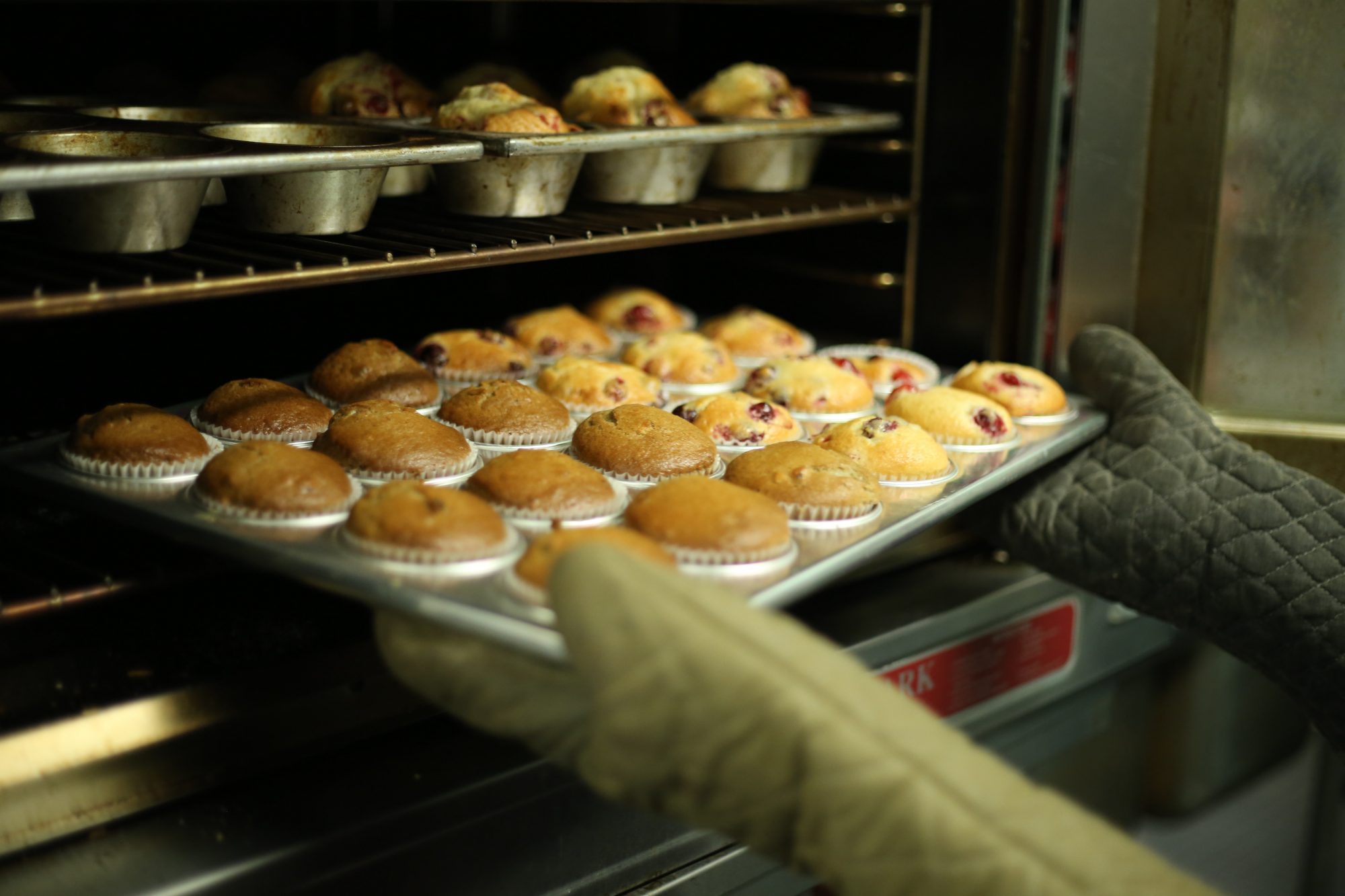
Photo by Taylor Grote on Unsplash
Last week I wrote about the toxicity of silicone and revealed that while research is still limited, studies show that silicone does leach potentially harmful chemicals into food, particularly at temperatures above 300°. Following the precautionary principle, I recommend avoiding cooking and baking with silicone.
What Do I Buy to Replace my Silicone Bakeware?
I have to admit, I will miss my silicone muffin pan. Silicone has become so popular because it is non-stick and is easy to clean. The safer options aren’t non-stick but that’s a tradeoff I’m willing to make. Here are some options:
Stainless Steel
Unless you are sensitive to nickel, stainless steel is a safe alternative. Just make sure the stainless steel is not coated or treated. You can find stainless steel cookie sheets, muffin pans, and baking pans.
18/0 stainless steel does not contain nickel and may be an acceptable option for those sensitive to nickel. If you have a nickel allergy, check with your doctor before using. Here is a cookie sheet made from 18/0 stainless steel with no coating.
Glass
Tempered glass, such as Pyrex brand, is a safe choice. You can find glass loaf pans, baking dishes, and pie plates.
Cast Iron
Cast iron is generally a safe choice. Cast iron will release iron which has many important functions in the human body. You can, however, get too much iron. If you use cast iron, you may want to rotate it with other types of cookware to avoid getting too much iron. Here is a Lodge cast iron muffin pan.
Are Oven-Safe Paper Baking Products Safe to Use?
Paper is not inherently non-stick so most paper bakeware is coated. Parchment paper is usually coated with silicone or Quinlon, which is a chemical containing the heavy metal chromium. I have not found any studies that assess the migration of Quinlon into food so out of caution I would avoid it.
Oven-safe paper bakeware is usually lined with silicone or plastic. While I wasn’t able to find any studies that looked specifically at leaching from paper bakeware, I see no reason to assume it would be any safer than silicone bakeware. Out of caution, I would avoid it too. Sorry!
Should I use my Silicone Bakeware?
This is a personal consideration. The research on silicone bakeware is limited but there is evidence that leaching into food does occur. The only piece of silicone bakeware that I have is a muffin pan and I will be replacing that with a Lodge cast iron pan.
Another consideration is how often you use your silicone bakeware. If you are regularly using it I would recommend replacing it with a safer option. If you use one piece very infrequently the overall exposure is much less and you might consider continuing to use it. Find the balance that works for you.
The Toxicity of Silicone
Silicones are made from silicon, a naturally-occurring element that is abundant in sand. However, in order to make silicon available for industrial processes, it’s heated to very high temperatures and reacted with fossil-fuel derived hydrocarbons.1 This may explain why some people who are sensitive to petrochemicals may react to silicones.
In order to make silicones, silicon is turned into siloxane, through an industrial process. There are a number of different siloxanes. Siloxanes are then bound together into silicones.
Is Silicone Safe?
Silicones are generally considered safe. Health Canada states, “There are no known health hazards associated with use of silicone cookware. Silicone rubber does not react with food or beverages, or produce any hazardous fumes.”2
However, some studies are finding that silicones are not completely insert and can release certain toxic substances at low level. Studies are still limited and most focus on a type of siloxane group, cyclic volatile methyl siloxanes (cVMS), which are by-products of silicone manufacturing. The health effects of cVMS are debated but in 2018 the European Chemicals Agency added 3 cVMS (D4, D5, and D6) to their Candidate List of substances that may have serious effects on human health and the environment.
There are few studies that focus on the effects of chemical additives, raw material impurities or fillers that may be present in various silicone products.
Does Silicone Leach into Food and Drink?
Some studies are finding that silicone bakeware can leach into food, particularly at high temperature (above 300°) and into high fat food. For example, migration into meatloaf was higher than into cake.3,4 Greater migration was found in new, unwashed molds.
One study found that silicone baby bottle nipples do not leach VMS into milk or infant formula after 6 hours.5. However, a particularly alarming study from 2012 of silicone baby bottles found the presence of phthalates and aldehydes as well as substances related to printing ink.6 A 2016 study similarly found phthalate migrations from silicone baby bottles.7 The studies did not assess the migration levels and associated health risks. Further research is needed.
Do Silicones Offgas?
Siloxanes can become gaseous when heated. In one study, 4 of 14 silicone baking molds exceeded Germany’s indoor guide level for cVMS but the health hazard guide level was not exceeded.8
Additionally, a possible oxidation product is formaldehyde.9 Studies of industrial-use silicone have found formaldehyde release at very high temperatures but it is not clear if formaldehyde also releases from silicone consumer products when heated.
Do All Silicones Have the Same Level of Toxicity?
Silicones, like plastics, can include a mix of chemical additives, fillers, and raw material impurities. In general, however, silicones have fewer chemical additives than plastics.
Food-grade silicones that are regulated by the FDA should not contain fillers. Silicone should not change color when it is twisted. If you twist or pinch the silicone and white shows through, the product contains a filler. Also, silicone should not crack or lose elasticity. These conditions indicate the inclusion of fillers in the silicone.
Not all silicone is the same and it is not possible without testing to determine exactly what is in any silicone product. There are hundreds of silicones with hundreds of different formulas. Some, like colorful cookware, may contain various fillers and contaminants that are completely unknown to consumers.
The Bottom Line
There is enough scientific evidence to suggest that silicone is not the totally safe and natural material that some marketers claim it to be. But it is generally safe under many conditions and a safer alternative to most plastics.
Here are some guidelines to safely use silicone products.
- Do not heat silicone products above 300°.
- Always wash silicone products before use with food or beverages.
- If using silicone baby bottles or nipples, make sure they are phthalate-free.*
- Choose 100% pure food-grade or medical-grade silicone.
- Silicone that is not heated and does not come in contact with food, such as lids, gaskets, bibs, and placemats likely pose no health risk.
*I will look further into the safest choices for baby bottles and nipples.
Sources:
- https://lifewithoutplastic.com/silicone/
- https://www.canada.ca/en/health-canada/services/household-products/safe-use-cookware.html
- Ruediger Helling, Anja Mieth, Stefan Altmann, Thomas Joachim Simat. Determination of the overall migration from silicone baking moulds into simulants and food using 1H-NMR techniques. Food Additives and Contaminants, 2009, 26 (03), pp.395-407. 10.1080/02652030802520852 . hal-00577342
- Helling R, Kutschbach K, Joachim Simat T. Migration behaviour of silicone moulds in contact with different foodstuffs.Food Addit Contam Part A Chem Anal Control Expo Risk Assess. 2010;27(3):396-405. doi:10.1080/19440040903341869
- Zhang K, Wong JW, Begley TH, Hayward DG, Limm W. Determination of siloxanes in silicone products and potential migration to milk, formula and liquid simulants. Food Addit Contam Part A Chem Anal Control Expo Risk Assess. 2012;29(8):1311-1321. doi:10.1080/19440049.2012.684891
- Simoneau, Catherine & Van den Eede, Liza & Valzacchi, Sandro. (2012). Identification and quantification of migration of chemicals from plastics baby bottles used as substitutes for polycarbonate. Food additives & contaminants. Part A, Chemistry, analysis, control, exposure & risk assessment. 29. 469-80. 10.1080/19440049.2011.644588.
- Ksenia Groh, Health Risks of BPA-Free Baby Bottles. Food Packaging Forum, Sept. 9, 2016.
- Hermann Fromme, Matthias Witte, Ludwig Fembacher, Ludwig Gruber, Tanja Hagl, Sonja Smolic, Dominik Fiedler, Marina Sysoltseva, Wolfgang Schober. Siloxane in baking moulds, emission to indoor air and migration to food during baking with an electric oven. Environment International, 2019, 126, pp.145-151. 1016/j.envint.2019.01.081
- Birgit Geueke, Dossier – Silicones. Food Packaging Forum. May, 2015, DOI: 10.5281/zenodo.33522
The Toxicity of Polyethylene
Polyethylene is the most widely produced commodity plastic and it is primarily used for packaging. Some common forms of polyethylene are:
Low-density polyethylene
LDPE is a flexible material that is used in food storage bags, trash and grocery bags, toys, and housewares. The plastic recycling code of LDPE is #4.1
High-density polyethylene
HDPE has high strength and moderate stiffness. It has a higher melting point than LDPE and can be sterilized. It is used in bottles for milk and household cleaners, food storage bags, grocery bags, appliance housing and toys. The plastic recycling code of HDPE is #2.2
Is Polyethylene Safe?
Polyethylene is considered one of the safest plastics.
Clean Production Action named polyethylene, along with polypropylene, one of the “most benign” plastics in their Plastics Scorecard, which evaluates the hazardous effects of various plastics.
According to its Safety Data Sheet, polyethylene has not been found to be carcinogenic by several safety organizations including the International Agency for Research on Cancer (IARC) and the Occupational Safety and Health Administration (OSHA).
Not all polyethylene, however, is created equal. Plastics are often made with fillers, plasticizers, and additives to enhance their functionality.3 A single plastic product can contain dozens of added chemicals. Polyethylene is less likely than many other plastics to contain fillers, plasticizers and additives but they may still be present. Unfortunately, without better disclosure from manufactures about the content of specific plastic materials we can only speak about toxicity and safety in general terms.
Does Polyethylene Offgas?
Polyethylene does offgas but generally at a much lower rate than more toxic plastics such as PVC and polystyrene.4
Does Polyethylene Leach into Food and Drink?
While polyethylene is relatively stable, and it is generally considered a safer plastic for food and drink, it has also been shown to leach plastic additives. In one study, pure polyethylene resin did not leach any endocrine disrupting chemicals but common food containers made with polyethylene did leach.5 Leaching from plastic food containers is increased with heat, duration of contact, and acidity of the food or drink. So, consider how the item is being used and how you will be exposed to it. For example, a food storage bad made of polyethylene that is used to carry a snack of pretzels is less likely to leach than the same bag used to store hot tomato soup.
Avoiding any plastic is ideal because it not only poses risk to human health but it is harmful to the environment. But, if you must use products made with polyethylene, the risk of exposure is probably low.
Sources
1The Editors of Encyclopaedia Britannica. “Polyethylene.” Encyclopædia Britannica, Encyclopædia Britannica, Inc., 15 Nov. 2019, www.britannica.com/science/polyethylene.
2 The Editors of Encyclopaedia Britannica. “Polyethylene.” Encyclopædia Britannica, Encyclopædia Britannica, Inc., 15 Nov. 2019, www.britannica.com/science/polyethylen
3John N. Hahladakis, Costas A. Velis, Roland Weber, Eleni Iacovidou, Phil Purnell. An overview of chemical additives present in plastics: Migration, release, fate and environmental impact during their use, disposal and recycling. Journal of Hazardous Materials. 2018; volume 344; pages 179-199. License.
4Even M, Girard M, Rich A, Hutzler C and Luch A (2019) Emissions of VOCs From Polymer-Based Consumer Products: From Emission Data of Real Samples to the Assessment of Inhalation Exposure. Front. Public Health 7:202. doi: 10.3389/fpubh.2019.00202
5John N. Hahladakis, Costas A. Velis, Roland Weber, Eleni Iacovidou, Phil Purnell. An overview of chemical additives present in plastics: Migration, release, fate and environmental impact during their use, disposal and recycling. Journal of Hazardous Materials. 2018; volume 344; pages 179-199. License.
The Toxicity of Polypropylene
Polypropylene is the second-most widely produced commodity plastic (after polyethylene) and it is often used in packaging and labeling.
Polypropylene is very similar to polyethylene but has greater resistance to heat, which is why it is often used for food packaging and food storage bags and containers.
Is Polypropylene Safe?
Polypropylene is considered one of the safest plastics.
Clean Production Action named polypropylene, along with polyethylene, one of the “most benign” plastics in their Plastics Scorecard, which evaluates the hazardous effects of various plastics.
According to its Safety Data Sheet, polypropylene has not been found to be carcinogenic by several safety organizations including the International Agency for Research on Cancer (IARC) and the Occupational Safety and Health Administration (OSHA).
Not all polypropylene, however, is created equal. Plastics are often made with fillers, plasticizers, and additives to enhance their functionality.1. A single plastic product can contain dozens of added chemicals. Polypropylene is less likely than many other plastics to contain fillers, plasticizers and additives but they may still be present. Unfortunately, without better disclosure from manufactures about the content of specific plastic materials we can only speak about toxicity and safety in general terms.
Does Polypropylene Offgas?
Polypropylene, sometimes referred to as Olefin, does offgas but generally at a much lower rate than more toxic plastics such as PVC and polystyrene.2
It is often used to make medical equipment and to store museum collections because of its relatively low level of emissions.
Does Polypropylene Leach into Food and Drink?
While polypropylene is relatively stable, and it is generally considered a safer plastic for food and drink, it has also been shown to leach plastic additives. In one study, pure polypropylene resin did not leach any endocrine disrupting chemicals but common food containers made with polypropylene did.3 Leaching from plastic food containers is increased with heat, duration of contact, and acidity of the food or drink. So, consider how the item is being used and how you will be exposed to it. For example, a water bottle made of polypropylene that has only brief contact with the water is less likely to leach than a container used to store hot tomato soup.
Avoiding any plastic is ideal because it not only poses risk to human health but it is harmful to the environment. But, if you must use products made with polypropylene, the risk of exposure is probably low.
Sources
1John N. Hahladakis, Costas A. Velis, Roland Weber, Eleni Iacovidou, Phil Purnell. An overview of chemical additives present in plastics: Migration, release, fate and environmental impact during their use, disposal and recycling. Journal of Hazardous Materials. 2018; volume 344; pages 179-199. License.
2Even M, Girard M, Rich A, Hutzler C and Luch A (2019) Emissions of VOCs From Polymer-Based Consumer Products: From Emission Data of Real Samples to the Assessment of Inhalation Exposure. Front. Public Health 7:202. doi: 10.3389/fpubh.2019.00202
3John N. Hahladakis, Costas A. Velis, Roland Weber, Eleni Iacovidou, Phil Purnell. An overview of chemical additives present in plastics: Migration, release, fate and environmental impact during their use, disposal and recycling. Journal of Hazardous Materials. 2018; volume 344; pages 179-199. License.; McDonald GR, Hudson AL, Dunn SM, et al. Bioactive contaminants leach from disposable laboratory plasticware. Science. 2008;322(5903):917. doi:10.1126/science.1162395
Do Plants Really Remove VOCs from Indoor Air?
I regularly see healthy-living experts touting the use of houseplants to clean indoor air. Unfortunately, most research does not support this claim. I have a lot of plants in my home because I appreciate their aesthetic value. I hope that they contribute some small benefit to my home’s air quality but I don’t rely on them to do the job. Let’s look at the facts to see if there are benefits and perhaps even risks to filling your home with potted plants.
The idea that plants are effective at removing VOCs from indoor air stems from a 1989 NASA study that tested different types of houseplants in a sealed chamber. The testing methodology was designed to simulate the small, air-tight environment of a space capsule. The study found that under these conditions, some plant types were particularly effective at removing VOCs including formaldehyde and benzene.
Subsequent studies have shown that the results do not translate to a typical house. The size of a house and the amount of ventilation play a big role in the how much impact a plant will have on air quality. A 1991 EPA review of the NASA study determined that a typical house would require 680 plants to yield the same results. A 2019 review of 30 years of research determined that it would take 10 to 1000 plants per square meter of floor space to provide more effective cleaning power than opening a couple of windows.
If you do choose to have houseplants in your home make sure you are not adding VOC pollution.
- Use untreated metal, clay or ceramic pots.
One study found that 11 different volatile organic chemicals (VOCs) were emitted into the air from plastic pots.
- Buy organic plants, grown without pesticides.
Pesticides used in the plant production process can have volatile emissions.
- Make sure your plants are not a source of mold.
Regularly check the soil for signs of mold.
If you see a recommendation to use houseplants to clean your air make sure you understand the source behind the recommendation and determine if this is new data that factors in a typical home environment or if it is simply advice based on outdated research.
How to Minimize Odor and Off-Gassing from Paint
A reader submitted a question to Toxic Free Q&A about how to minimize lingering odor from zero-VOC paint. Andy Pace, from The Green Design Center, wrote in with a comment that was so helpful I want to share it with everyone.
According to Andy, “Lingering odor is almost always caused by moisture trapped in the coatings. As the moisture comes out, it carries with it the chemical footprint of where it was, which usually means, a distinct aroma of resins and solvents. It’s true that the BM Regal is zero-VOC, but the biggest reason why the Behr paint is problematic may have to do with the color. Most people apply dark colors way too heavy…trying to get a nice thick coat so it appears to cover well. This is counterproductive. Water based paint needs to go on very thin in order to cure properly. Thick coats will cause lingering odors and a softer film. So, dark colors will be more prone to long lasting odors than will off white colors, no matter the product line. At this point, adding another layer or two of product will only prolong the situation. Get a large fan and direct it towards the offending surface. This will help wick away the moisture. Use a dehumidifier in that room. As a last resort, wipe the surface gently with isopropyl alcohol (or a cheap vodka) and just let the alcohol evaporate naturally. As it evaporates, it will pull moisture out of the paint.”
This advice is helpful whether you have a room you have already painted or if you plan to paint in the future.
Tips for Minimizing Off-Gassing from Paint
- Start with zero-VOC paints that are also free of solvents, biocides or fungicides. Recommended brands are AFM Safecoat and ECOS.
- Apply water-based paint in very thin coats.
- Allow 2-4 hours for paint to dry between coats.
- Water-based paints cure from the outside-in, so the surface will feel dry first. Make sure you allow enough time for each coat to dry before applying another coat.
- Use a large fan to help wick away moisture.
- Run a dehumidifier in the room being painted.
- If necessary, wipe the surface gently with isopropyl alcohol and let it evaporate.
I highly recommend The Green Design Center if you are looking for non-toxic building supplies. Andy and his team also specialize in helping people with MCS find building supplies that are well-tolerated. Check out his podcast too!
Wet Room Floor
Question from Marilyn
I’m planning to redo a bathroom with an open shower. The contractor tells me it involves some kind of hot tar layer to make the floor water proof before laying tile. Do you know of a non-toxic option that meets California code?
Lisa’s Answer
I am not familiar with California code so you will need to work with your contractor on that. I have used Hardibacker Board or another water-resistant cementitious board as an underlayment for the tile. I recommend the book “Prescriptions for a Healthy Home, 3rd edition” for any building or remodel project that you have.
Reading an SDS for Tile
Question from Marilyn
I’ve been trying to verify content of tiles for a shower remodel. It took several days, but Daltile sent me an SDS for their 4″x4″ glossy white tile in the Restore line. I’ve been unable to get any SDS for the 4″ white Daltile tile sold at Home Depot. Neither company seems to offer it.
In the meantime, I’ve been impressed by Florida Tile’s longstanding eco efforts, their GreenGuard and GreenSquared certifications, and their philanthropy in both Appalachia and in Haiti. I’m wondering if your site has reviewed their products at all.
I emailed Florida Tile about their 4″ square arctic white matte tile. The SDS says: “Hazardous constituents: N/A.” Quoted from email I received from Chris Dobbs
Director of Quality and Technical Services at Florida Tile…
“There is no lead, barium, chromium, cobalt, or nickel in these products. There is Zinc Oxide and Magnesium Oxide, but not Zinc or Magnesium as anything other than a compound. If the tiles it would not be releasing the individual components but it would be releasing ceramic dust which can cause some issues if proper PPE and cutting methods are not utilized. Ceramic dust is still uniquely ceramic and not some portion of its individual components.”
And:
“Ceramic tile is considered a single component as a result of the vitrification process that occurs during the kiln at extremely high heat. Once the tiles have been fired, no individual components are made available from the finished product.”
Lisa’s Answer
I was not able to open the file you sent but in general tile is safe to use. There are concerns about cutting the tile as the dust can be harmful. Lead is a particular element of concern from cutting, however, most will have trace amounts due to contamination and not as an added ingredient. Once the tile is cut, lead will not emit into the air. Cutting tile outdoors is advised. Read more here for additional information.
Toxic Exposure Testing Kits
Question from Riley
I’m on the search for reliable tests to sample exposure in my home.
I have been spending a lot of time online trying to find the best most trusted companies, but that is hard these days.
Wondering if you have a sought out trusted company and/or specific tests that are affordable, and accessible? I’m primarily looking for- heavy metals, phthalates, molds, radon, EMF’S, and asbestos.
Thank you for your time and your impactful efforts to our people’s health.
Lisa’s Answer
I recommend working with a certified expert from the Building Biology Institute. You can look for one in your area using the link.
Obasan Mattresses
Question from Lauren
Can you tell me anything about Obasan mattresses. I read on another website that they are a great choice but haven’t been able to find much info about them otherwise however they look promising. I have been doing so much research on mattresses and am really having trouble making a decision. What is your opinion on metal springs and EMFs? Thank you so much for any advice you can offer!
Lisa’s Answer
I have no personal experience with Obasan but based on what they have on their website its sounds like a good option. They have GOTS certified organic cotton and wool and GOLS certified natural rubber. They don’t say anything about factory certification, however. I would need to learn more about their process.
Naturpedic is my favorite mattress brand because they use only the most natural materials at every step of manufacture. Their factory is certified along with the materials they use. You can read more about it here. Naturpedic also has mattresses with no coils.
The topic of EMF in bed coils is a complicated one with many conflicting viewpoints. I am not an EMF expert but based on what I have read I do not think mattress coils are a concern.
Coil Springs in Mattresses
Question from Mary
I have Naturepedic beds in my house and we had a emf specialist come and a few of the beds have a magnetic charge that he said would be coming from the steel coils in the mattress. What are your thoughts on this? Are there any latex no coil mattress’ you recommend. Thank you!
Lisa’s Answer
Naturpedic has mattresses with no coils. Naturpedic is my favorite mattress brand because they use only the most natural materials at every step of manufacture. You can read more about it here.
The topic of EMF in bed coils is a complicated one with many conflicting viewpoints. I am not an EMF expert but based on what I have read I do not think mattress coils are a concern.
Acrylic, Wood Veneer, or Wood Composite
Question from Lanny
I am desperately searching for a bed tray to use for my laptop. I need it for those days when I am in bed from MCS & Fibro. I have found three options and would like your opinion on the least toxic. (I realize unfinished wood would be ideal but there is no such thing, plus I do have problems with pine.)
Lisa’s Answer
Unfortunately, there is not a clear answer based on the information provided. All three will have chemical emissions. The acrylic is made from petrochemicals. The wood veneer will have adhesives and probably a lacquer finish. The wood/wood composite will also have adhesives, stain and possibly a lacquer finish. You would need to understand the content of the adhesive, stains and lacquers to know how toxic they are.
I would not recommend any of these, particularly for use in your bedroom.
Ashley Furniture
Question from Kristina
Please help! I just moved a chaise up to my bedroom, and after 90 degree heat in No. CA this week, my furniture seems to be reeking of that same smell I smelled when it was new!!
I’m so worried now that I’ve been “poisoning” my family with this furniture!! Just read many horrible reviews of Ashley Furniture!!! 🙁
I’m getting rid of it ASAP.
Can you refer a safe furniture manufacturer?
We bought this large sectional from Ashley in June of 2018, and have been moving it around lately. I wonder if I’ve rekindled these horrible chemicals?
Thanks for any help you can offer!!
Lisa’s Answer
I just wrote a post on the chemicals in upholstered furniture. You can read it here. I can’t tell you specifically what is in your piece but upholstered furniture can off-gas indefinitely. The heat can accelerate the off-gassing but just because you were not smelling it before does not mean it was not off-gassing. Debra’s List has several non-toxic furniture makers.
Car Seat Cover
Question from Kristina
Any recommendations on non toxic seat covers for the car? Im seeing a lot of “p65” products which I didn’t even notice before
Lisa’s Answer
Here is a previous response to this question from Debra.
Flame Retardant-Free Furniture Is Better, but Is It Safe Enough?
Readers occasionally send me suggestions for furniture that they consider safe because they are free of flame retardants. Flame retardants are among the most harmful of chemicals found in traditional furniture but unfortunately, they are not the only chemicals of concern.
Fire retardants became common additives to polyurethane foam used in furniture in response to California flammability standard TB117 that was adopted in 1975. U.S. manufactures adopted the standard for products sold all over the country so that they would not have to have a separate inventory for California. Flame retardants have been linked to adverse health effects including cancer, lower IQ, learning disorders, hormone disruption and reduced fertility.
California revised their standard in 2014 to allow manufacturers to meet flammability requirements without chemical flame retardants. There are now hundreds of couches and other upholstered furniture options that don’t use harmful chemical flame retardants in their polyurethane foam. Keep in mind that these chemicals are not banned, they are just no longer required.
This is an important step in the right direction but it is not enough. There are many other chemicals of concern in traditional upholstered furniture.
Polyurethane Foam
Polyurethane foam is made by reacting polyols, a type of complex alcohol, and diisocyanates, which are a petroleum byproduct. The most common source of diiscyanate used in foam is TDI, or toluene diiscyanate. In its raw form TDI is a carcinogen. Once reacted it is inert but it can still offgas.1
There are many potential additives to polyurethane foam. Manufacturers often consider their additive ingredients proprietary and do not disclose them. Formaldehyde is not usually added to foam but it can be a byproduct of chemical reactions or from adhesives used on the foam.
Upholstered furniture such as sofas and reclining chairs can be a significant source of VOCs. One study tested a range of large furniture and appliances and found that the sofa emitted the highest level of VOCs.
Other Furniture Components
Treated Fabric
According to O Ecotextiles, all stain repellent finishes are based on fluorotelmer chemistry, which means it pertains to chemicals which become perfluorocarbons (PFCs) when released into the environment. There are newer stain repellent finishes that are claiming to be safer and less bioaccumulative. Though safer than older formulations, there is little human data to support just how safe they are.
Leather
Leather can be processed using hundreds of harmful substances including chromium, formaldehyde, phthalates and heavy metals.
Adhesives
Adhesives can contain solvents such a benzene, toluene, styrene or acetone.
Composite Wood
Particleboard, plywood, MDF are often sources of formaldehyde.
Stains
Stains and finishes can be sources of VOCs including acetone, methylene chlorine, benzene and toluene.
If you are looking for upholstered furniture that is safe and non-toxic, visit Debra’s List.
Removing Eye Glass Sanitizer
Question from Kendall
I have received a pair of eyeglass frames from Warby Parker (try at home option). I have multiple chemical sensitivities and can detect some kind of sanitizer/antibacterial residue on them–I imagine as a covid precaution. Do you have any recommendations for removing the sanitizer residue–I can smell and taste it.
Lisa’s Answer
Have you tried washing them with soap and water? Readers, do you have any other suggestions?
UVC Sanitizers
Question from Jesse
Curious if you could post thoughts on non toxic Coronavirus related home cleaning. Specifically, I’ve read conflicting reports about in home UVC air sanitizers and wands (particularly if they are safe to use around people, pets, kids).
Lisa’s Answer
The concerns around the technology is that they can cause harm to skin and eyes (much like sun damage) as well as emit dangerous ozone. Until there is research that shows definitively that these devices are safe, I would not use them. Additionally, they are not part of the recommended protocol by the EPA because the EPA has not evaluated them for effectiveness against the novel coronavirus.
Used Leather Sofa
Question from Michayla
We’re looking to buy a used leather sofa. This is one that was made by Executive Leather Inc “Manufacturer of quality leather furniture” (Hickory, NC). It was owned by the seller’s grandparents she believes maybe 10 years who then gave it to them who have currently had it for 7 years. The tag was hard to read but looks like the cushion is 90% urethane foam 10% polyester. Unfortunately, I can’t find anything online to get more information. Would you think this would be safe enough to own after ~17 years of offgassing? **After asking her husband he said it might be closer to 15-20 years old that the grandparents owned them. So between 17-27 years offgassed.
Lisa’s Answer
Unfortunately, upholstered furniture with polyurethane foam is not something that gets better as it gets older. Flame retardants were used in foam starting in the 1970’s so that couch most likely contains them. As the foam degrades over time the flame retardants end up in household dust. Additionally, formaldehyde, also a likely component, can off-gas indefinitely. Finally, leather is processed with hundreds of chemicals. I can’t say for sure if old leather is better or worse than new leather because I would have to understand each chemical used in the process.
Testing for Flame Retardants
Question from C.S.
Though I’m diligent, many items in our home still may have been treated with chemical flame retardants. How can I find out what is and what isn’t? Is there a way or place to have samples tested? My children want their prized stuffed animals back in their beds, and I really like my burlap bed skirt.
Lisa’s Answer
Unfortunately, I am not aware of home test that does this.
Duke University has a program that allows you to send in polyurethane foam from household mattresses and furniture to see if it has flame retardants.
Precautions
Question from Jayy
Hello, I am a D.J. that smoking is allowed in the night club I work at.. I recently had an drastic experience w/ Covid 19 with intubation of 24 days the whole works… After I was blessed to be released Dr. told me My lungs looks as if I was “SMOKER” Never been a smoker but have been expose to second hand smoke for yrs…
I needed to know if there a certain mask that I can wear when I report back to work….
Lisa’s Answer
Cigarette smoke is comprised of both particles and gas so you would need a mask that filters out both. EnviroKlenz makes a mask that does both but it is currently out of stock.
Readers any other suggestions?
Minimally Toxic Camping Gear
Question from Anna
I have been becoming sicker and sicker and am not sure if I will be able to tolerate living in society much longer. I have already been sleeping in a tent behind a house rather than in the house itself.
I think perhaps what I might need is a very long camping trip to get away from the toxic chemicals and the cell phones and the WiFi and all of it.
I was wondering if you might suggest a decent portable water filtration device (I was thinking Lifestraw, but I don’t know if there’s something better but still affordable), a low-toxicity sleeping bag that will still be fairly winter-proof, reasonably affordable wool or other non-cotton clothing that is at least free of naphthalene and paradichlorobenzene, a low-toxicity bivouac sac, minimally toxic boots, some sort of first aid kit appropriate for a chemically injured person, and some sort of non-plastic water bottle durable enough for hiking. I was reading that for winter hiking, you basically have to use an insulated stainless steel water bottle anyway, but maybe some of these are better than others. I was also wondering if you might have any suggestions on re-usable pads and/or period underwear.
Lisa’s Answer
I’m sorry you are having such a difficult time. For non-toxic clothing and shoes/boots you can look at Debra’s List or use the search button on the site to look up clothing. There are several articles and threads where readers have reported on clothing that is both non-toxic and tolerable. As always though, because everyone is different, what is tolerable to one person may not be to another.
Here is information on a lightweight wool sleeping bag that might work for you.
Here is some more information on Lifestraw. I have not done a full investigation of these type of filters so I can’t tell you about other options.
I use Kleen Kanteen for hiking because glass is not practical for this purpose. If you are sensitive to nickel you should not use stainless steel. Here is some more on using stainless steel for drinking.
You might want to consider reaching out to Debra for a paid consultation because you have many specific needs. She is available for paid consults until June 18, 2020.
Readers do you have any other suggestions?
Paint Smells a Month Later
Question from Dac
Lisa’s Answer
See below comments from Andy Pace of The Green Design Center.
Toxic Free Products in the UK
Question from Zara
I was really hoping for some help in that direction.
Lisa’s Answer
I am glad you are finding the site helpful! Unfortunately, I am not familiar with dishware from the UK. Readers, any suggestions?
Mattress
Question from Jen C.
Lisa’s Answer
Yes, take a look at Happsy.
Gas Stoves and Indoor Air Quality
I have written previously about how cooking is a major source of indoor air pollution but a new report highlights particular risk from gas stoves and ovens. Homes with gas stoves can have nitrogen dioxide concentrations that are 50 to 400 percent higher than homes with electric stoves.1
Gas appliances can emit a range of pollutants including:
- Carbon monoxide
- Nitrogen oxides, including nitrogen dioxide
- Fine particulate matter
- Formaldehyde and other VOCs
Health effects from these pollutants include respiratory illness, cardiovascular disease, and premature death. Children who are exposed to nitrogen dioxide have an increased risk for asthma. There is also evidence that suggests a small increase in fine particulate matter can lead to a large increase in COVID-19 death rates.2
The impact on air quality from gas cooking is greater the smaller your living space because the pollutants are more concentrated.
What to do if you own a gas stove or oven?
- Consider replacing it with an electric stove/oven.
- Properly ventilate.
Make sure your range hood meets code requirements. It’s estimated that only half of new U.S. homes meet code requirements for range hoods. Studies also show that many people do not use their range hoods when cooking. If your range hood doesn’t extend over your front burners, make sure to cook on your back burners.
If you don’t have a range hood that vents to the outside, open your windows while cooking.
- Purchase an air purifier that removes small particles and gases.
Be aware that many popular air purifiers are not effective at removing small particle and gas pollutants from cooking. (see Air Purifier Buying Guide)
Washers and Dryers
Question from Dalin
I looked at some at Home Depot and I didn’t
see the prop 65 label on them.When I was shopping I only saw the prop 65
label on the GE stack combo washer and dryer
Which I bought now I’m really worried.
Lisa’s Answer
Unfortunately, I am not aware of list that tells which washers and dryers have the Proposition 65 warning. You can call GE and ask them what chemical is used in your model that requires the warning. Then you can ask where it is used in the machine and what the consumer exposure is. Often times, the warning is for something that is used in the cord or another component that the consumer has little or no exposure to during normal use.
Ozone Deodorant
Question from Whitney
Lisa’s Answer
Indeed it does say they use ozone! I have removed it from Debra’s List. I will need to do further research to better understand the risk. In the meantime, I would chose another deodorant.
Toaster Ovens
Question from Joseph
Lisa’s Answer
I am working on a Buying Guide for Toasters that will be posted next week. Check back then!
Aluminum and Toasters
Question from Lisa
Lisa’s Answer
I am working on a Buying Guide for Toasters that will be posted next week. Check back then!
New Air Purifier Reviews: Air Doctor, Airpura and More
I hope you have had a chance to read my new Air Purifier Buying Guide. I received a lot of questions about other air purifiers that were not discussed. The guide is designed so that you can evaluate any air purifier you are considering by comparing the outlined criteria. I did get multiple requests to look specifically at the following brands:
* Air Doctor
* Airpura
* Aireox
* Austin HealthMate Plus Junior
Here is a review of these additional brands. I hope you find it helpful.
Sur La Table Green Pan
Question from Ron
“…They say their [new] non-stick finish is Gem-X2, “a two layer sapphire/quartz-like natural mineral finish permanently bonded to our tough aluminum pans. It will not flake, chip or rub off and is metal utensil safe. ..
However, their new website Lloyd Pans says they have developed their own “water-based, nontoxic” finish, with no further information and a different name than before.”
I will call them for further info. What questions should I ask?
2) Do you think that Sur La Table’s green pan is a safe one to use?
Thank you for your help.
Lisa’s Answer
Sur La Table’s GreenPan is a hard anodized aluminum core with ceramic non-stick coating. Studies have shown that ceramic coatings can release nanoparticles into food. According to the study, chronic exposure can cause immune system disruption and pre-cancerous lesions to the gut. Most manufacturers do not specify exactly what is in their coatings because it is proprietary. Without further testing to prove safety, I don’t recommend any cookware with non-stick coatings.
Man Pans are anodized aluminum with a non-stick coating. They also do not reveal what is in their coating because it is proprietary. While they claim that the coatings do not chip or flake, I would also be concerned about the possibility because aluminum is very prone to leaching.
I wouldn’t use either pan.
Pipes Used in Renovation
Question from Melissa
Hi Lisa, thank you for this wonderful resource! We are in the process of a home renovation project, which includes moving our kitchen and several lightly used bathrooms (powder room
and guest room/office bathroom).
Our contractor was planning to use PEX piping for all incoming water. I know there are concerns about leaching from PEX pipes. Would you share that concern?
One alternative is copper pipes. The contractor is pricing this for us for our kitchen only, as it is likely too expensive to use everywhere (the kitchen is our highest priority for uncontaminated water). Do you have health concerns with copper pipes and/or joint materials that would be used with it?
For the other locations, I know that polypropylene pipes are sometimes considered safer than PEX, but that there could be concerns about joint material used with polypropylene pipes. What do you think about polypropylene vs PEX?
Lisa’s Answer
Here is a very good guide by EWG on pipes. Perhaps use copper with lead-free joints where affordable and polypropylene pipes on the remainder.
Nylon Shower Curtain
Question from TJG
After an exhaustive search for a 100% nylon shower curtain (untreated) I settled for one that some websites touted as having the lease toxic material (Berning). But when I received product which was labeled as 100% nylon, I cross referenced it on manufacturers sight (Carnation Home fashions) and it was classified as polyester. There is no chemical odor to it but is nylon a safer material for those with chemical sensitivities and allergies?
Lisa’s Answer
If the product is labelled 100% nylon, it should be nylon. I looked at the manufacturer’s website and see where it says it is 100% nylon but then goes on to say it is 100% polyester. You could call the company to clarify. Perhaps it is a typo. I can’t tell you what any sensitive person will react to because everyone is different.
Pewter
Question from Joyce
I have a small teapot, sugar and creamer labeled L.H. Vaughn, Taunton, Mass. In searching I discovered he started in business in 1915. They have not darkened in the 6 years I have had them. Did he use lead in the making of his pewter items? Because they have not darkened in time can I assume there is no lead in them?
Lisa’s Answer
I can’t tell you about that particular maker, but old pewter (made before the 1970’s) was typically made with lead. Did you purchase them new 6 years ago or are they older pieces? If they were made in the early 1900’s I would assume there is lead in it. It is generally true that the darker the pewter, the more lead. However, since there is no safe level of lead, I would not recommend using it.
Best Air Cleaners
Question from Dawn
What are the best air cleaners and protection from EMF’s?
Lisa’s Answer
Here is my Air Purifier Buying Guide. I am not an expert in EMF’s.
Least-Toxic Recliner and Loveseat
Question from Dawn
I don’t know what stores in the Pittsburgh area carry non or low toxic reclining furniture and I need to buy some for the new home we plan to be in fairly soon.
Lisa’s Answer
I am not familiar with local stores in your area. You can check out Debra’s List for non-toxic furniture makers. There are many options for loveseats, though non-toxic options tend to be expensive. I am not aware of any non-toxic recliners on the market but there are companies that might be able to custom make one for you. It will not be inexpensive. Pine Street Natural Interiors is one to try.
Almost all traditionally made upholstered furniture is made with polyurethane foam cushioning. The polyurethane foam is likely to contain formaldehyde and possibly flame retardants. Formaldehyde can continue to off-gas for the life of the product and flame retardants in the foam can break down and end up in household dust. The other things to avoid in traditional furniture are treated fabrics, leather tanned with harmful chemicals, high-VOC adhesives and stains.
Wunderkids Playmat
Question from Elle
I am looking at the play mat with the link below (the website includes some safety reports):
https://wunderkids.ca/products/alzipmat
Inner: High Density Polyethylene FoamCover: Polyurethane Leather
The company states that it is the only playmat cover that is made from *FDA compliant (food contact grade) material. Plus the premium polyurethane leather is ultra soft, non-toxic, and hypoallergenic.
*FDA 21 CFR §175.300, Resinous and Polymeric Coatings. No chloroform residue was found after 24 hours exposure to 120℉ solvent.
Can you kindly comment if it is safe for babies/infants? Thank you in advance for your advice.
Lisa’s Answer
A simple answer to your question is yes, it is safe. It meets all of the safety requirements and is free of some of the more concerning ingredients you might find in a this type of product including PVC, EVA, TPA, BPA, Lead, Phthalate, Fire Retardants, Formamide, and Formaldehyde. It is considered food safe in the event that a child licks it. The problem with polyurethane foam or polyethylene foam is that they are often made with chemical additives. The safety standards can make you feel comfortable that there are not high levels of chemicals but it doesn’t mean there are no chemicals and therefore no VOCs. It is probably okay, but of course, is not as safe as a mat made of organic cotton with a natural fill. I understand that this is easier to clean and provides more protection from falls, so the tradeoff is yours to make.
Another option is Cream Haus.
It is OEKO-TEX Standard 100 certified which tells you that there is an additional standard that the mats need to meet. I can’t tell you specifically which chemicals are absent or lower than the other mat because manufactures do not disclose the chemicals used in their processing but it is one more layer of regulation.
Portable Air Purifier Buying Guide
There are hundreds of portable indoor air purifiers on the market. Finding the best one for your needs can be a daunting task. Most air purifiers, particularly inexpensive models, only filter particulate matter but do nothing to remove gases, VOCs and odor. If your goal is to remove as many of the most harmful contaminants as possible from your indoor air you need to look for air purifiers that remove both particulate and gaseous matter.
5 Things to Consider When Buying an Air Purifier
-
Type of Filtration
Most filters are designed to remove either particles or gases. A unit that does both will have two or more types of filters. For example, a unit with only HEPA filtration will do nothing to eliminate gaseous pollutants.
HEPA
HEPA stands for high-efficiency particulate air. True HEPA filters are manufactured and certified to a standard in which 99.97% of all particles that have a size greater than or equal to 0.3 microns are captured. But not all HEPA filters perform equally. Some air purifiers with True HEPA filters can have different levels of efficiency and performance. Keep reading to learn why efficiency is an important criteria when choosing an air purifier.
Sorbent Media
Sorbent media filters use material with very high surface area to capture gaseous pollutants.
Activated Carbon
This is the most common type of sorbent filter used in air purifiers. Carbon can be very efficient at capturing gaseous pollutants but it does not destroy them. According to the EPA, filters must be properly maintained to prevent the carbon from becoming saturated. Once saturated, captured gases can break through and re-release into the air. Carbon is typically not as effective at removing low-weight aldehydes such as formaldehyde.
Some filters use chemisorption to stabilize gases and to help to target a variety of chemicals activated carbon cannot effectively remove. Chemisorption occurs when a gas reacts with an agent that is impregnated into the sorbent media.
Earth Minerals
This is a proprietary type of sorbent media that is used in EnviroKlenz purifiers. It is comprised of zinc oxide, magnesium oxide, and titanium dioxide. The earth minerals adsorb, neutralize and breakdown the chemical compounds into basic, non-toxic elements. This media also uses chemisorption to stabilize chemical compounds.
UVGI
Ultraviolet Germicidal Irradiation uses UV lamps to kill or deactivate captured microorganisms such as bacteria, mold spores, and viruses.
PCO and PECO
Photocatalytic Oxidation (PCO) uses UV light and a filter coated with titanium oxide to convert harmful pollutants into harmless water and carbon dioxide. PCO can be effective at transforming many pollutants but may produce chemical by-products, such as formaldehyde, and some may produce ozone.
PECO, photo electrochemical oxidation, is the proprietary technology used by Molekule. PECO was developed based on similar principles as PCO, photocatalytic oxidation, but it uses a different type of UV light to begin the chemical reaction that breaks down the pollutants and claims to not produce ozone or chemical by-products.
Ozone Generators
Ozone generators produce ozone which react with chemical and biologic pollutants and break them down or destroy them. Ozone is a lung irritant and its production can produce harmful by-products. No federal agency has approved ozone generators for use in occupied spaces.
-
How Well Does it Remove Particulate Matter?
There are 3 factors that will help you compare different air purifiers ability to remove particulate pollution; efficiency, air delivery rate, and room size coverage.
Efficiency
This is the percentage of a concentration of particulate pollutants that are removed when they move through the unit. For example, HEPA filters must have an efficiency of 99.97% for particles 0.3 microns and larger. Some manufactures will give a total efficiency percentage as well as percentages for different sized particles. This is helpful because not all models are as good at removing smaller particles.
Particulate matter can be categorized based on its size.
Course particles (2.5 to 10 microns) include pollen and mold spores.
Fine particles, (0.1 microns to 2.5 microns) include household dust, bacteria, pet dander, and virus.
Ultra-fine (<0.1 microns) include some wildfire smoke, tobacco smoke, soot, and some virus.
If you are concerned about removing a particular contaminant, look for the efficiency for that size. Make sure the unit removes a high percentage of pollutants in that size range.
Clean Air Delivery Rate (CADR)
This measure tells you the volume of air that can be filtered by an air purifier in one minute. The higher the CADR, which is expressed in cubic feet per minute (cfm), the more air can be processed in a room in a given timeframe and the larger the room it can clean. The CADR is based on running the unit at the highest fan speed. Generally speaking, a delivery rate of 250 cfm is considered very good.
While CADR is one metric to look at, it has limitations. It is only a measure of particulate pollution and tells you nothing about a unit’s ability to remove chemical VOCs, gases or odors. Additionally, it favors units that perform well very quickly but not necessarily over a longer period of time.
Room Size
Most manufacturers provide an estimate of how large a room the unit can clean. These calculations are usually based on a room with an 8ft. ceiling. If you have a higher ceiling, the coverage will be less than stated. You may need multiple units if your room is larger the recommended room size.
-
How Well Does it Remove Gases?
There is no standard for comparing how well air purifiers remove gases. If comparing air purifiers brands or models that each use activated carbon, the ones with more carbon weight will generally be more effective. Those that also use chemisorption will be more effective at destroying formaldehyde and other VOCs. For brands and models that use other technology, you will need to reply on third-party testing to assess their performance.
-
Test Results and Reviews
When reading testing results on manufacturers websites make sure the data is independent third-party tested with specific information on who conducted the testing and under what parameters. The greater the transparency around the testing, typically, the greater confidence you can have in the results. Consumer reviews can also be helpful but be aware that most of the reviews that compare different air purifiers evaluate larger particle removal and not removal of fine particles or gases. Make sure you understand what is being evaluated.
Unfortunately, even independent third-party testing cannot always be trusted. A stunning report by Wirecutter revealed that the makers of Molekule were advised by the NAD, an investigative division of the Better Business Bureau, to remove claims of “independent” testing from their marketing because much of the testing was done at labs which had received sponsorship from the company or where the founder was a director.
There is currently very limited independent research available and more is needed to compare air purifiers that claim to remove chemicals and gases.
-
Price
Models that I am recommending here range in price from $699 to $1299. Most units that removes gases as well as particles are more expensive because they use multiple filter technologies.
Recommended Air Purifiers
I have only evaluated air purifiers that remove both particulate and gaseous pollutant because this website is dedicated to eliminating toxins. Most air purifiers do nothing to remove some of the most dangerous pollutants in your indoor air such as VOCs and gases from cooking combustion. If your primary interest is removing large molecule allergens like pollen there are many lower-cost options not covered here.
I recommend 4 popular models that rate well against all of the criteria outlined above. If you are looking at a brand or model not listed here, you can compare it against the criteria to better understand how it stacks up. Check back often as I will continue to update testing data as well as add new brands and models.
EnviroKlenz Mobile Air System
Technology: True HEPA filter
Earth Minerals material
UVGI (for UV Model)
Room Size: Maximum 1000 sq. ft.
Efficiency: 99.99% for particles >0.3 microns
Air Delivery: 250 cfm
Price: $699 without UV, $799 with UV.
Filter Replacement Cost: Earth mineral filter ($99) every 6 months, HEPA filter ($150) every 2 to 3 years.
Testing and Reviews:
EnviroKlenz provides extensive laboratory testing results on their website that compares their product with IQAir, BlueAir and Molekule. The testing shows the unit to be very effective at removing a range of VOCs. Additionally, they submitted a unit for review to Vacuum Wars, an independent review and comparison channel on YouTube. It is not a laboratory, but it does conduct an unbiased chamber test. They claim it could be the best on the market.
Bottom Line:
EnviroKlenz is a very powerful unit that effectively cleans both particulate and gaseous pollutants. It is a simple, no frill model made with a powder coated metal housing. Some readers on this site have reported quality control and customer service concerns though the EnviroKlenz website shows very positive reviews. The UV model provides extra protection against virus, mold and bacteria.
IQAir GC MultiGas
Technology: True HEPA filter
Activated Carbon (12lbs.)
Chemisorption
Room Size: Maximum 1240 sq. ft.
Efficiency: ≥ 99% for particles ≥ 0.3 microns
≥ 95% at ≥ 0.003 microns
Air Delivery: 780 cfm
Price: $1299
Filter Replacement Cost: Prefilter ($78) every year, Gas cartridges ($295) every 2.5 years, Post-filter sleeves ($95) every 2.5 years
Testing and Reviews:
IQAir does not provide testing data on their website but the testing on the EnviroKlenz website shows that this is extremely effective at removing formaldehyde. The Allergy Buyers Club rates it as the category winner for VOC and chemical removal because it is able to deliver excellent fine and ultra-fine particle removal as well as address specific chemicals and gases.
Bottom Line:
This is a top-of-the-line unit that does an excellent job of removing particles, even the most concerning fine and ultra-fine particles, as well as a range of chemicals, gases and odor.
IQAir HealthPro Plus
Technology: True HEPA filter
Activated Carbon (5lbs.)
Chemisorption
Room Size: Maximum 1125 sq. ft.
Efficiency: ≥ 99.97% for particles ≥ 0.3 microns
≥ 99.5% at ≥ 0.003 microns
Air Delivery: 780 cfm
Price: $899
Filter Replacement Cost: Prefilter ($69) every 1.5 years, V5-Cell filter ($99) every 2 years, HyperHEPA filter ($199) every 4 years
Testing and Reviews:
Allergy Buyers Club rates this as the category winner for HEPA air purifiers.
Bottom Line:
Compared to the IQAir GC MultiGas, this model is even more efficient at fine and ultra-fine particle removal but not as powerful against chemicals, gases and odor. If you are concerned about smoke, virus or other ultra-fine particles, this might be the model for you. Note: Only the HealthPro Plus model removes gas, while the HealthPro model does not.
Austin Air Healthmate Plus
Technology: True HEPA filter
Activated Carbon (15lbs.)
Chemisorption
Room size: Maximum 1500 sq. ft.
Efficiency: 99.97% for particles ≥0.3 microns
95% for particles ≥0.1 microns
Air Delivery: 400 cfm
Price: $715
Filter Replacement Cost: Replacement Filter ($360) every 5 years.
Testing and Reviews:
Austin Air purifiers are sold on many sites and have positive consumer reviews. There is a lack of independent testing showing how it compares to the other recommended units but based on its technology and efficiency at removing particles, it is a solid choice.
Bottom Line:
This is a simple but well-made unit by a company that has been around for a long time and stands behind their products.
Why I Don’t Recommend Molekule
I own a Molekule and purchased it because of the extensive third-party testing they provide on their website. The data shows compelling performance against VOCS, mold, bacteria, and virus, and provides evidence that no ozone or by-products are emitted. Experts have verified these results.
Consumers love the product. Repeat purchases are 200% which means people who own a unit are happy enough to go back and buy additional units.
Consumer reviews that have rated Molekule poorly only test for a short period of time and Molekule’s testing shows strong results over longer periods.
So, why don’t I recommend it?
As I mentioned above, makers of Molekule were advised an investigative division of the Better Business Bureau, to remove claims of “independent” testing from their marketing because much of the testing was done at labs which had received sponsorship from the company or where the founder was a director. If the results of the data cannot be trusted there is no compelling reason to buy this product over the other recommended models. It is possible that its new technology performs as well as the manufacturer claims and as the test results show, but based on this disappointing news, it’s a safer bet to chose the proven technology in one of the recommended units.
For chemically sensitive individuals, you may want to also look at mychemicalfreehouse.net which has a good overview of different media and purifier components that may cause a reaction. Additionally, make sure you understand the return policy for the unit you plan to purchase so if you are not able to tolerate it you have the option of sending it back.
Masks Made of Shop Towels
Question from Irene
Hello, with people making do it yourself masks, I have seen that Blue Shop Towels are being recommended as they are considered to block small particles more effectively than any cotton, even if doubled. My concern though is whether they might have a level of toxicity if you are breathing through them. Can you let me know? I am in the process of trying to make masks for my family and I don’t want to put them in danger.
Lisa’s Answer
I looked at several different shop towels. Some claim to be made of polyester, some polypropylene, and some recycled fibers. None had a MSDS. What I really would like to know is if they are treated with anything. If you would like to call a company that makes them and try to find out the materials used as well as any treatments I could give you a better answer.
Waterproof Homemade Masks
Question from Ruthe
I’ve been hearing some people are using waterproofing sprays on their homemade masks to prevent contraction and/or spread of COVID. This seems like a really bad idea to me – actually using it to breathe through. Is there any way to safely make a bandana waterproof for breathing through?
Lisa’s Answer
It sounds like a bad idea to me too. Waterproof sprays usually contain polyfluorinated chemicals (PFCs) which are highly toxic, particularly to put over your mouth and nose. You could apply beeswax to a bandana to make it water resistant but I cannot tell you if that would do anything to better protect you from the virus.
Non-Toxic Disinfectants for Coronavirus
Question from Audrey
Are there any nontoxic recipes to make a disinfectant for the coronavirus?
I am allergic to alcohol and many scents so I usually use white vinegar and sometimes tea tree oil, but I have heard they are not strong enough to kill this virus. Would borax and/or iodine be a good option? Any direction on this would be helpful.
Lisa’s Answer
Unfortunately, I am not a scientist and cannot tell you what works to destroy the novel coronavirus. I have also read that vinegar is not effective. Please be cautious when reading about homemade remedies to protect against the virus and make sure the source is an appropriate expert.
Are Air Purifiers Effective Against Coronavirus?
According to Consumer Reports, there is not yet direct evidence that air filtration works to reduce transmission of the novel coronavirus but there is evidence from the SARS virus, which is similar, that air purifiers might help.
HEPA filters have the ability to capture 99.97% of particles that are 0.3 microns in diameter. According to CR, the novel coronavirus is 0.125 microns but the droplets it travels in is around 1 micron. That should be easily captured by the filter. There are many higher-end purifiers that capture much smaller particles which may be even more effective.
Keep in mind that HEPA filters capture the virus but do not necessarily destroy it. Caution is needed when changing filters because it is possible for the virus to live on surfaces for hours or days. There are some other technologies such as PECO or UV light that claim to destroy virus but there is less testing and evidence of results because the technology is less common.
It’s worth noting that CR recommends opening a window if there is a sick person in your home to dilute indoor contaminants including virus. While air purifiers may provide additional protection, they are only capable of capturing particles that remain in the air.
Read more about air purifiers in the new Portable Air Purifier Buying Guide that will be published on the site next week.
Non-Toxic Running Shoes
Question from Jason
Kinda in a bind here im a guy looking for non toxic sneakers for running and working out in that are seemingly comfortable. However none of the mainstream brands have a shoe good enough imo thats non toxic. I found a couple off of debs older list and was wondering you thoughts on how non toxic and safe they are.
https://po-zu.com/collections/mens-sneakers/products/pace-2-mens-black
-This one is made up of 100% Recycled Polyester Mesh & Eco Microfibre alternative to leather which is not ideal but it is OEKO-TEX Certified.
https://wills-vegan-store.com/vegan-wvsport-oakes-cross-running-trainers-womens-black.html
Lisa’s Answer
I feel your pain. I am not aware of any truly non-toxic running shoe that provide an acceptable level of performance. I feel that the benefits of running offset the minor exposure from a good pair of running shoes and I keep mine in the garage to avoid any off-gassing in the house. That said, it’s always good to be on the lookout for better options.
Kudos to po-zu. While not perfect, these are about the least toxic sneakers I have seen. I can’t attest to the performance but the materials are impressive. The Brisk has slightly better materials than Pace 2 but both are very good options.
The Pace 2 has a sole made of natural latex and a blend of natural latex and cork. The foot mattress is natural latex. These are all good. The glues used are water-base. The outer and lining materials are synthetic but OEKO-Tex certified so at least they are not processed with harsh chemicals. The biggest concerns on a traditional running shoe is the foam insert and synthetic rubber sole. This shoe doesn’t have those materials. The synthetic upper material is not a big exposure.
The BRISK is even cleaner because it does not use any glue. It has some organic cotton in addition to synthetic material.
The shoes from Will’s are vegan and ethically made but use materials that are more similar to traditional running shoes. They have synthetic rubber soles and EVA insoles.
If you end up buying a pair from po-zu, please let us know how they perform and how they hold up.
Just a note to those who are particularly sensitive, I can tell you about the toxicity of the materials but I can’t say what any individual will react to because everyone is different.
Turapur
Question from Doodie
I just bought a Turapur pitcher, I like it but I taste chlorine in every sip. What is your assessment on this pitcher?
Secondly, I bought a Life Ionizer 3 yrs or more ago……it is an under the sink filtering system with its own spout of alkaline & acidic water nozzles. I sometimes smell chlorine with this one, but might be cause it needs a new filtering system.
I appreciate any feed back you can give me.
Lisa’s Answer
Spot-X
Question from Sandy
I stumbled on your web page from 2012 when searching for Spot-X. I really want to buy more but it seems the maker discontinued.
I learned it was made of juglans regia shell. Have you found a replacement item you could recommend to me?
Lisa’s Answer
Readers, do you have any other suggestions?
Kids Microwavable Non-Toxic Bowls
Question from Marisa
First of all, I am LOVING your website and so thankful to have found it! You are a wealth of knowledge.
I am slowly converting our home to the best of my knowledge and abilities to be non-toxic. I am wanting to switch our dishes, bowls, cups, etc. I like what I find in regards to bamboo, but I don’t like that I can’t find any that are microwaveable. I came across a line called Coza on Amazon. It says they are unbreakable and reusable non-disposable Polypropylene plastic bowls. I have found some sites that say polypropylene is non-toxic and others are not as clear. What are your thoughts on polypropylene? And what would be your recommendation for non-breakable, re-useable, microwaveable dishes for my children? I have 4 young ones and I would like these to be something we can use for years to come. I like the looks of the Natura Green- Bamboo Whirl Bowls also on Amazon but they are not microwaveable. Thank you in advance for your time and input. It is GREATLY appreciated!
Lisa’s Answer
I’m glad you are finding the site helpful. Unfortunately, I am not aware of a microwaveable bowl that is unbreakable. Polypropylene is typically one of the safer plastics but any type of plastic can have additives that are harmful. You can read more about that here. Additionally, no plastic should be used in the microwave.
While I rarely use a microwave, I do have small pyrex glass bowls that are microwavable and more durable than many other glass bowls.
When my kids were little, I used stainless steel plates and bowls. Could you perhaps microwave the food in a safe container such as glass and then put it on a stainless steel plates or bowls for them to eat? Life Without Plastic is a great source for dishware for kids and adults.
Readers, do you have any suggestions?
Humidifier Product
Question from Becca
Lisa’s Answer
I am not familiar with any. Readers, suggestions?
Brooks Adrenaline Sneakers
Question from Mary
Lisa’s Answer
Traditional sneakers can have many materials that produce a smell. I can’t tell specifically what it is. You can read some recommendations from readers here, as well as safe shoe options from Debra’s List.
Cooking Utensils
Question from Priya
I always confused which cookware is better to cook.
Clay ,
glazed clay
, iron, steel ,
non stick,
cast iron with enamel,
ceramic (XtremA)or
ceramic coating,
non stick
Oh very confusing .
I want to provide healthy dishes to my family . But cookware takes a big part for healthy dishes making .
Plz suggest me which is best
Lisa’s Answer
I use Xtrema cookware and also use a stainless steel pan to make eggs. Cast iron is also a good choice. You can look for safe options from Debra’s List.
Zwilling Fry Pan
Question from Sandee
Is the Zwilling J.A. Henckels Energy Plus fry pan (with glass lid) safe to use? It has a ceramic nonstick PTFE- and PFOA-free coating called CeraForce Xtreme. Thank you!
https://www.zwilling.com/us/zwilling-clad-cfx-10-inch-stainless-steel-ceramic-nonstick-fry-pan-66738-260/66738-260-0.html
Lisa’s Answer
You can read here about research that shows that quasi ceramic coatings released titanium dioxide nanoparticles into food and that chronic exposure to these nanoparticles can lead to immune disruption and pre-cancer lesions in the gut. I can’t say for certain that these pans use this coating, but I would avoid all ceramic coatings as a precautionary measure.
Air Filter to Use in my Car’s Interior
Question from Catherine
I want to put an air filter machine in the cab of my car. What do you recommend?
Lisa’s Answer
IQAir’s Atem car purifier is a good choice.
Caulk/Sealant
Question from Sharon
After looking at your site and comments and several green building sites, I used Novalink 35 to seal the area between the tile and tub in both of my daughter’s rooms. I didn’t go with the AFM Caulk because I noticed you said you didn’t like it very much and I’m sensitive to smell. The VOC content in both products was listed as the same on many sites. However, there was still a smell today, so I called the company to ask if it was any different than the Novalink SL which I had used in the past. The man yelled at me and said, “NONE of our products are meant to be used in side. They can grow mold and…” I asked if it was a performance reason or a health reason and he just repeated what he said without answering. I don’t care about the performance. Could you please tell me if the reason is a health issue? I will rip it up and pay to buy the AFM one.
Lisa’s Answer
Both Novalink 35 and AFM Safecoat caulk have very low levels of VOCs and are solvent-free. I personally use AFM Safecoat but they are comparable products. Even products with low VOCs can have an odor. For those who are sensitive, it is always a good idea to test a product before using it.
Jelly Bean Rubber Mulch for Swingset
Question from Miriam
We’re planning on getting a swingset for our kids and I’d like to install something soft underneath. This looks to be a good option but I’m not sure of the toxicity of it. Does this seem safe to you?
https://jellybeanrubbermulch.com/
Lisa’s Answer
They are made from the same material used to make tiles for schools, and hospitals. They pass California standards for indoor air quality so they emit a low level of VOCs but that doesn’t mean they don’t emit any VOCs. This is probably safer than recycled tires but it is still petroleum-based plastic. Because the tiles are recycled, it may not even be known what ingredients were used in the original product. You might want to ask if the material contains phthalates or lead which would not be measured in air quality testing. Also, keep in mind that these will be exposed to sun and humidity which will only increase off-gassing.
While they may be safer than recycled tires, I would go with untreated wood chips.
Indoor Air Quality is More Important Than Ever
Covid-19 is a respiratory disease that affects your lungs so now is a good time to be thinking about keeping your lungs, and your overall health, as strong as possible. According to the American Lung Association, air pollution can make the COVID-19 pandemic worse. Since it is a disease affecting the lungs, people who live in places with more air pollution could be more vulnerable.
In normal times, indoor air pollution can be 2 to 5 times greater than outdoor pollution. There are new factors, related to the pandemic, that may be making indoor air pollution levels even higher and our exposure greater.
- Most of us are spending more time than ever indoors.
- As disinfecting is an important defense against the virus, people may be using products with more toxic ingredients than they would normally use.
- We are cooking more meals at home which creates harmful fumes and particles that need to be properly ventilated.
Fortunately, there are simple steps you can take to improve your air quality and keep yourself well.
- Open your windows, often.
Outdoor air pollution levels have improved dramatically in China as a result of restricted activities indicating that air in the U.S. may also be improving. Opening your windows will let the cleaner air in.
- Keep the house clean.
Household dust is full of toxic chemicals as well as allergens and other harmful particles. Pick up dust with a damp cloth and use a vacuum with a high-efficiency particulate air (HEPA) filter.
- Use proper ventilation when cooking.
Cooking is a major source of poor indoor air quality. Proper ventilation is critical, particularly if you are cooking with gas. If you don’t have a range hood that vents to the outside, open your windows while cooking. If your range hood doesn’t extend over your front burners, make sure to cook on your back burners. Also, clean up any food particles on the burners because as they burn, they can release toxic by-products into the air.
- Change your filters.
If your air filter from your HVAC system is clogged it can recirculate dust, mold and particles back into your air.
- Invest in an Air Purifier.
Check out Debra’s List for recommended air purifiers. I am working on updating this and developing a buying guide that I will post soon.
Looking for a Table for Kids
Question from Miriam
Looking for a table for our locked-down kiddos to learn! Does this look ok? not sure what the finish is:
One reviewer commented: “Super sturdy, heavy, solidly built table, with extra smooth silky table top (without a trace of any finish odor, which gives us peace-of-mind). ”
Lisa’s Answer
I reached out to ECR4Kids to try to find out what finish they use and if they use adhesive but have not heard back. You could absolutely use AFM SafeSeal on this! That would be a very good option. I would do this over either of the IKEA options.
The IKEA Mammut is made of polypropylene, which is typically a safer plastic. However, as I discuss in this post, it is very difficult to know what additives are used in the plastic. These additives are often more hazardous than the plastic.
The IKEA Ypperlig has even more materials of concern. The top is made of particleboard, ash veneer, fiberboard, solid birch with a clear lacquer. IKEA strives to use lower levels of chemicals in their products but they do use chemicals. Particleboard and fiberboard often contain formaldehyde. Veneers use adhesive which off-gas. The lacquer could also off-gas. It has many more potential sources of chemicals than the solid wood table.
Lodge Cast Iron
Question from Emma
i am trying to click on the entry regarding Lodge cast iron skillets, but it doesnt redirect me to more info. what do i need to do.? i saw another entry about cast iron being: PTFE/PFOA/PFOS
free….and i am guessing that s what i need to ascertain about the Lodge cast iron skillet?
Lisa’s Answer
Lodge cast iron is generally safe to use. They are free of PTFE/PFOA/PFOS and do not have a coating. They do releasing iron which has many important functions in the human body. You can, however, get too much iron. If you use cast iron, you may want to rotate it with other types of cookware to avoid getting too much iron.
Lodge also sells ceramic-enameled cast iron. I don’t recommend this type of cookware. There is emerging data that shows that quasi ceramic coating releases nanoparticles into food. You can read more about it here.
Men’s Boxer Briefs
Question from Elizabeth
I’m looking for 100% cotton men’s boxer briefs. Any suggestions?
Lisa’s Answer
Pact and Rawganique are great sources. You can also look at the clothing companies on Debra’s List and read this post and this post on clothing.
Hair Testing for Heavy Metals
There is always a high level of interest among my readers in the health effects of heavy metals, such as lead, mercury, and arsenic, so I I thought I’d share my experience with Hair Tissue Mineral Analysis (HTMA). HTMA is a laboratory hair test that measures the mineral content in your hair and assesses both your mineral deficiencies and potential heavy metal toxicities. Unlike blood testing which only gives you information about recent exposure, hair testing can give you an indication of long-term toxic metal accumulation.
I worked with Karen Stein, of Go Healthy with Karen®, a certified health coach who is also trained in Hair Mineral Analysis. Full disclosure, Karen is my sister.
My Results
Honestly, I was not expecting to see any dramatic results given my healthy lifestyle and avoidance of toxins. Needless to say, I was startled to find that I have high levels of mercury as well as some mineral imbalances that signify stress, environmental toxins, or heavy metals. According to WebMD (link), if your hair has toxins like mercury and arsenic, you could be more likely to get certain health problems.
Karen warned me that results from your first hair test often show no or low levels of heavy metals because they can hide in our tissues, organs, brain and even bones. Once you begin to detox, the metals can show up in future tests, before diminishing as you complete your detoxification program.
My Detox Program
Karen developed a personalized supplement protocol based on my testing results. I have taken many supplements over the years and am impressed with the clean ingredients and affordable price. After 4- 6 months I will do another hair test to see if my mercury levels have gone down and my minerals are in balance. There is a chance that as my body is detoxing, I will see the presence of other heavy metals. If that is the case, we will adjust the supplements until my test is clean. I will continue to post updates on my progress.
Things to Consider When Testing for Heavy Metals
I believe that it is important to test before taking any products that claims to remove heavy metals. Different binders (products that bind to and help remove heavy metals from the body) can have a greater affinity for different types of metals. It is important to know what accumulations you have in your body to know what type of binder is appropriate for each individual person. If someone has significant mineral deficiencies showing on their HTMA analysis, they should undergo a slower pre-detox phase while they build up their mineral levels. Blindly taking detox supplements can cause serious symptoms, once these metals are freed and circulating in the body without properly binding and removing them.
It’s also important to consider the laboratory that will run your test. There are only 2 laboratories in the country that do not wash the hair sample before analyzing it. This will distort the results. Make sure the laboratory that is being used for your hair test does not wash the samples.
Finally, look for a practitioner that has delivered results for their clients and who is specially trained in analyzing the HTMA data. The typical HTMA comes from the lab with a report that many practitioners will just pass along to their clients. It offers some basic supplement and/or nutritional recommendations. Karen is among a small group of practitioners who have been extensively and specially trained to further analyze the data contained in the HTMA far beyond what the report shows. This analysis can uncover trends in mineral ratios and patterns that can point to possible underlying issues with metabolism, thyroid function, brain fog, immune function as well as heavy metal toxicities.
If would like to learn more about HTMA read more here. If you would like to work with Karen you can contact her at Go Healthy with Karen ®- www.gohealthywithkaren.com or call her at 770-508-8980.
Immune-Boosting Ginger Turmeric Latte
If you are looking to boost your immune system try this delicious, warming latte. It packs a punch with immune-boosting ingredients that you probably already have in your pantry.
2 cup almond milk (homemade preferred)
1 teaspoon ground turmeric
½ teaspoon cinnamon
1 Tablespoon fresh grated ginger (or ¼ teaspoon ground ginger)
Pinch black pepper
Optional: Sweeten with honey
Serves 2
Directions:
- In a small saucepan, add all of the ingredients, except for the honey.
- Whisk over medium heat until heated but before boiling.
- Remove from heat, pour into 2 cups and let steep for 5 minutes.
- If sweetener is desired, add honey.
- If using fresh ginger, strain before drinking.
Regarding People Towels
Question from Danielle
Sad to hear that you didn’t have any information regarding people towels. Can you research an alternative organic towel and could you please provide alternative information in the form of organic cotton towels for cleaning the kitchen
Lisa’s Answer
I use Coyuchi Organic Waffle Towels as a dishtowel and to clean the kitchen. They are durable and absorbent. I also found several option on Etsy by searching for organic kitchen towels. There are options that are more similar to People Towels (which appears to no longer be in business).
To ensure that the dyes and processing of the organic cotton is also non-toxic, I prefer using GOTS certified cotton, when possible, and found a few options on Etsy.
Humidifier
Question from Shelly
I just did a search on the site for information on humidifiers and most of it is quite old.
Might you be able to suggest a brand name/model of a good non-toxic humidifier?
Lisa’s Answer
It’s not something I have recently researched.
Readers, suggestions?
Marmoleum
Question from Terry
I’ve recently sourced a flooring called
Marmoleum. They are click together tiles and planks. No glue needed. Even mentions MCS friendly. Greenbuildingsupply.com
Lisa’s Answer
This is a good non-toxic option. It contains linseed oil which is non-toxic but does have a smell. I recommend getting a sample first and see if it works for you.
Leather Couch
Question from Donna
Where to buy chemcially free real leather couch that is affordable. ??
Lisa’s Answer
I wish it were as simple as directing you to a store to buy a well-priced model. You can look at Debra’s List for sources for non-toxic couches but they are mostly made-to-order and are expensive.
As for leather, there is no chemical-free leather. You can read more here about the chemicals used to process leather. There are safer leather products that use less toxic chemicals. There is a company called Pine Street Natural Interiors which can make a non-toxic couch using a safer leather. Read more here.
Fabric Frequencies
Question from ECD
Can a Wool blanket inside an Organic Cotton Duvet be worn over Linen Sheet on top of the body and still maintain a healthy frequency?
Lisa’s Answer
I am not familiar with healing frequencies.
Toxics, Food, and Cancer—My Personal Experience
At the beginning of January, I had some alarming symptoms that sent me rushing to the Emergency Room. It was cancer.
I was shocked. Being the one person in the world who has probably lived the most nontoxic life for the longest period of time (more than 40 years now), I went through life feeling sure my body would never develop cancer because I was avoiding all the usual known chemical carcinogens.
But even doing that and not smoking and eating organic food and drinking filtered water and everything else I’ve done to be healthy, my body still developed cancer.
Why?
The professionals didn’t know. They could identify the tumor was cancer, but not what type. And they still don’t know. But they knew it was a “rare” and “aggressive” type of cancer and that was enough for me to decide to have it surgically removed.
So that’s what I did. Last Friday I had my surgery, then I spent two days recovering in the hospital room, and today I am home sitting up at my computer. I won’t be able to sit here all day, but enough to finish what I need to finish today.
There are two things I want to share with you as a result of this experience.
First, I was 1000% happy with the hospital experience. The building itself was LEED certified to be completely nontoxic. It was fragrance-free, organic food…you can read more about the hospital at LIFELY: My Recovery From Cancer in a Lifely Hospital.
The other thing I want to be really clear about because this was a big lesson for me.
I spent forty years of my life devoted to finding hidden toxics in consumer products and shopping for nontoxic products for myself and others so we could all be safe from these toxic substances. And I thought that would protect me. It did, but only to the degree that it could.
I think there is a thing that happens—I know this happened to me—when people find out toxic chemicals are making them sick, and that you can get well by avoiding them, you begin to think there are only two worlds: the toxic world and the nontoxic world. The toxic world is dangerous and the nontoxic world is safe. It’s easy to be lulled into thinking that all you need to do is avoid toxic chemicals and you will never be sick or get cancer.
But that’s just not true.
What IS true is that toxic chemicals in consumer products make people sick. And eliminating your exposure to toxic products can help your body be healthier. But it’s not the whole story—it’s only the first step.
Last June, I retired from my toxics work because I had a feeling there was more I needed to do and I wanted to give myself the space and time to find out what I needed to do to have a high level of wellness in my body. Obviously I needed to do this because they removed a tumor that was large enough that it may have taken months, if not years, for it to grow.
My first months after toxics I spent researching and writing and developing a viewpoint around adding more Life to our individual lives, and moving away from industrialization.
But only this past week I found there was something else that we all really need to focus on. Not instead of toxics, but in addition to. And that is food.
I’m going to be writing a lot more about this, but I just want to start by telling you that certain foods can be even more harmful to health than toxic chemicals.
The night before my surgery I started reading a book called Whole: Rethinking the Science of Nutrition by T. Colin Campbell, PhD, author of The China Study. I read parts of The China Study about five years ago and I remember it saying “eating meat causes cancer” but I was so convinced at the time that toxic chemicals were much more probable carcinogens that I didn’t pay attention to this.
Yet, the very night before my cancer surgery, I open this book and it says
The food we eat is a much more powerful determinant of cancer than just about any environmental toxin…
Animal protein intake determined cancer development far more than the dose of the chemical carcinogens.
Animal protein is more powerful as a cancer-causing agent than chemical carcinogens. Dr Campbell writes about how his laboratory studies showed how they could turn cancer on and turn it off using nutrition only.
So where did I get cancer? I would say most likely from the years I spent eating a Paleo diet and later a Keto diet filled with animal protein of all types. Both at the insistence of my medical doctors who insisted I each this way to control my elevated blood sugar. I finally stopped eating these diets when I lost my left eye to diabetic retinopathy. After switching to a China Study type diet, my remaining eye has only grown stronger and my blood sugar is now normal, which I had never been able to achieve on the animal protein diets.
I had already planned to start a new food blog, but now it’s on the front burner. Apparently, nutrition affects health even more than most of us thought it would. I’ll be writing more about exactly how animal protein causes cancer and how we can create satisfying meals that eliminate this danger. And many other food and health and nature related topics as well.
My surgery was 100% successful, so I am now cancer-free. Thank goodness. But I can see there is much more to learn and do, while standing on my firm foundation of living toxic-free.
Dust Mite Pillow Encasing
Question from Sheryl
We are allergic to dust mites in pillows and mattresses. There are organic cotton encasings for pillows but from my research and an allergist the tight weave in cotton will loosen over time allowing the dust mites to get in to the pillow. The other option which holds it’s tight weave is micro-fiber. I like a brand called “Mission Allergy”. Do you think it would be toxic to sleep on micro-fiber?
Lisa’s Answer
I recommend Naturepedic organic cotton pillow protector. It is made with GOT Certified organic cotton and GOTS approved polyurethane film.
Temporary Tattoos
Question from Sanda
My daughter has special needs. She has self-injury behaviors and sometimes aggression towards others, mostly due to her lack of communication skills, so she easily gets upset. Her current “reward” of reducing these behaviors that seems to be working for her, is receiving a temporary tatoo at the end of the day for good behavior. I am a very health conscious mom and only have ever used natural products on her including natural soap and shampoos, lotions, hair products, cotton clothing, organic bedding and organic mattress. I’m slowly turning her playroom into mostly natural products as well (cotton carpets, curtains, more wooden toys vs plastic). However, I worry that the only thing that is helping with her behaviors (the tatoos) could also be harming her health due to all of the synthetic dyes that I see are in body tattoos (despite the FBA claiming that they are safe). I use mostly the Melissa and Doug brand temporary body tatoos, but I am on a desperate hunt all over the internet to try to find a “plant based vegetable dye” temporary tatoo, if there even is such a thing. I know that there is vegetable dye play-doh and crayons, but I have had no luck finding natural temporary tatoos. I am also open to using kids stamps on her skin sometimes as a reward in place of a tatoo, but I also cant find any natural plant based stamps. My daughter enjoys the colorful pictures of the tatoos (so henna would not work). Please help if you know of any 🙂
Lisa’s Answer
Readers, any suggestions for safer tattoos?
The Melissa and Doug tattoos meet global safety standards but there are concerning ingredients that I would not want to use regularly on a child. Here is the information from the company:
The ingredients in our Temporary Tattoos are: Styrene/ butadiene copolymer, Paraffin, Rosin/ Colophane, Red 7 Lake (CI 15850), Blue 1 Lake (CI 42090), Yellow 5 Lake (CI 19140), Yellow 6 Lake (CI 15895), Iron Oxides (CI 77499).
Gotham Steel Frying Pan
Question from Sandee
Do you think Gotham’s stainless steel fry pan is safe to use? My husband wants a pan as close to nonstick as possible.
The pan is billed as nonstick ceramic/copper/ titanium, PTFE/PFOA/PFOS-free, tri-ply reinforced stainless induction base.
https://emsoninc.com/gotham-steel-pans
Lisa’s Answer
The company did not respond to my request for additional information on the materials used in their pans but I’m guessing that it is a quasi ceramic coating. You can read here about research that shows that quasi ceramic coatings released titanium dioxide nanoparticles into food and that chronic exposure to these nanoparticles can lead to immune disruption and pre-cancer lesions in the gut. Again, I can’t say for certain that these pans use this coating, but I find that things that seem too good to be true, often are.
WD-40
Question from Andy
Lisa’s Answer
Why don’t you wash it in the sink so you don’t need to worry about getting it on clothes in the washer? The company does not disclose their formula but it is a petroleum-based product. The Safety Data Sheet shows the following toxicity:
Inhalation: High concentrations may cause nasal and respiratory irritation and central nervous system effects such as headache, dizziness and nausea. Intentional abuse may be harmful or fatal.
Skin Contact: Prolonged and/or repeated contact may produce mild irritation and defatting with possible dermatitis.
Eye Contact: Contact may be irritating to eyes. May cause redness and tearing.
Ingestion: This product has low oral toxicity. Swallowing may cause gastrointestinal irritation, nausea, vomiting and diarrhea. This product is an aspiration hazard. If swallowed, can enter the lungs and may cause chemical pneumonitis, severe lung damage and death.
Flooring, Tubs, and Cabinets
Question from TG
I’m looking for least toxic options for
1) solid wood floors to replace carpeting
2) solid wood kitchen and bath cabinets
3) bathtub to replace old lead glazed tub
Suggestions appreciated!!
Lisa’s Answer
For solid wood flooring, you need to use a finish that is free of VOCs and toxic solvents. I recommend Rubio Monocoat, but please understand that it is not as durable as more toxic products. You can read more about wood finish products on Debra’s List or work with The Green Design Center or Green Building Supply.
For solid wood cabinets, if you want as non-toxic as possible you need to have them custom made. You can find a local cabinet maker or check out solid wood options on Debra’s List. You’ll want to choose your own finishes. The Green Design Center has a good selection of non-toxic finishes.
For tubs, porcelain-enameled cast iron or porcelain-enameled steel are the best choices, though they can be pricey. You could also have a tub frame built and use all tile on the interior.
Non-Toxic Materials for Cabinet Refacing
Question from Gale
We do cabinet refacing and I’m looking for a non toxic cleaner to use in cleaning and preparing the face frame surface for an adhesive used to attach the new laminate covering to.
Also looking for a non toxic adhesive for this application.
I know they are out there but would like your recommendation on which are the best.
Lisa’s Answer
Readers, any suggestions?
Flooring
Question from Dorothy
We are planning to have the carpet removed in the house due to our cat urinating on the carpet. We are looking for non-carpet flooring that is cat friendly and low toxins. Any suggestions would greatly be appreciated. I have allergies. I am afraid of fixing one problem and causing another.
Lisa’s Answer
I usually recommend solid wood flooring with a non-toxic stain such as Rubio Monocoat, but that might not be the best option for a cat owner. The Rubio Monocoat is a beautiful finish but it is not as durable as traditional finishes. I have a dog and he does scratch the floor, but I am okay with that tradeoff. For an engineered floor, I recommend looking at the options at The Green Design Center. They test their products to ensure they are free of formaldehyde.
Pure Effect Water Filter
Question from Charlotte
I also have a Pure Effect filter under the kitchen sink
Do you know the origin of these filters, where they are manufactured?
I wrote to Igor but have not received an answer and am concerned if they are produced outside of the USA because of the health circumstances at this time.
I am in need of a replacement.
Lisa’s Answer
All of Pure Effect’s cartridges are made in the USA. You can order them here.
Washer and Dryer
Question from Justin
I suffer from mold illness and moved into a tiny house so I could control my environment better. The tiny house came with an All/In/One Washer Dryer made by Best Appliance. Whenever I run it I get heart palps and terrible headaches. It’s off gassing or something. I need to replace it and have just enough room for a side by side 24in washer dryer set. (I’m guessing the All/In One components may off gas, or this is not a quality brand) Are there any brands you trust? It seems everything has that Prop 65 Cancer sticker on it too.
Lisa’s Answer
It’s impossible for me to say what you are reacting to because everyone is different. I’m not aware of any washer or dryer that is completely free of chemicals that could off-gas to some degree. You might consider getting a floor sample or used model that you could test before you buy it.
Is it Safe to Use Hand Sanitizers?
Debra wrote a guest post this week in response to a friend who asked her what hand sanitizer to use to protect against the coronavirus. I wanted to build on the topic a bit more because this has been on my mind recently. I spent many years when my children were young trying to avoid hand sanitizer; it was everywhere, from super-sized bottles in the classroom to miniature tubes swinging from backpacks. I told my kids to politely refuse but to instead wash their hands…a lot. I surprised them a couple of weeks ago when I passed them a bottle while we were flying home from vacation. Given the rapid spread of the virus, I’m following the CDC’s recommendation to use a hand sanitizer when soap and water is not available.
Fortunately, you don’t need harsh chemicals to protect yourself. Follow these preventative actions and learn more about the CDC’s guidance to create a household plan.
- Wash your hands often with soap and water. According to the FDA, it doesn’t matter what soap you use. Antibacterial soaps have not been proven to work any better than regular soap. My favorite non-toxic brand is Dr. Bronner’s Pure-Castile Soap.
- If soap and water are not available, use a hand sanitizer with at least 60% alcohol.
- Clean frequently touched surfaces using regular household detergent.
- Clean your phone! Apple recommends cleaning the surface with a soft, lint-free cloth and warm soapy water but warns against getting moisture in the openings.
Which Hand Sanitizers are Best?
Ideally, you want a hand sanitizer that includes the CDC’s recommended 60% or higher alcohol content but does not include unnecessary, harmful chemicals. Fortunately, in 2019 the FDA banned 28 active ingredients for hand sanitizers, including triclosan and benzethonium chloride. Here are some additional ingredients to avoid:
- Benzalkonium chloride is a biocide, preservative and surfactant that is associated with severe skin, eye and respiratory irritation and allergies. It is currently being reviewed by the FDA to determine if it is safe and effective for use in hand sanitizers. It’s restricted for use in cosmetics in Canada and Japan.
- Fragrance as an ingredient can be a mix of undisclosed chemicals including phthalates. These mixes have been associated with allergies, dermatitis, respiratory distress and potential effects on the reproductive system.
- Color Additives, labeled as FD&C or D&C followed by a color name and number, are sometimes made from petroleum and some may contain heavy metals. Some synthetic colors can be carcinogenic.
- Parabens mimic estrogen and can act as hormone disrupters.
Here are some non-toxic hand sanitizers (EWG rated 2 or better) that also have at least 60% alcohol:
- Everyone Hand Sanitizer (62% Ethyl Alcohol)
- Elyptol Hand Sanitizer Gel or Spray (70% Ethyl Alcohol).
- Dr. Bronner’s Organic Hand Sanitizer (62% Ethyl Alcohol)
- Whole Foods 365 Everyday Value Hand Sanitizer Refreshing Wipes (65% Ethyl Alcohol)
- Éclair Naturals French Lavender Hand Sanitizer (62% Ethyl Alcohol)
Why is Hand Sanitizer Not Good for Long Term Use?
Not only are hand sanitizers not as effective as hand washing, they have health risks when used frequently. Here are some risks:
- Regular use of antimicrobials such as benzalkonium chloride can lead to the development of resistant bacteria.
- Ethyl alcohol, which is the active ingredient in most hand sanitizers, and isopropyl alcohol are being evaluated by the FDA to determine if they are safe and effective for use in hand sanitizers. Alcohol can be drying and irritating to the skin. It can strip the skin’s natural barrier, leaving it more vulnerable to attack from irritants, allergens, bacteria and viruses.
I plan to only use hand sanitizers during periods when there is a high risk of infection.
Hand Sanitizer for Coronavirus
Question from Terry
What hand sanitizer is the least harmful and would be strong enough for the virus?
Debra’s Answer (guest answer from Debra Lynn Dadd)
Here is a page recommending hand sanitizers for coronavirus. I don’t know if they actually did any research to see if they work on corona visor or if it’s just a list of hand sanitizers.
13 Best Hand Sanitizers to Fight the Coronavirus
The active ingredient in most is ethyl alcohol (ethanol). Two use benzalkonium chloride and one uses thymol as the disinfectant. Scroll down the page and you will see the pros and cons of each.
The first question I would ask is which of these active ingredients kill viruses?
Alcohol DOES kill viruses “on contact”, according to this source.
As for benzalkonium chloride, it deactivates some viruses after 10 minutes of exposure at room temperature, according to this source.
So I personally would choose alcohol. You could purchase any of the hand sanitizers that meet your needs listed in the article or just used plain rubbing alcohol, which you can get at any supermarket or drug store.
Here is a CDC link where you can track cases in the United States. So far the numbers are extremely low. But here you can follow along and see if there is a risk to be concerned about.
I’d also like to point you to the transcript of a Toxic Free Talk Radio show I did where I interviewed Pamela Seefeld, a pharmacist, about colds and flu. We talked about viruses.
Basically you want to support your immune system so it can do its job to control viruses:
- vegetables and fruits regulate and up-regulate t-cell activity to go to find viruses (You need to have oil, some kind of fat present on the vegetables to be absorbed)
- control stress
- reduce toxic chemical exposure
- do moderate exercise
- take the herb Andrographis
- take homeopathic remedy Engestrol by Heel
- take coconut oil
You can read more details about all of these at:
Portable Cooktop
Question from Jeana
I’m looking for a least-toxic portable cooktop. My current one is still working so it’s not urgent yet, but is on its last legs.
If anyone has looked into this, I’d love to hear what you found out!
My last two I’ve used are both Waring Professional Double Burner. Body is made of stainless steel. But the thing strongly offgassed for months. Maybe safe— I researched but did not find out much.
Lisa’s Answer
This is not something I have researched. Readers, any suggestions?
Fabric for Truck Seat Cover
Question from Karen
Do you have any recommendations for fabric/material for truck seat covers? We need fabric or leather that does not off gas.
Lisa’s Answer
I recommend Two Sisters Ecotextiles. All of their products are free of harmful chemicals. You can contact them and find out if their upholstery fabric is durable enough for truck seats. Leather is very durable but can be processed with hundreds of chemicals. You can read more here about the chemicals in leather, natural leather, and sythetic leather. There are vegetable tanned leathers that aren’t as chemically intensive, but you would need to find out what chemicals are used in the specific leather you are considering.
It’s also worth noting that the cushioning under the fabric is probably a bigger exposure than the cover. The foam degrades over time and can release toxic dust. Unfortunately, the fabric will not mitigate the exposure. If you are re-covering your seats anyway, consider replacing the foam cushioning with natural latex.
Toaster Ovens
Question from Shirley
Which toaster oven is safe to use?
Lisa’s Answer
I have not done a full evaluation of toaster ovens. It is challenging and time-consuming, and sometimes impossible, to accurately evaluate appliances because manufacturers are often unable or unwilling to disclose all of the materials used in their products.
Here is a link to one reader’s experience trying to find out more about the Proposition 65 warning label on the toaster oven box. She found that while the oven contained BPA and styrene, 2 chemicals that should be avoided, they were present in the plastic feet on the bottom of the toaster. While it would be better that they were not in the product at all, such small amounts in pieces not in contact with food, should not be a case for concern.
Lead and Glass
Question from Dee
Hi there I am really at a loss.
My baby is 10 months old and a couple of months ago for some reason I was looking at plastic and toxins and it’s heightened my anxiety. I am very scared about everything my baby has been exposed to and scared about his future.
I immediately changed to giving his food in glass bowls, he drinks out of glasses and I store his food in glass bowls. I bought Kilner (rayware) freezer glass containers and chop and cook and store all my baby’s different fruit, vegetables and lentils etc in there so they are stored over a month in the freezer usually and this allows me to give him homemade food.
I noticed black kilner writing on the base and I emailed them.
I received the below response:
“Thank you for contacting The Rayware group with your enquiry.
Whilst we are unable to advise all our products to be entirely lead/cadmium free I can advise that any trace would be to minimal and that all our products meet all European and UK standards for metal release.
I can also advise that any products that we supply directly to our stockist in America do not require a proposition 65 label”
My dilemma is do I go back to storing and using baby plastic bowls, cups and containers or not as I’m scared about the lead and cadmium.
I’m so confused and really unhappy as everything I try seems to be toxic so what do I do?
This has all made my anxiety worse and I’m feeling very down.
Lisa’s Answer
I would not recommend going back to plastic. Plastic has the potential to leach an array of harmful chemicals into food. It has been shown to leach under most conditions. You can read more about it here.
Most glassware purchased in the U.S. and EU is safe to use. You can read more about glassware here.
If you read the link above about glassware, you will find that there are some types of glass that it is best to avoid. Lead glass, or lead crystal, can contain high levels of lead that could leach into food or drink. Glass with decorations, such as painted rims, may have a high lead content from the decoration which could flake off and be consumed. Vintage glass could have been made before regulations to limit leachable lead levels were in place (in the U.S., the FDA started regulating leachable lead levels in 1971).
Oven Liner
Question from Ruth
I have MCS. Would like to find a ‘safe’ oven liner. What is available from Amazon is a non-Teflon material which I don’t think would be good even though the company says it doesn’t have a smell.
What do you recommend? Might a silicone kitchen mat be a possibility if it tolerates temps up
to 500 degrees?
Thank you so much and keep sharing great information.
Lisa’s Answer
I did a quick search of oven liners and I would not recommend any of them. I do not use them myself.
It’s hard to say if silicone is safe for use as an oven liner. More research needs to be done on silicone and I plan to look into it further. There are different types of silicone and some can release formaldehyde when heated. You can read more about it here. Using silicone in the oven at low temperatures is probably okay but I would not recommend it for use over 350 degrees.
Mattress Protector
Question from Suzie
I’m looking to find out what waterproof mattress protectors are least toxic for my daughter’s bed.
I bought one from a reputable company made of organic cotton and what I assumed was a P.U.L. waterproof membrane. When I arrived it smelled that horrible toxic plastic way. It turns out the membrane is polyester. Would this give off a smell and is it toxic?
Another (cheaper) option I was looking at was an organic cotton with polyurethane laminated directly onto the back. Do you think this would be less toxic?
Any other options I could look into? Do you think I should return the one I have bought?
Lisa’s Answer
Polyester will offgas. Polyurethane is less toxic and a better option. I recommend this one from Naturepedic. Pure polyurethane is one of the least toxic plastics but some have additives that are not disclosed to consumers. Read more about the toxins in plastics here.
Naturepedic is GOTS certified and uses pure polyurethane.
Lazyboy Type of Chair
Question from Kris
I need a chair where I put my legs up above my heart. I went through the furniture you have listed but unable to find any.
Lisa’s Answer
I am not aware of any lazyboy-type chair that is non-toxic. This type of chair is typically filled with polyurethane foam, which I do not recommend. You could look into having one custom made, but it would be quite expensive. Have you considered getting a solid wood footstool and using cushions to prop up your feet? You could use cushions filled with natural fill such as kapok, wool or cotton.
Laundromat Help
Question from Bonnie
Lisa’s Answer
Readers, any suggestions?
Zeolite
Question from Lindsey
Lisa’s Answer
Debra is an advocate of zeolite. You can read more about her thoughts on it here. It is not something I have personally used. We don’t currently sell any products on the site.
Toxic-Free, Odor-Free Interior House Paint
Question from Sandy
Lisa’s Answer
AFM Safecoat and ECOS paints are both non-toxic and have low odor. I don’t know of any paint that is truly free of any odor until it cures. You might want to try a sample before applying it to a large area.
Waterproof Front Door Indoor Mat
Question from K
I live in an apartment so I have to bring my wet, snowy and salt filled boots inside from a day in the snow. I have not been able to find a mat that does not smell awful. Any recommendations? Right now I am using a silicone kitchen drying mat but they are so small. Maybe what I am doing is the best idea? I need to find a really large silicone mat then. If using the silicone as I am, no toxins would escape into the air correct? Is there any way to know if the silicone is made out of sand vs. plastics?
Lisa’s Answer
Silicone is made out of sand, but like plastic, it can have additives that are not disclosed by the manufacturer. Some silicone may be safer than others. This is a topic I plan to do more research on.
Have you considered a metal tray. Here is one example, but they come in many styles and price points. Just make sure it does not have a finish or coating on it.
Blenders
Question from Rebecca
I have spent hours & days looking at the items in your site. I am so thankful to have found it & for your work.
I started comparing blenders after I read one of your posts about the blender you use & the ones you recommend. They we’re, KitchenAid, Cuisinart, & Breville, I believe.
I recently found another site which listen an abundance of cookware. I was wondering if you could look over the list & tell me if any of these are suitable as well when it comes to PTFEs & PFOEs.
https://www.mamavation.com/home/healthy-home/nontoxic-small-kitchen-appliances.html
Lisa’s Answer
Mamavation does very thorough research. I agree with their recommendations!
Cotton Quilts with Cotton Fill
Question from Aileen
Do you have any ideas or resources that would not hurt the budget?
Lisa’s Answer
You can find many options on Debra’s List. Buying GOTS certified organic cotton is the best way to ensure that there are no harmful chemicals in the product. Make sure that the entire product, and not just the cover or the fill, are GOTS certified. Oeko Tex certification is not as stringent as GOTS and does allow the use of synthetic fabrics.
I really can’t say for certain whether or not a sensitive individual will react to something because everyone is different. I can tell you whether or not a product is non-toxic.
Readers, any recommendations for those with MCS?
Non-Toxic Clothes Still Triggering Me
Question from Dsmythe
I recently purchased 100% Cotton GOTS certified (male) socks and underwear from a reputable online retailer.
Unfortunately, these clothes triggered my symptoms severely, and I have no doubt these were the cause of my symptoms.
Even after washing they still triggered me.
Is there any explanation for this?
Lisa’s Answer
I really can’t say what will trigger a sensitive individual because everyone is different. GOTS certified organic clothing is non-toxic. Perhaps there is something natural that is a problem for you.
To Unclog a Drain
Question from Andi
Any suggestions as to what to use to unclog a kitchen drain? Actually it is not really clogged, but very sluggish. Had someone use a plunger, didn’t help. Then he wanted to use dawn detergent, I said no way, so he used my 7th Generation Dishwashing Liquid – didn’t help and he said to use a cup everyday – outrageously expensive to do that! I did the baking soda, vinegar, boiling water – helped slightly but the guy said don’t use – baking soda just gums it all up. Next thing suggested to snake it – quite expensive. So does anyone know of anything to use down a drain that is scent free and non toxic and that works?
Lisa’s Answer
You can get a drain auger that is easy to use and doesn’t require any chemicals.
Corelle Dishes
Question from Nancy
I was reading your post on lead in glass ware, you also mentioned Corelle I have a set of dishes and other Corelle pieces, so does it have lead in it ? or is it just drinking glasses, I never knew they made drinking glasses.
Lisa’s Answer
Corelle dishes do not release lead into food. The study referenced in the post tested glass ceramic cooking pieces. Corelle is made of glass ceramic. I don’t believe they make glasses.
Least Toxic Fire Extinguisher
Question from Steve
Does anyone know what the least toxic fire extinguishers are? I know the foam and chemical residue they leave behind are very toxic and require a severe clean up job. Are there newer safer materials being used. Many fire fighting foams use highly toxic PFAS chemicals.
Also, do extinguishers emit trace amounts of chemicals when stored in homes?
If anyone can recommend a brand available in the U.S. that would be appreciated.
Lisa’s Answer
I am not aware of any fire extinguishers that do not use PFAS chemicals. Readers, any suggestions?
I would not expect the chemicals to release from the extinguisher when not in use but I am not aware of any testing that confirms this.
Is There Lead in Glassware?
Glass has been used for centuries to store food and is generally considered to be the safest material to store things in. Recently, there has been a lot of questions from readers about whether or not certain kitchen glassware contains lead. Lead is not typically added to glass as an ingredient, except for leaded crystal, which is clearly disclosed on the label. However, lead is everywhere in the environment and any raw material is likely to have some degree of lead contamination.
The first question we need to answer is, how much lead is in different types of kitchen glassware? Then, the more important question is, does the lead migrate (leach) out of the glassware and into your food or drink?
Whenever I attempt to answer a question like this I first look to scientific studies from independent laboratories and research organizations. There are many studies on migration from glass that generally show, with the exception of lead crystal, there is very limited migration of lead or other elements of toxic significance. The most recent and comprehensive assessment is a two year study commissioned by the Food Standard Agency, which is an independent UK Government department tasked with protecting public health and consumers’ interests in food*. The study looks at several different types of glass including:
- Soda Lime Glass Containers (bottles and jars, including colored glass)
- Soda Lime Tableware (drinking glasses and dishes, including colored glass)
- Borosilicate Tableware (European Pyrex bakeware is made of this but U.S. Pyrex is tempered soda lime glass)
- Glass Ceramics (brands such as Vision cookware and Corelle dishware)
- Decorated Glassware
A Note on Recycled Glass
The study speculates that the primary source of lead contamination is from recycled glass. Colored glass, particularly green glass, typically has the highest amount of recycled glass. Glass with a high percentage of recycled glass can have relatively high levels of lead content (some samples had up to 100 parts per million). The study looks specifically at colored glass to see if higher levels of lead content result in higher levels of leaching.
The Results of the Study
Soda Lime Glass
Soda Lime glass is made with three ingredients – sand, lime and soda ash. It’s the most common type of kitchen glassware.
When tested under conditions that replicate normal use, there were no detectable levels of lead migrating from any of the soda lime glass samples. This means that even if the glass contained lead from contamination, it did not leach out into water. This included colored glass and glass with recycled glass content.
When the glass was deeply scratch, to represent extreme use over time, all but one sample had no detectable levels of lead. The one sample that did was made of amber glass which has the second highest level percentage of recycled glass. The lead release from the one sample was still a relatively low level of 0.3 parts per million (ppm). For perspective, the U.S. Office of Health and Hazard Assessment considers lead use in decorations on the lip of glass to be safe below 200 ppm.
When the glass was tested with a highly acidic solution, about one third of the samples had low levels of lead migration that ranged from 0.4 ppm to 1.2 ppm.
Borosilicate Glass
Borosilicate glass’ main components are silica, boron trioxide, soda ash and a small percentage of aluminum oxide. It is more heat resistant than soda lime glass and is thought to be more inert. It does not involve recycled glass which prevents contamination. As expected, the borosilicate glass did not show any migration, even when scratched and when tested with an acidic solution.
Glass Ceramic
Like borosilicate glass, the glass ceramicware did not leach detectable levels of lead under any test conditions.
Decorated Glass
Decorations on glass can have high levels of lead content. When tested under normal conditions, there was no leaching. However, when the decoration came in contact with the acidic solution it showed high levels of leaching, with one sample at 30 ppm lead.
Other Toxic Elements
The study looked at other potentially hazardous elements in addition to lead. Here are some key findings:
- Colorants, such as cobalt used in blue glass, did not leach.
- There was no detectable migration of aluminum from borosilicate glass even though it is an added ingredient in this type of glass.
Recommendations
Glass is generally a good, safe choice for kitchenware. Here are some specific ways to avoid potential exposures.
- Always avoid leaded glassware.
- Always avoid using glassware with decorations that come in contact with food or drink.
- Always avoid glass not designated food safe.
- Avoid, out of an abundance of caution, glass with decorations on the rim or outside.
- When possible, avoid glass with a high percentage of recycled content. (Green glass typically has highest percentage).
- Look for borosilicate glass cookware and drinking glasses.
- Look for glass ceramic cookware (Visions, Corelle) but be aware of the risks of shattering.
- When glassware is deeply scratched, throw it out.
*The study was conducted by Glass Technology Services Ltd, which is an independent laboratory that services the glass industry, among other industries. Any concerns about impartiality are offset by the knowledge that the conclusions are consistent with historical research. The study is beneficial because it provides a broader assessment than other published studies.
Rubber Pillows
Question from Vicki
I own a rubber pillow. Does that release Formaldehyde?I was exposed to toxic levels from my floor that was bought from China by lumber liquidators so I am sensitive to very low levels.
Lisa’s Answer
Can you tell me more about the materials? The term “rubber” can be used for either natural latex or for a synthetic polymer. Do you know the brand? If it is natural latex it will also be helpful to know if it is 100% natural latex or if it is mixed with other materials.
Non-Toxic Stove/Oven
Question from Andie
Hi Lisa ~ so glad we found you! Would you have any tips at all on how to find the safest, non-toxic stove/oven?
So many of us need this product, and it’s impossible to find – any ideas? Also, where can we find your website? Is it debralynndadd.com?
Lisa’s Answer
I have not done a full assessment of stoves. It’s very difficult to do because many manufacturers will not disclose all of the materials that they use. Very generally speaking, electric stoves are safer than gas. Read more here.
Here is a thread you might want to look at because over 100 readers have posted comments about stoves that have been particularly problematic.
In answer to your second question, I am currently running the debralynndadd.com website but will be changing the name and adding additional content in the near future. You will still be able to reach the site when you go to debralynndadd.com. You can sign up for the newsletter to keep up-to-date on coming changes!
Ridding Perfume Odor
Question from Ruth
There has been a lot of talk over the years about baking odors out of a house by turning heat way up. I have fragrance in my duct work from former owner’s plug ins. Will baking the house help with this?
Lisa’s Answer
I don’t recommend bake-outs because they can potentially cause more harm. Read more here.
Here is the transcript from a radio segment Debra did on removing odors:
How to Remove Odors from Almost Anything
EMF Shielding Paint
Question from Patricia
I am wondering if any of your readers have experience with EMF shielding paint? Is it safe for someone with MCS? Does it work to block RF?
Lisa’s Answer
Readers, any experience with this?
Fiesta Ware
Question from Anna
I have a set of white fiesta ware that I bought a 23 years ago. Is it lead and mercury free?
Lisa’s Answer
Fiesta Ware has been lead-free since 1986. The term lead-free means that there is not lead added to the product. There are trace amounts of naturally occurring lead in almost all ceramics. The California Position 65, which is among the most stringent standards, requires all ceramic products to be independently lab tested to have leachable lead levels below 0.1 ppm (parts per million). Fiesta Ware releases 50 times less than that amount.
Neighbors Toxic Dryer Sheets
Question from Jane and Georgette
Please, my sister and I cannot keep moving. We are both Identical 59 year old twin sisters. After 7 moves in 11 years here in Phoenix AZ due to smokers and pollutants we moved again recently to a 50+ community.. The situation here is really killing us health-wise. The woman next door does her laundry for 4 hours straight at least 3 times a week usually 6pm-10pm. Her clothes drier’s vent is aiming directly to our bedroom windows which is 10-15 feet away, very very close. She uses the scented drier sheets that is horrendous and we’ve read and really knew anyway, that these sheets are extremely toxic. Anything perfumy is. We use plant-based natural unscented everything in our house and her pollution is entering our home. We knocked on her door a few times and she never answered. We printed a note how toxic the things she uses are and it’s not only bothering us but is also a health hazard for her as well. Her car is gone most of the day, she returns at night and that’s our sleep time and now with the cooler weather we want to save electric and just use the a/c for the triple digit summer days like we have been doing.
This is totally unfair for us . I called AZ Enironmental and they said they cannot do anything because it’s her home and she can use anything she wants for her laundry.
I even called non-emergency police to ask for advice and they said the same, nothing can be done.
Manage meant told us when we were signing the lease that if we have problems with our neighbors we have to work it out with them.
We need your advice how something can be done because it’s “perfect” here, we finally want to relax and enjoy our peaceful living and we are so so tired of constantly moving due to selfish and careless ” people. Help us please?
Lisa’s Answer
Some suggestions that have been offered by other readers are suggesting that they use wool dryer balls or providing them information about the toxins in dryer sheets. Read these threads for more details:
Choosing and Using Dryer Balls as an Alternative to Dryer Sheets
Toxic-Free Guitars (& other instruments)
Question from R
Do you have any recommendations for how to find toxin-free musical instruments (particularly guitars)? I’ve done some research, but it’s difficult to find guitars without toxic finishes, etc.
Making music has been such an important part of my life, and I would love to have a guitar to play again.
Lisa’s Answer
I would look on Etsy and see if you can find someone making guitars who is willing to use a non-toxic finish. I’m not sure if the wood used is solid or a veneer, but if it is a veneer, it is possible to find low-VOC veneers. Another possibility is to seal a regular wood guitar with AFM Safecoat Safe Seal which is designed to seal in off-gassing chemicals. I’m not sure if this would impact the sound but it is the lowest-cost option.
Readers, other suggestions?
Stainless Steel
Question from Laura
I was using a novelty stainless steel spoon the past couple of weeks in my tea leaving the spoon in the cup after pouring the boiling water in. I also had broken out with eczema on my eyelids that progressively got worse and spread to my face beneath my eyes and on my cheeks. I kept smelling an odd smell that smelled like stainless stell cleanser, but couldn’t locate it until yesterday when I could very distinctly smell it in my tea. I discovered this last year that I am allergic to nickel. So, my question is: Can the leaching of nickel be the cause of the outbreak on my eyelids and face?
Lisa’s Answer
I’m not a doctor so I can’t diagnose your specific condition but nickel allergies can present as an icy rash. Many people with known nickel sensitivities choose to avoid stainless steel altogether because it can leach nickel when it comes in contact with acid foods or beverages.
How to Find a Less Toxic Computer
Computers are an essential part of modern life but they are a source of many hazardous substances like heavy metals, brominated flame retardants, and PVC.
Fortunately, manufactures have been making progress in finding safer alternatives for some of the most harmful materials. In 2006, the European Union implemented legislation, known as RoHS, to regulate hazardous substances in electrical and electronic equipment. According to Greenpeace, computer manufacturers have significantly reduced their use of lead, cadmium, mercury, hexavalent chromium and certain brominated flame retardants in order to comply with the new regulations. These changes have been implemented by all companies and not only for the European market1.
There’s still a long way to go to make computers safer. A 2007 study by Greenpeace showed that bromine was present in over 40 percent of the components tested. PVC was found in 44 percent of all plastic coatings of internal wires and external cables. Phthalates were found in the power cables supplied with all laptops. Certain toxic chemicals found did not exceed the EU standard but there are many hazardous chemicals found in laptops that are not covered by the standard.
If you are in the market for a new computer there are helpful tools available to find one with fewer toxins. Greenpeace’s Guide to Greener Electronics 2017 grades manufactures on their efforts to reduce their environmental impacts. One of the three criteria it uses is chemical management. It evaluates the elimination of hazardous chemicals from the product and the manufacturing process. The other criteria are energy and resource consumption, both of which have considerable impact on the environment.
The guide includes a report card for each manufacturer with an overall grade, as well as grades for each of the three criteria. Apple received the highest grade, a “B”, for chemical management. This is your safest bet for a new computer.
Chemical Management Report Card
Apple: B
Apple was the first electronics manufacturer to commit to eliminating PVC and BFRs (brominated flame retardants). It has gone beyond RoHS standards to include additional hazardous chemicals such as beryllium, antimony trioxide and phthalates. They have also committed to restrict benzene, n-hexane, toluene, and chlorinated organic compound.
Dell: C+
Dell originally committed to phasing out BFRs and PVC but has been unable to meet that goal. Dell (and EMC) now have a 2020 plan to phase out environmentally sensitive material as viable alternatives exist. They still have a goal to phase out BFRs and PVC but have not committed to a timeline. They also have plans to phase out 4 phthalates ahead of the EU deadline. Some laptops and tablets are now free of PVC and BFRs.
HP: C+
The Elite series is free of BFRs. All products except power cords and data cable are free of PVC. HP has set a 2020 deadline to phase out remaining uses of BFRs and PVS as well as antimony and certain phthalates but only as viable alternatives exist.
Google: C
All products are free of PVC and BFRs. The grade is brought down due to lack of transparency of their list of suppliers.
All other manufactures listed, including Microsoft and Sony, score a C or lower for hazard chemical eliminations.
Additional Tools
Another helpful source is the The Green Electronics Council’s Electronic Products Environmental Assessment Tool (EPEAT). The system helps purchasers compare and select desktop computers, notebooks and monitors based on their environmental attributes.
Compared to traditional computer equipment, all EPEAT-registered computers have reduced levels of cadmium, lead, and mercury to better protect human health and the environment. They are more energy efficient, which reduces emissions of climate changing greenhouse gases. They are also easier to upgrade and recycle. In fact, manufacturers must offer safe recycling options for the products when they are no longer useable.
EPEAT products are identified as EPEAT-Bronze, EPEAT-Silver, or EPEAT-Gold depending on the number of environmental features incorporated in the product. You can search by manufacturer if you want to learn more about a particular product or you can search for Gold rated products. If you click on the product you can see more details about the manufacturer’s management of hazardous substances under the heading “Substance Management”. There is also an advanced search feature that allows you to search for information on specific chemicals such as chromium, beryllium, chlorine and bromine.
VOCs from Oil-Base Polyurethane
Question from Julie
I have a question for you about permanently reducing VOCs from hardwood floor finish.
We had the hardwood floors in our new house stained and refinished 2 months ago. We expected a water-based product to be used for the finish, but unfortunately an oil-based poly was applied instead (Bona Woodline Polyurethane). It was also applied in less-than ideal conditions during a cold, rainy period.
Two months have passed since the refinishing and we’ve moved into the house (with a newborn), but there is still a noticeable smell. We’re also seeing tVOC levels spike to over 500 ppb on our Awair air quality meter.
We have air purifiers on and have been opening windows and running fans whenever possible, which improves the air quality at the time, but doesn’t seem to be solving the underlying off gassing problem.
I know that you don’t recommend baking VOCs out, but I’d like to know what you do recommend that would speed up the off gassing of our hardwood floors. I’d love to get to a place where our floors are fully cured and not emitting VOCs.
Lisa’s Answer
I’m sorry you are dealing with this, particularly with an infant! I know that it would be great if there were ways to eliminate toxins quickly, easily, and safely but unfortunately, that is not always possible.
The majority of the off-gassing will occur while the finish is curing, so the good news is that the worst part should be past. However, as The Green Building Council reports, oil-based finishes can off-glass for months and even years. It’s important that you do address the situation.
Indoor Air Quality professionals sometimes use a method called a “Flush Out” to reduce VOCs in a new building when concentrations are highest. The method is complex and uses a very precise mix of air volume, temperature and humidity. I don’t think this method is right for you because the majority of the off-gassing has already occurred. There is no method that will simply eliminate the lingering VOCs that will continue to offgas.
I recommend sealing the floor with a product designed to trap in any lingering VOCs. ECOS Interior Air Purifying Varnish is made for interior floors and can applied over your existing finish. It does require the floor to be lightly sanded so its important to maintain good ventilation and run your air purifiers. Also, make sure your vents are covered so the dust does not get into them.
Camper
Question from John
Has there been any new updates on non toxic campers? It seems like all campers are still using toxic materials and then the mold issue. Is it best to perhaps just get an aluminum trailer and build yourself?
Lisa’s Answer
I am not aware of any new updates. Debra is blogging about her reasons to build a tiny house on a motorhome chassis. You can follow her progress here.
Tiny House
Question from Mary
I have severe mcs
Looking for what would be the best place to live toxic free.
Possibly a tiny home
Would u give me direction.
Lisa’s Answer
Debra is blogging about her reasons to build a tiny house as well as the progress she is making. You can follow her here.
Another good source is mychemicalfreehouse.net.
Air Purifier
Update April, 2020: Read more in the Portable Air Purifier Buying Guide
Home Printer
Question from Martha
Do you know of a home printer that does not offgas when in use?
Lisa’s Answer
All printers will offgas. In addition to off-gassing, printers can emit particles into the air which is also harmful. Always use a printer in a well-ventilated area, keep it away from your bedroom, and use a high quality air purifier.
Here is a helpful resource to identify less harmful electronics. Look for “gold” level printers that score highly on reducing environmentally sensitive materials.
Mattress Wrapping
Question from Kristin
I’d like to wrap my mattress to protect myself from off-gassing. My research has brought me here, after this site was referenced in an idea to use foil insulation. I love this idea, but does it pose any risks? Are there any toxins I need to be aware of that might be added to the insulation? Any recommendations on brands? If I buy a polyethylene roll to wrap, what are the specs I’m looking for. So many choices pop up, and I’m not sure exactly what I’m looking for except high density, clear. Does it need to be food grade?
Lisa’s Answer
I believe you are referencing this post from 2011. Debra recommends a specific product that is just aluminum foil and polyethylene. I would be very careful to select a product that does not have any added chemicals. Here is a company that sells polyethylene wraps for mattresses. This may be a safer bet.
I know that buying a safe mattress is not affordable for everyone but it is a much safer option than wrapping a traditional mattress in plastic.
Cabinets
Question from Tamra
Hi I am trying to find bathroom and kitchen cabinets that will not off gas, and a healthy choice for home. Seems finding a painted finish on cabinets that is Low VOC is difficult, as I am told they do not wear well. Are there any companies you like for MCS? Mainly I have looked at Crystal cabinets ( seems if I understand right that their stained cabinets do have a low VOC finish top coat? But I do not think painted ones do?) Wood Cabinets 4 less I came across on this site, but I did not see much on Crystal cabinets. Also trying to find a more affordable, but HEALTH and not reacting to new cabinets is the most important thing.
Lisa’s Answer
Crystal Cabinets do not specify on their website if their paints or stains are low VOC. You could call them and ask. You could purchase solid wood cabinets from Wood Cabinets for less and get them unfinished and have someone paint them for you using a low VOC, or preferably a zero VOC paint.
I can tell you whether or not products are toxic but I can’t tell any individual whether or not they will react to something as everyone is different. Readers, are there any recommendations for cabinets for those with MCS.
Laptop Computer
Question from Sherry
Any suggestions for a laptop computer that doesn’t outgas much. Thank you for any help you can give.
Lisa’s Answer
There is a very helpful resource called the Green Electronics Council. “Purchasers can search for electronics based on product category, manufacturer, geography or EPEAT rating. EPEAT-registered products can even be identified based on specific attributes valued by an organization (reduction of toxic materials, recyclability, use of recycled plastic, etc.).
Manufacturers register products in EPEAT based on the devices’ ability to meet certain required and optional criteria that address the full product lifecycle, from design and production to energy use and recycling. Bronze-rated products meet all of the required criteria in their category. Silver-rated products meet all of the required criteria and at least 50% of the optional criteria, while Gold-rated products meet all of the required criteria and at least 75% of the optional criteria.”
More Sources for Non-Toxic Clothing
I’ve gotten a lot of comments and questions about my posts on toxins in clothing and where to find non-toxic clothing. It occurred to me that some readers may not be aware that Debra’s List currently profiles over 80 companies that sell all, or predominantly, non-toxic clothing. You can either look through the entire list or search specifically for companies that use only botanical dyes.
I have been searching for more companies to add to the growing list. The following five web-based companies have unique or hard-to-find styles. All are committed to using non-toxic materials and production processes and are fully transparent. Three of the companies are based outside of the U.S. so ordering may be more of a challenge but their wide range of choices may make them worth the effort.
Mate
Mate sells California-style basics, dresses and sleepwear for women. You can shop by fabric type which is helpful because some of their fabrics are better than others. Their cleanest fabrics are GOTS certified organic cotton and Super Flax, which is 100% linen. Their less optimal fabrics are slub cotton, which is not organic, and Tencil, which uses petroleum-based chemicals for processing. All of their clothing uses low-impact dyes and the company is considering natural dyes for the future.
Brook There
Brook There is based in New England and sells organic cotton and silk underwear and minimalist lingerie. The cotton is GOTS certified. These items are a step-above most organic cotton undergarments.
People Tree
People Tree is based in the UK but they sell and ship to the U.S. This is a unique company with a full range of clothing for women, men, and children including denim, jumpsuits and outerwear. The great selection may make it worth the hassle of ordering from overseas. Just be aware, if you need to return items you will need to pay return shipping costs. They use FLO certified organic cotton. “Although FLO (Fairtrade International) is for cotton itself, goods made with the cotton have to be certified throughout the supply chain and adhere to strict social and environmental standards.” Most items are organic cotton but some use Tencil or a percentage of synthetic fabrics. The materials are clearly identified in the product description.
Thought
Thought is UK based company with a great selection of contemporary women and menswear. The line includes hard-to-find items like work clothes, outerwear, and denim. All finishes are Oeko-Tex certified and all dyes are Azo-free. You can search for clothing by fabric, which is helpful because some are better than others. Look for organic cotton, hemp and wool and avoid bamboo, Tencil and modal. Some cottons include a small percentage of synthetic fabric like elastane but it is clearly listed in the description.
Shift to Nature
Shift to Nature is based in Australia and ships to the U.S. Returns are not allowed from orders outside of Australia but, like Thought, this company has a great selection of unique clothing for women, men and children. You can search by fabric so look for organic cotton and hemp and avoid bamboo and recycled synthetics.
Portable Air Purifier
Question from Karen
I have been looking at the IQ Air Atem personal space air purifier: https://www.iqair.com/us/support/tech-specs/atem-desk
Do you have any experience with this? I would like to use it in our car (offgassing new car chemicals) and hotel rooms.
Lisa’s Answer
Organic Pillow
Question from Andi
I always have trouble getting a pillow to stop smelling strong. This one is from Janice’s and they aired out the stuffing for a week. I also have trouble with the smells of pillows from White Lotus , so it is not any particular store, it is the organic cotton. (Also had trouble with smells of kapok, etc). It has been airing out since end of August. It still smells so strong that I cannot use it. Any suggestions?
Lisa’s Answer
Air Purifier- Bissell air320
Question from Bonnie
Just saw an ad for a new purifier called the Bissell Lifestyle Air 320. Wondering if you have heard of it or if anyone here has tried it. Thanks.
Lisa’s Answer
Denim Jeans
Question from Bonnie
Thanks for the recent coverage on non toxic clothing. It was helpful. Just wondering if anyone has been able to find denim jeans ?
Lisa’s Answer
Rawganique has organic cotton and hemp jeans. They seam to be discontinuing many styles so act fast!
Styrofoam
Question from Judy
More on styrofoam please. I have orchids on windowsills that are terrazzo and very cold in the winter. I’ve put styrofoam boards from a craft store on top for their protection. Should I be worrying about this particular application?
Lisa’s Answer
The more significant health concern about styrofoam is that it can leach styrene, a probable carcinogen, into food and beverages when it is used as a container. There is probably not a significant exposure from this application.
I try avoid styrofoam, in general, because it is particularly bad for the environment due to a chemically-intensive manufacturing process and its inability to break down when it is disposed.
Air Purifier for MCS- no carbon
Question from NIT
I’ve tried two air purifiers and they unfortunately exacerbate my symptoms, particularly in the sinuses.
I believe the problem is the carbon. I get similar symptoms when using a nose filter with carbon in it.
Are there are any alternative air purifiers which can remove formaldehyde and other VOCs which may not trigger me?
Lisa’s Answer
EnviroKlenz does not use any carbon. Everyone is different so I can’t tell you what will or will not trigger you. If you use the search button on the site, search for air purifiers and you will find threads where readers with MCS comment on what has and has not worked for them.
You can also read my Portable Air Purifier Buying Guide.
Yeast-Like Smell from Air Purifiers
Question from JP
My doctor prescribed an Austin Air for my MCS in 2005. It emitted a yeast-like smell, but I thought it was normal. Then, I purchased a smaller Austin Air and the air was mega fresh. I could tell instantly when I shut it off for a few hours and then turned it back on. So, I ordered another one, plus a filter for my original unit. Every single one them are now emitting a yeast-like smell. So, I purchased a Dyson air purifier and it worked like a charm, so I purchased another one. Every Dyson filter I have order in the past two years emit the same yeast-like smell. Has anyone ever complained about yeast-like smells? I’m wondering if that means the filters are old and have been sitting on the shelf for too long? I recently ordered an EnviroKlenz purifier and it emitted a strong odor and now it seems to be fine. I put it in my garage because I have a piece of new furniture that is off gassing, and the purifier is not helping. I’ve spent thousands of dollars and I’m losing hope. 🙁 Any suggestions or ideas?
Lisa’s Answer
Readers, has anyone else had this experience? Any suggestions?
You can read more about air purifiers in my Portable Air Purifier Buying Guide.
Chantal Induction 21 Cookware
Question from Chris
I see that Chantal cookware is on the list of recommended products. I have read concerns about ceramic coating in numerous sources. What are your thoughts on the safety of Chantal’s Induction 21 cookware with ceramic coating?
Lisa’s Answer
I agree that new research has shown that ceramic-enameled coatings can leach nanoparticles. I will remove Chantal from Debra’s List.
Vinyl Plank Flooring
Question from Janett
Hello. We have been looking at vinyl plank flooring . Home Depot carries a brand called Lifeproof that has the Floorscore stamp on it. I read on this site that Floorscore doesn’t test for everything that is dangerous.
We are also looked at Homecrest Cascade and Coretec Plus. Homecrest has a product safety assurance statement on their web site of what chemical are not in them.
Do you know anything about either of these products by chance? We definitely need waterproof.
Lisa’s Answer
Check out The Green Design Center. The owner, Andrew Pace, tests the products he sells and has found formaldehyde emissions from products that claim to be formaldehyde-free. Cali LVP flooring is the only LVP brand he sells.
Mattress Options for a Toddler
Question from Liz
I’ve been agonizing over what type of twin mattress to purchase for my 3.5 year old. I was set on buying an all natural mattress with organic cotton and latex components. However, I’ve been reading that many people have had issues with all natural materials developing mold. With a young child who is going to wet the bed (potty training at night), mold is a big concern to me, even with a waterproof pad. I can’t decide what the lesser of the two evils is – the potential for mold, or a polyurethane mattress (flame retardant free). Help!
Lisa’s Answer
Naturepedic 2-in-1 kid’s mattress is your best bet. One side has a food-grade waterproof coating made from sugarcane. I have not heard of any mold issues with these mattresses.
Styrofoam Sheets
Question from Hope
I love your site…as I appreciate your info so much…I’ve been through a lot with chemicals ~yikes!
I have a question, do you know of a “toxic-free” styrofoam sheet product/company that is available in the market? I need it for a major project. I need to buy in sheets, but everything I have found so far seems to have fire retardant and other chemicals added. Do you have a suggestion?
Lisa’s Answer
I am not aware of any, readers?
I try to avoid all styrofoam. Using it in a project is probably not a significant exposure but it can leach styrene into food and drink. Also, it is terrible for the environment due to it’s chemically-intensive production process and inability to bio-degrade.
See How I Search for a Non-Toxic Footstool
I’m in the market for a non-toxic footstool for my husband. He has a chair that he uses in a quiet corner of our house and would like to be able to put his feet up. Since it’s not in a main room of our house, I’m not looking for investment-quality furniture but I would like it to look nice and be built to last.
I thought it might be interesting to show the steps I take and thought process I go through before I buy a new product for my home.
Identify a Trusted Source
A quick search of my go-to, non-toxic furniture makers, Medley and Cisco Brothers, confirmed my suspicion that all of their options would cost far more than I wanted to spend. So, I went to another favorite source; Etsy.
I really like buying from Etsy for many reasons. I like to support small businesses, particularly those that are women-owned, and handmade goods are generally environmentally-friendly. Most importantly, Etsy sells many products made with natural materials and the artisans are often willing to customize when materials are not optimal.
Eliminate Problematic Materials
I chose to steer away from stools with wooden legs because it eliminates the need to evaluate adhesives and stains, each of which are potentially toxic. I also chose to avoid leather because even vegetable-tanned leather can be processed with harmful chemicals. This led me to focus on stuffed cushions or poufs to serve as a footrest.
Evaluate the Materials
Most Etsy shops do a good job of identifying the materials used in each item. The more detail that the artisan provides, the more comfortable I feel that I can adequately assess the product. I look for natural fabrics and fills and then make note of questions I have for the artisan.
I assumed that many of the items I looked at have a zipper so that the cover can be washed, but most didn’t list this as a material. Though zippers are made of plastic, it is a minor exposure and I am not worried about it.
Look for Certifications
When purchasing fabric, it is optimal to find products certified by GOTS or Oeko-Tex. Read more about certifications here.
Contact the Producer
I always like to verify the materials with the artisan and confirm that there is nothing else used in the product.
For fabrics, it’s important to know what types of dyes are used and if they have any treatments, like stain resistance. This is often not specified in the description.
I also ask for verification of organic claims and certifications.
Finally, I ask about the ability to customize if there is a material that I would like to substitute for something less toxic.
My Search
I started by searching for organic poufs. Adding the word “organic” to the search helps to identify products that attempt to use more natural materials. It is a good filter but does not guarantee that the finished product is organic. I found dozens of options and narrowed down my choice to three items. Each have pros and cons.
Option 1:
Materials:
- Crochet part: natural linen cord
- Filling bag: natural linen fabric
- Filling: Styrofoam beads.
- Linen is not beached, no dyes used, 100 % pure Baltic linen
My Evaluation:
- The fabric for both the inner and outer fabric is undyed linen.It’s not certified organic but flax (which is used to make linen) requires little to no pesticides and can be mechanically processed into linen fabric with few chemicals. Some cheaper linen can be processed with chemicals so I’ve reached out to the artisan to confirm that the linen is mechanically processed and to see if it has any certifications.
- I love that it is undyed because the dying process can be chemically intensive.
- Styrofoam beads are not something I would buy. Read more here about Styrofoam. I confirmed that it is possible to buy this unfilled. I would fill it with this GOTS certified organic cotton fill.
Option 2:
Materials:
- Exterior: 100% organic wool
- Interior: Organic linen
- Stuffed with high quality polystyrene beads
My Evaluation:
- I love that the wool and linen are organic. I have asked for confirmation of organic certification and also inquired about the dyes. They look to be undyed but I want to be sure.
- Polystyrene is the same things as Styrofoam. Styrofoam is a trademarked brand name for polystyrene. I would not buy this. I have asked the artisan if I can buy the cover without any filling.
Option 3:
Materials:
- Filling: 100% Organic GOTS Certified Cotton
- Insert Cover Fabric: 100% Cotton, lightweight
- Zip-Off Cover Fabric:
-
-
-
-
-
-
-
-
-
- Max Cotton (100% Cotton)
- Canal (60% cotton/40% polyester)
- Mimos (50 % Cotton/50% Polyester)
- Bella (67% Cotton/33% Linen)
- Velvet (65% cotton/35% Polyester)
- Water/ Stain repellent fabric (60% Cotton/40% Polyester)
-
-
-
-
-
-
-
-
-
My Evaluation:
- This is the only option I found that has a GOTS certified fill. This is ideal.
- The insert cover is 100% cotton. There is no information about dyes or certifications.
- The outer cover is available in many options, including synthetic fabrics and stain repellent treatments. This raises concerns about the 100% cotton fabric. Most cotton fabric is dyed and processed using harsh chemicals. It seems unlikely that this cotton is organic or certified.
- Interestingly, this option has the best fill but the most questionable outer fabric.
While I am still waiting to get some answers from the artisans, I am leaning toward option 2, assuming I can supply my fill and the wool and linen are undyed. If I can’t confirm the type of dye used on the wool, I will go with option 1 and use my own fill. Either will be non-toxic and will get the job done beautifully!
PVC-Free Adhesive Cord Cover
Question from Melissa
I’m having trouble finding PVC-free adhesive cord covers to cover my long ethernet cables in the house. Optimally they are like these ones, but PVC-free:
https://www.amazon.com/gp/product/B07KFP5SJ8/ref=ox_sc_saved_title_1?smid=AIVUHJ2NABNJF&psc=1
Lisa’s Answer
All of the plastic covers that I found were PVC. Would you consider a fabric cover? It would be safer to avoid the adhesive as well.
Etsy has many fabric cord covers including ones made from natural fibers. These are made from linen.
I have a magnetic strip on the back of my desk and I organize my wires with metal clips.
Old Tupperware
Question from Theresa
I have pieces of Tupperware that are now 30 years old in my kitchen. I’d like to make use of it, but am wary of old plastics. Is there any health threat from it? What about 20-year-old Rubbermaid storage containers?
Lisa’s Answer
BPA has been used in plastic since the 1940’s. Once plastic containers are scratched, they are more likely to leach chemicals. I would replace them with glass containers.
Modem
Question from Andi
I got a new modem in early November and was concerned that it would produce smelly fumes. I was pleasantly surprised – it was fine. But now, just over two months later, when I am near it, it smells very strong from the fumes. Maybe I am just more sensitive right now – under a lot of stress. I do shut it off at night. Is there anything I can do about this? Cannot cover it with aluminum foil due to it heats up.
Lisa’s Answer
You are not alone. Many have written in with this problem. Read the thread here. Try to place the modem as far from your bedroom as possible and keep the area well ventilated. Its great that you shut it off at night. Make sure it’s not near a vent or any other heat source. In the thread you will see some more intensive solutions like building a sealed box around it and venting it to the outside. Additionally, there are suggestions for modems that have been better tolerated by sensitive individuals.
Oeko-Tex and Bedding Material
Question from Roger
I try to buy organic or natural bedding but it can be expensive and I am not from the United States. For pillows I can’t use down/feather and want to avoid synthetic but all natural options are very expensive or have other issues (Kapok is very flammable). If I buy a pillow with a 100% cotton cover AND 100% polyester fill and the pillow is OEKO-TEX certified, does that mean the cover only is certified or both the cover and filling/batting is certified? Thank you so much.
Lisa’s Answer
Good question. It depends how it is worded; either is possible. It’s best to call the manufacturer to check. You should ask if the finished product is certified or just the cover. Unlike GOTS certification, Oeko-Tex does certify synthetic fabrics as well as natural fibers. If it is the whole pillow that is certified it is a good, more affordable solution to a GOTS certified pillow. Even thought the polyester fill is not ideal, at least you know that the chemicals used in the processing of the product are relatively safe.
Cutting Board
Question from Adriana
I would like to know if there’s a wood and wood alternative cutting boards available that are toxic free; ie, they contain no formaldehyde, no mineral oil or any other toxin. I’m looking for individual cutting boards for veggies, fruits and meats. However, everything out there seems contain some type of toxin.
Lisa’s Answer
Urthware is my favorite brand. They are made with solid wood, no adhesives, and treated with organic oils and wax (no mineral oil!). Even the feet are made from natural rubber. They are sturdy and beautiful.
Sodium Ascorbate to Absorb Chlorine
Question from Fran
I have chemical sensitivities and chlorine is one of my triggers. I just ordered filters (from Igor) for my kitchen sink, bathroom sink, and shower. Because Pure Effect does not have a whole house system anymore, I am also wondering about my laundry. What is your opinion of putting several teaspoons of sodium ascorbate into my washing machine with my detergent?
Lisa’s Answer
Sodium Ascorbate will neutralize chlorine. I am not a chemist so I don’t know for sure, but it is a neutral PH so I don’t think it will have a negative impact on your washer. Readers, any additional thoughts?
Where to Find Non-Toxic Clothing
Last week I wrote about toxins in clothing. The thought of finding non-toxic clothing when there is so little transparency can be overwhelming. Fortunately, there are many companies selling chemical-free clothing. Here’s how to find them.
Debra’s List
There are dozens of companies profiled on Debra’s List that sell women’s clothing, men’s clothing and baby & kid’s clothing. A good way to start the process of detoxing your closet is to focus on pajamas, undergarments and basics like tee shirts and jeans. Here are some good sources to get you started.
Pajamas
Invest in a couple of pairs of GOTS certified organic pajamas. This way, you will spend roughly one third of your day in chemical-free clothing. It’s a good start.
All of Coyuchi’s pajamas (and all of their other clothing) are GOTS certified organic cotton. Their products are expensive but they are the highest quality and will last for years. These are the most comfortable pajamas I have ever owned.
Undergarments
Try to wear GOTS certified undergarments so at least the clothing that touches your skin is free of chemicals.
You can’t go wrong with this brand. “Super soft organic cotton. No toxic dyes. No toxic pesticides. No sweatshops. No child labor.” All of their products are GOTS certified. Great for underwear and socks.
Maggie’s Organics is a great source for socks. All of their products are GOTS certified organic cotton or wool. Some of the socks have a small percentage of synthetic fabric for elasticity which is allowed under GOTS rules. They have athletic socks which can be hard to find. Maggie’s also has a full line of clothing and accessories.
This company specifically provides clothing for people with skin contact allergies to latex and other common allergens. While not certified by GOTS or Oeko-tex, they use organic cotton and are very transparent about the chemicals used in the process. They focus primarily on undergarments and socks, but also have basic pants and tops for loungewear. “All of our products are made from natural and chemical free 100% combed cotton material. Our elasticized garments are made from a newly developed material that is both latex-free and spandex-free. Our Cottonique fabric is…PH balanced to conform with the body’s natural acidic level and is totally free of dyes, bleach and textile chemicals commonly used in other apparel.”
Basics
Clothing basics like tee shirts and leggings that can fit often into your rotation will help you build a non-toxic wardrobe.
Pact sells more than underwear. They have a full collection of clothing for women, men, babies and children.
Coyuchi has recently expanded their clothing line and now sells tees, sweaters, cotton pants and shorts.
Sustainable Clothing Websites
The websites donegood.co, which is based in the U.S., and goodonyou.eco, which is based in Australia, feature brands that do good for people and the planet. Be careful, though. Not all brands or items are entirely free of harmful chemicals. Fortunately, most of the featured companies are transparent about their materials and manufacturing processes so it is easier to find non-toxic options. Many of the brands are GOTS certified.
So Many Chemicals in Clothing
Clothing can be one of the most challenging areas to navigate for people trying to live a non-toxic lifestyle. Over 8000 chemicals are used in the production of clothing but the U.S. does not have a regulatory agency dedicated to overseeing textile production. There is little transparency in the industry, but fortunately, some companies are beginning to restrict the use of the most hazardous chemicals.
What are the Most Concerning Chemicals Used in Clothing?
Formaldehyde: Used to keep clothes wrinkle or shrink-free, and as a preservative for colorfastness and to prevent mildew, particularly when shipped overseas. Avoid clothing labeled wrinkle-free, iron-free, permanent press, or stain resistant. Washing will remove some, but not all of the chemicals.
Azo Dyes: These are the most common types of dye used for clothing. They release aromatic amines, a chemical linked to cancer.
PFCs: Polyfluorinated chemicals are used for waterproofing and stain-resistance.
Heavy Metals: Lead, cadmium and mercury are used in dyes and for leather tanning.
Flame Retardants: Brominated and chlorinated flame retardants are still sometimes used in children’s clothing.
Other chemicals of concern include phthalates, ammonia, chlorine bleach, and high-VOC solvents.
What Types of Materials are Best?
Look For:
GOTS-Certified Organic Cotton or Wool:
Choosing clothing based on fabric alone is not enough to avoid chemicals. Even organic cotton can be processed and treated with hazardous chemicals. GOTS, The Global Organic Textile Standard, restricts the chemicals used throughout the manufacturing process. The Oeko-Tex Standard 100 certification also restricts chemicals used in the manufacturing process and covers both organic and non-organic fabrics.
Use with Caution:
Tencel:
Tencel is made from eucalyptus trees which are sustainable and ethically grown. The chemicals used to process the fiber are petroleum-based but generally less toxic than those used to process cotton.
Linen (Flax):
Flax requires little to no pesticides and can be mechanically processed into linen fabric with few chemicals. A cheaper alternative that is becoming more common, however, is chemically processed linen.
Conventional Cotton:
While much of the pesticides from growing cotton are washed off during processing, even small exposures to pesticides have been linked to adverse health effects. The processing of cotton is chemical-intensive, including steps to bleach, scour, dye and finish the fabric.
Rayon:
Rayon is made by a chemical-intensive process that converts wood pulp into fiber.
Polyester:
Polyester is derived from petroleum but the process to dye it uses fewer chemicals than cotton because it retains the dye better.
Avoid:
PVC:
Faux or vegan leather is often made with PVC. The main ingredient in PVC, vinyl chloride is a carcinogen. PVC also contains phthalates.
Leather:
There are hundreds of chemicals used in the tanning of leather. Most leather is tanned using the toxic metal, chromium.
Unfortunately, there is not a simple, affordable way to build an entire wardrobe of non-toxic clothing. Here are some helpful tips to minimize your chemical exposure.
- Wash before wearing.
While you can’t wash out all of the chemicals, washing new clothing will help to remove residual finishing treatments.
- Invest in GOTS certified pajamas.
This is a great way to ensure that you will be free of toxins for the 8 or so hours of your day that you are asleep. Make sure your sheets and bedding are also GOTS certified.
- Wear GOTS certified undergarments.
It’s important that the garments closest to your skin are free of harmful chemicals. Fortunately, there are an increasing number of options available.
- Buy from retailers with transparent chemical management policies.
Check out Green America’s scorecard of major U.S. apparel retailers. (Target, The North Face, Nike, and the Gap get a thumbs up for chemical management.)
- Buy vintage clothing.
Clothing that has been washed for a period of years is more likely to have fewer chemicals. This may not be an option for people who are sensitive to fragrance.
- Buy Less.
This one’s simple. Less clothes = less chemicals.
Sources:
Green America 2019, Toxic Textiles, January 2020, https://www.greenamerica.org/sites/default/files/2019-07/GA_TextilesReport_Final_0.pdf.
Stockholm University 2015, Toxins remain in your clothes, ScienceDaily. ScienceDaily, January 2020. <www.sciencedaily.com/releases/2015/10/151023084508.htm>.
GAO 2010, Formaldehyde in Textiles, January2020, <https://www.gao.gov/assets/310/308673.pdf
Low-EMF and Low Off-gassing Heater with 3 Prongs
Question from Sue
I read through the recommendations for space heaters on this site. I did further research, and though the suggestions are low-offgassing, they are not low-emf. I have severe electrical sensitivities (as well as severe chemical sensitivities). I had a Lakewood oil-filled radiator heater with 2 prongs which died, and then I found a Lakewood oil-filled radiator with 3 prongs on the cord, and it was much more emf-safe for me (than the 2-prong one). I bought them both USED, so they were off-gassed. The 3-prong one just died. I have been unable to find a 3-prong replacement by any brand. I am willing to try any type of space heater, as long as it is both low-emf and low-offgassing.
Lisa’s Answer
Readers, any suggestions?
Weighted Blankets
Question from Kiersten
I’ve been searching for a weighted blanket to find and am having no luck finding one that doesn’t include some kind of polyester. The best I’ve found is this for example, with glass beads and certified toxic-free fabrics, but they still say the use a thin layer of polyester batting to hold the beads in place: https://balooliving.com
Have you done any research into weighted blankets and found one that is made entirely with toxic free materials?
Lisa’s Answer
A reader recommended Bearaby.com which make the Napper which is made of GOTS certified organic cotton. It is the best one I have found. Be careful, Bearaby sell other blankets that are not organic, natural materials.
Here is another one that was recommended by a reader. It is not organic, but it is 100% cotton with glass beads.
Coil Mattresses
Question from Viki
What is your opinion on organic mattresses with coil inner springs in them? Does it work like an antenna, collecting waves? (I have heard that before but never researched it.)
Lisa’s Answer
I am not an expert on EMFs (although I will be trained in it this coming summer). But, based on what I have read a steel mattress coil by itself does not emit EMFs. And it also does not attract or concentrate EMFs. This can be measured with a gaussmeter.
Bad Smell
Question from Vangie
A friend of mine made me a coffee table out of an electrical pole, its beautiful but it smell very bad and as if its toxic from where I read about electric poles… can Zinsser Bull’s eye shellac block the smell?
Lisa’s Answer
Shellac may block the smell but it will also contribute chemical off-gassing. I would try a non-toxic sealer like AFM Safecoat, which is designed to seal in toxins.
Pressure Cooker
Question from Edy
I found this pressure cooker online supposedly toxic free. Any thoughts?
https://miriamsearthencookware.com/mec-blog/non-toxic-pressure-cooker-for-healthy-cooking/
Lisa’s Answer
The product looks to be non-toxic and they do independent testing for lead and cadmium. I don’t have personal experience with it.
I have an Insta Pot but do not use it very often and never use it to cook acidic foods like tomato sauce. Some people, particularly those with a nickel sensitivity, chose to avoid stainless steel. Here is more on my thoughts on stainless steel.
Enameled Steel Tub
Question from Tami
Hi I am wondering if you know anything with the Kaldewei enameled steel, porcelain bathtubs. We are going to have our bathroom redone and I am looking for a non toxic tub to replace a fiberglass surround. Any advice would be appreciated.
Lisa’s Answer
I don’t have personal experience with the brand but it looks like a good option.
New Refrigerator
Question from Audrey
I may need to get a new refrigerator. I called Needs in Syracuse and they said that the moso bags will not help with the outgassing/plastic smells in new refrigerator. She had no suggestions except keeping the door open and putting an air cleaner in front of it. Can you please post this question to see what mcs people have done to outgas the inside of a new refrigerator? Thank you so much.
Lisa’s Answer
I have not yet researched the materials used in refrigerators but one reader with MCS reported that Summit refrigerators do not have an odor. Have you considered buying a used refrigerator or a floor sample that has already off-gased?
Dinnerware
Question from Sandy
I am looking for safe dinnerware sets that would be heavy metal free as possible that is affordable? Is there any brands I could check into that you would know of? I did check with corelle and they said it meets prop. 65 but I know no amount of heavy metals are safe. So just want to see what else may be out there that I dont know about.
Fragranced EVERYTHING
Question from Shirley
I read the comments from people hoping to find unscented or garbage bags without fragrance. Why did the makers of household products and trash bags start adding fragrance anyway? In most places a garbage can is provided or used for trash disposal. Where I live, we put our trash to the curb in bags, Paper is not an option due to our wet climate. I sympathize with the people who are sensitive to fragrances. I call the laundry aisle the “Aisle of Death”. How do those sensitive to the overly fragranced world we live in survive? Where can we find truly unscented Garbage Bags? Costco is not an option anymore. Neither is Walmart. I suggest calling Hefty & complaining. Thanks for listening
Lisa’s Answer
Click here for a thread with readers offering several suggestions. Readers, any other recommendations for unscented garbage bag?
Eczema and Furniture
Question from Bryan
I have very severe eczema and sensitivity to all things. I’ve noticed that i tend to break out badly whenever i touch a couch with my bare skin. Same goes for carpet, rugs and stretchy fabric.
I’ve heard that this is because of synthetic fabrics.
How on Earth can I find furniture with all natural fabrics? I’ve searched your site but couldn’t find anything regarding furniture.
Lisa’s Answer
There are more and more companies offering couches made with natural fabrics. Here are some on Debra’s List. I’m not sure what you are sensitive to, but I would also look out for treatments on the fabrics/rugs as well as chemicals inside your couch. For example, a couch with a cotton fabric can be treated with stain resistant chemicals and is likely filled with polyurethane foam that can contain fire retardants, formaldehyde, benzene, and toluene.
The best option is to get a custom-made couch that uses only natural materials but this can be costly. I recommend working with your doctor to find out what you are sensitive to so that you can avoid those specific irritants.
Safe Finish for a Table
Question from Stacey
I am trying to find a safe kitchen table. Is a table with a lacquer, or water-based polyurethane finish safe? Is one safer/preferable over the other?
Lisa’s Answer
It really depends on the specific product used. Some lacquers are now water-based. You might consider buying a floor model that has already off-gassed.
Tips for Non-Toxic Holiday Gatherings
One of the best things about the holidays is gathering together with family and friends for special meals and gift-giving. Unfortunately, all of that cooking and decorating can add to indoor air pollution and toxic exposures. Here are some easy tips to keep your gathering safe and healthy.
Avoid Candles and Scented Décor
Candles made of paraffin wax can emit benzene, toluene and other dangerous chemicals. They also emit particulate matter that can get deep into your lungs. Fragrance from scented candles and scented décor usually contain phthalates which are released into the air and can be inhaled or absorbed by the skin.
Ventilate While Cooking
Cooking is a major source of poor indoor air quality. Proper ventilation is critical, particularly if you are cooking with gas. If you don’t have a range hood that vents to the outside, open your windows while cooking. If your range hood doesn’t extend over your front burners, make sure to cook on your back burners. Also, clean up any food particles on the burners because as they burn, they can release toxic by-products into the air.
Skip the Fire
Wood smoke can emit particulate matter as well as harmful chemicals including formaldehyde, and benzene. Studies show that up to 70% of the smoke released from the chimney re-enters your home. If you just can’t do without a fire, engineered logs, such as Duraflame, have been shown in third-party studies to burn cleaner than natural wood.
Skip the Gift Wrap
Some papers can be treated with inks, dyes and other chemicals. Additionally, some foil and colored gift wraps can contain lead. If you really want to wrap your gifts, IKEA has strict limits for lead and offers several unbleached wrapping paper styles. You could also try reusable fabric gift bags, which are better for the environment.
Choose Untreated Tablecloths
Wrinkle-free tablecloths can release formaldehyde and water-repellent cloths can contain perfluorinated chemicals, like Teflon. Choose an untreated, natural material like cotton or linen.
Ask Guests to Leave Their Shoes at the Door
Shoes can track in toxins from the outdoors including coal-tar from driveway sealers, pesticides, and bacteria. Keep a basket of slippers or socks at the door for guests to use.
Use Lead-Free Holiday Plates and Serving Pieces
Look for lead-free labels on holiday plates and serving pieces and don’t eat off of products labelled “Not for food use” or “For decorative use only”.
Be safe and enjoy the holidays!
Non-Toxic Furniture Store for Sofa
Question from Janine
I have been a long time “client/customer” of Debra’s. She has guided me through many projects and purchases.
I am trying to find information on stores that carry California compliant Sofas. Such as, Crate and Barrel. I do not want a custom sofa. I saw on your site a list of stores that were compliant and for some reason I cannot find that page again no matter how many times i try.
Please advise.
Again, my question is, where can I purchase a sofa that is safe and non-toxic and is polyester/acrylic safe? I am not chemical sensitive, I just want a clean, non-toxic home environment for my family.
Lisa’s Answer
Fiberglass/Acrylic Shower
Question from Marie
I need to have a plumber replace the shower valve. Is it safer to cut a bigger hole in the fiberglass/acrylic shower wall to get into the plumbing, or safer to go through the drywall in the hallway to get into the plumbing?
The cut through the shower wall will just be covered with a bigger plate/fixture. The drywall we will have to fix and patch up on our own. Which is more toxic – cutting through fiberglass and/or acrylic, or cutting through drywall and patching it up? Are there nontoxic drywall options? I don’t like the idea of any particles and dust, but this needs to be fixed pretty soon.
Lisa’s Answer
Proposition 65 Warning for Styrene and BPA in Toaster Oven
Question from Naomi
I recently purchased a Black and Decker Toaster oven, model TO3290XSD, online to replace our old one which is severely rusted and not functioning well. When the box was delivered I noticed a warning that read as follows: WARNING: This product can expose you to chemicals including Styrene, which known to the State of California to cause cancer, and Bisphenol-A, which is known to the State of California to casue birth defects or other reproductive harm. For more information go to www.P65Warnings.ca.gov. I went to the website and there is a list of chemical and their potential adverse effects but no explanation of how exactly the particular product in question would expose a person so such chemicals or how such chemicals are incorporated into the product. I feel as though I do not have enough information to make a decision about the safety of this toaster oven for preparing food. I am also concerned that if I return it I may not be able to find a chemical free alternative because it is likely that most new toaster ovens out on the market contain some sort of toxic chemical as well. Can you help me figure out how to better evaluate the safety of using such a toaster oven ? I have sent an email to the company inquiring further about the nature of how the chemicals are used in the product but I am not certain I will get a helpful response. I could not find a phone number for the company but will look again. Thanks so much for any insights you can provide
This is a follow up to my previous submission. I finally found a working phone number at which to speak to a live customer service representative at Black and Decker: 800-544-6986 and spoke to a representative named Debby. She said that the styrene and BPA are used to harden the plastic in the feet and some other small plastic pieces on the outside of the toaster oven and that there are no plastic parts inside the oven so there is no concern that the chemicals can come into contact with food. I asked her to email me some printed information explaining this so I could have something to refer to and pass on to others and if she does indeed send it, I will pass it on to you.
Lisa’s Answer
Oven Without Non-Stick Coatings
Question from Suzannah
I am trying to find a full sized range (I need 36 inches) that does not contain any non stick coatings of any kind on the inside or on the outside. Do you know of any thing like this that is available in the USA?
Lisa’s Answer
Sulphur Odor from Organic Thermal Fabric
Question from Lina
I recently purchased a fabric from a credible online store and have been ordering from them for years and years. This was a surprising experience so I am hoping maybe you may be familiar with how this could happen.
I purchased organic natural thermal fabric. It had a sulphur odor during the washing cycle and the drying process seemed to intensify it. I washed this fabric 3 times!
Is this a sign that they used pesticides or contaminated water during the process of the fabric? Are you in any way familiar with this type of odor emanating from organic cotton particularly un-dyed fabrics?
Lisa’s Answer
Bathtub and Tile Reglazing
Question from Abby
Do you have any advice for a non-toxic way to have a tub reglazed ? We live in a pre-war NYC apartment and don’t want to replace the whole tub/bathroom tiles, but can have them reglazed. We will vacate during the process and for 48 hours thereafter, but am concerned about toxicity thereafter, including when bathing our 3 year old.
Lisa’s Answer
Non-Toxic Oven Brands
Question from Tony
I just had a question about non toxic oven brands, I had an old oven that seemed non toxic and didn’t seem like it was chemically altering my food, but it broke and now my current oven from Frigidaire seems very toxic and it seems like it’s chemically altering my non toxic food (Trader Joe’s), and I’ve been feeling very sick all the time ever since this new oven has been installed. I feel like I’m not getting the health benefits from the food. Do you have any suggestions on any non toxic oven brands or any non toxic baking options? It would really help me out it’s a huge problem.
Lisa’s Answer
Safe Shampoo and Conditioner
Question from Carole
I used the Janice Shampoo and conditioner for many many years from their catalogs or web page….now seeking more safe shampoo and conditioners…I’m 78 and have severe chemical allergies since 1942
Lisa’s Answer
Xtrema Cookware
Question from Jackie
I was very concerned to read that a lead-free advocate found that Xtrema cookware, highly regarded by many clean living advocates, tested positive for multiple metals. What are your thoughts on this?
Lisa’s Answer
Duraflame Vs. Natural Wood
Question from Ted
My daughter just bought a house and she was questioning the dura- flame logs versus natural wood. Which is more toxic.? They have a four-month-old baby and she’s concerned about the toxicity.
Lisa’s Answer
Is Your Tap Water Safe?
This past summer I wrote a post about PFAS chemicals in farm produce. The source of the chemicals was from ground water that had been contaminated from firefighter foam used primarily on military bases. At the time, the contaminated ground water seemed relatively contained to areas in close proximity to military bases. Now, EWG has updated their database and it shows PFAS contamination of tap water in almost 1400 sites in 49 states. This is impacting up to 110 million Americans.
As a resident of New Jersey, I was shocked to learn that over 500 water sources in my state are contaminated. I went back onto the updated EWG interactive map and found that, sure enough, my town is one of those sites. While there is no federal standard for PFAS chemicals in drinking water, studies estimate the safe level at 1ppt (part per trillion). My town has 8 times that amount and one site in New Jersey exceeds that amount by more than 200,000.
According to EWG, even very low doses of PFAS chemicals in drinking water have been linked to an increased risk of cancer, reproductive and immune system harm, liver and thyroid disease, and other health problems.
What You Can Do
- Find your municipality on the EWG PFAS Contamination Map to see if your water supply in impacted. You can also check to see if there are other contaminants in your tap water.
- Contact your local government to ask questions and demand answers. Learn more here.
- If you don’t already have a water filter, invest in one that filters out the specific contaminants found in your local water. I believe the best water filter on the market is PureEffect, which removes a broad range of toxic pollutants, adjusts the quality of the water, and is made with non-toxic materials. PureEffect has recently discontinued its whole-house filter but you can meet most of your needs with their Undercounter or Countertop model and their shower filters for a lot less money than the whole-house system. For those of you still interested in a whole-house system I will be looking into other options now that PureEffect does not offer one.
- If a comprehensive system like PureEffect is not affordable, purchase a carbon-filter pitcher. While they do not remove a full range of pollutants, some do filter out PFAS chemicals.
After the holidays, I will contact my local government to find out what they plan to do to address the contamination of our water supply. I will keep you posted on my progress. Please share your stories if you find successful ways to encourage local authorities to take action.
Versatile Almond Cookie Recipe Will Let you Make Almost Any Holiday Cookie You Love Gluten-Free, Egg-Free, and Dairy-Free
I know many of you reading this have enjoyed my holiday cookies recipes in the past in my food blogs.
This year I don’t have a food blog, but I will be launching a new food blog in January. It’s called Wholefood Cuisine, and all the recipes will be made with whole foods, like this almond cookie recipe. If you want to be notified when it goes live, you can subscribe here to the Wholefood Cuisine newsletter list.
- Preheat the oven to 350 degrees F.
- Place the almond butter in a bowl and mix with a fork or mixer to soften. (If you opened the jar and the almond butter had separated, mix the oil back together with the butter and then measure.)
- Add the almond flour, sweetener, and extracts and mix thoroughly.
- Place parchment paper or a silicone baking sheet on a baking sheet. If you want, you can roll this dough between two pieces of parchment paper to 1/4″ – 1/2″ thick and cut with decorative cookie cutters. Or, you can just put all the dough on the baking sheet, pat it down to about 1/4″ – 1/2″ thick and then cut squares with a dull table knife. Or roll into balls and make thumbprint cookies. Either way, take the cut pieces and spread them out across the baking sheet, about 1/2″ apart. They WILL spread.
- Bake 10-15 minutes, until golden brown and set. Cookies will crisp as they cool.
- Allow cookies to cool and store in an airtight container.
For crisper, harder cookies, bake them longer at a lower temperature.
Heaters
Question from Sandi
I can’t find a radiant heater that doesn’t smell& also have small duraflame which only supposed to smell at first but I still smell have sinus issues & allergies bad headaches t,nausea wondering if from fumes & if toxic?I need heat for bedroom. I’ve googled and called companies with no good answers,all say fumes will go away ,keep looking & when find rated good one,it will have proposition 65Thanks
Lisa’s Answer
Non-Toxic Sofa
Question from Stacey
I am trying to find safe/safer, affordable furniture. I see one popular store (Crate and Barrel) makes a sofa that has “soy-based polyfoam” cushions, “wrapped in fiber-down blend and recycled fiber, encased in downproof ticking.” There are also springs in the sofa.
What do you think about this sofa? Is it better than most or would you completely avoid it?
Lisa’s Answer
Wool Blanket Marked “Mothproof”
Question from Eugenia
bot in thrift store.
label states:
65% new wool
35% reprocessed wool
Mothproofed
looks in good condition – cant judge age of blanket – has one small tear on an edge.
I want to cut it up for mini blankets to put in Catio (indoor/outdoor) cat beds for extra warmth this winter .
Should I wash it first (& with what?) or might it be safe for cats as is?
My research does show blankets can be washed with Woolite and rinsed with white vinegar.
But nowhere does it say it might be a problem for warm cat or dog beds. Also my daughter buys wool sweaters etc at thrift stores for catsbeds for the Hobo cats shelters and her indoor cats too. (She lives in cold mountain area.) We always washed first.
Lisa’s Answer
Safe Bakeware
Question from Reenie
My niece wants to buy her mom new cake baking pans. She wants to buy some sort of coated copper bakewear. Is there some writeup in Q & A that you could point me to that reviews best green bake ware. Thank you!
Lisa’s Answer
Silicone Bakeware
Question from Judy
Are silicone bakeware products safe for cooking/heating food or liquids?
Lisa’s Answer
Elevated VOCs
Question from Kristen
We have lived in our home for 10 years. My daughter is now 18 and her health has steadily and drastically gone downhill over the same time period. She has been seen by every specialist you can think of but they’ve all been stumped. It recently occurred to me that maybe our house was the problem so I bought an air quality test on Amazon. The report came back that we have very elevated levels of VOCs, particularly those from flooring, coating and cabinets. We never open windows due to allergies, which now seems like a bad idea. I’m overwhelmed and don’t know where to start to eliminate these VOCs as quickly as possible. I did buy a couple Vornado air purifiers to get started. Specific advice or steps to take would be most welcome. My poor daughter has missed all of high school (had to actually drop out) and most of the past 10 years. I’m pretty desperate to help her. Thank you.
Lisa’s Answer
Safe Toys
Question from Shelley
I would like to get some Peppa Pig play sets for my granddaughter. I wrote to the company about materials, and this is the response I got:
“Thank you for contacting Jazwares LLC and for your interest in our products. All of our toys comply with CPSA standards as required by law. We also have the COC (Certificate of Compliance) Tests results posted on our website www.jazwares.com. You do have to have an item number to check the COC on that item. Having said that, I hope this helps and answers your questions.”
I’m not sure what this means, and I’d love your perspective on their toys. Thank you in advance.
Lisa’s Answer
Earrings
Question from Sheryl
My daughter got some earings that come with a warning that says this product may expose you to chemicals such as nickle and cyanide which are know in the state of California to cause cancer, etc. Would you be concerned or is this just one of those Prop 65 warnings that has to be labeled?
Lisa’s Answer
2019 Holiday Gift Guide
I’ve put together a list of holiday gift ideas for friends, family, and for yourself. Most of these items are ones I own or plan to buy. Please leave a comment if you have additional ideas to share!
Hostess Gifts/Stocking Stuffers
A great alternative to plastic or stainless steel travel mugs. They are made from tempered glass and have an option for a natural cork band for gripping. The lid is plastic (food-grade polypropylene and polyethylene) but the beverage only passes quickly through that part.
Use these in place of fabric softeners and dryer sheets. Made from 100% New Zealand wool and free of chemicals. Trader Joe’s also sells a version of these.
These wraps come in a variety of sizes. They are made with GOTS organic cotton and dipped in beeswax, jojoba oil and tree resin. They are a great alternative to plastic wrap and bags. Trader Joe’s also sell a version of these and they also have beeswax bags.
This company makes premium cutting boards and cooking utensils from solid, untreated maple. They don’t use any glues or chemicals. Even the feet on the cutting boards are made from natural rubber. These are built to last!
Kleen Kanteen Tumbler with Straw
Unless you have a nickel sensitivity, stainless steel is a good choice for drinking water. Kleen Kanteen has been a favorite of mine but I’ve long wished for a non-plastic cap that doesn’t need to be unscrewed so I can use it while cycling. This fits the bill and can be used for hot as well as cold beverages. I will remove the silicone tip since I will only be using it for cold water.
For the Home and Car
This is a new, smaller version of the powerful Molekule Air Purifier. It’s made for rooms up to 250 square feet, so it’s perfect for a small bedroom or office. The mini version is made of a medical grade polycarbonate unlike the full-size version which is made of aluminum. If you are particularly sensitive this might not work for you. It’s currently is on sale for $319.
A mini version of the IQAir Purifer designed for your car. Research shows that over 275 chemicals can be present in your car at any given time. This powerful unit removes 99% of particle pollutants and adsorbs odor and gas molecules.
A beautiful selection of chemical-free rugs. These rugs are made of wool or cotton, with no backing. A few of the rugs have no dyes and those that are dyed use natural vegetable and animal dyes. There are no post-production chemicals used. Please note, they also sell a few animal skin rugs. I don’t recommend animal skin rugs in general because of the many chemicals used in the tanning process.
This is a one-piece poor-over coffee maker, made of heat-resistant glass. Use it with Chemex unbleached filters.
A beautiful selection of FDA food-grade silicone placemats. I don’t recommend cooking with silicone products because there is evidence that they may leach at high temperatures. As a placemat, the material is safe to use. They are easy to clean and last for years. They have a 20% off sale for the holidays.
For Her
These are the most comfortable GOTS certified, organic cotton pajamas that I have ever owned.
I gave up using fragrances years ago because of the lack of transparency around their chemical ingredients. This is the first EWG Verified fragrance. While they do use synthetic ingredients, they are fully transparent about what they use. The scents are sophisticated and on par with high-end products. They sell a sample pack for $20. This is probably not appropriate for those with chemical sensitivities but perfect for someone who wants a safer alternative to traditional fragrances.
For Him
My husband is getting two of these because he is always leaving things behind on airplanes. This is the first travel pillow I have found that is made with GOLS certified latex and an organic cotton cover.
These are super comfortable house shoes made from felted wool. You can add a soft, felted insert for extra comfort and support. The soles are synthetic with a silicone grip but, overall, they are a much more natural choice than conventional slippers.
For the Kids
This is a unique selection of classic toys such as dolls, dollhouses, trucks, and crafts made from natural materials. They are pricey, but one-of-a kind.
These natural, vegan paints are made from earth and mineral pigments. They can be mixed with oil (we use walnut oil) and are surprisingly easy to use.
I haven’t included any items for teens, which reflects the fact that my two teenagers and I are at a stalemate when it comes to holiday gifts. They don’t want anything that I want to buy and I don’t want to buy anything they want. I don’t expect we will reach any common ground but I’ll keep you posted if we come up with any great compromises.
Pull-Down Kitchen Faucet Sprayer Replacement
Question from Miriam
Whew, that was a long title! We need to replace ours, as the part that pulls down has sprung a leak. What ought one look for in this type of purchase? It seems important as it will be in contact with our water.
I’ve found a few on Amazon that look decent – do these seem ok?
Lisa’s Answer
Living Near Power Lines
Question from Stacey
We are currently looking to move to a new twin and have found two possible houses. The house that is closer to school and more convenient is situated near large power/transmission lines ( approx. .25 mile away). I’ve called the town for more information, but since I do not own the house, they will only tell me that the wood poles will be converted to metal. What is your recommendation on living near power lines such as these? I’m not sure what else to do…
Lisa’s Answer
Fiesta Dinnerware
Question from TG
Is Fiestaware (claim to have glazes free from lead and cadmium) safe to use in any color? Historically, their famous red Fiestaware had uranium from the ’30’s to the ’50’s. They are manufactured here in the USA and are beautiful.
Lisa’s Answer
Xtrema Cookware
Update July, 2020:
Read more about Xtrema and more in The Ultimate Guide to Non-Toxic Cookware
New Tire Odor
Question from CMP
I never thought about it until after the fact…got 4 new tires put on my SUV today & the smell of them & in the inside of my vehicle is now intolerable. I have MCS, multiple allergies (including latex) & asthma. Does anyone have any suggestions as to what to do? I use many of the EnviroKlenz products & was wondering if washing the tires with their product might help? I’d appreciate any help.
Lisa’s Answer
Non-Toxic Art and Framing
When I moved into my new, non-toxic home I was very careful about which furnishings to bring with me. It didn’t make senses to invest so much time, effort and money into building a clean home only to fill it with items that could off-gas or leach harmful chemicals. Most of our old furniture was safe because I had made a house rule years before that any new furnishing must to be fully vetted for safety. One category I had not given much thought to was wall art; the pictures, paintings and other wall décor that help to make a house feel like a home! As we settled into our new house, our walls remained white and bare. I knew I had to do a deep dive on the topic.
Paintings: Acrylic vs. Oil
My husband and I love art and we hated the idea of not being able to display our favorite pieces. We have some oil paintings and I recalled reading that oil paint was more toxic than acrylic paint because acrylic paint is water-based. My research indicated it’s not that simple.
Oil paintings use a pigment for color and a vehicle that holds the pigment in suspension. Some pigments, such as cobalt and cadmium are toxic but only if you ingest them or breathe particles. A painter who works directly with pigment needs to take precautions, but pigments do not offgas and should not pose an issue hanging on your wall. The vehicle used in oil painting is a highly refined vegetable oil such as flax, safflower, poppy or walnut. If used alone these would not release chemicals into the air. What makes oil paintings potentially toxic is the use of solvents, such as turpentine or mineral spirits, to thin the paint or clean up brushes. Fortunately, artists are being educated about the health implications of the materials they use. Read more about artist materials here.
I contacted the artist of one of our paintings and was pleased to learn that he was very careful to use materials with very low toxicity. If you own oil paintings and are unable to determine the materials used, be assured that most off-gassing should occur within the first 2 to 3 months.
Acrylic paint uses the same pigment as oil paint but its vehicle and binder, which holds the pigment together, is plastic. When the painting dries components of the vehicle can offgas. Because acrylic paints are water based, they may also contain formaldehyde as a preservative. Even if you don’t know what materials were used in the painting, it is safe to assume that, like oil painting, most off-gassing should occur within the first 2 to 3 months. Formaldehyde, however, can offgass continuously. It is likely in small amounts but if you are sensitive to formaldehyde you might want to avoid acrylic paintings.
Pictures and Picture frames
Inks used to make posters and prints have toxins. Even water-based, eco-friendly inks have some toxins. Have you ever gotten a catalog in the mail, particularly a high quality one, that smells like it just rolled off the printer? That smell is off-gassing VOCs.
My kids like to decorate with posters, but it is very difficult to get enough information on a commercially produced poster to determine which chemicals are used in their materials and processes. While I’d prefer my kids don’t have posters in their bedrooms, I figured out a compromise to at least limit the VOCs. I buy an uncoated aluminum metal frame and have a local framing store cut a piece of glass to fit. Instead of foam board which is used in 90% of framing jobs, I use plain corrugated cardboard. I found a store that sells target practice supplies (go figure!) that carries many sizes of precut, unprinted cardboard. If you are concerned about adhesives used in cardboard production, you could cover it with a piece of plain kraft paper. Then, to further seal the enclosure I tape the edges with an aluminum foil tape to block fumes from the adhesive and any lingering VOCs from the poster.
Finding frames for your pictures and prints can also be a challenge. Metal frames or solid wood frames are best but if you have frames that you are not sure about you could seal them with a product like AFM Safecoat Hard Seal, which seals any off-gassing. If you are looking for solid wood frames, read more here. Etsy might be a good place to try and you could request that the artisan use low or zero VOC adhesives and stains.
Thinking Out-of-the Box
Fiber art is becoming more popular and widely available. Wall hangings made with natural fibers are prevalent on Etsy and might be found at local craft fairs. Search for macrame wall hangings, woven wall hangings or tapestries. Look for ones made with organic cotton, hemp or wool and hung on untreated wood.
If you are artistic, you can make your own art using natural art supplies. Learn more about them here.
https://www.debralynndadd.com/toxicfreetalkradio/natural-art-supplies/#transcript1 My daughter paints with these and finds them easy to use.
More About Blenders
Last week I wrote about PTFE as an ingredient in the seal at the bottom of Vitamix containers. I want to reframe this discussion because this is not an issue about one brand. I have researched further and found that other blenders, high-speed, professional-grade blenders in particular, also contain PTFE. And some that do not use it will not disclose what they use in its place to keep the containers water-tight.
I also want to make sure it’s understood that there is no regulation that prohibits PTFE use in consumer products including those that come in contact with food. Manufacturers are free to use it. It is a matter of choice whether consumers WANT it in their products.
What is PTFE and is it Safe?
PTFE is one of 3000 poly- and perfluoroalkyl substances (PFAS) used in consumer products. PFAS chemicals are known as “forever chemicals” because they are persistent in the environment and in our bodies. Most people looking to avoid toxins choose not to use non-stick pots and pans because the PTFE-containing coating, when heated, can release fumes that coat the lungs and can cause fluoropolymer fever, also known as Teflon flu. PFOA, another PFAS chemical, used to be used to manufacture PTFE and was sometimes found as a contaminant in products made with the chemical. PFOA is considered a toxic substance by the EPA and has been linked to adverse effects including cancer, birth defects and liver damage. Fortunately, most reputable companies no longer manufacture PTFE using PFOA.
So, is PTFE harmful even when it is not heated and when it is not contaminated with PFOA?
Some health experts contend that the chemical is safe because it is inert and will pass through the body without harm. According to the Environmental Working Group (EWG), PTFE is considered a moderate health concern because it hasn’t been studied and there is no evidence that the PFAS chemicals that have replaced PFOAs are much safer. There is no direct evidence that PTFE coming in contact with food is harmful, but there is also no conclusive evidence that it is free of harm.
Which Blenders Contain PTFE?
The following blenders use PTFE in the seal at the bottom of the container:
- Vitamix
- Blendtec
- Ninja
The following blenders do NOT contain PTFE:
- KitchenAid: There is no PTFE in any KitchenAid product.
- Breville
- Cuisinart
Are Blenders with PTFE Safe to Use?
It is important to understand whether or not the PTFE migrates into the food and unfortunately, I can’t answer that. All other things being equal, I personally would choose a blender without the chemical as a precautionary measure. However, I don’t plan to stop using my Vitamix because of the health benefits from the smoothies I use it to make. I do hope that companies, particularly those that sell the promise of better health, will look beyond regulatory compliance and seek materials that are proven to be safe for consumers.
Plastic-Free Holiday Lights
Furniture
Question from Shana
I’m looking for bedroom furniture for my son’s room, as well as the master bedroom. I’d like to find non-toxic furniture that’s traditional, rather than contemporary. The more I look, the more confused I get! There are many Amish manufacturers that use solid wood furniture, but the stains are low VOC. I know that no VOC is preferable, but is low VOC ok? Most of the Amish companies use either Ohio Certified Stain or a catalyzed conversion varnish. Are either of these ok?
Lisa’s Answer
Materials for a Desk
Question from Miriam
Lisa’s Answer
Chemical Smell New Paint
Question from Rick
We hired a painter to redo our master bedroom with BM low VOC paint and after 5 weeks it still smells. We’ve tried a number of things to clear it, but nothing works. I recently read that heating the room to 85-90 as a Bakeout for a couple days might remove the smell. Is that a real way to get rid of the smell? We cannot move back into our bedroom and winter is coming, so airing it out everyday is no longer an option.
Lisa’s Answer
Will Outside Deck Offgas Into Home?
Question from Linda
I live in San Francisco and am putting in about 50, 3″ x 10″ x 24 feet beams to cantilever a deck under our house. Its treated with ACQ-A and I’m wondering if the pesticides will off gas into our home, through the floorboards.
They will reach under our living room floor (between a basement room and the upstairs living room about 18 feet. The deck will stick outside about six feet.
Lisa’s Answer
Bite Guards
Question from Kathleen
Any recommendations or warnings about OTC and custom-made (by dentist) bite guards? I know to avoid phthalates (hence methyl acrylate), formalhehyde, and BPA. No one seems to even report BPB. And I’m guessing there’s a bunch of other yucky chemicals in these things.
The dentist-made guard looks like a combination of silicone or soft plastic on the inside and hard plastic on the outside. My dentist practices biologic dentistry, but doesn’t know what’s in the bite guards she makes. Said she’d try to get that info for me. Meanwhile, she gave me a sample. Holding it in my mouth for a couple hours gave me me an odd taste in my mouth; not sure what else it’s doing. Ugh….
Lisa’s Answer
Plastic Bins and Hairbrush
Question from Stacy
1) Does PET plastic containers offgas? I have the plastic in my car and can get hot.
2) What do you think of the Wetbrush materials? It says nylon66 (which is fine) but what about the epoxy tips?
Lisa’s Answer
Washing Clothing in Unfiltered Water
Question from James
My house uses city water i cant afford the pure effect whole home filter at the moment but i was wondering is their another way i can wash my clothes safely without worrying about any vocs,chemcicals getting in my clothes especially the organic cotton ones.Also is this something i should be concerned about or am i overreacting?
Lisa’s Answer
Plastics Used to Make Telephones
In the process of researching this, I came across this article:
Sink Repair
Question from Jade
My young daughter accidentally cracked my bathroom porcelain sink. It’s a very small crack so I would like to repair it over having it replaced but the products I’m finding are all very toxic. I suffer from Environmental Sensitivity Illness so a non-toxic product is necessary. Do you know of any porcelain sink repair kits that are non-toxic?
Lisa’s Answer
Vinyl Flooring
Question from Liberty
Looking for your opinion for safety on the LifeProof Vinyl Plank Flooring, which claims to be both phthalate-free and formaldehyde-free, and Cali LVP flooring, which is supposed to be no voc odor free vinyl flooring.
Lisa’s Answer
Insulation
Question from Maggie
Typically we have used fiberglass insulation. Son is building a Tiny house and researching a good insulation I’m finding very mixed information…alot of it depending on what they are trying to sell. although hard at time to differentiate the information at hand. I was going with the cotton batting until I read that cotton is the most heavily sprayed product. So how that translates into insulation I am not sure. Any ideas?
Lisa’s Answer
Teflon EcoElite
Question from Tricia
Hi – thanks so much for this service. I’ve been searching for eco/health friendly outdoor gear and recently came across Teflon EcoElite as a new waterproof coating. Have you heard about this or know anything about it? Seems to have won some eco/innovation awards, but who knows what that really means …
Lisa’s Answer
Water Bottles for Kids at School
Question from Sarah
Hello! Thanks for your dedication and helpful research. I’ve enjoyed your website for many years. What is the best water bottle to send to school with kids (first grade)? I know that I could send a Life Factory but worried about glass and having it sent home because it is glass.
Any stainless steel ones testing well?
Lisa’s Answer
Lacquer Paint
Question from Claudia
I found this website while searching how to remove the smell of lacquer paint from our home. We had our kitchen cabinets recently painted, and I never thought to ask what they would use. The smell was so horrible we had to stay in a hotel for the weekend. When I came back home, there was a layer of colored dust on the floors and counters. I moped it all up and cleaned as good as I could – only to have a sore throat in the morning and a stomach ache. I have 3 kids that sleep upstairs and I’m worried the smell will hard us. I have aired out the house continuously, used air purifiers, placed out activated charcoal….but I’m still worried because the smell is strong. It was a lacquer oil based paint and I regret it all now. My question is, if I try heating the house to 90 degrees, will it still be benifical to do it for say 3 hours a day and then air it out, repeatedly? I only have a few hours a day I can do it during the week with kids naps and school schedules. I appreciate your advice and time. Thank you so much.
Lisa’s Answer
Colophon in Shoes
Question from Nikolay
Are there any shoes proven free of Colophon?
Lisa’s Answer
Water Repellent Treatment
Question from Anderson
Are the water repellent treatments used on clothing toxic? For example, the “Rain Guard” by Carharrt? Its described as a DWR durable water repellent. It is my understanding that it means its probably a fluoropolymer such as the cancer causing class of chemicals used in Teflon and firefighting foam.
Lisa’s Answer
Toaster Oven and Air Fryer
Update September, 2020: Are Air Fryers Really Healthy?
Are Tetra Paks Non-Toxic?
With fall in full force and Thanksgiving looming on the horizon, I started to stock up on some kitchen staples that I don’t buy at other times of the year. A favorite is pumpkin puree that comes in a shelf-stable box, which I use to make soup. During the summer it’s easy to eat mostly fresh food but during the colder months, I admittedly look for a few short cuts. My pumpkin puree got me thinking about aseptic boxed packing, more commonly known by its brand name, Tetra Pak.
I remember when I first started to see items that were typically packaged in aluminum cans cropping up in boxed packaging in the supermarket. I had sworn off canned food because of concerns about BPA in the lining and was happy to have a safer alternative for the few packaged staples I liked to have on hand. But my recent pumpkin purchase got me wondering, just how safe are Tetra Paks?
Tetra Paks are made with 75% paperboard, 20% polyethylene, and 5% aluminum and the layers are adhered using heat and pressure. Polyethylene is the only material that comes in contact with food. Food-grade polyethylene is considered one of the safest plastics but, as I wrote about in this post, even plastics thought to be safe can leach chemicals with estrogenic activity.
I only found one study that specifically tested Tetra Paks and it concluded that Tetra Paks showed estrogenic contamination similar to that from plastic water bottles. So, are they any safer than cans? Cans with BPA lining have been widely tested and are known to leach BPA. The evidence is clear that they are best avoided. Read more here about BPA-free cans and why they may not be any safer. The evidence is not as clear for Tetra Paks, but there is enough to cause concern. I’ll be keeping my purchases of boxed shelf-stable food to a minimum. Fortunately, more products are being introduced in glass jars, such as organic diced tomatoes, ready-made soups, and nut milks. Glass is the safer choice.
IKEA Enameled Pot
Question from Karen
I know that Debra has recommended Le Creuset in the past and I would love to own one one day, but its just not in the budget for me right now. When I was in Ikea the other day I noticed they have their own enameled steel pot. It says that the materials are just steel and enamel and that there is no lead or cadmium added.
https://www.ikea.com/us/en/p/vardagen-pot-with-lid-enamelled-steel-90391122/
Do you think this is a safe alternative or is there more information that I need?
Lisa’s Answer
Polyester Slip-Covered Chairs
Question from Stacey
I am trying to find affordable, safe, comfortable dining chairs for my family. I see one company makes a slipcovered chair but the slipcover is made of polyester. The foam in the chair is polyurethane and polyester-wrapped. A customer service rep told me that this company does not add flame retardants to any furniture (Pottery Barn). The slipcovers are washable, which I would wash a couple times before first use. Would you say these chairs are just too toxic and not safe, or would they be okay?
Lisa’s Answer
Staub Stoneware
Question from Lisa
Staub is on your list of safe products. But does include their ceramic stone ware rectangular baking dish here?
I read your post about enamel coating- it’s essentially glass sometime mixed with something else.
But this uses “porcelain enamel.” It’s my understanding enamel is as you describe glass based. Porcelain though is clay based. So what is “porcelain enamel.”? Does that meet your safe criteria?
To make it more confusing it’s called “stoneware.” Does that give you an idea what the enamel is coating exactly?
Lisa’s Answer
Comfortable Mattress
Question from Karen
I am shopping for a non toxic mattress. Do you have a list of Comfortable mattress that is not drowned in flame retardant ?
Lisa’s Answer
New Apartment
Question from John
I moving into a new apartment How shoud i go about storing my clothing, pots, pans, and etc when having to work with an apartment where you cant determine what materials the closets and cabinets are made of or if you know they are made of things such as mdf,particleboard, etc
Lisa’s Answer
Paint Off-Gassing
Question from John
Painters painted our room with eco spec claimed no smell I went in 3 days later not much smell but I felt poisoned with a headache
Fans going windows opened
I have asthma
Any suggestion? Or experience with this paint?
Lisa’s Answer
Vinyl Plank Flooring
Question from David
I was trying to put floor in kitchen called life breath vinyle and have one box in room to test no odour and voc and philates free I am mcs so odour big for me is this floor okay to use I have filter with hepa and carbon running in room
Lisa’s Answer
Non-Toxic Kitchens
Question from Pam
Who creates a non-toxic kitchen environment? IKEA??
Lisa’s Answer
Plastics in Hydroponics
Question from TL
I hope u can help provide more educational information related to hydroponics materials used to make the plastic frames, net pots etc. Most sellers claim they are HDPE food grade so totally safe to use at home. But as consumers, how do we know if they are truly HDPE Food Grade materials? My concern is there any such recognized industry standards that the sellers have to produce to substantiate their claims as totally HDPE food grade, safe for human consumption?
Lisa’s Answer
Bemberg Fabric
Question from Jason
Im about to purchase a dress suit and the jacket is made of 100% organic wool however the lining is made of Bemberg is it safe to buy this suit?
Lisa’s Answer
Why I Don’t Recommend Bake-Outs
Bake-outs are a frequent topic of discussion on Toxic Free Q&A. Many people have reported success reducing odors from off-gassing building materials and household items using the bake-out method. After reviewing available research, I believe the risks outweigh the potential benefits.
A bake-out is a method of heating rooms to make chemicals from paints, finishes, and other building materials offgas more quickly.
The bake-out method was designed to accelerate the curing process of certain building materials that have some toxicity during application, but cure to a nontoxic finish. In these materials the sources of off-gassing are solvents used to keep the material pliable (as in the case of caulks, paints, and other finishes) or residual chemicals used in manufacturing that have not completely dissipated (such as adhesives used to hold together wood floor tiles). Once these chemicals offgas, however, the resulting product is non-toxic.
Unfortunately, research shows that the method does not routinely lower VOC levels.
Bake-Outs Can Increase VOC Levels
Researchers have found that bake-outs do not lower, and can sometimes increase, VOC levels (1,2,3). One explanation for an increase in levels is that the high concentration of VOCs generated by high temperature can become reabsorbed by porous material.
According to the Healthy House Institute, bake-outs seem to have little effect on formaldehyde levels, probably because formaldehyde-containing materials, such as particle board, are thick enough to have a substantial reservoir of formaldehyde in them.
There are additional risks to conducting a bake-out:
- Studies show that some chemicals are released into the air that are not released at room temperatures.
- All materials in the heated room can potentially emit VOCs. The mix of chemicals could form new, harmful compounds.
- Some materials will heat faster than others which can cause building materials to warp or crack.
Flush-Outs Recommended for New Construction
A flush-out is a technique that forces large amounts of air through a building before occupancy to lower VOCs. This is the method recommended by the U.S. Green Building Council for LEED credit prior to occupancy. The method requires very specific levels of ventilation, humidity and temperature.
Tips to Reduce VOCs in Your Home
- Purchase building materials and home furnishings with low or no VOCs.
- Improve ventilation. Open windows frequently and use fans to bring outdoor air inside. Consider mechanical ventilation for new construction.
- Seal building materials and wood furniture that are known to have high levels of VOCs with a product designed to seal in toxins, such as AFM Safecoat.
- Use a high quality air purifier designed to remove VOCs.
- Work with an indoor air quality professional if you are considering a flush-out for new construction.
Blackout Shades and Curtains
Question from Deborah
I’m looking for advice on a few toxic free items such as blackout shades and curtains and couches. My husband died from leukemia so I’m very concerned about toxins in the home. I’ve searched but have been unable to find zero VOC blackout shades and curtains.
Lisa’s Answer
Organic Wool Dress Slacks
Question from Jamison
I’m wondering do you know of any Organic Wool or Cotton Suit dress slacks available for purchase. I have some wool ones however they are not organic and i know non organic natural materials has toxins in it but im dealing with it at the moment ssince im unable to find these types of slacks.
Lisa’s Answer
OdoBan
Question from Mary
I’m wondering if there is anyway you (or one of your associates) could comment on the toxicity of OdoBan?
I am disabled due to autoimmune problems. I live with my Mother – along with my five rescue cats, including one of whom has asthma).
My Mother uses a lot of OdoBan to clean the carpets and the floors. Because it’s used in hospitals, she thinks it’s “safe”. The fumes make me nauseous for days. If someone besides myself were to explain that there is reason to be cautious of this product, she would be much more likely to listen to reason. (Some mothers think they always know more than their kids).
Lisa’s Answer
Blenders and Juicers
Question from Marcella
I have decided to start eating healthier by going plant-based. This will require a blender. Are there any companies on this website that sell toxic free blenders and juicers? I look forward to hearing from you.
Lisa’s Answer
Non-Toxic Sealer and Pre-finished Flooring
Question from Brenda
We are looking to find a good non-toxic sealer to seal plywood sheathing from entering our living space. Also, looking for non-toxic hardwood prefinished flooring without formaldehyde or pesticides. Need to know a company ? I’m on the east coast . Any updates on safe building materials would help. I have MCS! Are there any pre-finished floors that use water based sealers?
Lisa’s Answer
Space Heaters
Question from Michael
I have a toxic brain injury and I just moved into
a condo and it has natural gas heat. I turned it on and got so sick we could not get my pulse down.
I react to mostly hydrocarbons and toluene very bad. I have a Gaba / glutamate receptor
Damage.
I have a 800 sq foot condo and I’m trying to figure out how to heat it now. I’m in the Midwest and it gets cold.
I read all about space heaters for large rooms and I also read Debras recommendations.
My choice were between a
1) wood base edenpure infrared with metal inside.
2) Penoris oil filled radiator
I tried plastic heaters and they give off odors that make me sick.
I was worried about the oil filled radiator leaking or possibly off gassing because petroleum is the end of me and I go to the ER room.
I was also concerned about the wood base around the eden pure because I react to paint
And chemicals new wood finishes. But I’m more scared of oil.
Do you have any suggestions? Winter is coming and I’m stuck. I was looking for used oil heaters off eBay that may have been off gassed. As for the Eden pure I would buy that new.
Lisa’s Answer
Electric Slow Cooker and Skillet
Question from Linda
Lisa’s Answer
Foam Packaging
Question from AJ
Lisa’s Answer
K-Cups
Question from Jane
Lisa’s Answer
Are All Plastics Toxic?
We often hear that some types of plastics are safer or less toxic than others, but what does that really mean? There are many guides available that categorize plastics according to their toxicity. These guides can be misleading because most plastic consumer products have additives to enhance their functionality. A single plastic product can contain dozens of chemical additives. Most manufacturers don’t disclose those chemicals which makes it very difficult to assess the toxicity of a particular item.
Chemical Additives Can Be More Harmful Than the Plastics Themselves
One study tested over 400 plastic food packaging products including baby bottles, plastic bags, deli-containers, and water bottles. Most of the products leached chemicals that have estrogenic activity, meaning they mimic human estrogen, which has been linked to adverse health effects. Products that were stressed to replicate normal usage leached even more. Also, some BPA-free products leached at greater levels than BPA-containing products.
A surprising result of the study was that some of the products that leached these harmful chemicals were made of plastics thought to be safe including:
- polypropylene (yogurt cups, ketchup bottles),
- low-density polyethylene or LDPE (grocery bags, food storage bags),
- high-density polyethylene or HDPE (milk jugs, butter tubs, juice bottles).
The study went on show that in these particular materials, it was the additives and not the plastics themselves that were the source of the leached chemicals. When they tested pure polyethylene and polypropylene resins with no chemical additives there was no detectable levels of chemicals with estrogenic activity. Additives are more likely to leach because, in most cases, they aren’t chemically bound to the plastic (1).
This highlights why it’s so important for manufacturers to disclose all of the materials used in their products. Safer plastics are possible. But without full transparency, it is very difficult to determine the toxicity of any individual item.
Treatments Added to Finished Plastics May Also Be Toxic
I’m often asked if plastic fabrics such as Nylon or polyester are non-toxic. In their pure forms, they are relatively inert. However, treatments can be applied to add features such as waterproofing to nylon or wrinkle-resistance to polyester. For example, most nylon raincoats will have some type of Durable Water Repellent (DWR). Most DWRs are made with perfluorinated compounds (PFCs) which are linked to numerous health concerns and are persistent in the environment. Some manufacturers are working to find PFC-free waterproofing treatments but they are not yet as effective. See a statement from Patagonia, the outdoor retailer, on their progress with finder safer alternatives.
When you can’t determine all of the additives or treatments, here are some general tips to follow:
- Always avoid plastics known to be harmful to humans and the environment. Avoid PVC, Polystyrene, and Polycarbonate.
- Avoid all plastic products that come in contact with food or drink. If you must use plastic, avoid heating and dishwashing. When the plastic becomes scratched or damaged, throw it out.
- Look for manufacturers that fully disclose the additives and treatments used in and on their products.
- Consider how and when the product will be used to determine the exposure to you and your family. For example, a plastic storage bag used to hold paper clips is much less of a concern than one used to hold orange slices for a child’s lunchbox.
Elastics in Clothing
Question from Larry
Lisa’s Answer
Spandex, also know as elastane or the brand name Lycra, is made of at least 85% polyurethane. Like other synthetic fabrics, the cause for concern is in the chemicals used during the finishing process. Some sensitive people may react to spandex due to these chemical treatments. If you are buying clothes from a company that uses organic cotton and wool, they are likely knowledgeable about the spandex they use and what chemicals it may contain. Give them a call.
Nylon in Socks
Question from Larry
All the socks I like to workout in have a decent percentage of nylon included in them.I’ve heard nylon is also quite toxic. Do you, or readers, know of a good, sock to run and/or workout in without nylon or is nylon ok to have in small percentages when buying socks?
Lisa’s Answer
Non-Toxic Sleep System for Sale
Question from Jackie
I am trying to sell my non-toxic sleep system because it is not comfortable for me. Our king size bed has 2 coconut coir bed mats, medium dunlop latex from Savvy Rest, Shepherd’s Dream Wool mattress, and 2 wool toppers.
Lisa’s Answer
Off-Gassing Furniture
Question from Clara
I am currently doing a bakeout in my garage. I have a pleather couch I am trying to off gas and a table and chairs. Will the bake out off gas furniture? if so how long would it take?
Lisa’s Answer
Non-Stick Cookware
Question from Nancy
Is there a truly “non-stick” safe skillet? Even with Xtrema cookware they suggest using some type of oil and their skillets are on backorder.
Lisa’s Answer
Crumbling Polyurethane Coating
Question from JoAnneh
I am a Pilates fusion teacher and yoga teacher. In many of the corporate group exercise rooms I teach in, we use weights coated with polyurethane or neoprene. In many cases these coatings are cracked, chipped or falling off in pieces. I have read that these disintegrating materials are quite dangerous to 1) touch, re: skin toxicity, 2) to hold (as they continue to fall apart with use and expose the student to bits of toxic chemicals both on the skin and in the air), and 3) to breath near, as the materials send small bits of inhaling-friendly chemicals into the lungs. I did a study for our town on leaf blowers and found that even the smallest microns of particulate matter blown into the air from them enters the lungs, passes the blood brain barrier, and causes all sorts of disorders, including contributing to heart disease, high blood, ADD like symptoms, and even–long term–Alzheimer’s symptoms. I’m wondering if the materials on these falling-apart weights are just as dangerous? The management has been slow to address this.
Lisa’s Answer
Is Marble Toxic?
Question from Anonymous
Is marble non-toxic or does marble cause cancer?
I have a black marble mortar and pestle from IKEA and I’m wondering if black marble is safe and non-toxic or should I be concerned about using a black marble mortar and pestle?
Lisa’s Answer
Choosing a Safe Steam Iron
|
Many of you have asked for help finding a non-toxic steam iron. The main concern with steam irons is that several models have non-stick coatings such as Teflon, the best-known brand name for polytetrafluoroethylene (PTFE). When PTFEs are heated to high temperatures they break down and release toxic chemicals. Some non-stick coatings may be free of PTFEs, but it is very difficult to find out which chemicals the coatings do contain. Fortunately, there is an easy way to find a safer iron. Most irons have one of three types of soleplates. The soleplate is the bottom of the iron that comes into contact with your clothes. The most common types of soleplates are stainless steel, ceramic, and titanium. Stainless steel soleplates are the preferred type because they do not have non-stick coatings. Many top-rated steam irons have stainless steel plates but there are pros and cons of using them. The advantages are durability, good heat conduction, even heat distributions and ease of maintenance. The main complaint with stainless steel soleplates is that they can cause sticking of glue or decals on their surface. Additionally, they can melt silk or other lightweight fabrics when used on a high setting. The following stainless steel irons are highly rated on Amazon. Don’t be confused if some manufacturers refer to their stainless steel soleplates as non-stick. This does not mean that it has a chemical coating. It simply refers to the inherent non-stick property of the metal surface. I confirmed with each of the manufacturers below that they do not use non-stick coatings on their stainless steel models. Rowenta DW5080 1700-Watt Micro Steam Iron Ironing board covers can also be treated with PTFEs. Here is an untreated, 100% cotton cover. Unfortunately, none of these options will make ironing more fun…just healthier! Sources: |
DriCore Subfloor Panels
Question from Llya
I’m currently finishing my basement and planning to use DriCore subfloor panels.
It is almost impossible to find health effects of this product.
Would you know if the product emits formaldehyde or other chemicals dangerous for health?
Lisa’s Answer
Latex-Free Condoms
Question from Anonymous
Do you know of any latex-free condoms that are safe?
Lisa’s Answer
Does Stainless Steel Leach into Water?
A recent post on stainless steel cookware revealed when to avoid cooking with stainless steel and when it might be acceptable for some people. The post was based on studies that showed that stainless steel cookware leached nickel and chromium into acidic food that was cooked for a long period of time. But what about stainless steel water bottles? Are they safe to use or do they leach heavy metals into water and other beverages that are not highly acidic?
Stainless Steel Does Not Leach into Plain Water
One study looked at a number of beverages with different PH levels and found that chromium and nickel did leach into beverages with high acidity such as fruit juice. It also leached into a solution with high alkalinity. However, there was no detected leaching into distilled water, which has a PH of 7 and is considered neutral because it is neither acidic nor alkaline. It also did not leach into beverages with low acidity such as tea (PH of 6.65), coffee (PH of 6.50) and milk (PH of 6.88). Tap water was not tested in this study but the EPA recommends that municipal drinking water have a PH level from 6.5 to 8.5. Based on the result of this study, it is unlikely that tap water would cause leaching.
Does This Mean I Can Keep My Stainless Steel Water Bottles?
The choice to drink out of stainless steel is a personal one. Individuals with nickel sensitivity may choose to avoid any contact with stainless steel. Also, this is the only study found that looks specifically at water and other low-acid beverages. Further studies would be beneficial.
Glass bottles are a safe alternative however, they are prone to breaking and are often heavy. If you do choose to keep your stainless steel bottles make sure they do not have the following features:
Sealing dot or painted markings
Read more about how one blogger detected lead from the sealing dot, which is a dimple at the bottom of some bottles, and from paint or painted markings on the bottles.
Plastic lids that are not BPA or BPS free
In my opinion, plastic lids are of greater concern than the stainless steel bottles because hormone disrupting chemicals can leach from all types of plastics depending on the additives used. Unfortunately, there are no safer alternatives that provide the functionality and convenience of a plastic lid, particularly if used for sports or other outdoor activities.
Low-grade stainless steel
Look for #304 or 18/8 food-grade stainless steel.
Is Nylon Toxic
Question from T
Is nylon toxic?
Lisa’s Answer
Lead in Corelle Dishes
Question from Becka
Yes wondering also if the color in the
Corelle dishware actually is lead free
And if it is not if it leaches into say a Corelle
Bowl if the color /paint is only on the outside of the bowl ?
Appreciate ur help ,,
Also if Anchor Hocking blue glass made today is also lead / toxic free or not?
Lisa’s Answer
Glass Water Bottle with Non-Plastic Lid
Question from George
I am looking for a water bottle (glass preferably), to have the alternative to stainless steel.
Since I use reverse osmosis water, it can be 6.5-7pH with no minerals left in it (rain water).
Apparently this type of water due to being ‘demineralised’ can react with stainless and make the stainless leach into the water (chromium nickel etc) to balance the water out.
This would result in using a stainless steel bottle 7 days a week for 2 litres of water a day (14 litres of water in a week) a very unpleasant metal flavoured health hazard.
So I look for glass… (alternatives like you said you look for alternatives).
Problem is, every glass bottle has either plastic, aluminium, or stainless still lids.
The ones with silicon lids that I found are narrow mouth and a pain to drink from.
Where on earth can one get minimum of 1L water bottle without the metal/aluminium?
Lisa’s Answer
Softer Latex-Free Mattress
Question from Bonnie
I am allergic to latex but would love to know if anyone has found a comfortable softer type mattress without latex.
Lisa’s Answer
Vinyl Plank Flooring
Question from Grace
Thank you for all the fabulous info. We are looking to remodel our house and live in it 5-7 years before we build a house with a more non toxic budget. I am trying to find a good wood flooring that I won’t be worried about us living with but also something that we can afford for our remodel. Our contractor would like to use lifeproof vinyl plank, which claim to be phthalate & formaldehyde free. Any other cautions for this brand? This seems good but I would prefer hardwood. I was reading your post which I will link below, was there any final decision on Home Legend Hardwood? Also have you looked into OptiWood? We live in Alaska and have animals & kids so trying to find a balance between price, durability & non toxic.
Lisa’s Answer
Stainless Steel Drinking Glasses
Question from Shauna
Good morning, I stumbled upon your website trying to research stainless steel products from China. I recently got my kids a set of stainless steel cups to drink water from. We primarily drink water or carbonated water in our house. Occasionally they do drink milk. Will nickel be leached into the water? I read your stainless steel section and I couldn’t come to a conclusion as to whether or not they are safe for drinking. It looks like it is only a concern if you have a nickel allergy? Is that right? I am trying to remove toxic Substances from my home and I am starting with the ones that are food and bodies come in contact with. I appreciate your work on your website and I can’t wait to dig in a little deeper.
Lisa’s Answer
Toxins in Tea
There have been many references in the news in the last few days about a new study that confirms that plastic tea bags release plastic particles into brewed tea (1). One tea bag can release billions of microplastic and nanoplastic particles into the brew. This is thousands of times higher than previously found in other food and drink. There is not sufficient research to determine the health impact of ingesting this amount of plastic on a regular basis.
How to Tell if Your Tea Bag is Made of Plastic
Fancier tea bags that come in pyramid shapes, sometimes called sachets, are often made of nylon or PET plastic. You can see a slight sheen to the material. Unfortunately, this is not the only type of tea bag that may contain plastic. Many tea bags made with natural fibers are sealed with polypropylene plastic. These bags may not be as much of a concern as those made entirely of plastic but there are plastic-free alternatives.
Other Things to Worry About in Your Tea
Epichlorohydrin is an epoxide often added to tea bags, coffee filters and sausage casings to make them stronger. Though considered food safe, epichlorohydrin is an occupational human carcinogen.
Heavy metals such as lead, aluminum, arsenic and cadmium have been detected in both organic and conventional teas (2). The heavy metals are contaminants from the soil in which the tea is grown. A 2013 study found lead in all samples ranging from 0.1 mcg/L (micrograms per liter) to 4.39 mcg/L. This is below the action level of lead for public drinking water (15 mcg/L) but lead is thought to be harmful to human health at lower levels. The study found that some countries of origin had higher levels of metals but later studies contradict the results so it might not be as simple as looking for tea from specific countries. Steeping time of 2 to 4 minutes reduces the transfer of metals to the tea by 10% to 50%, so make sure you are not steeping too long.
Pesticides have been detected in tea samples. A French study found 17 pesticides among popular tea brands, with many above EU safety limits. Look for organic tea with certification from reputable organizations such as USDA, QAI or CCOF.
You Can Find Plastic-Free Tea Bags
Look for tea bags made of natural fibers such as manila hemp. Steer clear of bags made of polylactic acid, which is derived from corn starch. It may sound like a natural material but is actually a synthetic polyester. There are no independent studies that confirm one way or another that it releases plastic into tea but more natural choices are available.
Here are some certified organic tea brands with plastic-free bags:
Numi Organic Tea is USDA Certified tea with compostable tea bags made from manila hemp. They are oxygen-whitened and the tag is made from 100% recycled materials and soy-based inks.
Organic India is USDA Certified tea with tea bags made from unbleached, biodegradable fiber.
Choice Organic Teas are USDA Certified. The tea bags are made from 100% unbleached, natural abaca fibers and are free of plastics and plasticizers. They are sewn shut with a natural cotton string or use a staple to seal the bag and attach the string.
Traditional Medicinals are CCOF Certified herbal teas. The compostable tea bags are madefrom a combination of wood pulp and manila hemp. The tea bags are attached with food grade aluminum staple wire to teabag string made of raw cotton and a paper tea tag. They are whitened using oxygen and peroxide.
Bigelow -All of their 18/20/28 count boxes and 100 count boxes are made from wood pulp and abaca. They are free of plastics, chlorine and epichlorohydrin. Only 5% of their products (40 count boxes) use a thermoplastic seal to close the bags but they are in the process of converting that to a plant-based sealer over the next few months. Not all Bigelow teas are organic but those that are have been USDA Certified.
Loose Leaf Tea is Best, if Brewed in Non-Toxic Containers
You can eliminate the tea bag entirely and opt for loose leaf tea. There are many certified organic loose leaf tea companies on Debra’s List. Look for cups, teapot and strainers made of non-toxic materials that will not leach toxins into tea.
Glass is the most non-toxic material for brewing, straining, and drinking tea. Teapots with glass infuser or teacups with glass infuser are readily available. You can also use a French Press made of glass to brew tea.
Organic Cotton Reusable Tea Bags are both non-toxic and environmentally friendly. Here is an example.
Ceramic teapots or cups are safe choices if they are made with lead-free glaze.
Stainless Steel may leach nickel if left to brew for a long period. If you are an infrequent tea drinker and are not sensitive to nickel, using a stainless steel strainer for 2 to 3 minutes at a time is not concerning.
The health benefits of tea are well documented. If you select natural fiber tea bags or use loose leaf tea and brew it using non-toxic utensils, the benefits should outweigh any risks.
Odor Neutralizing Laundry Products in EU
Question from Sharon
Does anyone know of a European supplier of laundry products odor-neutralizing (specifically chemical / formaldehyde) ? I learned about EnviroKlenz (only U.S., though) and their EU supplier in Denmark, called OdorKlenz — but they do not ship to where I am, in The Netherlands. Need help!!
Lisa’s Answer
Graphenstone Paint
Question from Marilyn
Have you looked into Graphenstone paint?
Lisa’s Answer
Windshield Adhesive
Question from Stephen
I’m looking for MCS safe Windshield replacement products. What is the best adhesives/primers to use? How long does the chemical off gassing take? and any tips to speed up the off-gassing process?
Lisa’s Answer
Bathtubs
Question from Pamela
Brilliant website thank you! I’m concerned about the chemicals in our standard jacuzzi tub (all that plastic! and whatever is in the actual tub–hot plastic?)! AND I’m concerned about the old school tub at my ex’ place coated with a chipping paint of sorts. Is there any bathtub on the market made in Europe perhaps–that will be a healthier choice? IT seems there is no regulation and i worry about my son with medical condition and hormone disruptors etc….I know you can lead test but really want to be able to buy or replace what we have but cannot find info on healthier tub material?
Lisa’s Answer
Ziplock bags
Question from Stacy
I am using Ziplock freezer bags to keeps things dry in the car for my emergency supplies. Do I have to worry about offgassing in the car and with the high temperature? It it made of PE.
Lisa’s Answer
Food grade polyethylene is the safest plastic there is.
Cavities and Braces
Question from Miriam
My son needs two cavities filled. The MSDS of the 3M filler our dentist uses has some unpleasant ingredients. What is the least toxic resin or non resin solutions for tooth fillers for a kid with allergies (including nickel allergy)? He also needs braces and I want to know the least toxic materials we can have placed.
Lisa’s Answer
I can’t speak to allergies. You would need to look at the individual MSDS to identify ingredients that your son is allergic to.
Is your son unable to wear metal braces due to his allergy? If you are looking at plastic brackets, polypropylene would be a less toxic option.
Another thing to watch out for is that many bracket adhesives have slow -releasing fluoride in them. Ask your orthodontist for an adhesive without fluoride.
Bike Trailer
Question from Debbie
I have a bike trailer which I’m guessing has flame retardants on it. Do these wear off over time? It is about 5 years old and I was wondering if I can safely use it for my new baby now?
Lisa’s Answer
It is impossible to tell without knowing what the product is and exactly what chemicals are used. In general, flame retardants are designed to not wear off. Other concerns are the use of PVC or water- proofing chemicals.
Is Stainless Steel Cookware Toxic? (Read This Before Throwing Away Your Pots and Pans.)
Are you wondering if it’s safe to use your stainless steel cookware? Searching the internet for answers can be confusing because some tout it as among the safest of choices and others deem it a toxic source of heavy metals and recommend complete avoidance. A more detailed assessment reveals that the safety of stainless steel is more complicated than a “use it” or “avoid it” label. Some individuals can use it safely under certain conditions while others should avoid it completely. Let’s break it down.
What Are the Concerns About Cooking with Stainless Steel?
Studies show that stainless steel cookware can leach nickel and chromium into acidic food. Before we get into specific results of these studies, let’s look at the health effects of nickel and chromium.
Is Nickel Harmful?
Nickel is an essential micronutrient that plays an important role in human metabolism (1). Too much nickel can be toxic, and therefore the National Academy of Sciences sets a Tolerable Upper Intake Level (UL) at 1000 µg (micrograms) per day. Adults ingest an average of 69-162 µg per day. Most nickel exposure comes from food and water. Foods that are naturally high in nickel include chocolate, soybeans, nuts and oatmeal. Once nickel is ingested it is removed by the kidneys and quickly passed out of the body.
Jewelry that contains nickel can also be a significant source of exposure and is thought to be why women are more at risk of developing nickel sensitivities than men. An estimated 10-20% of the population have a sensitivity to nickel that leads to dermatitis. For those who are sensitive, a single dose of 67 µg can cause a flare up or lead to systemic dermatitis.
The most serious risk is to people who breathe dust containing nickel compounds while working in an industrial setting. The EPA has determined that, under these conditions, nickel is a carcinogen.
Is Chromium Harmful?
Chromium is not as much of a health concern as nickel. It is an essential trace mineral in the human diet but is poorly absorbed. The recommended intake for adults is 50-200 µg and the most adults get 60-80 µg from their diet. Up to 7% of the population may have a chromium sensitivity that can cause dermatitis (2).
How Much Nickel and Chromium Leach During Cooking?
One study found that nickel and chromium leached into acidic food. A number of variables were studied:
The grade and composition of the stainless steel. The most common grades of steel are 304 and 316. The grade refers to the quality, durability, and heat resistance. Higher numbers mean higher quality. Many cookware items will also have a ratio, such as 18/8 or 18/10, which tells the percentage of chromium and nickel, respectively. This study did not find a correlation between the percentage of nickel and the amount of nickel leached, so it is unclear if there is any advantage to buying 18/8 over 18/10. Similarly, the study did not show that the higher grade (316) leached less than the lower (304) in all cases.
The cooking duration. In general, the longer cook times resulted in more leaching.
The age of the cookware. New cookware leached significantly more nickel and chromium. After the 6thcooking cycle, the amount of leaching levelled off.
On average, after the 6thcooking cycle, the cookware leached 88 µg of nickel and 86 µg of chromium. This is well within the Tolerable Upper Intake Level of 1000 µg. For perspective, a ½ cup of peanuts contains 68 µg of nickel. So, cooking with stainless steel may add a significant amount of nickel to an average daily intake but still be within acceptable levels. All tests were done using a high-acidic food (tomato sauce), so presumably foods with lower acidity would result in less leaching. It is important to note, however, that sensitive individuals could react to just one meal cooked in stainless steel cookware.
Recommendations for Using Stainless Steel Cookware.
- If you have a known sensitivity to nickel or suspect you may have one, avoid all stainless steel cookware.
- If your cookware is new, wash it thoroughly. Cook a solution of 50% vinegar and 50% water for a 2 hour period and discard the solution. Repeat these steps 6 times (3).
- There is a very high grade of stainless steel (430) that has only trace amounts of nickel. If you can afford it, look for cookware with this grade. Avoid any products that have an aluminum core as it could leach aluminum if deeply scratched.
- Avoid cooking highly acidic food, such as tomato sauce or chili, for long cooking durations.
- Rotate your cookware so that you do not get too much exposure to the same materials.
If you are simply more comfortable avoiding stainless steel cookware, it is a personal choice and do what it right for you. But, if you hate the idea of giving up your favorite pot or pan, follow these simple guidelines and keep cooking.
Dry, Chapped Lips
Question from Audrey
Would like to know what you and your mcs followers use for dry, chapped lips. I used to use vitamin E in a dropper from Needs – but they stopped making it. Too expensive to open up a vitamin E capsule. Coconut oil which is supposed to be great , smells and I cannot tolerate it. I have been using olive oil, but it gets rancid too fast and if I put it in the refrigerator it makes the oil get hard and cannot use.
Lisa’s Answer
I use Badger Unscented Lip Balm. It is non-toxic, but I can’t tell you if you will react to it or not. Everyone reacts to things differently.
Fast Way to Cook Rice
Question from Page
Some years ago, thanks to Debra’s info, in order to avoid toxic metal, I purchased Xtrema ceramic cookware —& have been very pleased. But now am needing to cook faster (especially brown rice and legumes) and am wondering if you could guide me as to the possibility of a pressure cooker which would be acceptable.
Or if not, could you guide me how to cook brown rice, etc a little faster than the Xtrema can do. Please advise.
Lisa’s Answer
I am not aware of a pressure cooker that is not stainless steel. I use one for cooking rice and am not concerned about leaching since I only use it every now and then and for a short duration. This may not work for someone who has a nickel sensitivity. See more on stainless steel here.
Green Tea Toilet Paper
Question from Tanya
During an exhaustive search for truly non toxic toilet paper I came across the following brand: Monkeylips Green Tea Toilet Paper on Amazon.
Have you heard of this toilet paper? If not could you please look into it to see if it really is non-toxic? It’s not very clear so I’m not positive about this but they claim (on Amazon) that it is made of organic green tea. 100% virgin (green tea plant?) pulp. And also unbleached but lightened with green tea as well. I am also not 100% sure about fragrances being involved.
Lisa’s Answer
It sounds interesting but I can’t confirm how it’s whitened, what type of pulp is used and if fragrance is added. They claim there are no synthetic chemicals or additives. The websites has no phone number but I submitted questions and will post any answers I receive. If the virgin pulp is from trees, it will have environmental impact even if it’s not toxic but that is a personal choice.
You can read more here in Toxins in Toilet Paper.
Noise from Refrigerator Aggravating MCS
Question from Susan
we just purchased last week a whirlpool side by side refrigerator and the noise is driving me crazy and i am near tears. I have seen a website with this same complaint from many people who feel they are having neurological problems and feel as they are going insane.
have you heard about this problem? i think it can seriously impact me. I had no problem with the inside and outside of the frig as far as my chemical sensitivity but this noise is soooooo horrible. thank you for your help.
Lisa’s Answer
Readers, any advice?
A Closer Look at IKEA Bedding
We looked at IKEA bed frames in a previous post so it’s a natural follow-up to take a closer look at bedding. After looking at dozens of items the conclusion is the same; IKEA takes admirable steps to limit the use of harsh chemicals but in most cases the products are not completely non-toxic. This may be acceptable for some people in certain applications. I recommend taking extra steps to find truly natural products for the bedroom because we spend at least 7 hours (hopefully!) in it every night. The bed frame, mattress and bedding are most important because they are in continuous, close proximity to your body and you breath in any off-gassing chemicals. If you can afford to invest in purely non-toxic products for your bedroom there are many great companies on Debra’s List that sell beds and bedding.
If you are in need of more affordable products, IKEA offers some bedding that is likely to be less toxic than products from retailers that don’t restrict chemicals beyond government standards and aren’t as transparent about their materials. But keep in mind that IKEA has the following limitations:
- It doesn’t disclose all of the chemicals used in processing the final product.
- It doesn’t use third-party testing.
- It limits, but doesn’t exclude, use of harsh chemicals such as formaldehyde, phthalates, and fluorinated (water-repellant) chemicals.
Let’s look at the best IKEA options.
Sheets
PUDERVIVA is the only model that is made of 100% linen. It’s possible to process linen without chemicals. IKEA does not disclose the chemicals used to process the linen but, in general, linen is produced with fewer chemicals than cotton. It also states that no chlorine or optical brighteners are used. This is the best choice from IKEA.
VÅRVIAL, DVALA, SÖMNTUTA, NORDRUTA, and FÄRGMÅRA are made from 100% cotton without the use of chlorine or optic brighteners. These are the next best choices from IKEA. They could still contain low levels of chemicals.
AGNSÄV, JÄTTEVALLMO, and ÖKENSTJÄRNA are made with 100% cotton but they do not specify that they are made without chlorine or optical brighteners. This is a clue that they use both. Optical brighteners are chemicals used to make fibers appear cleaner and brighter. There are over 90 types of optical brighteners in commercial production so it’s impossible to say what is used in this product. I would avoid these items.
All of the other sheets are made with cotton and lyocell blends, which should be avoided. You can read more here about the issues with lyocell.
Pillows
KORNVALLMO, GULDPALM, and JORDRÖK are filled with duck down and feathers and have a 100% cotton cover. Down is a better choice for fill than polyurethane foam but it may not be entirely free of chemicals. You can read more here about chemicals that may be used to wash and treat down fill. These are the better choices among the IKEA pillows, but I would recommend instead to look for non-toxic pillows with fills such as 100% certified organic kapok, buckwheat or cotton that are comparable in price. There are several on Debra’s List.
All other pillows from IKEA are filled with polyurethane foam and are not recommended.
Comforters
HÖNSBÄR, KÄLLKRASSE,and SÖTVEDEL are filled with duck down and feathers and have a 100% cotton cover. These are the better choices from IKEA but, like the pillows, they may not be completely non-toxic. Look for certified organic options from brands listed on Debra’s list.
All of the other comforters are filled with polyester and are not recommended.
Bedspreads/Throws
JOFRIDis the best option from IKEA. It is a linen/cotton blend and is undyed and unbleached.
INDIRAis the next best option. It is made from 100% cotton without the use of chlorine and optical brighteners.
VÅRELD, TUVALIE, JOHANNE, and ODDRUN,are made with 100% cotton but it does not specify that they are made without chlorine and optical brighteners. Both are likely used in the production of these items.
All other bedspreads and throws are made with synthetic fibers and are not recommended.
Keep a look out for future posts on more IKEA products.
Healthy Mattress under $2000
Question from Marie
Looking for a mattress that won’t negatively affect my health at a reasonable price point. For me it would be maximum price with taxes etc. $2000.)
Looking at Avocado but a little firm on standard- with pillow top very heavy.
Lisa’s Answer
There are great options in Debra’s List. Check out Happsy for a very affordable certified organic mattress at a great price point.
Bean Bags
Question from Sandy
Do they make non toxic bean bag chairs?
Lisa’s Answer
I have some seen some very high-end ones that fill with wool. I made my own by purchasing organic cotton covers and filling them with organic kapok. They were quite big, so I put old cotton t-shirts in the bottom and then topped them off with the kapok. If you google organic cotton bean bag covers you will come up with several options. White Lotus Home sells bulk kapok or organic cotton fill as do others online.
Performance Fabric
Question from Cheryl
I am interested in buying a sofa from Pottery Barn. There are fabrics available there that are called Performance fabrics. That sounds good because there will be kids and pets and a stain resistant fabric would be great. However, I have to wonder how fabric is treated to be called Performance. Is there a toxicity issue I should be aware of?
Lisa’s Answer
Performance fabric implies that it is stain repellent. According to O Ecotextiles, all stain repellent finishes are based on fluorotelmer chemistry, which means it pertains to chemicals which become perfluorocarbons (PFCs) when released into the environment. There are newer stain repellent finishes that are claiming to be safer and less bioaccumulative. Though safer than older formulations, there is little human data to support just how safe they are. I would steer clear.
Is This Acrylic Lamp Toxic?
Question from Miriam
I generally try to avoid acrylic but my son would really like this lamp for his room that is acrylic. Would you consider this non-toxic?
The description says:
Expertly crafted of acrylic and iron.
Metal parts are finished in Satin Nickel.
On/off switch located on clear cord.
Shade is included and exterior is made of linen.
Interior is lined with polystyrene.
All our shades are designed with an UNO fitter for securing shade to base.
Lisa’s Answer
Wow, that is a cute lamp! Sadly, I would not recommend placing it in a child’s room. We all make choices about the level of toxicity we allow in products in our home, but I consider bedrooms to be the most important room to keep as toxin free as possible, Acrylic is made from acrylonitrile, a special group of vinyl compounds. Scorecard: Chemical Profiles: Acrylonitrile notes that it is a carcinogen.
Also of concern is the polystyrene lining. The EPA consider styrene, which is a primary component of polystyrene, a probable human carcinogen.
Reaction to Shoes
Question from Vanessa
I am desperate for some answers. I have been experiencing the most frustrating “medical mystery” for months now. At first I thought my feet were just dry because I have Hashimotos Thyroiditis, but after many failed attempts at moisturizing with different foot salves, I started to realized it’s got to be something else. My feet, really just my heels, are killing me! I can’t sleep at night because the pain is exaggerated at nighttime for some reason. They have fissures, some so deep, that I can’t walk on them without going on my tippy toes. They are itchy, peeling and driving me nuts! The dermatologist gave me strong steroid cream saying it was eczema caused by contact dermatitis, but what that contact was is still a mystery. I had to do research on my own and I came up with two possible culprits, my Nike Air vapormax sneakers which are worn without socks so my feet have direct contact with the rubber soles and my Lauren Conrad flip flops from Kohl’s, both shoes I wear every day, religiously. Please help me figure out what can be causing this awful pain so I can know what shoes to wear and not to wear from now on. Thank you in advance!
Lisa’s Answer
I am not a doctor so I really can’t diagnose any type of reaction. Take a look at Debra’s List to find non-toxic shoe options. Readers, has anyone experienced these symptoms and found shoes that work?
Magic Eraser
Question from Jen
A friend recently mentioned that she uses a magic eraser to clean her tub and shower-and many other house things like wall smudges, kitchen sink, etc. I keep hearing how wonderful these eraser sponges are but before I tackle some heavy duty cleaning, I wanted to check the safety of them (especially regarding bathtub or kitchen sinks).
Lisa’s Answer
EWG’s Guide to Healthy Cleaning rates Magic Eraser products as a D or F, depending on the variety. The low rating is due mainly to a lack of disclosure of the ingredients.
Certifications: What Do They Mean?
There are so many “non-toxic” certifications in the marketplace today. It can be confusing trying to figure out what they mean and, importantly, what they don’t mean.
The problem with most of these certifications is:
- They are only testing a limited number of chemicals and
- They are only testing the chemicals to an accepted level
In most cases, certifications show that a product may have a lower toxicity than a non-certified product but not that it is completely non-toxic.
Let’s take a look at two common certifications, GREENGUARD and GREENGUARD Gold.
GREENGUARD is a third party certification, which means it is an independent testing company that evaluates products for a fee. The company is transparent about its testing methodology and criteria.
What it Tests
- It tests for volatile organic chemicals (VOCs) and their impact on air quality. See the complete list of criteria here.
- Formaldehyde must be below .05 parts per million (ppm).
- Individual VOCs must fall below 1/10th TLV. The threshold limit value (TLV) of a chemical substance is believed to be a level to which a worker can be exposed day after day for a working lifetime without adverse health effects.
What it Does NOT Test
- This is only a test for chemical impact on air quality. It does not test for chemicals that do not significantly impact air quality but may be harmful to ingest or absorb through the skin such as lead or phthalates.
Overall, this a reputable organization with some of the strictest criteria in the world. You can be assured that certified products have relatively low toxicity, meaning that if you are faced with buying a certified product or a product with no certification it may be a safer bet. It does not mean that it is non-toxic. It is possible that it contains formaldehyde at levels that, when combined with other formaldehyde-containing items in your home, could cause a reaction in sensitive individuals. While there are no standards for formaldehyde levels in homes, according to the American Cancer Society, some people experience health effects when formaldehyde is present in the air at levels higher than 0.1ppm. If GREENGUARD certified products can contain .05ppm and you have any other items in your home that are emitting formaldehyde you could easily reach an unacceptable level.
If you are buying engineered flooring, be sure to ask if it contains phthalates because the GREENGUARD does not test for it.
GREENGUARD GOLD is a stricter certification than GREENGUARD and is designed for sensitive individuals, such as students and the elderly, and is intended for environments such as schools and health care facilities.
What it Tests
- Limits emissions of more than 360 chemicals
- Limits total VOC emission of a product
- Formaldehyde must be below .0073 ppm.
- Individual VOCs must fall below 1/100thTLV
What it Does NOT Test
- Similar to the standard GREENGUARD certification, it only test for chemical impact on air quality. It does not test for chemicals that do not significantly impact air quality but may be harmful to ingest or absorb through the skin such as lead or phthalates.
As you can see, GREENGUARD GOLD limits chemical emissions to a much lower level that the standard GREENGUARD certification. It does, however, have the same limitations because it only measures for the impact of chemicals on air quality.
Vegan Suede Shoes
Question from Joe
I was wondering what your opinion of these shoes im planning to purchase https://wills-vegan-store.com/vegan-dock-boots-mens-tan-vegan-suede.html. When i messaged the company it said the vegan suede was created with polyurethane based materials that are similar to polyester? Are these safe to wear?
Lisa’s Answer
Polyurethane is a safe plastic but it can have additives that are not safe. The company specifies that the suede (but not the entire shoe!) is Oeko Tex 100 certified, so the suede itself is probably fine. The TR outsole, which is synthetic rubber is made from petroleum and can offgass. However, most shoes have this type of sole. I have never seen a work boot with an outsole made of a natural material. The most concerning component is the insole, which is made from recycled rubber. Studies show that recycled rubber, likely from recycled tires, can offgas harmful chemicals. The company is not able to tell the source of the recycled rubber. If the insole can be removed, you could replace it will a natural material. Overall, these boots are probably better than a standard pair of leather workbooks. The company seems very ethically conscious and is trying to be transparent.
Mold Remediation
Question from Catherine
After sanitizing the moldy basement in the house we just bought, remediators want to apply a protectant/encapsulant to seal the surfaces. The two possibilities are Bac-Shield (http://chemtexlaboratories.com/bacshield/) and Caliwel (https://www.caliwel.com/CaliwelIndustrial.aspx). I’m terribly sensitive. What do you think?
Lisa’s Answer
Caliwel claims no VOCs and uses Calcium Hydroxide (lime) as an active ingredient, which is an irritant but not particularly toxic in this application. Here is an older thread that discussing some companies using hydrogen peroxide for remediation. Cailwel does not seem particularly toxic but hydrogen peroxide is safer. As for your personal sensitivity, every individual is different so its impossible to tell what you might cause you to react.
I was not able to find information about Bac-Shield’s VOC content so I would go with Caliwel due to the lack of information.
Thuiram Mix
Question from Catherine
Looking for shoes, sneakers not made with thuiram mix.
Lisa’s Answer
Toxins in Toilet Paper
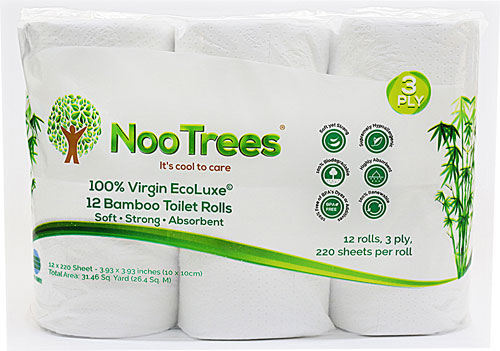 We use toilet paper multiple times a day in our most personal of areas. Yet, we hear about scary stuff that could be hiding in each roll. With so many options on the shelves it’s difficult to figure what to use and what to avoid. Here are the toxins to be wary of and a guide to help you choose the right brand for you.
We use toilet paper multiple times a day in our most personal of areas. Yet, we hear about scary stuff that could be hiding in each roll. With so many options on the shelves it’s difficult to figure what to use and what to avoid. Here are the toxins to be wary of and a guide to help you choose the right brand for you.
Chlorine Dioxide
Toilet paper brands made from virgin pulp (not recycled paper) are usually bleached with chlorine dioxide. When you hear or read about chlorine in toilet paper it’s misleading because chlorine dioxide is different from chlorine. Until the late 1990s, pure chlorine, or elemental chlorine, was used for paper bleaching and was a significant source of dioxin. Dioxins, which are persistent environmental pollutants and accumulate in the food chain, are among the most toxic chemicals on earth. The EPA began regulating the paper industry which led North American paper mills to convert from elemental chlorine to chlorine derivatives, such as chlorine dioxide, which are significantly less toxic and reduce the potential for dioxins by 90%. So, today’s toilet paper bleached with chlorine dioxide is safer than the paper produced decades ago with elemental chlorine. Unfortunately, that doesn’t mean chlorine dioxide is safe. It’s strictly regulated by the EPA as a hazardous chemical. And it still releases dioxins into the environment which is detrimental at any level.
This background is important to understand when reading marketing claims on toilet paper packaging. The following acronyms are used by the U.S. Pulp and Paper Industry to describe “safer” bleaching processes. Here’s what they really mean:
(ECF) Elemental Chlorine Free: Paper bleached with chlorine dioxide instead of elemental chlorine.
As we know, elemental chlorine is no longer used in the U.S. to bleach paper products, so this does not mean that products with this label are any safer than others. In fact, we know that chlorine dioxide is still a danger to humans and to the environment. Some brands also claim “Chlorine-Free”. Be wary of this as it can simply mean that they use a chlorine derivative such as chlorine dioxide.
(PCF) Process Chlorine Free: This is used for recycled paper. It means no chlorine or chlorine derivative was added during the production process. Ozone, oxygen or hydrogen peroxide are used for bleaching.
(TCF) Totally Chlorine Free: This is used for virgin paper. Ozone, oxygen or hydrogen peroxide are used for bleaching.
Formaldehyde
Some brands of toilet paper use formaldehyde to make the paper stronger when it is wet.
Formaldehyde is a carcinogen as well as an irritant. One study linked toilet paper to chronic irritation in women. If a brand claims that it is particularly thick, strong, or absorbent, suspect that it contains formaldehyde.
BPA
Recycled toilet paper is made from paper scraps. Thermal paper, such as cash register receipts are a known source of BPA. When they get processes to make recycled paper, trace amounts of BPA can end up in the finished product. A 2011 study found that 80 of 94 toilet paper brands contained BPA. However, for perspective, BPA in toilet paper was detected in microgram-per-gram concentrations while thermal paper receipts were measured in milligram-per-gram concentrations. That’s 1000 times more exposure from receipts than toilet paper!
Fragrances/Lotions
It’s difficult to get companies to disclose all of the chemical additives used for fragrance or added features like lotion. We know that fragrances are often a cocktail of chemicals and sometimes include phthalates, a known endocrine disrupter. Lotions can include parabens, which are linked to hormone disruption and breast cancer, as well as other harmful ingredients. It’s best to avoid any products boasting these features.
Buying Guide
Avoid: Toilet Paper made with Virgin Pulp
Sadly, this is the fluffy, white stuff that most people prefer. If chlorine dioxide, dioxins and the possibility of formaldehyde are not enough to deter you, think of the fact that 54 million trees are harvested per year for toilet paper production.
Better: Recycled Toilet Paper
These brands will likely contain trace amounts of BPA. While it is best to avoid all exposures to BPA, humans are at far greater risk of exposure from food and beverage containers and cash register receipts than from toilet paper. If you choose this option, look for brands that contain 100% recycled content and are bleached with PCF. Some brands do use ECF so look carefully.
It’s worth noting that Seventh Generation openly addresses the BPA problem on their website and are actively working toward solutions. They should be commended for their transparency. Plus, they use hydrogen peroxide for bleaching (which is PCF)!
Best: 100% Bamboo or Bamboo & Sugar Cane Toilet Paper
These brands do not contain BPA because there is no recycled content. They do not need formaldehyde for strengthening because bamboo fibers are naturally strong. Most of them use hydrogen peroxide for bleaching, although some use a combination of hydrogen peroxide and ECF. An added benefit is that bamboo and sugar cane are grasses, not trees, which are naturally renewable.
Do they work?
None of these bamboo and sugar cane brands compare in softness or strength to traditional, virgin pulp brands. However, if you are used to using recycled brands you will probably find these less-toxic alternatives to be good options. Like the recycled brands, they vary widely in appearance and functionality. My family found 2 of the 5 brands we tried acceptable.
NooTrees
This was my favorite in the category. The 3-ply sheets are the strongest of the five tested and did not break down during tough cleaning jobs. It is relatively soft and thick and looks the most like traditional toilet paper.
WHOLEROLL
Also 3-ply, this is soft and strong but not quite as thick as NooTrees.
ECOS
This is not as soft as NooTrees or Wholeroll but it holds up and does an acceptable job.
Tree Free
This did not work for me. It is thin and rough and sometimes crumbles.
Caboo
This did not work for me. It is thin and sometimes crumbles.
Non-Toxic Hangers
Question from Phoebe
I saw an older post about hangers, and I was wondering if anyone has any updated information. I am trying to fin non toxic hangers that will last that are preferably eco friendly as well. I cannot find the Ditto hangers for sale anywhere besides one sketchy seeming ebay seller. Did the whole non toxic, eco friendly hanger movement die? Any recommendations?
Lisa’s Answer
LifeStraw Glass Water Filter
Question from Kathryn
Hello! Curious if you’ve seen the LifeStraw glass water filter and think it could be valuable if not currently able to install a full filtration system… thanks!
Lisa’s Answer
It’s good to see a countertop filter with a glass jug and an activated carbon filter. Without doing a full analysis of other pitcher filters in the price range ($55), I can only give you a cursory assessment. It doesn’t seem to filter harmful chemicals such as chlorine and lead as well as mainstream brands like Brita. For example, Brita filters out 99% of lead and chlorine while LifeStraw filters 97% and 95.4%, respectively. You are making a tradeoff of a glass pitcher for less effective filtering.
If you can afford a bit more, Pure Effect, which is what I have in my house, offers a counter top model for $170. It does need to be hooked up to your faucet and does have plastic housing but it does the most comprehensive job of filtering chemicals and contaminants that I have found.
Titanium Dioxide in EnviroKlenz
Question from Lanette
Recently I’ve been reading a lot about the dangers of nano-particles of titanium dioxide and zinc oxide in products, particularly in sunscreen. I know Debra was a big fan of Enviroklenz (air cleaners and related air purifying products), as am I. They all contain titanium dioxide. Is theirs the nano type or the non-nano type? Also would you give more information on what this is?
Lisa’s Answer
I confirmed with EnviroKlenz that the titanium dioxide is much larger than nano-particles and poses no health risk.
Lemi Shine Detergent Booster
Question from Liz
We have very hard water and I am SO SICK of the scum that builds up on everything that goes into the dishwasher I’m ready to trash the beast and do dishes by hand. But there are three in our house and we always cook meals at home, so that would be quite a chore so I’m looking for a different solution.
A friend recommended adding Lemi Shine Dish Detergent Booster when running the dishwasher, but I can’t find much about its toxicity. The package says it’s “Natural, Safe, Biodegradable, Phosphate Free, Non-Toxic, Septic system safe” but who knows if that means anything?
Any thoughts on this product? Or is there another you would recommend for very hard water? I’ve been using Biokleen dishwasher detergent, but it really doesn’t work here.
Lisa’s Answer
The website lists citric acid and fragrance as ingredients. Citric acid is not a concern. Fragrance, as you probably know, can be a mix of many potentially harmful chemicals. The website’s Q&A section claims that only a small fraction of the fragrance is synthetic and most is essential oils. It doesn’t sound terrible but there may be non-toxic alternatives. Readers, any recommendations?
Futon Pad To Stop Slipping
Question from Shannon
After Debra Lynn Dadd educated me to the flame retardants and toxic foam in my sofa I replaced it with a futon. I have a solid wood futon frame and wool mattress with an organic cotton cover. My only problem is that the mattress keeps slipping off. Can you recommended a way to stop this? The Futon Shop has a product called futon stop slip. It is made of foam. Is this non toxic?
Lisa’s Answer
Finding Non-Toxic Dishwashers
Dishwashers are one of the more difficult purchases when planning your non-toxic home because they use many different materials and it’s difficult to get manufacturers or retail sellers to disclose those materials. Many sales representatives simply don’t know what’s used to make their products.
When I purchased my dishwasher a few years ago I was focused on finding models that didn’t use PCV in the racks. Recently, a new material of concern, bitumen, has been a popular topic in Toxic-Free Q&A.
Bitumen in Dishwashers
According to Wikipedia, bitumen, also known as asphalt, is a sticky, black, liquid or semi-solid form of petroleum. It’s widely used in dishwashers as a sound-deadening insulation. Some consumers complain of a tar smell from newly installed units.
But, just how dangerous is bitumen when used in these conditions? Research on the toxicity of asphalt focuses on the fumes that workers are exposed to in the pavement and roofing industries. It’s less clear how much it off-gasses once cured. Miele, a manufacturer of high-end dishwashers, claims that the bitumen is fully encapsulated and will never emit any vapor or fumes of any kind. The bottom line is more testing needs to be done to better understand the toxicity of bitumen in this application.
Some models use more bitumen than others depending on the type of tub. Base on the information I received from 7 manufacturers, dishwashers with stainless steel tubs generally use bitumen in the insulation on all sides of the tub. Dishwashers with plastic tubs generally only use bitumen in the door panel or lid. So, is it better to have less bitumen with a plastic tub or more bitumen with a stainless steel tub? Again, it’s hard to say without better understanding just how dangerous bitumen is under each condition.
Here’s where it gets even trickier. The one model I found that does not use bitumen uses other materials for sound-deadening insulation. The GE model GDF630PSMSS uses an insulation blanket and insulation mastic. The manufacturer was unable to tell me the materials used in those items but according to Wikipedia, among the commonly used materials in insulation blankets are PTFE laminates. That’s right, PTFE, otherwise known as Teflon. Mastics, like coatings and paints, have a range of VOC levels depending on the formula, so it is impossible to assess the toxicity without more information.
A further complicating factor is that it’s difficult to rely on information gathered from manufacturers. Some models that readers posted as free of bitumen are ones that I found to contain bitumen, but with a lower amount than other models. Again, I don’t believe this misleading information is intentional but more a lack of understanding by company employees. Nonetheless, it’s hard to know exactly what you are getting.
Here’s how 7 dishwasher manufacturers reported their use of bitumen.
Bosch: All models are made with bitumen.
Fisher & Paykel: Sides are insulated with cotton fiber and bitumen is used on the top of the lid.
GE: All models are made with bitumen with the exception of model #GDF630PSMSS which uses an insulation blanket and insulation mastic.
KitchenAid: All have bitumen in some degree. Models with stainless steel tubs use bitumen on all side. Models with plastic tubs only use bitumen in the door panel.
Maytag: All have bitumen in some degree. Models with stainless steel tubs use bitumen on all side. Models with plastic tubs only use bitumen in the door panel.
Miele: All models are made with bitumen, but it is fully encapsulated and will never emit any vapor or fumes of any kind.
Whirlpool: All have bitumen in some degree. Models with stainless steel tubs use bitumen on all side. Models with plastic tubs only use bitumen in the door panel.
Plastics in Dishwashers
This is actually some good news. Plastic components inside of new dishwashers, which can include tubs, racks, silverware baskets and spraying arms, are now being made with safer plastics. PVC used to be a commonly used material in racks but fortunately, most are now made of nylon. Plastic tubs, silverware baskets and spraying arms are usually made with polypropylene, which does not contain BPA or phthalates. It’s worth verifying, before you purchase a specific model, that the parts are made with these safer plastics.
Let’s continue to gather information on dishwashers. What has been your experience with new dishwasher purchases? Are there detectable odors after installation and for how long? Have you found a model that is free of bitumen? Keep me posted!
Fragrance Free Shampoo and Conditioner
Question from Audrey
First Granny’s went out of business and now Magick Botanicals is out of business. Need fragrance free shampoo and conditioner. Cannot tolerate odor of herbs or flower extracts – has to be totally fragrance free. Carters has olive oil shampoo, but after a while, the smell of the oil got to me and I had to stop using it. Any suggestions?
Lisa’s Answer
Debra’s List has a whole section of fragrance free body care products. These are usually not organic, but they qualify here because they have eliminated the very toxic synthetic fragrance. These products have no fragrance of any kind—synthetic or natural. NOTE: Some of these websites sell products with fragrance and without.
Untreated Towels
Question from Audrey
I used to get my towels from either LLBean or Blair Catalogs. They both now have their towels treated so it is fade resistant. LLBean has organic towels but are very expensive. Where can I buy bath towels the way they used to be – not treated for fade resistant. Thank you.
Lisa’s Answer
There are many untreated towels available on Debra’s List. Readers, please leave a comment if you have found other reasonably priced untreated towels.
CA Prop 65 warning of Cadmium
Question from Chris
I have a question about (another) CA Prop 65 warning.:
I’m finding a warning for Cadmium somewhere in a bathroom vanity I was about to buy.
I can only guess Cadmium is used in the white paint on this.
Since this an item subject to the most head/humidity in the house, is this particular warning one I should take seriously? Should I assume Cadmium in the paint will off-gas in these temperatures?
Lisa’s Answer
The concern about cadmium is not from off-gassing but from ingestion. For example, the European Standard bans the use of cadmium in children’s toys for fear that they will be exposed if they chew on the toy or put it in their mouth.
The greatest sources of exposure for a consumer to cadmium are through food and cigarette smoke. Absorption through the skin is negligible.
If you recall, reports of cadmium in children’s jewelry caused alarm in recents years. The reason for limits on children’s jewelry but not adults is the assumption that children are more likely to put things in their mouths.
I would consider this a low risk of exposure, but certainly try to find something without cadmium if possible.
Chemical Safety Regulations
In 2016, the Frank R. Lautenberg Chemical Safety for the 21stCentury Act was passed into law, updating the Toxic Substances Control Act (TSCA) which was enacted in 1976. Under TSCA, only a few hundred out of 85,000 chemicals approved for use were reviewed for safety. Only 5 of those were banned.
The Lautenberg Chemical Safety Act was intended to bring much needed improvement to our chemical safety regulations. It required 10 priority chemicals to be assessed immediately and by 2020 it requires 20 evaluations ongoing at any time. In 2017, the EPA changed the rules to allow the agency to only look at a subset of a chemical’s uses when assessing its safety. As a result, when the EPA evaluated the 10 priority chemicals it did not take into account the risks caused by the chemical’s presence in air, water or soil.
Here is the status of some of the most dangerous chemicals in use:
Chlorpyrifosis a pesticide used extensively in fruit and vegetable crops. Research has shown that even a small amount can slow children’s brain development and it is toxic to farm workers.
- In 2016, the EPA recommended to ban the chemical.
- In 2019, the EPA decided to keep it on market sighting insufficient data.
Asbestosis banned by most other industrialized nations. It is a known carcinogen.
- In 2017, the EPA refused to finalize the proposed ban claiming the science is unresolved.
- In 2019, the EPA chose to restrict rather than ban the chemical.
Trichloroethylene (TCE)is used as a degreaser and is used as an ingredient in adhesives, paint removers and spot removers. The EPA concluded that it causes cancer and other serious health effects.
- In 2016, the EPA proposed a ban for use as an aerosol spray degreaser and dry-cleaning spot treatment. This was the first EPA proposed ban in 25 years.
- In 2017, the EPA proposed to indefinitely delay the ban.
Methylene Chlorideis used in paint stripping. It is a likely carcinogen and has been linked to more than 50 deaths.
- In 2016, the EPA proposed a ban for use as a paint stripper.
- In 2017, the EPA proposed to indefinitely delay the ban.
- In 2018, the EPA banned the chemical for use in consumer products but allows for its continued use in commercial products.
N-Methylpyrrolidone (NMP) is used as a paint stripper. It can cause birth defects and reproductive issues.
- In 2016, the EPA prosed a ban or restrictions for use in paint strippers.
- In 2017, the EPA proposed to indefinitely delay the ban.
The EPA has not made progress banning harmful chemicals under the new TSCA law but it has been very quick to approve new chemicals, reviewing over 2000 and approving over half of them. Please consider supporting organizations like Environmental Working Group (EWG) which is a non-profit, non-partisan organization dedicated to protecting human health and the environment.
Styrofoam in Hydroponics
Question from TL
Hi, I have seen styrofoam float used widely in hydroponic farming. Agree hydroponic is pesticide free, but does styrofoam has similar”food grade” like PU foam MDI or is styrofoam used in hydroponic farming safe at all? Thank you.
Lisa’s Answer
So, you need to make the call for yourself. Personally, I don’t want to risk leaching of a probable carcinogen into my food. It is possible to uses polyurethane floats in hydroponics however, according to 365aquaponics, polyurethane is sometimes “improved” for better insulation by adding isocyanurates, which are hazardous chemicals. Its’ also worth noting that some XPS foam board is Greenguard certified. Don’t let this fool you; Greenguard does not test for leaching into food or water so it says nothing about the safety of eating food grown in this meduim.
Hydration Bladders
Question from Pedro
Hello, I recently started looking for hydration backpacks and I am finding that the bladders are made from either TPU or PEVA. Which one is less toxic? Are there better options? Help! I just want to keep my kids safe. Thank you.
Lisa’s Answer
ATC Trailers
Question from Kelly
Has anyone with MCS tried the ATC (Aluminum Trailer company)? It can be ordered with all aluminum interior. This option is impossible to find used and it seems I will need to order a new one. I have severe MCS, Athsma, COPD, and allergies (allergic to wood so can’t do the toxic free trailers). I cannot find any reviews on them for MCS on the ACT and am concerned with how long it will take to off gas.
Lisa’s Answer
Cadmium
Question from Olga
I recently purchased furniture from Wayfair.com. The smell is awful and not going away after several weeks. I contacted them and told them about it. They really don’t care. After looking into the furniture and maker I realized it has a warning for California proposition 65. I called them back trying to get more information on this and how it can affect my health and my children’s Health. The person I spoke to said we should be fine since we are not eating the furniture. The chemical in question is Cadmium. I have looked into it and all the side effects of this chemical. Is she right? Are we ok because it is on furniture and not being ingested??
Lisa’s Answer
I think you have two different issues. The smell is not likely due to cadmium, which does not have a detectable odor. The smell is more likely VOC off-gassing from adhesives, sealants or coatings. It’s difficult to identify the source without knowing what type of furniture you have purchased and what materials it is made from. One option is to seal any hard surfaces with a product like AFM Safecoat. It may also help to air it out outside for several days.
As for the cadmium, it is most likely from a pigment or coating on the furniture. While cadmium can be absorbed through the skin, that is not considered to be a major route of exposure. The most worrisome type of exposure after cigarette smoke, is ingestion, which is why it’s so important to make sure your cookware does not contain cadmium. Cadmium in your furniture is a lower risk than in your cookware but I still would not want it in my home.
Dental Compositites
Question from Kimberly
Hi Lisa,
Years of searching for dental composite replacements for simple fillings.
Most of them have BPA and TEGMA related compounds. The ones that do not still have horrible chemical tastes to them.
Would love some safer alternatives.
Lisa’s Answer
Zeolite Detox Symptoms
Question from Barbara
Hi Lisa,
Checking to see if taking the zeolite will produce detox symptoms? If so how severe or not? Can I start out slow in taking the product?
Lisa’s Answer
Safe Drywall
Question from Teresa
Hi Lisa,
Can you please share the best safest types of drywall? I was looking at Magnesium oxide but hearing things about cracking.
Thanks
Lisa’s Answer
Ants
Question from Jen
Hi there! I’m looking for advice on how to handle an influx of kitchen ants this summer. My usual methods (ie – clean counters, all food put away in sealed packaging, etc) aren’t working. I can’t even tell where they’re coming from specifically, can’t locate ant hills in the yard. Very confusing. I’m not ready to call in an exterminator quite yet (although my husband is quickly losing patience!) I’ve heard good results with the following products but since I have kids who play on the floor and pets who lick their paws I’m hesitant to use.
1-Terro ant traps
2-zevo ant spray
Thanks for your help and any recommendations you might have for me.
Lisa’s Answer
PVC and Microban in Air Conditioning
Question from Paula
Hi Lisa,
My situation is that I’m getting central air conditioning installed, and want to avoid all toxic components. I’m wondering if having PVC or Microban in my attic is something I should worry about (my attic isn’t air sealed from my living space, and air sealing is probably too expensive at this time). I guess my question is, is there a distance from which toxic chemicals aren’t a health danger?
Lisa’s Answer
The distance is not really the important factor since air will be moving through the AC system, through your vents, and into your home. I would avoid PVC and Microban if possible.
Non-Toxic Gardening
Its peak growing season in the northeast and we can’t wait for our first harvest of tomatoes, carrots and peppers. We’re already enjoying kale, lettuces, beets, and our house specialty, purple potatoes. My husband’s hobby is organic gardening, so my kids and I get to reap the rewards of his hard work. He is always experimenting with some new growing method or product and patiently allows me to research anything new before he buys it.
It’s always amazing to me that so many gardening products are made with harmful chemicals. Why go to the trouble of growing your own food, particularly organic food, if you are going to grow it in a bed made of pressure-treated wood or water it with a hose that leaches lead and BPA?
When you’re planning a non-toxic garden the first place to start is with high-quality, organic seeds. Some argue that it’s not necessary to buy organic seeds because studies have shown conventional seeds without trace chemicals from insecticides or fertilizers. I choose to err on the side of caution. Knowing that plants take in nutrients through their leaves, common sense would support that if leaves are sprayed with synthetic chemicals the plants will absorb those chemicals. There are other compelling reasons to buy organic seeds:
1. Organic seeds are grown to survive in organic systems. They may be more likely to thrive without synthetic chemicals than conventional seeds.
2. Buying organic seeds supports organic farming practices which is better for the environment, farm workers and consumers.
3. Organic seeds are relatively inexpensive at roughly $1 more per packet than conventional seeds.
Debra’s List has several high-quality seed companies to choose from.
If you are still using a garden hose that may be made with PVC or have lead-containing metal fittings, check out this study by healthystuff.org. It’s a bit out of date but it still provides great guidance. Debra’s List recommends Water Right hoses and Terrain Heritage hoses.
I’ll be writing more on garden products over the course of the summer. I am also working on an affiliate store where you will be able to buy recommended products. I plan to have a section on gardening supplies. Stay tuned…
PFAS Chemicals Found in Farm Produce
PFAS, or polyfluoroalkyl substances, are a family of chemicals that are used to make non-stick coatings such as Teflon. Sometimes called Forever Chemicals, they persist in the environment and body and have been linked to health issues such as hindered growth and learning and increased cancer risk.
There has been increasing concern about contamination from PFAS-containing firefighter foam that is used on military bases and some airports. The foam has previously been linked to groundwater contamination in neighboring communities. New reports show that PFAS chemicals have now been detected in milk and vegetables from farms located near military bases. Read more food contamination here.
How to Avoid Contaminated Foods
Federal and state agencies are testing samples from potentially contaminated farms, but until more is known it may be best to avoid food from farms that are located near contaminated sites. EWG has an interactive map that shows sites with known PFAS contamination.
Take Action
The Air Force is recalling PFAS-containing foam from the U.S. and overseas, but they have not found a safe way to dispose of it once it is reclaimed. The foam is being contracted out to private businesses for incineration, but incineration may not fully destroy the chemical. There is an amendment before Congress to hold PFAC polluters accountable for cleaning up contaminated sites. Click here to learn how you can help.
Handbag Materials
Question from Wendy
Lisa,
Can you tell me if it’s toxic to carry handbags made of these materials? I know I may need to find out more details about the chemicals but this is what I have so far.
Handbag 1:
Dyed Nylon with Water and Stain Resistant Coating
Dyed Italian Leather
Nylon Strap
Handbag 1:
70% Polyamide
30% Polyurethane
Vachetta Leather Trim
Wendy
Lisa’s Answer
Let’s take a look at each of the components of these handbags:
Handbag #1:
Nylon with water and stain resistant coating – Untreated Nylon is one of the least toxic plastics. It is still a synthetic fiber that is made from petroleum but there is little concern for its toxicity. It’s the treatment that is more concerning. It’s hard to say without more information but most stain resistant treatments are made with perfluorochemicals (PFCs) which can be highly toxic.
Dyed leather handle– the tanning process for leather can use 250 different chemicals including chromium which can be very toxic.
Nylon strap– If the Nylon is untreated it should be fine.
Handbag #2:
Polyamide– This is Nylon. If it is untreated it should be fine.
Polyurethane– There are different types of polyurethane. Read Debra’s post about polyurethane toxicity here. It is likely that this is a food-grade film which would have low toxicity, but you would need to confirm that.
Vachetta leather trim– This is vegetable dyed leather. Vegetable tanning does not use chromium which is a positive but since there can be 250 different chemicals used in the tanning process you might want to find out more about the specific chemicals used. Some vegetable tanned leather may use all-natural materials, but you would need to check to be sure.
Based on the information you have provided, it looks like Handbag #2 is the safer options, but more information would be helpful.
Removing Odors from Insulation
Question from Colleen
Hi Lisa,
Has anyone successfully moved into a house where the previous tenants used scented detergents and dryer sheets in the house. I was under the assumption that the fragrances got into the insulation in the walls, etc. How long did it take to outgass if ever? Would a “bake out” even take care of it?
Lisa’s Answer
Debra interviewed Daliya Robson from Nirvana Safe Haven and they discussed a number of ways to eliminate odors (click here for transcript).
I would first try some low-cost options like zeolite or charcoal to try to absorb the odors. As a next step I would try the “bake out”, which has proven successful for many situations. If neither of those work, you might try some of the products mentioned in the interview. Finally, a good air purifier can be very effective. While it is an investment, you will have it for many years to help reduce toxins in your home. There are many sealers on the market that are great for reducing formaldehyde, but I have read that they do not always reduce odors, particularly if they are organic.
Has anyone else had success minimizing these types of odors?
Feit
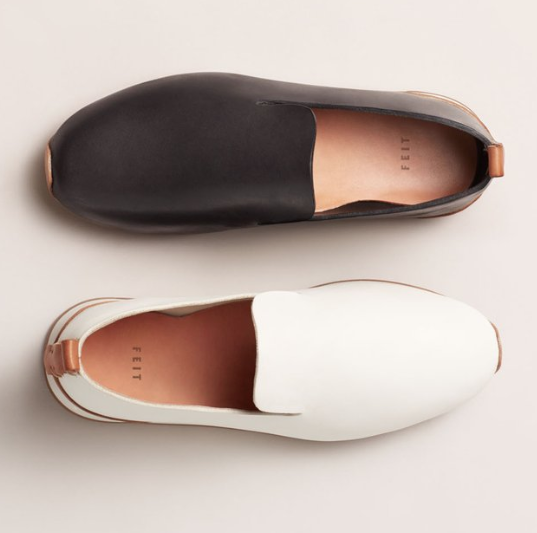 Shoes for women and men made with exceptional craftsmanship and materials. “In 2004 FEIT [fight] was born as a response—an evolution of consumerism and production that moves away from volume and excess, and towards quality and sustainability. FEIT footwear is built for longevity, from natural materials via human construction. All FEIT footwear is hand sewn and hand lasted by a master shoe maker. Few makers are skilled enough to produce footwear in this manner, hence only limited numbers can be produced…FEIT adheres to a strict policy of using biological materials and natural treatments whenever possible. Natural materials breathe, patina and become one with the wearer. Materials page.
Shoes for women and men made with exceptional craftsmanship and materials. “In 2004 FEIT [fight] was born as a response—an evolution of consumerism and production that moves away from volume and excess, and towards quality and sustainability. FEIT footwear is built for longevity, from natural materials via human construction. All FEIT footwear is hand sewn and hand lasted by a master shoe maker. Few makers are skilled enough to produce footwear in this manner, hence only limited numbers can be produced…FEIT adheres to a strict policy of using biological materials and natural treatments whenever possible. Natural materials breathe, patina and become one with the wearer. Materials page.
Undandy
 These shoes for men are a cut above ordinary shoes. Their about page starts with this quote “A man who works with his hands is a laborer; a man who works with his hands and his brain is a craftsman; but a man who works with his hands and his brain and his heart is an artist.” Made from vegetable tanned leather, there are many styles and colors to choose from…you can customize any pair and even design your own! About the leather.
These shoes for men are a cut above ordinary shoes. Their about page starts with this quote “A man who works with his hands is a laborer; a man who works with his hands and his brain is a craftsman; but a man who works with his hands and his brain and his heart is an artist.” Made from vegetable tanned leather, there are many styles and colors to choose from…you can customize any pair and even design your own! About the leather.
District Leathers
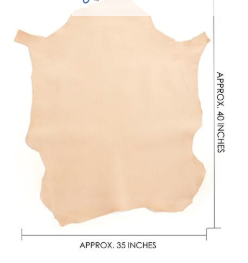 Vegetable-tanned hides for creating your own leather projects. In addition to the vegetable tans link here, also see the “cow hides” and lamb hides” menus and choose “vegetable tans.” See their very informative Leather Buying Guide . Free swatches. “Vegetable tanned leathers are tanned using strictly organic materials such as tree bark. They possess warm deep colors. As veg-tan leather ages, it absorbs the light, oils, and air that it is exposed to which cause their colors to become more rich.”
Vegetable-tanned hides for creating your own leather projects. In addition to the vegetable tans link here, also see the “cow hides” and lamb hides” menus and choose “vegetable tans.” See their very informative Leather Buying Guide . Free swatches. “Vegetable tanned leathers are tanned using strictly organic materials such as tree bark. They possess warm deep colors. As veg-tan leather ages, it absorbs the light, oils, and air that it is exposed to which cause their colors to become more rich.”
Marlondo Leather
 complete range of leather goods—including purses, backpacks, travel gear, and accessories—handmade individually by artisans using vegetable-tanned leather. Classic styles, reasonable prices. About their leather.
complete range of leather goods—including purses, backpacks, travel gear, and accessories—handmade individually by artisans using vegetable-tanned leather. Classic styles, reasonable prices. About their leather.
Etsy Vendors of Vegetable-Tanned Leather Purses
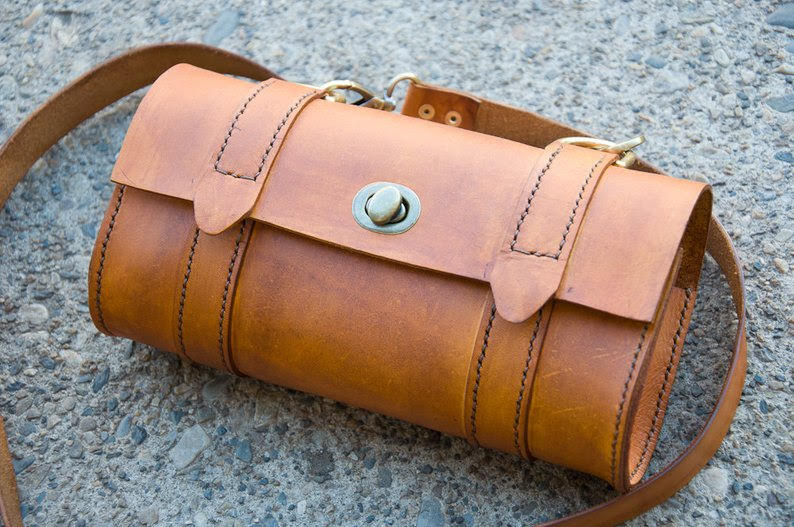 I had to include this because there are so many small artisans now working with vegetable-tanned leather that it was a joy for me to see their creations. You’ll find unusual designs here as well as traditional classics. Note the country items are shipped from as they are not all use. But here’s where you’ll find vegetable-tanned leather purses and accessories at prices well below other sources. Note: This is a search results page on Etsy for “vegetable-tanned leather purses.” Try reaching on “vegetable0tanned leather for other items.
I had to include this because there are so many small artisans now working with vegetable-tanned leather that it was a joy for me to see their creations. You’ll find unusual designs here as well as traditional classics. Note the country items are shipped from as they are not all use. But here’s where you’ll find vegetable-tanned leather purses and accessories at prices well below other sources. Note: This is a search results page on Etsy for “vegetable-tanned leather purses.” Try reaching on “vegetable0tanned leather for other items.
Frank Clegg
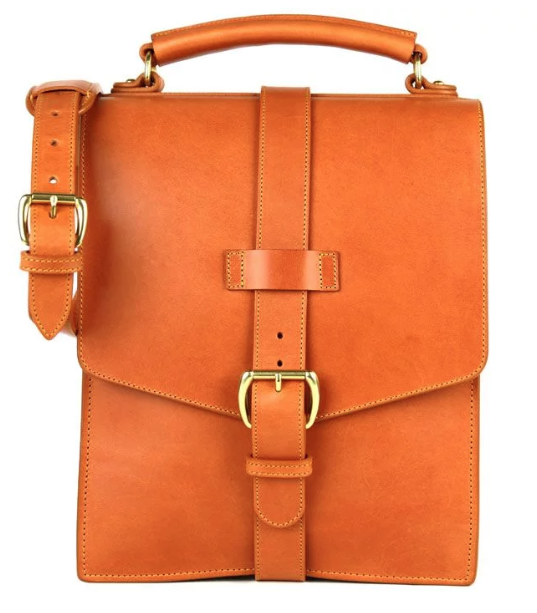 Fine leather goods handcrafted in the USA. These are very high quality and very expensive. About the leather.
Fine leather goods handcrafted in the USA. These are very high quality and very expensive. About the leather.
Eating “Plant-to-Mouth” From My Organic Garden
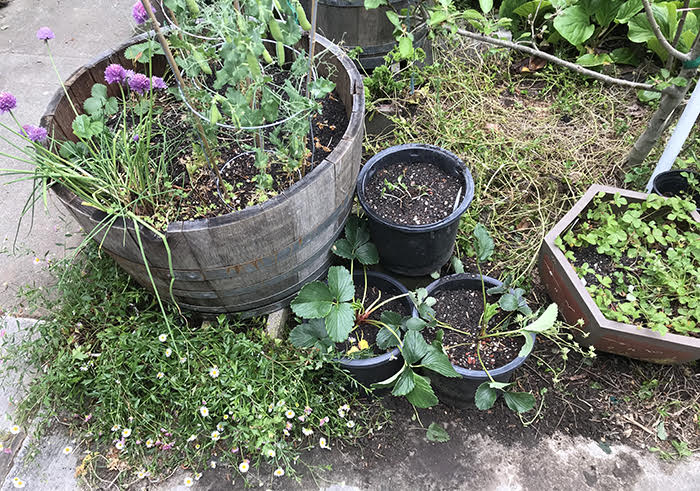
I started out last year with this tiny garden outside my office door. I took this photo yesterday morning after cleaning out the weeds. All these plants are from last year. Those purple flowers to the left are chive blossoms, several varieties of strawberries, Santa Barbara daisies (not edible but pretty). There’s another barrel with last year’s potatoes popping up again and a pomegranate tree, plus more over by the motorhome we are turning into a tiny house.
I spend a lot of time writing about how we can choose consumer products that are made without toxic chemicals, but “toxic-free” also includes doing and making thing yourself without toxics. Such as organic gardening.
This year we had a lot of rain, so my little garden is popping with plants I planted last year.
I’ve got chive blossoms ready to eat right now. English peas I planted earlier this year are about to give a harvest. Strawberry plants are sending out runners and the new plants are about twice the size of the original plants and already producing flowers. The two raspberry canes planted last year have produced so many new plants we have been digging them up and replanting because they are overflowing the barrel.
Ralph Waldo Emerson once said, “The Earth laughs flowers.” Today I am saying, “Here in my garden, the Earth is laughing vegetables and fruits!”
I’m fortunate to have Larry and his mom and a brother and a sister—all experienced gardeners—and enough fertile soil that we can each garden to our hearts content. This morning there was a large basket of java beans just harvested that I think we’re having for dinner.
Next weekend we’re going to some wonderful plant nurseries where we can buy heirloom seedings for edible plants. I can’t wait!
As I was walking around my garden, looking forward to pulling raspberries and tomatoes right off the plants and into my mouth I suddenly thought, “Oh, the next step after farm-to-table is plant-to-mouth!” I can hardly wait to do that in a few days when the peas pop. Fresh English peas with chive blossoms right out of my hand.
Is Silicone Inherently Antibacterial?
Question from Jennifer
Hi Debra,
Does anyone know if silicone touted as antibacterial and antimicrobial is that way because it is naturally a deterrent or if it is treated with a chemical? And if treated with a chemical to be antibacterial, is it inert in silicone in the final product?
I can’t find any information online about it at all for non medical products. For example I’m looking at buying a silicone dish drying mat because the cloth ones just get moldy fast and they all seem to say they are antimicrobial, but I can’t determine why, if it is a natural byproduct of being silicone or if treated like so many things are now.
If my dishes that eat off of will be touching I was wondering if I should be concerned. Thanks!
Debra’s Answer
Antibacterials is a big subject and antibacterials can range in toxic effect from silver having virtually no health effects to triclosan, which is known to be an endocrine disruptor and cause skin and breast cancer, among other health effects. There is even now an antimicrobial made from peppermint oil, so whenever you see the word “antimicrobial,” you need to find out the specific antimicrobial that has been used.
Antibacterials may be widely used and not on the label, for they can be used to prevent the deterioration of plastics, for example, which would not be on the label because it’s not a selling point for consumers. Again, the antimicrobial may be perfectly harmless or have health effects.
With regards to your question as to whether silicone is inherently antibacterial or whether a chemical is added, I would say from looking at online search results that silicone is NOT inherently antibacterial because additives exist to make silicone antibacterial for specific uses.
Would the antibacterial leach from the silicone? Well, depending on what form the antibacterial comes in, it would likely bind to the silicone and not be released. But again, we don’t know the antibacterial or the form it is in, or its toxicity.
I’m using my best logic here, based on my understanding, not on tests.
I always apply the Precautionary Principle, which is, when in doubt, don’t use it.
This is another example of why there needs to be improved labeling that reveals what all the materials are.
Ant Invasion in Home
Question from Caroline
Hi Debra,
My home is prone to ants; and this time , as well as regular foundation spraying with Termidor, and placing advion ant bait in heavily infested areas within the home 3 x over the past month, it has been over a month that the ants invade the master bath daily to the point of being unusable. Usual spraying of vinegar and water, sprinkling black pepper or cinnamon was to no avail. I had to call in a professional exterminator who is trying to work with me because of MCS.
Debra’s Answer
I’m going to say something that may sound obvious, but have you tried filling the holes where they come into the house?
This has been my tried-and-true method for controlling ants for almost 40 years and it always works. I even did it when I lived in an apartment building in San Francisco. All the other units were sprayed for ants, but I wouldn’t let them in my unit and did this instead. Even with the spraying the other units had ants. Mine was the only one that did not.
All you need is a bottle of Elmer’s White Glue and a damp sponge.
Trace the line of incoming ants back to where they are coming into your house and make note of the spot. Then wipe up the ants with the sponge. Fill in the hole with Elmer’s Glue. Then go to the next entrance and do the same.
The ants will continue to find new ways to get in until you’ve sealed all the holes. Then you will never have an ant problem again.
GDC/Building For Health
 The global leader of healthy home material supply, specializing in interior finishes and furnishings such as AFM Safecoat Paints and others,, toxin-free flooring, custom air purification systems and solutions, and other nontoxic building products. Healthy building expert Andrew Pace has over 25 years experience in the education of home health and human wellness. With over 20,000 satisfied clients all over the world, Andrew has a keen awareness of the issues relating to chemical sensitivity, green building, mold remediation and toxicity reduction.
The global leader of healthy home material supply, specializing in interior finishes and furnishings such as AFM Safecoat Paints and others,, toxin-free flooring, custom air purification systems and solutions, and other nontoxic building products. Healthy building expert Andrew Pace has over 25 years experience in the education of home health and human wellness. With over 20,000 satisfied clients all over the world, Andrew has a keen awareness of the issues relating to chemical sensitivity, green building, mold remediation and toxicity reduction.
Scarf Shop
 Long and luxurious scarves made from organic or conventional cotton or wool,dyed by hand in small batches in Minneapolis, MN. Low impact materials and methods are used whenever possible. Kettle dying in small batches with water based dyes gives fabric a rich and mottled appearance. These are gorgeous scarves. Lots of beautiful colors.
Long and luxurious scarves made from organic or conventional cotton or wool,dyed by hand in small batches in Minneapolis, MN. Low impact materials and methods are used whenever possible. Kettle dying in small batches with water based dyes gives fabric a rich and mottled appearance. These are gorgeous scarves. Lots of beautiful colors.
Pamut Apparel
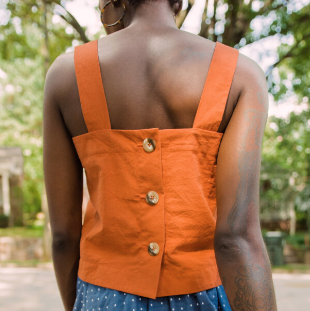 Simple yet styish clothing for women made from organic cotton, organic linen, or raw silk. “We use only natural fibers, sustainably sourced, in all of our clothing. We source only the softest natural fibers available. Our organic certified cottons and linens and sustainably sourced raw silks are beautiful, long-lasting, and pesticide free.”
Simple yet styish clothing for women made from organic cotton, organic linen, or raw silk. “We use only natural fibers, sustainably sourced, in all of our clothing. We source only the softest natural fibers available. Our organic certified cottons and linens and sustainably sourced raw silks are beautiful, long-lasting, and pesticide free.”
Nutmeg Fibers
Kelocabay
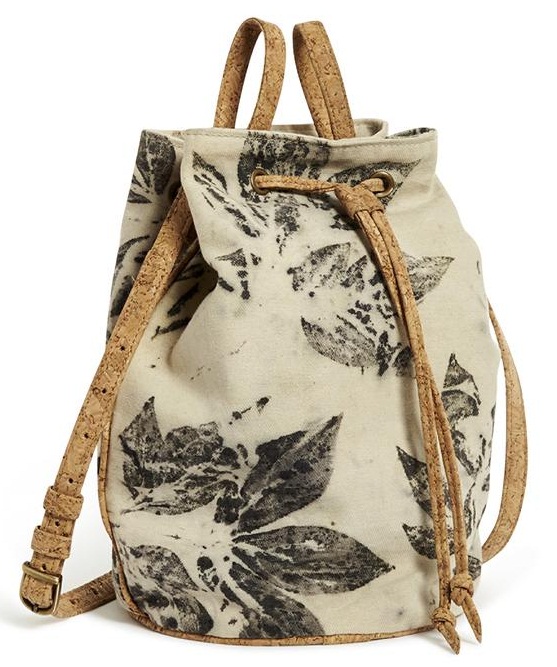 Bags of all sizes and natural fiber scarves “hand dyed naturally…We use plants, not pollutants, to create color for our accessories collection. The beauty of aligning our design, development and production with the East Coast seasons truly defines how guided we are by nature. Each season nature brings us many gifts, including the colors we create. We expand on and discover more colors from season to season through growing dye plants and natural dyeing our textiles in house. Our dye stuffs are mostly home grown, locally foraged or food scraps. At times we also use minerals and dye stuffs that we source from trusted suppliers.”
Bags of all sizes and natural fiber scarves “hand dyed naturally…We use plants, not pollutants, to create color for our accessories collection. The beauty of aligning our design, development and production with the East Coast seasons truly defines how guided we are by nature. Each season nature brings us many gifts, including the colors we create. We expand on and discover more colors from season to season through growing dye plants and natural dyeing our textiles in house. Our dye stuffs are mostly home grown, locally foraged or food scraps. At times we also use minerals and dye stuffs that we source from trusted suppliers.”
Camellia Fiber Company
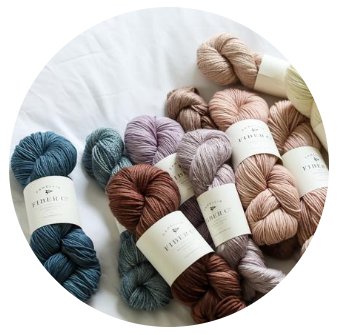 Natural fiber yarns colored with plant-based dyes. “We believe in the inherent beauty and superiority of natural fibers, and work exclusively with them. From cotton and linen to wool and mohair, our yarns lend beautiful texture to your most cherished projects…we dye our carefully sourced mill-spun yarns in small batches with the utmost care. Our new signature colorway collection is inspired by sun dappled florals, and our limited-edition seasonal collections are hand-dyed with natural seed, root, and flower based dyes.”
Natural fiber yarns colored with plant-based dyes. “We believe in the inherent beauty and superiority of natural fibers, and work exclusively with them. From cotton and linen to wool and mohair, our yarns lend beautiful texture to your most cherished projects…we dye our carefully sourced mill-spun yarns in small batches with the utmost care. Our new signature colorway collection is inspired by sun dappled florals, and our limited-edition seasonal collections are hand-dyed with natural seed, root, and flower based dyes.”
EST WST
Seam Siren
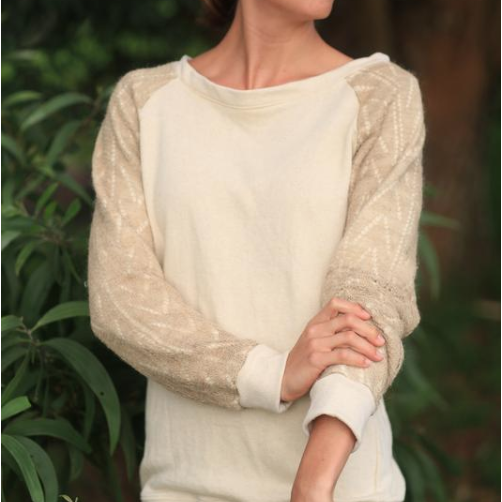 An extraordinary line of women’s clothing with a viewpoint and understanding far beyond any other website I’ve seen. Clothes designed for healing are made from “100% chemical-free” wild Himalayan nettle, flax, and hemp, colored with plant-based dyes. There is so much information available on the site about the fibers, dyes, skin detox, health and other related topics I could spend all day reading this. This is the purest clothing I’ve seen. “Seam Siren is fiercely committed to purity in every layer of the company from our plant-based care labels to chemical-free fibers. We have made a commitment to create relationships with the communities that both harvest the fiber from the wild, and those that are growing our fibers organically. We are proud to stand confidently behind terms like, “organic”, “sustainable”, “plant-based”, “wildcrafted” and “chemical-free”, knowing in our hearts that we are operating from a place of transparency and integrity….These botanical fibers and dyes act as a medicinal delivery system from the material to your skin. One of the oldest examples comes from the Indian tradition of Ayurveda. Now referred to as “Ayurvastra”, or “healing cloth”, this practice involves combining natural fibers and medicinal plants to dye clothing, bedding, and anything else that would come in contact with the body to promote healing. Two clinical studies proving the efficacy of this practice were conducted in India: One by the Kerala Ministry of Health and the other one by the Pharmacology department of the Government Ayurveda College…When we are unable to harvest our own colors due to volume, we source our dyes from a company that has created fully GOTS certified organic plant-based dyes, which are the most earth-friendly on the market with full traceability from the plants to the final colors.” This website gave me a whole new level of possibility about what clothing can be.
An extraordinary line of women’s clothing with a viewpoint and understanding far beyond any other website I’ve seen. Clothes designed for healing are made from “100% chemical-free” wild Himalayan nettle, flax, and hemp, colored with plant-based dyes. There is so much information available on the site about the fibers, dyes, skin detox, health and other related topics I could spend all day reading this. This is the purest clothing I’ve seen. “Seam Siren is fiercely committed to purity in every layer of the company from our plant-based care labels to chemical-free fibers. We have made a commitment to create relationships with the communities that both harvest the fiber from the wild, and those that are growing our fibers organically. We are proud to stand confidently behind terms like, “organic”, “sustainable”, “plant-based”, “wildcrafted” and “chemical-free”, knowing in our hearts that we are operating from a place of transparency and integrity….These botanical fibers and dyes act as a medicinal delivery system from the material to your skin. One of the oldest examples comes from the Indian tradition of Ayurveda. Now referred to as “Ayurvastra”, or “healing cloth”, this practice involves combining natural fibers and medicinal plants to dye clothing, bedding, and anything else that would come in contact with the body to promote healing. Two clinical studies proving the efficacy of this practice were conducted in India: One by the Kerala Ministry of Health and the other one by the Pharmacology department of the Government Ayurveda College…When we are unable to harvest our own colors due to volume, we source our dyes from a company that has created fully GOTS certified organic plant-based dyes, which are the most earth-friendly on the market with full traceability from the plants to the final colors.” This website gave me a whole new level of possibility about what clothing can be.
Cloth Foundry
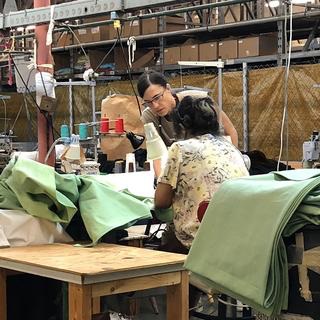 Textiles and apparel (for women) in collaboration with nature. Natural Fibers. Natural Finishes. Natural Dyes. Our extraordinary textiles are obtained from prized and certified sustainable natural fibers. We manufacture in California with clean ingredients utilizing strict biological and ethical principles…We make textiles to be worn by people. Our fabric is designed to be in direct contact with our bodies. Produced with clean green ingredients such as cotton, a carbohydrate, real botanicals like indigo dye and minerals, for example calcium carbonate, the main component of pearls and eggshells; it is our belief that textiles and apparel should be made with the same consideration as food — naturally, and with nothing we can’t consume. What’s on our bodies should be just as good as what we put in them….Every product is designed to be cared for, repaired, and passed on–not landfilled. It is our hope that after a long life of use, it can be composted worry free.” Just go to their website and read everything. Especially their blog. A whole different viewpoint on textiles.
Textiles and apparel (for women) in collaboration with nature. Natural Fibers. Natural Finishes. Natural Dyes. Our extraordinary textiles are obtained from prized and certified sustainable natural fibers. We manufacture in California with clean ingredients utilizing strict biological and ethical principles…We make textiles to be worn by people. Our fabric is designed to be in direct contact with our bodies. Produced with clean green ingredients such as cotton, a carbohydrate, real botanicals like indigo dye and minerals, for example calcium carbonate, the main component of pearls and eggshells; it is our belief that textiles and apparel should be made with the same consideration as food — naturally, and with nothing we can’t consume. What’s on our bodies should be just as good as what we put in them….Every product is designed to be cared for, repaired, and passed on–not landfilled. It is our hope that after a long life of use, it can be composted worry free.” Just go to their website and read everything. Especially their blog. A whole different viewpoint on textiles.
Industry of all Nations
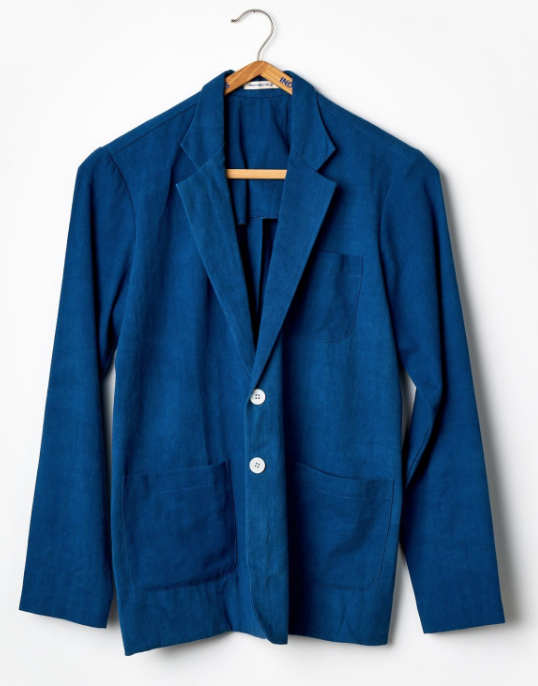 This website has some of the purest clothing I’ve seen for men (but I would wear this clothing too). Just one example is a 100% organic cotton twill blazer, unbleached and undid, with river shell buttons. Same jacket also available in blue, made with fermented natural indigo dye. Espadrille sneakers made of cotton and jute. Shop by style or material: undid & unleaded, natural dyes, alpaca, organic cotton, and more. Simple, natural, organic, loose.
This website has some of the purest clothing I’ve seen for men (but I would wear this clothing too). Just one example is a 100% organic cotton twill blazer, unbleached and undid, with river shell buttons. Same jacket also available in blue, made with fermented natural indigo dye. Espadrille sneakers made of cotton and jute. Shop by style or material: undid & unleaded, natural dyes, alpaca, organic cotton, and more. Simple, natural, organic, loose.
Sustain By Kat
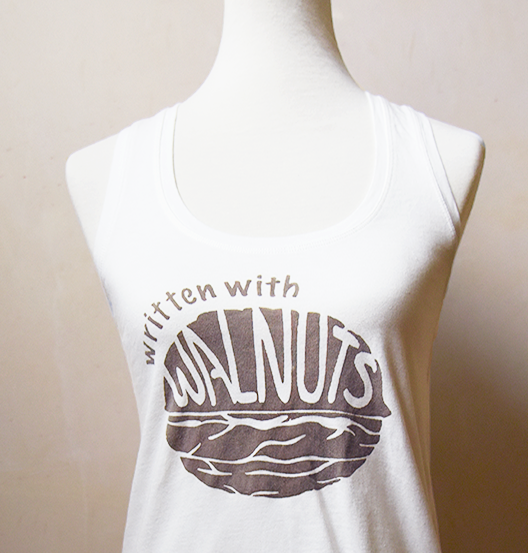 Casual clothing for women and kids, in timeless basic styles designed to be worn season after season. “Sustain makes healthy clothing from organic, natural fibers that are good for your body and good for the world. Unlike traditional manufacturing processes, we avoid using synthetic dyes and toxic chemicals that could absorb into your skin and cause health issues. Our selection of plant-dyed clothing made with certified organic materials and ayurvedic processes promote well-being…All our clothing is 100% natural, from the organic fibers, to the natural dyes, all the way down to the organic thread sewing it together. We sweat the details to make the cleanest clothing around, so that our clothing is safe for both you and our world.”
Casual clothing for women and kids, in timeless basic styles designed to be worn season after season. “Sustain makes healthy clothing from organic, natural fibers that are good for your body and good for the world. Unlike traditional manufacturing processes, we avoid using synthetic dyes and toxic chemicals that could absorb into your skin and cause health issues. Our selection of plant-dyed clothing made with certified organic materials and ayurvedic processes promote well-being…All our clothing is 100% natural, from the organic fibers, to the natural dyes, all the way down to the organic thread sewing it together. We sweat the details to make the cleanest clothing around, so that our clothing is safe for both you and our world.”
Maiwa Clothing
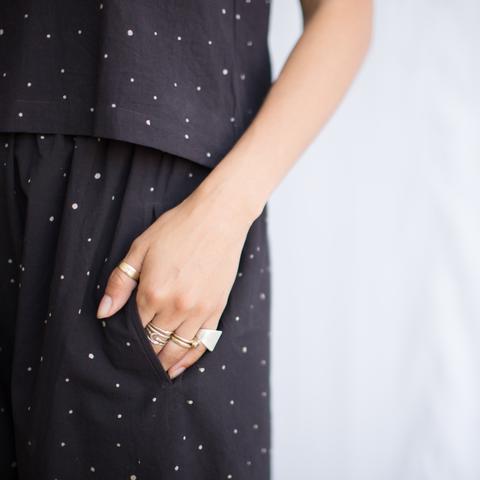 Clothing for men and women, hand made in India using traditional methods. “Our garments feature a range of artisan techniques. Depending on the garment these may include, handwoven cloth, block printing, ikat dyeing, natural dyes, and many forms of surface design. We make naturally dyed clothing and accessories designed to be worn everyday. We want to make it easy to find clothing that you love that isn’t made using toxic dyes and chemicals or plastic fibers…Whenever possible, we search for the highest quality all-natural and organic dyes and fibers, including grown-in-Texas organic cotton, biodegradable coconut husk beads, and organic indigo. Our mission is to show that it’s possible to make clothing that’s good for people and good for the environment, and still make it something you want to wear every day.”
Clothing for men and women, hand made in India using traditional methods. “Our garments feature a range of artisan techniques. Depending on the garment these may include, handwoven cloth, block printing, ikat dyeing, natural dyes, and many forms of surface design. We make naturally dyed clothing and accessories designed to be worn everyday. We want to make it easy to find clothing that you love that isn’t made using toxic dyes and chemicals or plastic fibers…Whenever possible, we search for the highest quality all-natural and organic dyes and fibers, including grown-in-Texas organic cotton, biodegradable coconut husk beads, and organic indigo. Our mission is to show that it’s possible to make clothing that’s good for people and good for the environment, and still make it something you want to wear every day.”
Native Color
Soluna Collective
 Handmade clothing for women. “Our promise is to use as many natural materials as possible while also identifying other eco-friendly alternatives. Some of the materials we use include organic cotton, wool, cruelty free silk, linen, corozo, cupro and Tencel. We also promise to be accountable for our materials and will take back any garment in order to keep it out of the landfill!. We only use low-impact and natural (plant-based) dyes. We are devoted to keeping color a part of our world but in an environmentally responsible way. All of our dyes eliminate harmful chemicals from the process, while some of our dyes contain only naturally occurring ingredients. Lastly, many of our dyes are Oeko-Tex and/or GOTS certified.
Handmade clothing for women. “Our promise is to use as many natural materials as possible while also identifying other eco-friendly alternatives. Some of the materials we use include organic cotton, wool, cruelty free silk, linen, corozo, cupro and Tencel. We also promise to be accountable for our materials and will take back any garment in order to keep it out of the landfill!. We only use low-impact and natural (plant-based) dyes. We are devoted to keeping color a part of our world but in an environmentally responsible way. All of our dyes eliminate harmful chemicals from the process, while some of our dyes contain only naturally occurring ingredients. Lastly, many of our dyes are Oeko-Tex and/or GOTS certified.
Megan-Ilene
 Beautiful clothing for women. ‘Hand dyed, made-to-order artisanal clothing and accessories for the discerning customer…sustainable, biodegradable, handmade….All items are made by hand in our Greensboro, North Carolina studio using organic natural fibers and cloth. All dyes used are either natural or low impact synthetic with a focus on low immersion techniques to prevent water waste. All textile off-fall is reconfigured, reused or revitalized creating a closed loop, zero waste system.Megan Ilene studio strives to create beautiful, well-designed, and long-lasting garments incorporating old and new practices to create fresh pieces.By creating items that can be worn a myriad of ways and utilizing materials that are ultimately safe for Earth’s reclamation we hope to change the thought process one utilizes with purchasing goods. Who made your clothes? What are they made of? It is our hope that by producing and consuming mindfully, we can focus on craftsmanship, reduce waste, and create truly impeccable clothing for the discerning customer.”
Beautiful clothing for women. ‘Hand dyed, made-to-order artisanal clothing and accessories for the discerning customer…sustainable, biodegradable, handmade….All items are made by hand in our Greensboro, North Carolina studio using organic natural fibers and cloth. All dyes used are either natural or low impact synthetic with a focus on low immersion techniques to prevent water waste. All textile off-fall is reconfigured, reused or revitalized creating a closed loop, zero waste system.Megan Ilene studio strives to create beautiful, well-designed, and long-lasting garments incorporating old and new practices to create fresh pieces.By creating items that can be worn a myriad of ways and utilizing materials that are ultimately safe for Earth’s reclamation we hope to change the thought process one utilizes with purchasing goods. Who made your clothes? What are they made of? It is our hope that by producing and consuming mindfully, we can focus on craftsmanship, reduce waste, and create truly impeccable clothing for the discerning customer.”
Olderbrother
Gaia Conceptions
 “Handmade Eco Chic Apparel for the Global Nomad” … every piece we offer is custom to you and handmade in North Carolina. Our goals at Gaia Conceptions are to ensure our clothing materials and production methods are rooted in sustainability and our garment designs are beautiful, comfortable, and highly versatile. The first step was to only use certified organic fabrics that are produced either locally (North Carolina, USA) or through fair trade practices abroad. We also made sure our dyes are as eco-friendly as possible often passing on certain colors because they didn’t meet our standards. A mixture of natural dyes and low impact fiber reactive dye color options is currently the most eco-friendly option. We are always experimenting with new techniques and researching new possibilities.” For women (including plus sizes) and children.
“Handmade Eco Chic Apparel for the Global Nomad” … every piece we offer is custom to you and handmade in North Carolina. Our goals at Gaia Conceptions are to ensure our clothing materials and production methods are rooted in sustainability and our garment designs are beautiful, comfortable, and highly versatile. The first step was to only use certified organic fabrics that are produced either locally (North Carolina, USA) or through fair trade practices abroad. We also made sure our dyes are as eco-friendly as possible often passing on certain colors because they didn’t meet our standards. A mixture of natural dyes and low impact fiber reactive dye color options is currently the most eco-friendly option. We are always experimenting with new techniques and researching new possibilities.” For women (including plus sizes) and children.
XSilk
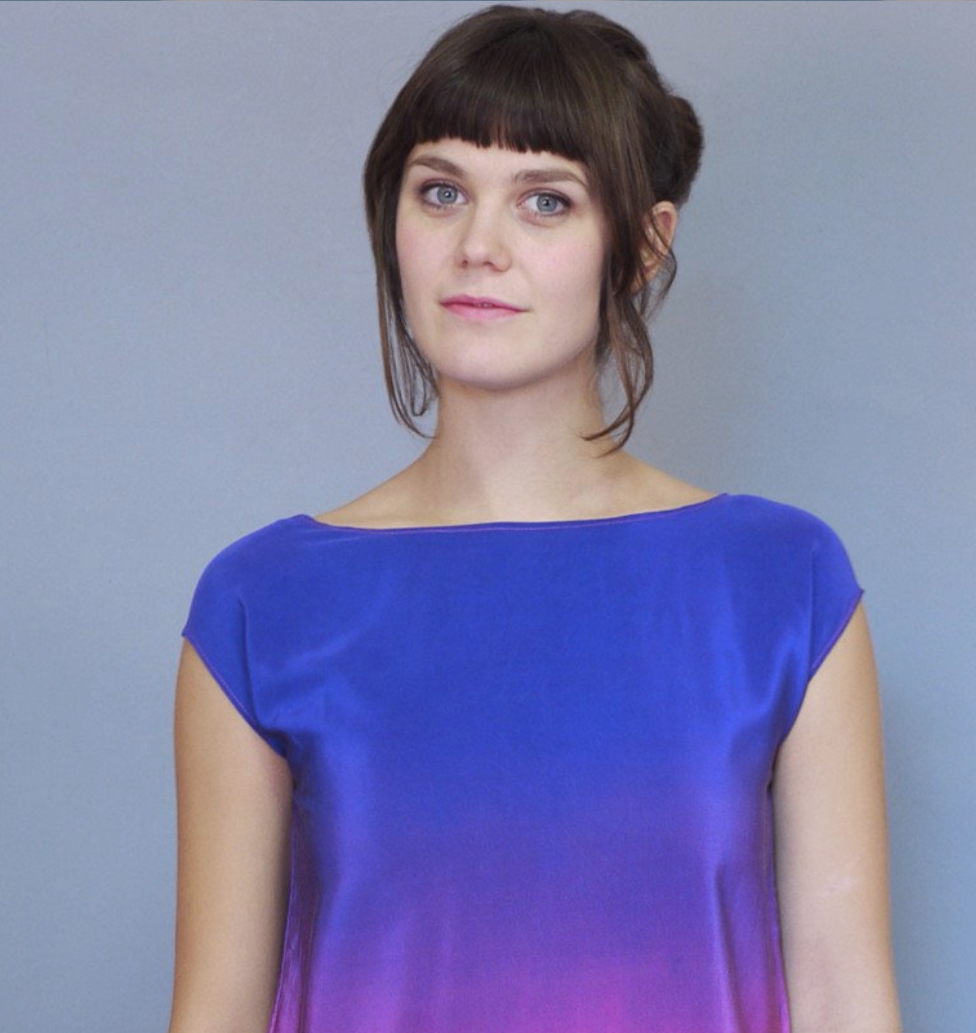 Made-to-order silk clothing for women, with a Japanese sensibility. This artisanal design & craft studio focuses on hand dyed and hand painted textiles. “We produce garments and accessories using time-tested traditional processes with a modern sensibility. Each piece is crafted individually, and often is a one-of-a-kind piece…We dye in a eco conscious way by using safest method of dyeing available to us. We operate on “made-to-order” mode of production so to keep our waste to minimal. Our materials are locally sourced. Our dye workshop is open to those who wants to learn about natural dyeing including indigo dyeing, botanical dyeing and several different traditional Japanese textile coloring processes.” NOTE: No mention is made of the silk being organic.
Made-to-order silk clothing for women, with a Japanese sensibility. This artisanal design & craft studio focuses on hand dyed and hand painted textiles. “We produce garments and accessories using time-tested traditional processes with a modern sensibility. Each piece is crafted individually, and often is a one-of-a-kind piece…We dye in a eco conscious way by using safest method of dyeing available to us. We operate on “made-to-order” mode of production so to keep our waste to minimal. Our materials are locally sourced. Our dye workshop is open to those who wants to learn about natural dyeing including indigo dyeing, botanical dyeing and several different traditional Japanese textile coloring processes.” NOTE: No mention is made of the silk being organic.
Passion Lilie
Homegrown Cotton
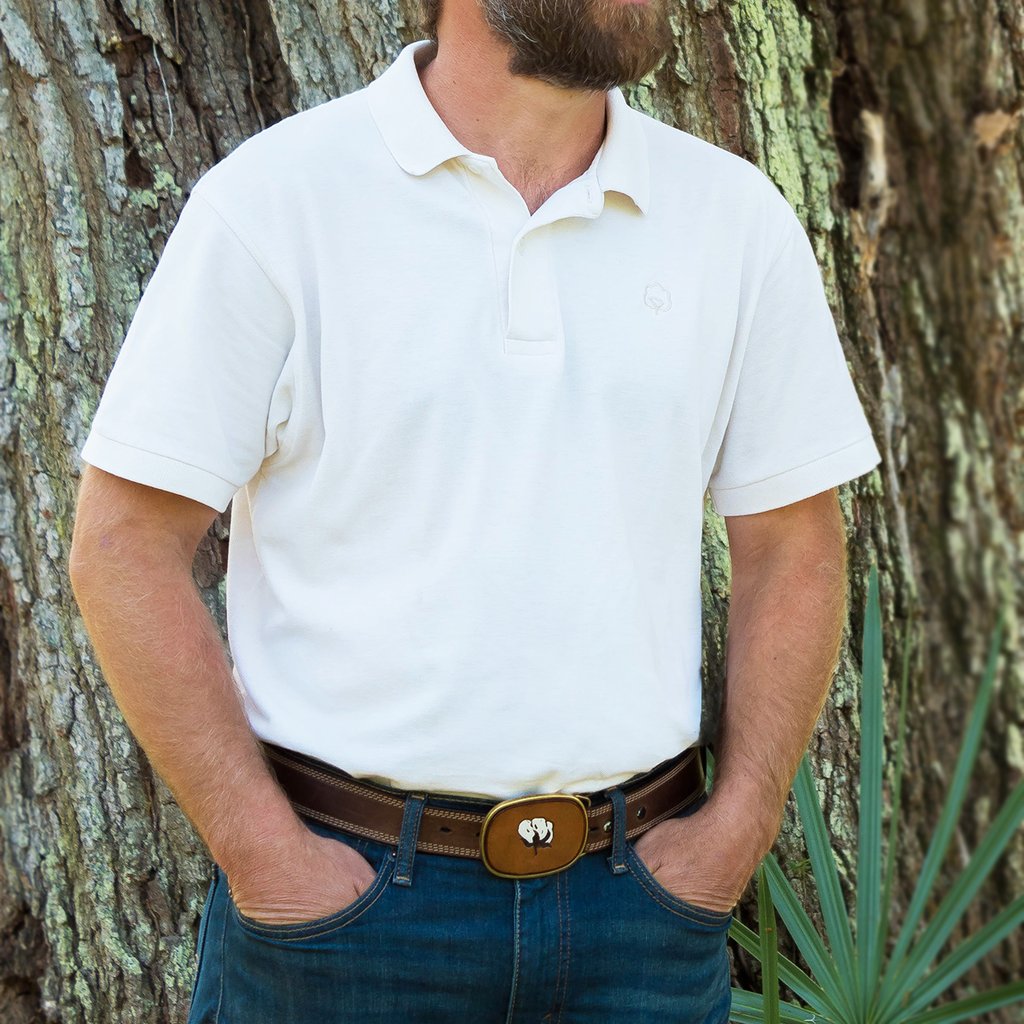 Cotton polo shirts for men, made by eighth generation cotton farmer who “thought there was a way to produce a high quality cotton polo shirt utilizing locally grown cotton. By the farmer producing the cotton and the finished garment there is full trace-ability back to the field from which it was grown. Every step of the production process is done as local as possible to minimize our carbon footprint and to support the many local businesses involved. We use all natural, environmental friendly dyes and our Natural Shirt has no dye or bleach, just raw cotton. The final cutting and sewing of our shirt is done only 40 miles away from the farm on which it was grown. We hope you enjoy your shirt grown and sewn in South Carolina and appreciate your support of our products. Note: cotton is not organic.
Cotton polo shirts for men, made by eighth generation cotton farmer who “thought there was a way to produce a high quality cotton polo shirt utilizing locally grown cotton. By the farmer producing the cotton and the finished garment there is full trace-ability back to the field from which it was grown. Every step of the production process is done as local as possible to minimize our carbon footprint and to support the many local businesses involved. We use all natural, environmental friendly dyes and our Natural Shirt has no dye or bleach, just raw cotton. The final cutting and sewing of our shirt is done only 40 miles away from the farm on which it was grown. We hope you enjoy your shirt grown and sewn in South Carolina and appreciate your support of our products. Note: cotton is not organic.
Maelu
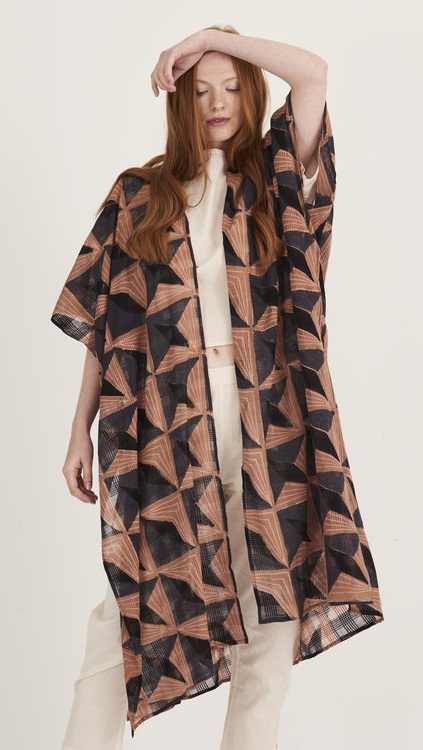 Flowing clothing for women with gorgeous tradition design—apparel, kaftans, kimono, and oversize scarves. I just want to order everything, it’s all so beautiful and easy to wear. “Maelu is an ethical women’s apparel line handmade in India using traditional artisan techniques such as block printing, hand weaving and screen printing. We focus on sustainable textiles made with natural fibers and vegetable dyes. “Wooden blocks are hand carved out of teak wood and then applied with natural dyes before being stamped on cotton or silk. Our natural dyes are made with a variety of materials including jaggery, pomegranate skins, alum and indigo bush. Each color and design in the pattern requires a different block, resulting in an incredibly intricate process. After being stamped the printed fabric is laid out in the village field to dry in the sun and set the color. The fabric is then steamed, washed and ironed to permanently fix the colors.”
Flowing clothing for women with gorgeous tradition design—apparel, kaftans, kimono, and oversize scarves. I just want to order everything, it’s all so beautiful and easy to wear. “Maelu is an ethical women’s apparel line handmade in India using traditional artisan techniques such as block printing, hand weaving and screen printing. We focus on sustainable textiles made with natural fibers and vegetable dyes. “Wooden blocks are hand carved out of teak wood and then applied with natural dyes before being stamped on cotton or silk. Our natural dyes are made with a variety of materials including jaggery, pomegranate skins, alum and indigo bush. Each color and design in the pattern requires a different block, resulting in an incredibly intricate process. After being stamped the printed fabric is laid out in the village field to dry in the sun and set the color. The fabric is then steamed, washed and ironed to permanently fix the colors.”
Is Homebiotic Mold Remover Safe to Use?
Question from Cheryl
Hi Debra,
Do you have an opinion about a product called Homebiotic which you spray in your home to help eradicate toxic mold?
Thanks for your help.
Debra’s Answer
According to their website, “Homebiotic contains only purified water and natural probiotic bacteria from healthy soil, which each have years of study and are completely safe for humans and pets.”
I don’t see anything toxic here.
Do Toxic Chemicals Permeate Milk Cartons?
Question from Melissa
Hi Debra,
Thank you for your wonderful website. I have noticed that certain small grocery stores in our area tend to have a very heavy cleaner/deodorant smell. We popped into one this evening for a quick carton of milk, and when I got in the car I realized that the carton had the odor of the store – and the odor even transferred to my hand after I carried it to the car. Is it possible that the chemicals permeated the milk carton and contaminated the milk, or are paper milk cartons sealed well enough to prevent that?
Debra’s Answer
That’s a good question.
According to How A Milk Carton is Made , “Milk containers are made from paperboard coated with a waterproof plastic, generally polyethylene.
Polyethylene can block chemical gases—it is frequently recommended for wrapping mattresses, for example—however the thickness of the layer makes a difference. I’m thinking that the thickness of the coating on a milk carton is thinner than a sheet of plastic.
I can’t say for sure because I couldn’t find any tests on this. I don’t drink milk myself. When I did I purchased organic milk in glass bottles. That’s clearly the safest choice.
If you can taste the scent in the milk, don’t drink it. Since milk generally doesn’t taste like the surrounding environment, logic would tell me that the seal on the paper is both keeping milk in and keeping the environment out.
Toxic free stain repellant for a couch?
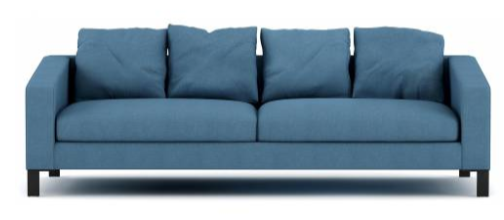
I received this question from a friend of mine who publishes a magazine:
What can I recommend to a reader who has a new couch and is afraid of day-to-day stains and wants to avoid Scotchguard?
I replied:
First, is it a new toxic-free couch?
If not, it’s already got some kind of stain repellant on it.
Scotchguard changed it’s formula, so it’s no longer as toxic as it once was.
If it’s a natural couch:
1. I would just put something on it like a blanket or throw to protect the sofa. That’s what I did.
2. AFM Safecoat makes a product called SafeChoice Carpet Lock-Out.
“This one-of-a-kind product is designed to perform two functions: to seal in the outgassing of harmful chemicals found in carpet fibers and to help repel dirt and stains.” You can also apply it to fabric as a stain protector. I’ve used this on carpet and it’s very effective.
It turned out that the sofa in question was a toxic couch, but I wanted to pass on this toxic-free fabric protection product.
Permethrin Remediation?
Question from Arash
Hi Debra,
I’ve used your site as a great resource over the past few months and my first go-to. I thank you for all you do.
I couldn’t find an answer to this and if you have any info maybe others would find it helpful too.
I’ve found out that the previous owners of our new house had permethrin sprayed on all the floorboards, top side and bottom, and the stairs too.
This was done over 20 years ago, but I don’t know how much of it will have soaked right into the wood and maybe (on the upper floors) into the drywall of the floor below.
Having failed to find much info on whether it offgasses and to what extent, I decided to just assume it does still off gas.
Also, apparently the dust under the floorboards will have soaked up a lot of permethrin, so dust coming through ceiling light fittings and up through floorboards is definitely a problem even if off gassing is not.
I was just wondering if you had any advice on how best to address this.
I’m thinking maybe HDPE or LDPE sheeting all over the floorboards and taped around the perimeter of each room to seal it all in. Then new flooring on top. Marmoleum or solid wood would be healthiest but they can’t be floated so would have to be nailed into the floorboards thereby breaking the plastic seal. Or glued to plywood which has formaldehyde issues.
Also unsure how to address the dust/vapor movement through the ceiling light fittings… maybe fire proof lighting as that creates a bit more of a barrier but not a complete one.
Not to mention the stairs, I don’t know how practical it would be to seal them all in with LPDE / HDPE. And the under-stairs storage which houses the gas/elec meters etc can’t really be sealed using plastic so don’t know what to do there.
Any and all advice would be very gratefully received.
Thanks Debra.
Debra’s Answer
First, Marmoleum IS available floating and so are hardood floors so that IS an option if you want it.
And second, your Permethrin exposure is not particularly a problem.
Permethrin is widely used on clothing for protection from ticks. “Exposure risk of permethrin-treated clothing to toddlers is 27 times below the EPA’s Level of Concern (LOC).” Permethrin Fact Sheet.
Not only is Permethrin not particularly toxic, you have time on your side. Here is a great article about what happens to pesticides over time: NATIONAL PESTICIDE INFORMATION CENTER: Pesticide Half-life.
About Permethrin it specifically says:
Each pesticide can have many half-lives depending on conditions in the environment. For example, permethrin breaks down at different speeds in soil, in water, on plants, and in homes.
- In soil, the half-life of permethrin is about 40 days, ranging from 11-113 days.
- In the water column, the half-life of permethrin is 19-27 hours. If it sticks to sediment, it can last over a year.
- On plant surfaces, the half-life of permethrin ranges from 1-3 weeks, depending on the plant species.
- Indoors, the half-life of permethrin can be highly variable. It is expected to be over, or well over, 20 days.
Well over 20 days. You’ve had 20 years. It’s highly doubtful there would be any Permethrin left in your home at this time.
Toxic-Free Moulding
Question from Nikko
Hi Debra,
I am looking for baseboard, chair rail moulding (White). MDF is supposed to have formaldehyde in it …not sure if they have done without. What is the best to use with little to no off gassing?
Thanks.
Debra’s Answer
I’ve purchased a fair amount of baseboard and crown moulding in my life and am about to purchase more.
I’ve always purchased wood moulding at places like Lowe’s and Home Depot.
Here’s a little summary of materials used to make moulding I borrowed from Lowes
- MDF (Medium Density Fiberboard) is a high-grade, composite material. Moulding products tend to come primed, making it easy to paint.
- Primed Finger Joint Products are available in Pine and Poplar wood. This engineered moulding is made by fitting smaller pieces together to create one long board. Finger Joint moulding looks best when painted.
- Poplar is a favored material by design professionals. The crisp grain lines and rich wood tones accept paint and stain, making it a perfect wood type for any room.
- Pine adds a distinct character to a room. The lines from the grain and occasional knots can create interest and texture.
- Fir offers two distinct grain patterns. Mixed Grain (MG) offers coarse, wide, and light to dark patterns. Vertical Grain (VG) has a more consistent and tighter grain pattern and less color variation. This wood should be stained to bring out its natural beauty.
- Oak moulding is typically milled from Red or White Oak, which are among the hardest and most durable wood species. Both have great grain appeal and are easy to sand, cut and finish. Your choice of stain color can really enhance the character of this material for a style that is all yours.
- Aspen is a light, soft wood that is typically used for more ornate moulding profiles. It has a straight grain and fine uniform texture.
- Polyurethane moulding is made from high-density polyurethane that won’t warp, rot or split. This product will create detailed patterns without the expense of wood. It’s lightweight for easy handling, saws like wood and comes preprimed and ready to paint.
- Polystyrene prefinished moulding is lightweight and simple to cut using conventional saws, making installation a one-person job. These mouldings can be installed with construction adhesive or finishing nails and are slightly flexible, making them perfect for walls that aren’t true. They’re also moisture resistant—an ideal solution for kitchens and bathrooms.
- PVC gives you the look of wood with moisture protection, inside or out. Strong and durable, PVC moulding is easy to cut and installs without chipping, splitting or cracking.
Of these, I would say yes to the woods poplar, pine, fir, oak, and aspen.
I would say no to MDF, finger joint, polystyrene, and PVC.
Polyurethane is not particularly toxic in this use, but it is a petroleum product, if you are avoiding petroleum.
You should be able to find actual solid wood moulding anywhere moulding is sold.
Lead exposure everyday item- Tumble DRYER
Question from Carissa
Hi Debra,
Thanks for your amazing website and I am long time reader. It has helped me make a few decisions.
I am in a huge quandary at the moment and am wondering if I can get your opinion. I admit I do suffer from OCD and one of my contamination obsession is lead and chemical stuff. It is a lot better, finding a balance is tough and even tougher with 2 kids below 3 (a pending newborn coming soon!).
We have a recently purchased a European made dryer from a famous brand (MIELE) and I noted the back of the dryer has 6 bolt like fittings that are made of brass. I know about lead leaching from brass items, especially keys, as it is used as a lubricant for machining brass and the lead concentrate on the surface for that reason.
I use the dryer all the time to dry our babies’ clothes which will contact these brass bolts. And then babies will obviously chew on their clothes. I can’t test the bolts as they are embedded to the machine’s drum.
We also have new vinyl trims on our floor which tested at 300ppm lead. I cannot remove them without spending thousands of dollars replacing flooring. Our house is cleaned frequently.
I am wondering if these two scenarios will be something to be concerned about? I can’t do anything about the vinyl trims except for making sure I wipe over them weekly with water (chemicals will degrade the vinyl). I can sell the dryer but it will be at a huge financial loss. Just hoping for some advice on how to deal with these two situations with limited finances. Thank you so much!
Debra’s Answer
I understand your situation and concern.
We live in a world where it is impossible to reduce our total exposure from all sources to zero by using source reduction. While the first action to take is always remove toxic exposures at the source, when that is impossible, there is something else to do: detox.
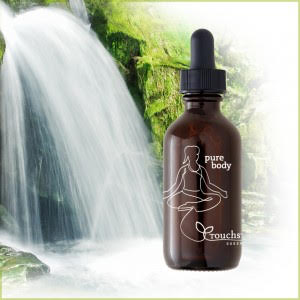 I highly recommend that you take a product called PureBody Liquid Zeolite. It gently removes lead and other heavy metals from your body. Your babies can take it too. There are many zeolite products on the market. This is the only one I use and recommend.
I highly recommend that you take a product called PureBody Liquid Zeolite. It gently removes lead and other heavy metals from your body. Your babies can take it too. There are many zeolite products on the market. This is the only one I use and recommend.
Taking liquid zeolite puts my mind at ease, knowing that I am doing something to help my body eliminate the lead and other heavy metals that I can’t avoid. These heavy metals stay in our bodies and accumulate because our bodies can’t eliminate them on their own. It’s easy, affordable, tasteless and good protection.
Is This No-VOC Engineered Wood Flooring?
Question from SM
Hi Debra,
I found this no-VOC engineered wood flooring, and I wonder if it is what they advertise: because they UV-cure the acrylic, there is no offgassing. I wonder if this could be similar to a Safe Coat on the floors:
https://www.eddiebauerfloors.com/about-our-floors
If not, are you aware of any truly VOC free engineered wood products?
Thanks so much!
Debra’s Answer
Well this is an interesting flooring.
In general, I don’t recommend engineered floorings because they are made from strips of wood glued together.
But the flooring is made from hardwoods over a birch core, manufactured without formaldehyde glues or solvents, and has a UV-cured acrylic layer.
Clearly they have an intent to have this flooring be good for Indoor Air Quality.
Actually these floorings are made by a hardwood flooring company that looks pretty amazing on their website: revelwoods.com
I tried to call them to get more information, but there was only a machine.
I would look into these flooring more closely before making a decision. but so far, so good.
Choosing and Using Dryer Balls as an Alternative to Toxic Scented Liquid Fabric Softener or Dryer Sheets
Question from JC
Hi Debra,
I’d like to begin using dryer balls to reduce static cling in our clothing. I’m guessing they are al not created equal. Can you point me in the right direction as to what to look for, brand recommendations, how many to use per load?
Thanks for helping keep the laundry process clean!
Debra’s Answer
First, I’m sure many of my readers are applauding you for wanting to stop using toxic scented liquid fabric softeners and dryer sheets.
Before I respond about dryer balls, I first want to tell you about static cling.
Static cling is the result of synthetic fabrics, such as polyester, nylon, and acrylic. These fabrics are made from petroleum, and running them through the dryer creates static cling.
Natural fibers do not create static cling. So if you are wearing natural fibers (as I do), there is no need to do anything to reduce or eliminate static cling because natural fibers don’t produce static cling.
There are many wool dryer balls available today. I just searched on “organic wool dryer balls” and there are plenty to choose from, so I would opt for organic rather than natural wool.
How many to use per load? It depends on the size of the load. For small loads, use 2 to 4. For large loads, use 6.
But my best recommendation is to simply switch to wearing only natural fiber clothing. Not only are natural fibers more comfortable and better for your health, there is no fabric softener needed.
NOTE TO THOSE WHO ARE AFFECTED BY NEIGHBORS’ SCENTED FABRIC SOFTENER: Try offering them some wool dryer balls. Don’t suggest they find and purchase some, GIVE them some dryer balls as a gift and ask them to use them. They just might like this alternative and it will save them money.
Supah Star Dark Chocolate Superfood Bars
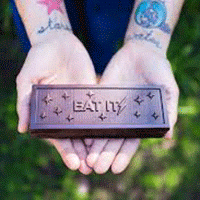 I found this chocolate when I visited a local organic farm-to-table restaurant. It was the only chocolate they sell. And I understand why. It’s made from whole food wildcrafted cacao. DELICIOUS. Handmade with 100% organic ingredients.“Enjoy 6 of the world’s most nutrient dense foods (Goji Berries, Coconut, Hemp Seeds, Chia Seeds, Maca Root & Cacao) that support and nourish all the systems in your body…Every ingredient in our chocolate is as close to a whole food as it can be. We do NOT use emulsifiers (thickening agents) or fillers. Lots of bars have tons of other stuff in them to stretch out the Cacao…making the true experience of the Cacao dull and bringing a major focus to the sweetness only. The actual Cacao we use is exquisite…..like all our ingredients. Read more about the Cacao we use here. The Cacao that we use is WILDCRAFTED…very unique in this day and age of high tech agriculture and farming. We can taste the difference and are very grateful it’s available to US to pass on to YOU. It also has a higher mineral content and nutritional integrity.” Sweetened with coconut sugar. Best chocolate I’ve found yet!
I found this chocolate when I visited a local organic farm-to-table restaurant. It was the only chocolate they sell. And I understand why. It’s made from whole food wildcrafted cacao. DELICIOUS. Handmade with 100% organic ingredients.“Enjoy 6 of the world’s most nutrient dense foods (Goji Berries, Coconut, Hemp Seeds, Chia Seeds, Maca Root & Cacao) that support and nourish all the systems in your body…Every ingredient in our chocolate is as close to a whole food as it can be. We do NOT use emulsifiers (thickening agents) or fillers. Lots of bars have tons of other stuff in them to stretch out the Cacao…making the true experience of the Cacao dull and bringing a major focus to the sweetness only. The actual Cacao we use is exquisite…..like all our ingredients. Read more about the Cacao we use here. The Cacao that we use is WILDCRAFTED…very unique in this day and age of high tech agriculture and farming. We can taste the difference and are very grateful it’s available to US to pass on to YOU. It also has a higher mineral content and nutritional integrity.” Sweetened with coconut sugar. Best chocolate I’ve found yet!
American Blossom Linens
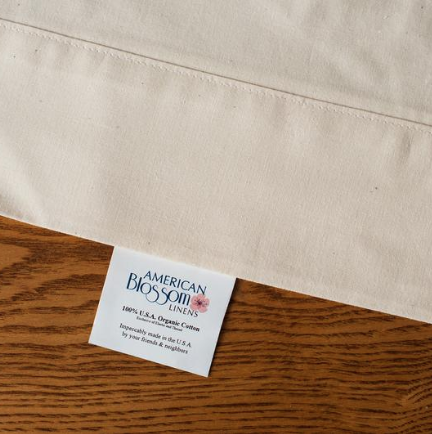 The only bed sheets made completely in the USA from 100% USA organic traceable cotton. See a lovely and informative diagram of how organic cotton is grown. Responsibly crafted by families with decades of textile heritage. Everything from growing to spinning to weaving to finishing is documented on their website. For adult and crib size mattresses.
The only bed sheets made completely in the USA from 100% USA organic traceable cotton. See a lovely and informative diagram of how organic cotton is grown. Responsibly crafted by families with decades of textile heritage. Everything from growing to spinning to weaving to finishing is documented on their website. For adult and crib size mattresses.
PureGreen 24 Antimicrobial Disinfectant
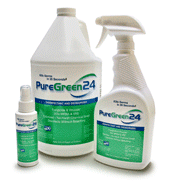 “A proven natural antimicrobial disinfectant and deodorizer that offers rapid efficacy…kills the deadliest of superbugs, yet also kills everyday household germs….an EPA registered, broad spectrum antimicrobial disinfectant and deodorizer with unique 24 hour residual effectiveness…PureGreen24 has an EPA IV toxicity rating; the lowest rating assigned by the Federal EPA. PureGreen24 is Natural, non-flammable, non-corrosive, and odorless without the fumes or skin irritation associated with traditional disinfectants. PureGreen24 is strong enough to kill the most dangerous viruses (Norovirus) and bacteria (MRSA) in a hospital environment, yet EPA registered for use on children’s toys at home. PureGreen24 is Pet safe too.” Made from water, citric acid and silver ions.
“A proven natural antimicrobial disinfectant and deodorizer that offers rapid efficacy…kills the deadliest of superbugs, yet also kills everyday household germs….an EPA registered, broad spectrum antimicrobial disinfectant and deodorizer with unique 24 hour residual effectiveness…PureGreen24 has an EPA IV toxicity rating; the lowest rating assigned by the Federal EPA. PureGreen24 is Natural, non-flammable, non-corrosive, and odorless without the fumes or skin irritation associated with traditional disinfectants. PureGreen24 is strong enough to kill the most dangerous viruses (Norovirus) and bacteria (MRSA) in a hospital environment, yet EPA registered for use on children’s toys at home. PureGreen24 is Pet safe too.” Made from water, citric acid and silver ions.
Peaceful Fruits
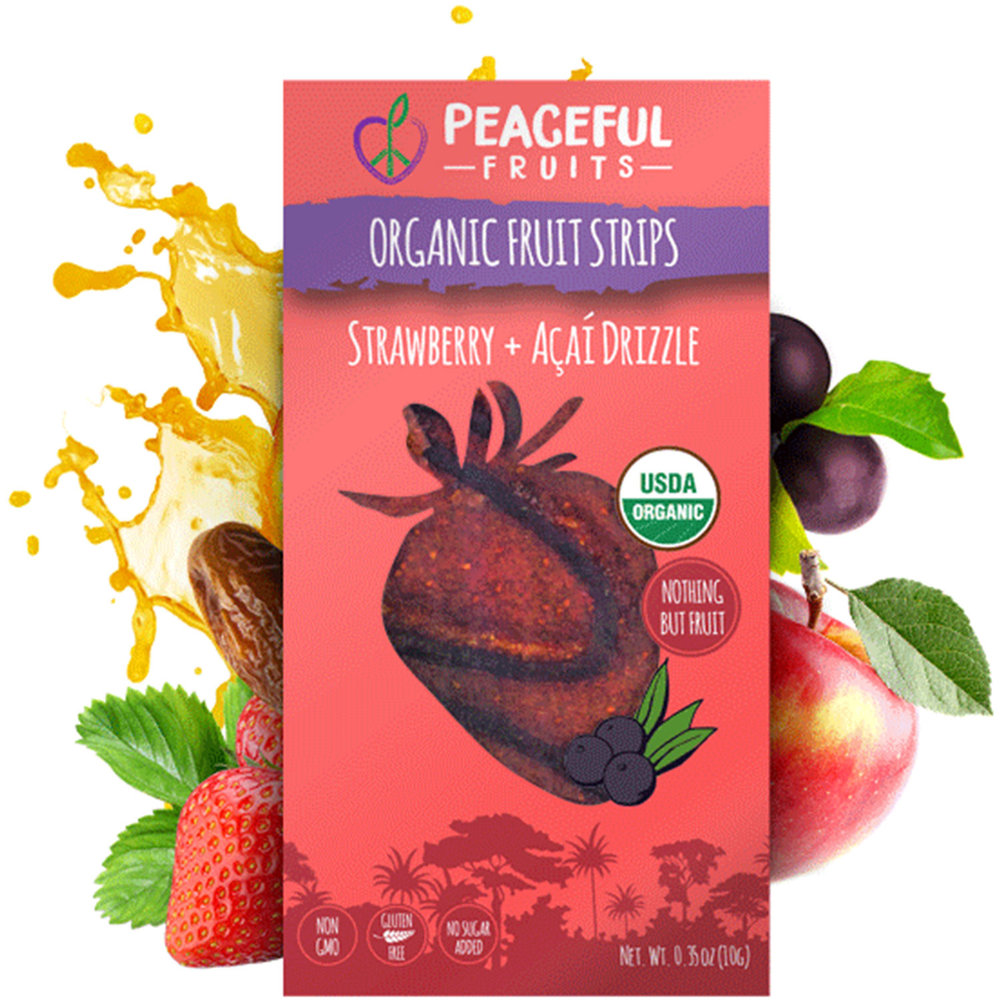 Portable packaged one-serving dried fruit strip snacks that are organic fruit, organic fruit, and nothing but organic fruit. See what’s in other fruit snack. A week’s worth of creative flavor combinations will keep your interest when you feel like a snack. Most contain açaí to boost nutrition of usual fruits.
Portable packaged one-serving dried fruit strip snacks that are organic fruit, organic fruit, and nothing but organic fruit. See what’s in other fruit snack. A week’s worth of creative flavor combinations will keep your interest when you feel like a snack. Most contain açaí to boost nutrition of usual fruits.
Shopping for Toxic-free Products at IKEA
Question from Dawn
Hi Debra,
Does anyone know about Ikea stuff? They claim some of their things are non voc etc. Does anyone have any actual experience though with buying anything new from them?
Irina: I did research on ikea before, and they officially used to claim (I haven’t checked for a while) and I read from other non toxic connoisseurs that IKEA has some of the highest standards for testing their products for toxicity and exceeding the set standards as well as not using flame retardants on their furniture. It was confirmed back then that their white basic dishes do not have lead or other heavy metals. The quality and durability of their furniture specifically is still often questionable though that’s my 2 cents.
Nancy: I have many pieces from Ikea. Solid wood and steel items are fine. And easy to put together….
Louise: On Debra’s suggestion, I got a lovely IKEA non-irritating green polypropylene (sp?) fake Christmas Tree in November. Love it so much am keeping it up year round, decorating each season with seasonal fun!
Eleanor: Does IKEA use fire retardant chemicals in their furniture? I know several companies have stopped using fire retardants.
Kathie: Take a look at Ikea Hemnes furniture. Solid pine. I have several pieces of the Hemnes. It might work for you.
Karen: I also have the Hemnes pieces and they are fine.
Marni: Same here.
Debra Lynn Dadd: Yes I have purchased things from IKEA for my own use and recommended them to clients but only some pieces are suitable and those are made with solid wood and they have a very light acrylic finish on them that has no odor. But then there are other pieces that are made from synthetic fabrics and particleboard so you have to read that the descriptions carefully. I want time I had the thought of going through IKEA and choosing all the furniture that I thought was acceptable. Would anybody like me to do that?
Melissa: Yes, I would greatly appreciate you recommending which pieces to purchase. Im on a limited budget and need a new couch, headboard, and dressers. Ikea fits my budget and my state of mind!!
Dottie: Debra Lynn Dadd, that would be great!
Debra’s Answer
First, here is Ikea’s Chemicals & Substances fact sheet.
Read it and you will see:
- no BPA in anything, not even the cash register recipts
- no brominated flame retardants. “We never add any chemical flame retardants to our products if not required to do so by national legislation. To avoid adding chemical flame retardants, we strive to use materials with inherent flame retardant properties instead, such as natural wool.”
- no PVC
- no phthalates in children’s products and food containers
- formaldehyde is “substantially reduced” but not completely eliminated
- no fluorinated (water-repellant) chemicals in shower curtains, umbrellas and ponchos
- no chrome in leather
- no “CMR” substances—may cause cancer, mutation or are toxic to reproduction.
- ban on lead, cadmium and mercury content
- ban on the use of azodyes in textiles and leather
And they invite customers to contact them if there are any questions.
Now, all that said, it’s been my experience that I have to read the labels CAREFULLY and understand materials to make sure I don’t buy a product that I consider to be toxic.
A great thing about IKEA is that they very clearly disclose all their materials on their website and on labels, so if you understand materials, you can figure out what’s toxic and what’s not. And this is why I am working so hard on Zero Toxics, so you have a place to look up materials and find out if they are toxic.
[Just as an aside one of the things I am running into is that manufacturers seem to be more willing to disclose materials now but they are less willing to explain what those materials are and their toxicity. That’s another reason why Zero Toxics is needed].
Someone mentioned HEMNES above, so I will use that as an example.
HEMNES BED FRAME WITH TWO STORAGE BOXES
Down below the product (you may need to scroll, there is a row of tabs)
Click on “Materials and Environment”
You’ll see that the frame is made from solid pine. Perfect. It has an acrylic lacquer finish. They have used this finish for years. I have purchased pieces with this finish with no problem. I’ve recommended it to clients and have had no complaints. It is made from petroleum, so if you need to stay away from materials made from petroleum, do not purchase any products from IKEA with this finish.
But then you get to the storage boxes, which are made from particleboard which ARE outgassing formaldehyde because IKEA has not banned formaldehyde.
MANY of their furniture pieces are made with particleboard.
So in this case, if you are OK with finish, you could purchase the frame, but not the store boxes, and I would consider that to be fine. I have, in fact, purchased an IKEA bed frame with no problem. And have purchased them for clients too.
You also need to watch out for stain, which may have VOCs.
I can’t possibly go through every product at IKEA and look at each one.
Many of the products I’ve purchased in the past are no longer available.
Here is one of my favorite products: SNIGLAR CRIB
Look at this product description: solid beech, solid beech, solid beech. And nothing else. Unfinished. They say the fabric is nylon but don’t say the filling on the mattress, Hmmmm. In any case, I would buy this crib and put a Naturepedic crib mattress in it and be perfectly happy.
In addition to the bed frame, I’ve also purchased a down comforter, cotton curtains, a kitchen island, glass food storage containers with silicon lids, water bottles, rods on which to hang kitchen accessories, shower curtains, my favorite linen dish towels, and various other items.
I just have to say that I have been shopping at IKEA for many years and have always loved it because I could get solid wood furniture and other natural materials, they have clean simple design, and great prices. But the last time I went there about six months ago I was very disappointed. The amount of natural materials used has decreased greatly and I noticed prices have gone up. That doesn’t mean you can’t find natural materials and bargains, but it is no longer the IKEA I once knew and loved.
Larry and I are actually going to be going to IKEA to look for things for our motorhome tiny house within the next month, so when I’m there I’ll take a look around and see what I can find and will add those items here.
If you have any products you are considering, post them here and I will translate for you.
A New Refrigerator That Doesn’t Outgas
Question from Irina
Hi Debra,
Hi there! I’m shopping for a new fridge, and I’m looking at the descriptions, ALL of them so far have prop 65 warning, which I’m not happy with, plus some of them smell terrible, like a toxic factory inside when I checked some out at stores.
Are there any refrigerators that are made with non toxic materials at all? Without the prop 65? Please share anything you know about this. Thank you.
Brenda: this site may have some suggestions. A Non-Toxic Kitchen
Leidy: I got a French door LG this past summer. The electrical readings are very very low (bought on advice of an EMF engineer guy) and there is no wifi feature. I am somewhat sensitive to smells and offgassing and I got zero smells coming from outside or in the fridge. It probably does have a prior 65 warning though. Most things do….but I think sometimes it is not fully in context?
Irina: Thank you for sharing your experience! I went with an LG French doors, no water dispenser (I hate those things filled with mold) and it was one of the better smelling ones. I was told that all of them have prop 65 warning.
Debra Lynn Dadd: One of the problems with the Prop 65 warning is there could be a tiny piece inside where you are not exposed to it and it’s not outgassing because the toxic substance is a particle and they still have to out the warning. But the bigger problem is the amount of plastics used in the interior that are outgassing. Here are a number of posts about choosing refrigerators from my Q&A, including How I Found My New Refrigerator.
Irina: Thank you! Thankfully, the one I ordered was the only one left so it’ll be a floor model it thankfully already did not have the smell at the store, I was super happy about that.
Alberto: my wife suffers from MCS pretty bad. We just went through a total kitchen renovation. We purchased Electrolux. I am familiar with most kitchen appliances as I am a Chef by trade. We’ve had it for several months now and without incidents, a great product.
Larry: Prop 65 was developed by ANTI-environmentalists. The original idea was sound: Call out bad stuff in the marketplace to protect consumers. What happened instead was a law that states that ANY published study ie real, not real, double blind or on the neighbors kids and duplicated or NEVER duplicated that indicates a precancerous condition for any ingredient has to be listed. So they get to use questionable (non) science to call out nearly every molecule in existence as a way to make the law unworkable and generally ignored (as it should be in its current form).
Irina: I am aware of the flaws with the prop 65 yet in combo with the offgassing odors fr the fridges which are by the way worse than ever! It made me triple concerned. I’m just so glad that there’s a group like this with people who are like minded and knowle…
Debra Lynn Dadd: Thanks Larry. I totally agree and didn’t know this background. Now I understand why it’s so unworkable. As a resident of the State of California I vote they just abolish it!
Irina: So our new fridge has been here for a couple of nights and I have to say I’m in love with it! No off-gassing at all and no reactions of any kind! The only parts that smelled a bit were all removable cheaper plastic/vinyl shelving, which we removed and placed outside and they aired out in a few hours we cleaned everything with my vinegar and essential oil mix and there was no toxic smell left. Thanks everyone for sharing your experience and recommendations!!! I really appreciate this knowledgeable group.
Bio-Hue Artist Colors
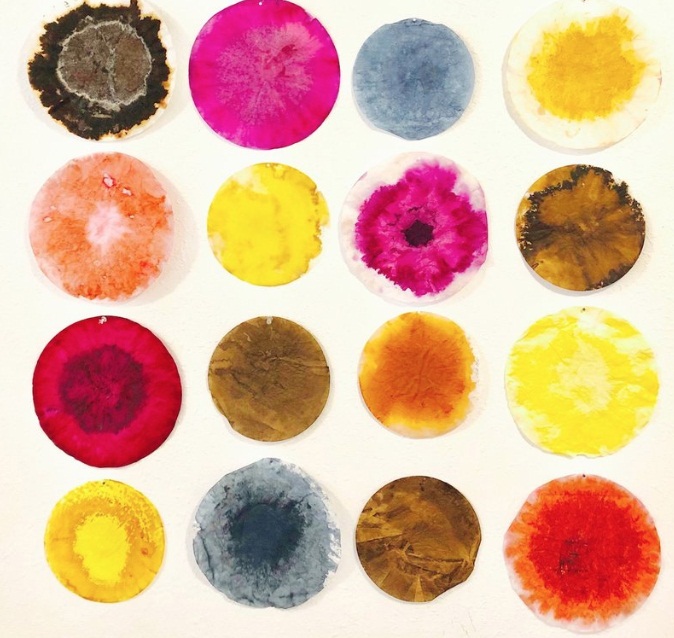 Dye based, watersoluble artists colors that can be used as watercolor paints or ink. An all natural product, free of synthetic preservatives. “Engaged by the promise of artist colors from natural pigments, Judi has been on the alchemical journey ever since. She forages, purchases or grows the materials for the art materials as mindfully and sustainably as possible. The inks and watercolors are made from the fewest ingredients possible allowing the beauty and personality of the source material to come through.” I am enchanted by these colors. This is where art should begin. Look at these colors.
Dye based, watersoluble artists colors that can be used as watercolor paints or ink. An all natural product, free of synthetic preservatives. “Engaged by the promise of artist colors from natural pigments, Judi has been on the alchemical journey ever since. She forages, purchases or grows the materials for the art materials as mindfully and sustainably as possible. The inks and watercolors are made from the fewest ingredients possible allowing the beauty and personality of the source material to come through.” I am enchanted by these colors. This is where art should begin. Look at these colors.
Kiriko
 Very well made and designed canvas waist work apron, made in the USA of 100% cotton with aged copper rivets and leather straps (removable for easy washing). Truly a work apron with several pockets that are perfect for carrying an assortment of tools. “Our premium 12.5 oz selvedge denim is a reproduction of an archived fabric manufactured for Levi’s 501 xx. These are colored using the same indigo dyeing technique that will fade beautifully with wear. ”
Very well made and designed canvas waist work apron, made in the USA of 100% cotton with aged copper rivets and leather straps (removable for easy washing). Truly a work apron with several pockets that are perfect for carrying an assortment of tools. “Our premium 12.5 oz selvedge denim is a reproduction of an archived fabric manufactured for Levi’s 501 xx. These are colored using the same indigo dyeing technique that will fade beautifully with wear. ”
I Sleep Simple
 The simplest beds and bedding—mattresses, toppers and pillows—made from “premium natural materials, handmade by apprenticed craftsmen…contains no fillers, additives or questionable chemicals…With 35 years of experience, we’re able to source the quality materials from producers in the U.S. and Indonesia. Our in-house, hands-on craftsmanship means we oversee and care for your product from start to finish. The simplicity of our raw materials and process allows us to be transparent – ask our team any thing about our products and how they’re made.”
The simplest beds and bedding—mattresses, toppers and pillows—made from “premium natural materials, handmade by apprenticed craftsmen…contains no fillers, additives or questionable chemicals…With 35 years of experience, we’re able to source the quality materials from producers in the U.S. and Indonesia. Our in-house, hands-on craftsmanship means we oversee and care for your product from start to finish. The simplicity of our raw materials and process allows us to be transparent – ask our team any thing about our products and how they’re made.”
Tushy
Does Ecos Air Purifying Paint Make Toxic Chemicals Stick To The Walls?
This past week on my Zero Toxics Facebook Group there was a question about ECOS Air Pure Air Purifying Paints.
I have used many ECOS paint and varnish products, but I’ve never used their “air purifying” products, and I just had a thought about them. They have trade-secret “inert minerals” that “trap” various harmful toxins and “transform each wall in your home into a massive indoor air filter.” This sounds good until you realize that this means THE HARMFUL TOXINS NEVER LEAVE. I wondered what group members think about this, and if anyone has used these products.
Since I can’t write a lengthy response on Facebook that includes multiple images and links, I thought I would respond here and link there.
This is actually a very good question.
I read everything on the webpage and then called ECOS and spoke with Julian Crawford, CEO of the company that is the US Distributor of Ecos Paints. I interviewed him in 2014 when I was doing Toxic Free Talk Radio (listen to our interview here)
Julian answered all of my questions and explained very clearly that the paint TRAPS the chemicals and then HOLDS them on the walls, thereby removing them from floating freely in the air where you can inhale them. The chemicals DO NOT release back into the room.
The web page says “VOC-neutralizing.” To me that means make something that was previously toxic becomes neutral. To ECOS this means that the room becomes neutral of toxic chemicals.
They consider applying this paint turns your room into a giant air filter. And it does, to a degree. It passively and silently is removing chemicals 24 hours a day to the capacity of the paint to hold the chemicals. How long it takes for the paint to reach capacity depends on how much VOCs are in the room. I have always been an advocate of removing chemical exposures as the first choice, but I also know there are times when it’s not possible to remove. A paint like this just might be perfect for a rented apartment, for example, where neighbors are sending toxic VOCs your way. But I would also have on hand a dedicated air filtration unit that removes both particles and VOCs to turn on when you need it.
Here are the reductions in chemicals present in the air of a room following the application of this paint (to read more, Click on tab “Data Sheets” then “APP Performance Test”.
I also noticed that ECOS is participating in the “Declare” program of the International Living Future Institute.
Below is the ECOS Declare statement that lists all the materials that are used in this paint. I’ve rewritten the ingredients along side because I find this format difficult to read.
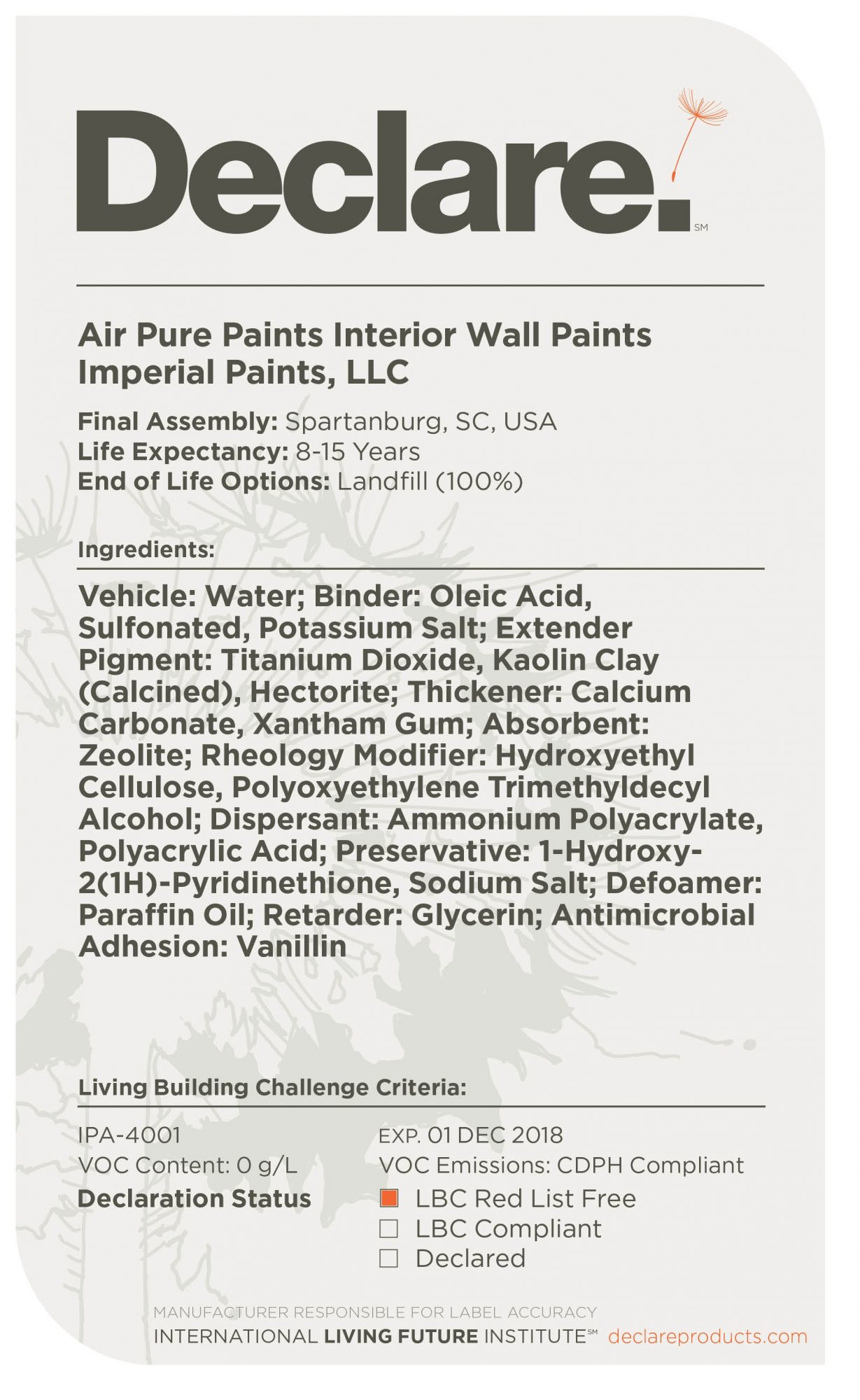 Vehicle: Water
Vehicle: Water
Binder: Oleic Acid, Sulfonated, Potassium Salt
Extender Pigment: Titanium Dioxide, Kaolin Clay (Calcinated), Hectorite
Thickener: Calcium Carbonate, Xanthan Gum
Absorbant: Zeolite, Rheology
Modifier: Hydroxethyl Alcohol Cellulose, Polyoxyethylene Trimethyldecyl Alcohol
Dispersant: Ammonium Polyacrylate, Polyacrylic Acid
Preservative: 1-Hydroxy-2(1h)-Pyridinethione, Sodium Salt
Defoamer: Paraffin Oil
Retarder: Glycerin
Antimicrobial Adhesion: Vanillin
This is an interesting list of ingredients. Ecos does not claim their paints are “natural,” they claim their paints are “odorless.” Julian sent me a box of samples of all their different types of paints and finishes before our interview in 2014 and they certainly were odorless. But if you have a personal need to eliminate petroleum, this isn’t your paint.
It’s interesting to me that on one hand there are petroleum ingredients and on the other hand there are edible food ingredients such as sodium and potassium salts, xanthin gum, and zeolite.
In addition to air purifying paint, ECOS also has
- Air Purifying Primer
- Air Purifying Varnish
- Anti-Formaldehyde Paint
- Anti-Formaldehyde Radiator Paint
See them all at ECOS Air Purifying Products.
Flosspot
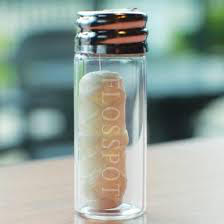 This is the best dental floss I’ve found. Materials are natural and biodegradable and it comes in a refillable glass jar. No plastic here of any kind. There are two types. Flosspot is made from silk worm silk floss with a coating of candelilia wax for a smooth glide between teeth. Flosspot Gold is silk made from corn husks, coated with candelilia wax, and a ginger-mint flavoring. Both are certified by the USDA as biobased products.
This is the best dental floss I’ve found. Materials are natural and biodegradable and it comes in a refillable glass jar. No plastic here of any kind. There are two types. Flosspot is made from silk worm silk floss with a coating of candelilia wax for a smooth glide between teeth. Flosspot Gold is silk made from corn husks, coated with candelilia wax, and a ginger-mint flavoring. Both are certified by the USDA as biobased products.
The Date Lady
 I love dates as a sweetener. Now you can get all the deep sweetness of certified organic dates in a syrup that is easy to use. Comes in it’s own squeeze bottle. “The organic dates in this delectable syrup were sun dried on palm trees deep in the Coachella desert. The fruit from this arid climate results in a golden brown nectar with notes of rich butterscotch that you might want to eat on… everything.”
I love dates as a sweetener. Now you can get all the deep sweetness of certified organic dates in a syrup that is easy to use. Comes in it’s own squeeze bottle. “The organic dates in this delectable syrup were sun dried on palm trees deep in the Coachella desert. The fruit from this arid climate results in a golden brown nectar with notes of rich butterscotch that you might want to eat on… everything.”
Once Again Nut Butter
 A line of nut butters from peanut to hazelnut, some organic, others not. The difficult thing about natural nut butters is they separate. This company has made the first certified organic peanut butter that doesn’t separate.” It’s stabilized, like supermarket peanut butter, but uses organic palm oil instead of unhealthy fats. Like other stabilized peanut butters it contains sugar, but if you want a peanut butter that tastes and spreads like a favorite supermarket brand, but is all organic, this is it. And if you are a fan of that chocolate-hazelnut spread, here’s an organic version (first ingredient organic sugar). These might not be the healthiest nut butters, but if you’re going to eat them, here’s an organic alternative.
A line of nut butters from peanut to hazelnut, some organic, others not. The difficult thing about natural nut butters is they separate. This company has made the first certified organic peanut butter that doesn’t separate.” It’s stabilized, like supermarket peanut butter, but uses organic palm oil instead of unhealthy fats. Like other stabilized peanut butters it contains sugar, but if you want a peanut butter that tastes and spreads like a favorite supermarket brand, but is all organic, this is it. And if you are a fan of that chocolate-hazelnut spread, here’s an organic version (first ingredient organic sugar). These might not be the healthiest nut butters, but if you’re going to eat them, here’s an organic alternative.
Known Supply
Seventh Generation Disinfecting Spray (and Other Alternatives)
Question from JC
Hi Debra,
Thanks for all your efforts to keep everyone safe and healthy!
I was wondering about using the Seventh Generation Disinfecting Spray (lavendar scent) on my son’s mattress where he was sick recently.
His skin would not come into contact with it directly and it dries quickly, but I wanted to double check with someone more knowledgeable regarding its safety!
Thanks again!
Debra’s Answer
Here are the ingredients for this product from the Seventh Generation website
ACTIVE INGREDIENT:
Thymol (present as a component of Thyme Oil): 0.05%.
OTHER INGREDIENTS:
- Water
- sodium lauryl sulfate
- copper sulfate pentahydrate (bluestone)
- citric acid
- sodium citrate
- essential oils fragrance††
Compressed air (propellant).
- Coriandrum sativum (coriander) fruit oil
- cymbopogon martini (palmarosa) oil
- eucalyptus globulus leaf oil
- lavandula angustifolia (lavender) oil
- lavandula hybrida (lavandin) oil
- mentha viridis (spearmint) leaf oil
- pelargonium graveolens (geranium) extract
- pogostemon cablin (patchouli) oil
- vanilla planifolia flower extract
- vanillin
†† Linalool is a component of this fragrance
OK so first, let’s note that the active ingredient is Thyme Oil. That’s what is doing the disinfecting. Just search on “thyme oil” and you’ll find many articles on it’s effectiveness as a disinfectant. So you could simply buy thyme oil and spray it on his bed and it would be like using the herb in food, but stronger. And there are other essential oils that could be used for disinfecting as well.
But back to the product you want to use.
I don’t see any ingredients that are particularly toxic here, they are just unnecessary to do the disinfecting.
I’m not sure about how they have worded the fragrance ingredients. There seems to be an “essential oil fragrance” that contain Linalool along with other essential oils. And then they list some other essential oils. So I’m not really sure about all this fragrance. And linalool might cause skin rashes but…
I don’t have a toxic reason to tell you not to use this product,
My only reasoning is simpler is always better.
Here’s another interesting post I came across while researching this:
KITCHEN STEWARDSHIP: EPA Says Natural Disinfectant as Effective as Bleach
High Cotton Ties
Bryr Studio
2NFrom
 Beautiful handcrafted hats for women and men, bags and accessories made from “upcycled bits of leather, silk, hemp, organic cotton, and precious findings, along with a diversity of fine fabrics, leather, and locally sourced materials from their Northern California Fibershed. This exclusive, limited edition handmade collection is a fine balance of craft and art .” These really are works of wearable art.
Beautiful handcrafted hats for women and men, bags and accessories made from “upcycled bits of leather, silk, hemp, organic cotton, and precious findings, along with a diversity of fine fabrics, leather, and locally sourced materials from their Northern California Fibershed. This exclusive, limited edition handmade collection is a fine balance of craft and art .” These really are works of wearable art.
Recycled Nylon Nontoxic?
Question from Jason
Hi Debra,
I was wondering is clothing with recycled nylon in it such as Tracksuits,outwear jackets &etc are they safe to wear? Reason i ask is i am intrested in buying this Rain jacket https://www.patagonia.com/product/mens-torrentshell-rain-jacket/83802.html.
Thanks.
Debra’s Answer
Here’s a page from Patagonia about their recycled nylon.
Nylon is made from petroleum but it not a major chemical of concern. So I wouldn’t call this fabric “toxic” but it may not be suitable for some people sensitive to petroleum.
My greater concern for a product such as this is waterproofing. Patagonia is a very conscious and responsible company that is working hard to eliminate toxics in an industry where waterproofing has historically been very toxic.
The description says they use ” H2No® Performance Standard ”
You can go to this page to see all their materials and this page to see H2No® Performance Standard specifically. It has a lot of data about how they test for waterproofness but doesn’t say anything about the chemicals, nor does it claim to not be toxic,
I think I’ll give Patagonia a call and see how far I can get with them about full disclosure or materials.
I’ll report back next week.
For now, recycled nylon OK, waterproofing UNKNOWN.
UPDATE 12 March 2019
As promised above, I did call Patagonia customer service at 800) 638-6464.
I have not recommended Patagonia clothing in the past because of their use of toxic waterproofing. While Patagonia has taken many steps to improve the environmental impacts of their products, human health does not seem to be as much a priority.
If you do want to purchases a Patagonia product, please call customer service and find out what type of waterproofing is used on the product, which is NOT clearly disclosed even on website descriptions.
So this particular jacket description says that it has a DWR (durable water repellant) finish. Sounds like it will keep you nice and dry, but what they don’t tell you is that DWR waterepellants are made from fluorinated chemicals (think Teflon).
I went to their Durable Water Repellant page . It says, “Patagonia has long relied on a DWR with perfluorinated compound (PFC) but we have been searching diligently for an alternative because of its harmful environmental impacts.” No mention of health effects to their customers.
Then later on the page they say “And for the Fall 2019 season, we are pleased to introduce our first products that use PFC-free chemistries.”
Customer service told me the above statement applies to only a few products, and this jacket in question is NOT one of them. So it has PFC waterproofing.
READ MORE ABOUT PERFLUORINATED CHEMICALS (PFCs) ON ZERO TOXICS KNOWLEDGE BASE.
Choosing a Toxic-Free Range
Question from Andie
Hi Debra,
So grateful for you and loving your new website! Congrats!
My question: we desperately need a new oven and don’t know what to do!
Is it safer for us to purchase a floor model, that’s been sitting in an open room for a time? Or will it still outgas when it’s home and used for the first time(s)?
Really do not know what to do about ovens and this issue. Thank you!
Debra’s Answer
I wish I could just tell you to go purchase a certain brand but haven’t found one yet that has been designed to be toxic-free. This is one of those items where I need to educate the industry. That’s part of why I’m establishing my Zero Toxics website.
The last time I purchased a stove, I purchased a floor model at Lowe’s. And it was fine.
The last time I purchased a refrigerator was at a Sears Appliance Outlet. Just type that into your favorite search engine and your local outlet will come up. Also try Sears Scratch and Dent Appliances.
These appliances have been returned or refurbished or scratched during shipping. They all work just fine but have minor imperfections. I bought my last washer/dryer at a Sear Appliance Outlet store too.
So that would be the first place I would go.
Fruit & Vegetable Wash Safe?
Question from LM
Hi Debra,
I buy organic produce but I still feel like I have to wash it. Are the “non-toxic” fruit and vegetable washes safe? I’m reading the ingredients for a popular one by ECOS that sells at my local food co-op and the ingredients are:
- Water
- Alcohol Denatured. (corn-derived solvent)\
- Decyl Glucoside (plant-powered surfactant)
- Potassium Sorbate (food grade preservative)
- Citric Acid (plant-powered pH adjuster)
Comments? Thanks Debra!
Debra’s Answer
I can’t make a case for this product being “toxic.” It certainly doesn’t contain any of the major chemicals of concern. So in that sense I would have to call it toxic-free.
But here’s my concern. It’s basically an industrial product made from industrial ingredients. Yes the source material for these ingredients are plants, and they appear to be organic (at least there is an organic logo on the label, though nothing says “organic” in the ingredients list.
So these plants are put into a factory and broken down in some way into industrial ingredients that are then combined in a factory into a wash that you are going to push on your organic vegetables and fruits.
Just look at this for a moment. You’ve purchase organic produce. Now you are going to clean it with industrial ingredients. The first ingredient is water. Hmmmm. What kind of water. Probably tap water. If you are buying organic produce you probably are using filtered water. We don’t know what their water is. They are not telling us.
Is this really a necessary product? What is it that you want to remove from your organic produce with this product?
I just rinse my organic produce with filtered water. I’ve never used produce washes and don’t find them necessary.
UPDATE 3/17/19
I just found a very long list of certified biobasaed fruit and vegetable washes.
If this is a product you are interested in, this list would be a good place to compare what percentage of their ingredients are not petroleum.
Nature’s Fabrics
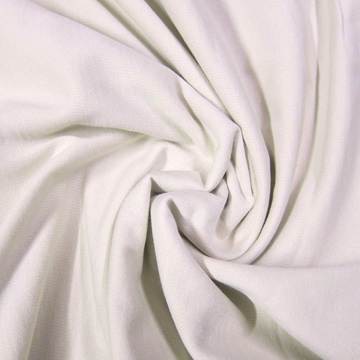 A great selection of natural fiber and fabrics, including cotton, hemp, wool, and bamboo, many organic. They also carry some synthetics, so choose appropriately. Many weaves and colors and some hard-to-find natural fiber blends, such as heavy cotton/hemp fleece. “We are a small family business living on a farm in NW PA. We strive to bring you the finest fabrics at reasonable prices.” The ordering process is a little awkward. To find description and price, find the fabric you want and click on “add to cart” to get to the description page. Then choose a “cut” and a quantity. So, for example, if you chose 1 yard and quantity 3, they will send you 3 continuous yards.
A great selection of natural fiber and fabrics, including cotton, hemp, wool, and bamboo, many organic. They also carry some synthetics, so choose appropriately. Many weaves and colors and some hard-to-find natural fiber blends, such as heavy cotton/hemp fleece. “We are a small family business living on a farm in NW PA. We strive to bring you the finest fabrics at reasonable prices.” The ordering process is a little awkward. To find description and price, find the fabric you want and click on “add to cart” to get to the description page. Then choose a “cut” and a quantity. So, for example, if you chose 1 yard and quantity 3, they will send you 3 continuous yards.
Blue Q
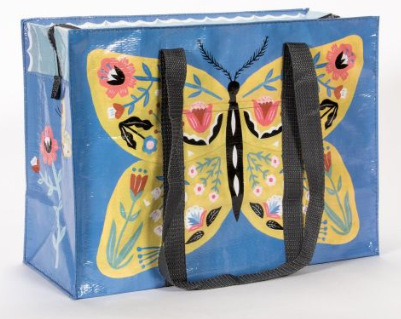 Totes and other bags made from 95% recycled polyethylene rice sacks (don’t know the other 5% but it’s nothing that I can smell). These bags are unusually fun and functional. I have a shoulder tote and I love it. The nontoxic material is waterproof so it protects the contents of the bag when it’s raining, the totes are generous in size with a big zipper that is easy to open and close, and straps long enough to carry on my shoulder. I take mine to the farmer’s market every Sunday. Bold colorful designs. NOTE: There are other products on this site. I am only recommending the bags.
Totes and other bags made from 95% recycled polyethylene rice sacks (don’t know the other 5% but it’s nothing that I can smell). These bags are unusually fun and functional. I have a shoulder tote and I love it. The nontoxic material is waterproof so it protects the contents of the bag when it’s raining, the totes are generous in size with a big zipper that is easy to open and close, and straps long enough to carry on my shoulder. I take mine to the farmer’s market every Sunday. Bold colorful designs. NOTE: There are other products on this site. I am only recommending the bags.
Dizolve
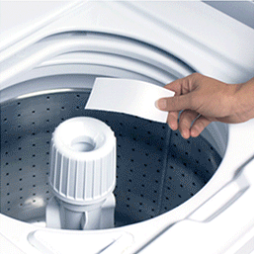 A simple movie-timed sized strip “loaded with eco-friendly, ultra-concentrated cleaning power” brings nontoxic detergent to laundry. Ingredients were chosen specifically to be free of toxics—no dyes, chlorine, dioxane, parsons. Fragrance-free option.
A simple movie-timed sized strip “loaded with eco-friendly, ultra-concentrated cleaning power” brings nontoxic detergent to laundry. Ingredients were chosen specifically to be free of toxics—no dyes, chlorine, dioxane, parsons. Fragrance-free option.
POH Personal Oral Hygiene
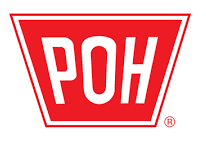 Dental floss and toothbrush used by Preventive Dentists. “These are Dentists who have studied the science and art of preventing disease from ever taking hold in the mouth. These Dentists do not want to fill another cavity, or pull another diseased tooth…The science behind our toothbrushes and dental floss was developed by a Medical Doctor, not a Dentist. The products depend on this science…Our toothbrush bristles are very thin with carefully polished tips. This makes the bristles very soft and gentle, compared to other toothbrushes. Since this part of the toothbrush is actually what is useful, we focus our attention there…Our floss is very different, too. Its many thin strands of nylon enable our floss to disrupt and disorganize the bacterial plaque, which is the key to preventing tooth decay and gum disease.” One of my longtime readers recommended this method. She has been using it with success for years. Products are made from nylon.
Dental floss and toothbrush used by Preventive Dentists. “These are Dentists who have studied the science and art of preventing disease from ever taking hold in the mouth. These Dentists do not want to fill another cavity, or pull another diseased tooth…The science behind our toothbrushes and dental floss was developed by a Medical Doctor, not a Dentist. The products depend on this science…Our toothbrush bristles are very thin with carefully polished tips. This makes the bristles very soft and gentle, compared to other toothbrushes. Since this part of the toothbrush is actually what is useful, we focus our attention there…Our floss is very different, too. Its many thin strands of nylon enable our floss to disrupt and disorganize the bacterial plaque, which is the key to preventing tooth decay and gum disease.” One of my longtime readers recommended this method. She has been using it with success for years. Products are made from nylon.
Toxic-Free Living as an Act of Love
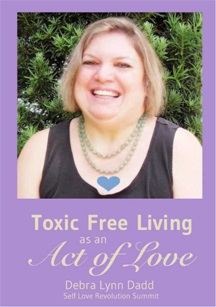 In 2015 I was invited to speak at a summit called Self-Love Revolution. Of course, I spoke on the subject of Toxic Free Living as an Act of Love.
In 2015 I was invited to speak at a summit called Self-Love Revolution. Of course, I spoke on the subject of Toxic Free Living as an Act of Love.
Since it’s Valentine’s Day this week, I thought I would offer you the giveaway as a Valentine’s gift.
I hadn’t read it since then, but I loved reading it just now. It warmed my heart and I want to share it with you.
Here is an excerpt from the ebook.
What Self-Love Means to Me
I want to tell you a story about something that laid the foundation for me about what love is. It happened many years ago, in 1985, when I was 29 years old. It was one year after my first book about toxics in consumer products was published—actually it was the first book about consumer products ever published.
Now I have to correct this story. I told it one way in the Self Love Revolution Summit interview, but as I am working on this giveaway, I am realizing some of the detailed were incorrect in my memory that day.
I was living in San Francisco at the time, not Marin County, and I decided to go for a drive. Some days, you know, you just feel like you just have to take the day off. And I got into my sporty little Volkswagon GTI and I just started driving.
I drove north over the Golden Gate Bridge and just started driving the backroads up into Sonoma County where they all have the vineyards, and I ended up in a little bookstore. As I was looking at books in the bookstore, a book fell off the shelf into my hand. It fell off the shelf into my hand, honestly.
The book was The Road Less Traveled by M. Scott Peck. And I bought it. I thought, “If the book is going to fall off the shelf into my hand, I better buy it and I better read it.”
I just want to share a little portion of the book to you because it touched my heart. And here it is:
When we love something, it is of value to us. And when something is a value to us, we spend time with it, time enjoying it and time taking care of it.”
Observe a teenager in love with his car and note the time he would spend admiring it, polishing it, repairing it, tuning it. Or an older person with a beloved rose garden and the time spent pruning and mulching and fertilizing and studying it.”
When we love, our love becomes demonstrable or real only through our exertion, through the fact that for that loved one, we take an extra step or walk an extra mile.”
Love is not effortless. To the contrary, love is effortful.
I have probably read this a hundred times in my life. I always come back to this. The book is still available. It’s such a beloved book. It’s a classic book.
I had never heard anything like this before. I always thought love was romantic. It’s what you see in the movies and it happens between a man and a woman or a mother and a child or something. But this was such a universal definition that it’s like . . . when you really love, when you truly, deeply love, it sparks you to want to care for that which you love.
And so if you don’t love yourself, you won’t take care of yourself. It’s really love that is the motivating thing within you that makes you want to be the best that you can be, to make you want to take care of your body, to make you want to do all those self-exploration things, to find out who you are and how you can be a better person. It comes from love. And we all have that. And so health comes from loving yourself and taking care of yourself is the result.
You feel better and then you get reinforced and you want to continue to do the actions once you start taking them.
It turns out that love has many health benefits, including:
* longer life
* fewer colds & flu
* better blood pressure
* healthier eating habits
* better stress management
* less depression
* less pain
* faster healing
And more…
Here are some articles with more information on love and health:
THE GOOD INSIDE: 5 Surprising Health Benefits of Love
WEB MD: 10 Surprising Health Benefits of Love
New Survey Asks California Women About Consumer Product Use to Determine Exposure to Toxic Chemicals

A new study is looking to survey about six hundred women across California about their use of consumer products “to better learn the types of products women use, how often women use them, and how women choose the products they use. This information will help us understand exposures to chemicals in consumer products.
Responses will be used to help the State of California learn how to protect people’s health.
If you live in California and would like to participate in the survey, click here.
I just took it myself. Just taking the survey actually made me more aware of what I use and don’t use. They also ask question about things like what you look for in making your product choices, which gives you an opportunity to look at that too. They included “scent” as a reason you would purchase but not “unscented.” I typed in unscented because I think they will consider “scent” to mean because you want scent, not scent/unscented as an issue. Ah later they ask if the personal care products you use are scented, fragrance-free, or not sure.
They also ask where you purchase your products (natural food store wasn’t included but there was a space where I could type it in).
Doing this survey really showed me how few products I actually use and also showed me how many products-of-concern there are.
Coracao Chocolate
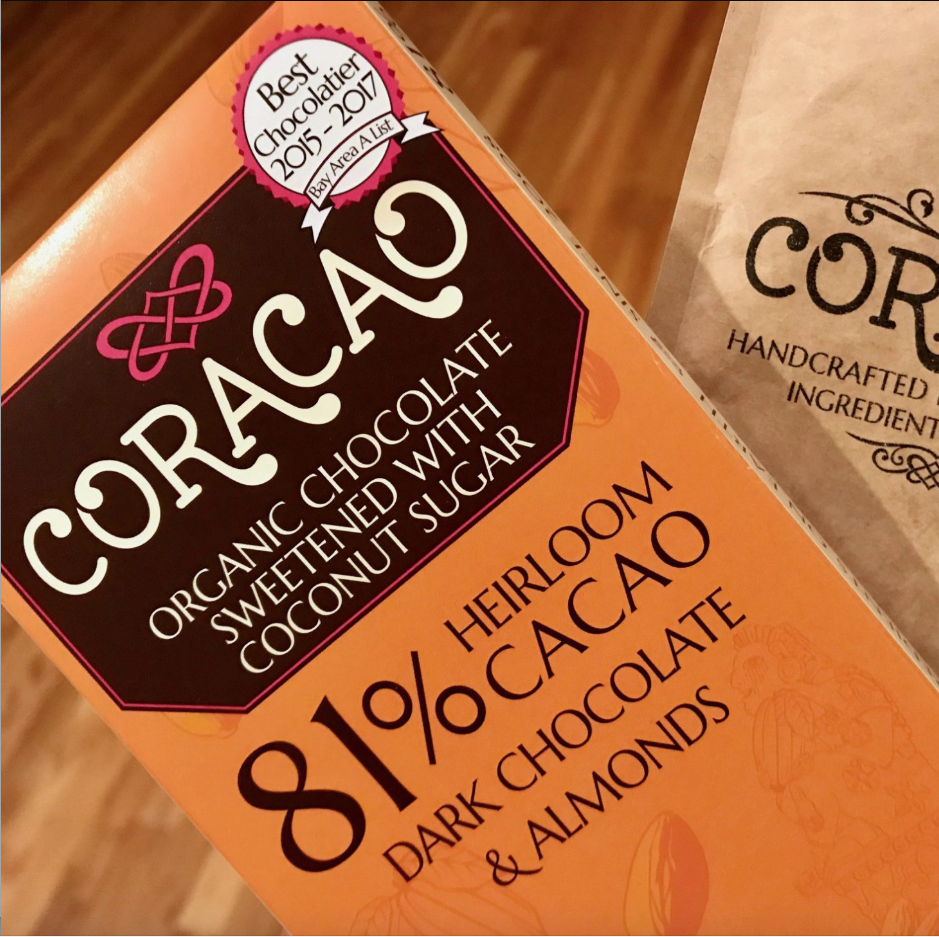 I found these chocolates at my local community food store, who often carries products not found elsewhere. Simple and delicious organic HEIRLOOM chocolate sweetened with coconut sugar. 81% dark heirloom chocolate comes in bars in several flavors, and they also have boxes filled with pieces in flavors you would recognize from a candy store. Great for gifts.
I found these chocolates at my local community food store, who often carries products not found elsewhere. Simple and delicious organic HEIRLOOM chocolate sweetened with coconut sugar. 81% dark heirloom chocolate comes in bars in several flavors, and they also have boxes filled with pieces in flavors you would recognize from a candy store. Great for gifts.
Cria
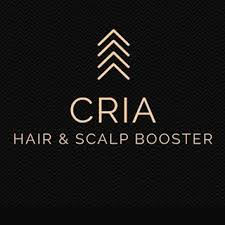 This is a unique and interesting product designed to “combat hair loss and hair thinning and improve overall hair health.” It’s made with only four natural ingredients, including an herb from the Amazon rainforest. “When applied to the scalp, CRIA’s powerful antioxidants neutralize the toxins while the essential nutrients nourish the follicles. CRIA’s Sesame Oil in particular, supports blood circulation. This helps balance the body’s PH, rejuvenate your weakened follicles, minimize hair thinning and create new hair with every application.”
This is a unique and interesting product designed to “combat hair loss and hair thinning and improve overall hair health.” It’s made with only four natural ingredients, including an herb from the Amazon rainforest. “When applied to the scalp, CRIA’s powerful antioxidants neutralize the toxins while the essential nutrients nourish the follicles. CRIA’s Sesame Oil in particular, supports blood circulation. This helps balance the body’s PH, rejuvenate your weakened follicles, minimize hair thinning and create new hair with every application.”
Alex Crane
Aizome Bedding
 Sheets and pillowcases “developed in Japan with dermatologists to give your body and skin a restful sleep experience free of any synthetic materials or irritants.” It is entirely organic and made from only two plants [cotton and indigo] without hidden extras: No polyester, no heavy metals, no micro-plastics, no formaldehyde, no gross stuff.” This bedding eliminates toxic dyes while still giving you color and style. Their blog the-bed-blog has posts about toxic dyes.
Sheets and pillowcases “developed in Japan with dermatologists to give your body and skin a restful sleep experience free of any synthetic materials or irritants.” It is entirely organic and made from only two plants [cotton and indigo] without hidden extras: No polyester, no heavy metals, no micro-plastics, no formaldehyde, no gross stuff.” This bedding eliminates toxic dyes while still giving you color and style. Their blog the-bed-blog has posts about toxic dyes.
Shop Vustra
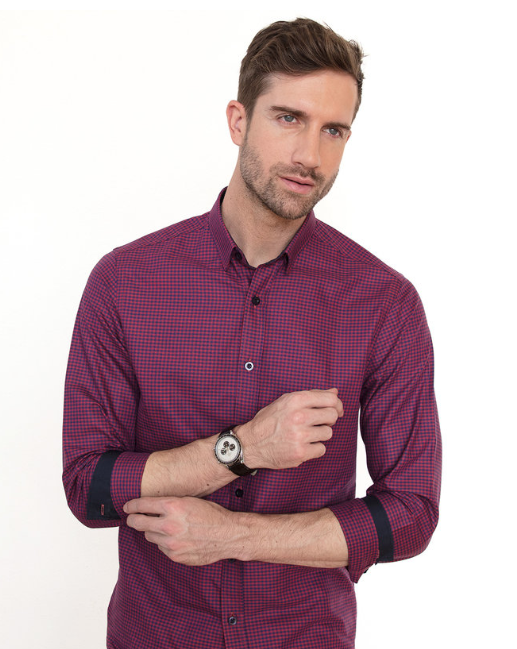 100% organic, premium quality shirts for men. “We only use low impact organic dyes, pure, soft at first touch 100% GOTS certified organic cotton and every stitch is organic too! we ensure that our shirts are made with fashion-forward European style and feature the most intricate style details. Our entire collection is made with 100% premium Italian and Turkish organic cotton that looks and feels luxurious. Our collection showcases colors and textures which are carefully developed to provide timeless, elegant and yet stylish options so you can choose to wear fashion with values.”
100% organic, premium quality shirts for men. “We only use low impact organic dyes, pure, soft at first touch 100% GOTS certified organic cotton and every stitch is organic too! we ensure that our shirts are made with fashion-forward European style and feature the most intricate style details. Our entire collection is made with 100% premium Italian and Turkish organic cotton that looks and feels luxurious. Our collection showcases colors and textures which are carefully developed to provide timeless, elegant and yet stylish options so you can choose to wear fashion with values.”
Least Toxic Spray Foam Insulation?
Question from Lora
Hi Debra,
What would be the least toxic whole house spray foams to use for insulation. the type you would spray in your exterior walls (and interior?). the type that expand when you spray in walls. my husband just wants to get something from home depot or lowes and i’m really stressing about this and possible off-gassing for years as i have MCS.
What should I use?
Debra’s Answer
Here are some answers to your question that I found online, written by green building experts.
BUILD DIRECT: Is There an Eco-Friendly Spray Foam Insulation?
This post pretty much answers the question with a well-explained NO. However another expert has a different viewpoint
GREEN BUILDING ADVISOR: Are There any “Green” Non-VOC Spray Foams?
This expert asserts that the finished, cured spray foam is NOT harmful to health but the installation of the foam is hazardous. And she admits that some foam is incorrectly installed and therein lies the problem.
MY CHEMICAL-FREE HOUSE: Zero VOC Insulation
Here you will find all the Zero VOC options, both blow-in and batt. Great review with the pros and cons of fifteen options. I think you’ll find your answer here.
That said, readers, if you have any suggestions from your own experience, please post them here.
Organic Attire
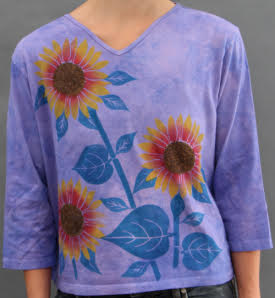 I found this small business at my local Gravenstein Apple Fair. I saw a black shirt with autumn leaves falling whimsically down the front and then was delighted it was made from organic cotton. It’s one of my favorite shirts of all time. This artist-owned and operated business provides their customers “with beautiful and unique clothing made in a sustainable manner. Comfort is also a prerequisite.” Beautiful and comfortable, Yes. This clothing is just that. Much information about their printing methods and materials. Dedicated organic, natural and nontoxic. Clothing for women only.
I found this small business at my local Gravenstein Apple Fair. I saw a black shirt with autumn leaves falling whimsically down the front and then was delighted it was made from organic cotton. It’s one of my favorite shirts of all time. This artist-owned and operated business provides their customers “with beautiful and unique clothing made in a sustainable manner. Comfort is also a prerequisite.” Beautiful and comfortable, Yes. This clothing is just that. Much information about their printing methods and materials. Dedicated organic, natural and nontoxic. Clothing for women only.
Lead-free door knobs
Question from Terry
Hi Debra,
Do lead free door knobs exist?
Debra’s Answer
This is a very difficult question.
To answer this question thoroughly you would need to know:
* the types of doorknobs available
* the materials used to make each type
And then you would need to review each one and choose those that are not made with lead.
Alternatively, you could test each doorknob for lead using an XRF machine.
But neither of these methods are practical.
There are thousands of available doorknobs, and materials disclosure is not required by law.
One man tested all his doorknobs for lead using XRF. After finding out they all tested high, it turned our they were plated with nickel. “The XRF analyzer was seeing through this layer to the lead beneath. Likely this lead would never transfer to our hands, unless the nickel wears through.” http://blog.mikemccandless.com/2010/06/finding-lead-in-your-house.html
And even if the lead DID get on your hands lead does not go through skin into your body.
BUT if you were to touch a doorknob with lead and then you picked up a sandwich, the lead would get on the sandwich. If you then ate the sandwich, the lead on the sandwich would get into your body and you would have a lead exposure.
So that would be the exposure. You would touch something that contains lead, like a doorknob, then eat some fried chicken and lick your fingers and then you would be exposed to lead.
There’s a great website called “How Products are Made”, which gives the history, materials and manufacturing information on a wide variety of products we use every day. I looked up Doorknob. In the past, doorknobs were made from wood, glass, china, or bronze. Today more doorknobs are made of metal. The most common type of metal is brass. But we don’t touch the brass—doorknobs are coated with various inert metals and electroplated with semiprecious materials.
I could find only one article that expressed any concern about Lead in doorknobs:
https://windowanddoor.com/article/marchapril-2010/is-lead-hardware-a-concern
And only one website that sells “Lead-free” door knobs.
https://www.houseofantiquehardware.com/lead-free-crystal-knobs-pulls. Even though one blogger stated, “lead-free door knobs are readily available,” I couldn’t find them anywhere else but here.
In the forty years I’ve been researching things toxic and toxic-free this is the first time it has come up as an issue. I always just buy whatever doorknobs I like. It’s not the greatest exposure to lead.
Wash your hands before you eat (as you should do anyway because of germs) and any lead your hands may have picked up along the way will be gone.
Puritas Furniture Company
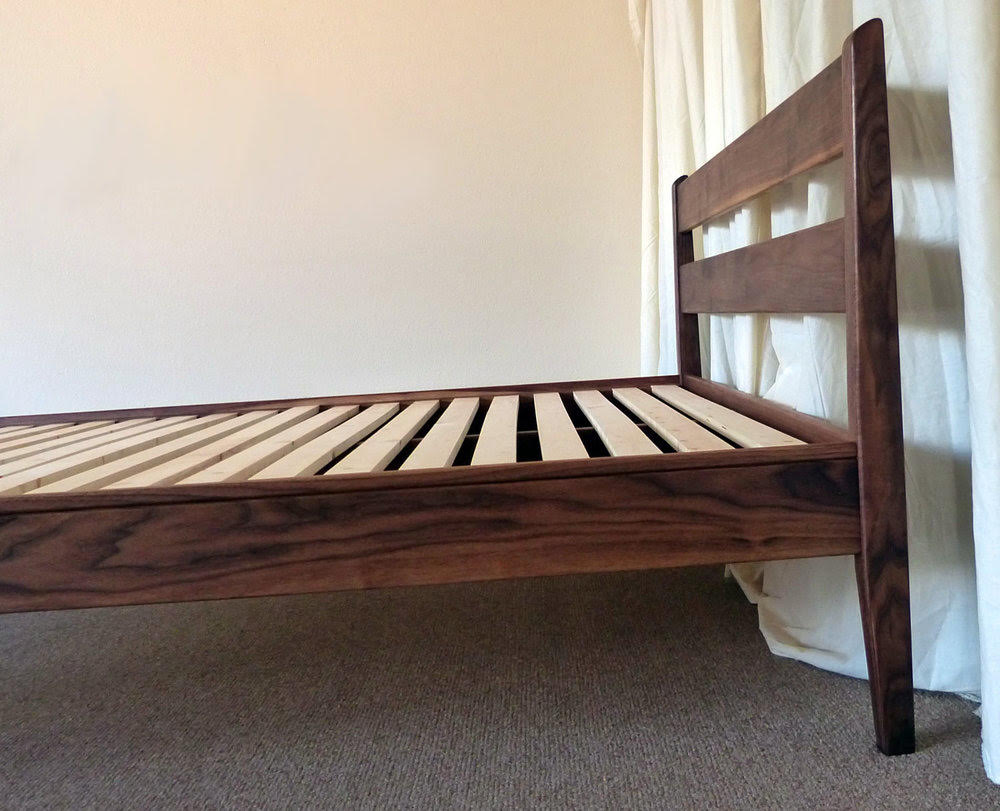 Solid wood slat bedframes made by a small, low impact, family owned woodworking and design studio immersed in and inspired by the beauty of the natural world. ”We believe it is a revolutionary and deeply caring act to support local and regional craftspeople and the communities in which we all live. We strive to provide you with beautifully designed and finely crafted classic hardwood furniture while keeping the footprint low…Our hardwood lumber comes from carefully managed North American forests from producers who follow the strictest standards in order to ensure long term viability through sustainable harvesting and management practices. Our native west coast softwoods are sourced from carefully managed private lands and we can accommodate requests for reclaimed and salvaged wood options as well…We promote the use of non-toxic finishes and healthy environments with our preferred finish being an all-natural, zero-voc combination of beeswax, linseed oil, and pine resin that is not only non-toxic to the maker and the end user, it is also easier on the environment in it’s raw ingredients and production.”
Solid wood slat bedframes made by a small, low impact, family owned woodworking and design studio immersed in and inspired by the beauty of the natural world. ”We believe it is a revolutionary and deeply caring act to support local and regional craftspeople and the communities in which we all live. We strive to provide you with beautifully designed and finely crafted classic hardwood furniture while keeping the footprint low…Our hardwood lumber comes from carefully managed North American forests from producers who follow the strictest standards in order to ensure long term viability through sustainable harvesting and management practices. Our native west coast softwoods are sourced from carefully managed private lands and we can accommodate requests for reclaimed and salvaged wood options as well…We promote the use of non-toxic finishes and healthy environments with our preferred finish being an all-natural, zero-voc combination of beeswax, linseed oil, and pine resin that is not only non-toxic to the maker and the end user, it is also easier on the environment in it’s raw ingredients and production.”
Dr. Cowan’s Garden
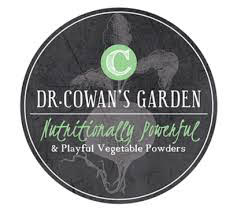 “Nutritious & delicious vegetable powders” made from “organic or beyond-organic vegetables…Some of the healthiest people who ever lived – from Native Americans to traditional Africans – consumed a large diversity of plants. Our vegetable powders make it easy for you to diversify your vegetable consumption…Miron violet-glass jars filter the aging wavelengths of light to protect the vibrancy of our powders for years.” I can’t wait to try these powder made from diverse varieties. How can I resist three-beet powder!
“Nutritious & delicious vegetable powders” made from “organic or beyond-organic vegetables…Some of the healthiest people who ever lived – from Native Americans to traditional Africans – consumed a large diversity of plants. Our vegetable powders make it easy for you to diversify your vegetable consumption…Miron violet-glass jars filter the aging wavelengths of light to protect the vibrancy of our powders for years.” I can’t wait to try these powder made from diverse varieties. How can I resist three-beet powder!
Creative Cables
A Wild Soap Bar
Terra Thread
 A diverse collection ofaffordable bags made at a Fair Trade Certified Factory using family grown Organic Cotton. “We start with 100% organic cotton, then, we color our fabric using GOTS certified dyes. All of our products are made in a Fair Trade Certified Factory. We guarantee fair wages, good working conditions, no child or forced labor, and a democratic workplace for our bag makers.” Lead-free zippers.
A diverse collection ofaffordable bags made at a Fair Trade Certified Factory using family grown Organic Cotton. “We start with 100% organic cotton, then, we color our fabric using GOTS certified dyes. All of our products are made in a Fair Trade Certified Factory. We guarantee fair wages, good working conditions, no child or forced labor, and a democratic workplace for our bag makers.” Lead-free zippers.
Soapply
Rising Springs
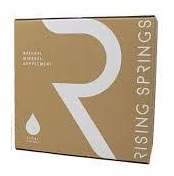 Spring water delivered to your door. “Tested pure to parts per quadrillion (a million billions!). Zero contaminants of any kind…The only natural source water in the US packaged as a natural mineral supplement – whole, live and mineral-rich…Rising from 2.2 miles deep under its own tremendous and constant pressure.”
Spring water delivered to your door. “Tested pure to parts per quadrillion (a million billions!). Zero contaminants of any kind…The only natural source water in the US packaged as a natural mineral supplement – whole, live and mineral-rich…Rising from 2.2 miles deep under its own tremendous and constant pressure.”
New Study Finds Toxic Nonstick Chemicals in Oral B Dental Floss
A new study from the Silent Spring Institute and Public Health Institute found higher levels of PFHxS (perfluorohexanesulfonic acid), a PFAS, in women who flossed with Oral-B Glide compared to those who didn’t. Other brands of floss may also use these chemicals (which may or may not appear on the label).
“This is the first study to show that using dental floss containing PFAS is associated with a higher body burden of these toxic chemicals,” lead author Katie Boronow, a scientist at Silent Spring.
My interest in this study is it shows that even small exposures to toxic chemicals not only can but DO end up in bodies in measurable amounts.
Last year the State of Washington and the City of San Francisco banned use of PFAs in single use food service ware.
USA TODAY: Oral-B Glide Floss Tied to Potentially Toxic PFAS chemicals, Study Suggests
HEALTHLINE: Is Oral-B Dental Floss Really Toxic? What You Need to Know
Toxic-Free Dental Floss
First I just want to say that dental floss is not one of your greatest exposures to toxic chemicals. It’s not a product I’ve focused on in the past.
Note in the comments below one reader wrote it saying she had contacted P+G, who sent her a document that shows PFAs are NOT an ingredient in their Glide dental floss. The study did not even look at the ingredients in the product. It was rather a study that showed that select group of people who had PFAs in their body used Glide dental floss. So we can’t say that there are PFAs in Glide dental floss.
But if you are concerned about this possible exposure, let me give you my thoughts about products that are unlikely to contain PFAs or any other industrial chemicals as ingredients.
Rather than simply give you a list, I want to show you my process of how I came up with this list.
First I went to my new Zero Toxics Products + Materials Matrix. Even though I haven’t written the ratings specifically for dental floss yet, these ratings do show how I think about products and how I quickly evaluate products that are likely to be toxic-free.
Here are quick notes of what the ratings would be for dental floss:
ZERO TOXICS “A+” RATING
Dental floss made from certified organic product where all materials and the manufacturing facility and process are certified organic.
ZERO TOXICS “A” RATING
Dental floss made from certified organic or sustainable materials that come from renewable plants or animals, or abundant minerals.
ZERO TOXICS “B” RATING
Dental floss made from renewable plants or animals, or abundant minerals. Toxic chemicals may be used to some degree in production or processing. May contain residues of toxic contaminants such as pesticides or pollutants.
ZERO TOXICS “C” RATING
Dental floss made from petroleum-based ingredients. May not be suitable for people with Multiple Chemical Sensitivities or other high-risk groups.
ZERO TOXICS “D” RATING
Known to cause illness or injury with repeated exposure over time—products or materials made with one or more chemicals of concern.
ZERO TOXICS “F” RATING
Known to cause immediate harm and may even lead to death—made with one or more chemicals of concern
Here are some dental flosses I looked at, with their Zero Toxics Matrix ratings and materials given in their descriptions:
B – Eco-Dent Gentlefloss Premium Dental Floss, Mint
100% vegan waxed, no information on material used for floss itself
B – Dental Lace | Silk Dental Floss with Natural Mint Flavoring
This one is made from 100% silk and Candelilla wax.
B – Desert Essence Tea Tree Oil Floss
Coated with natural beeswax with added antiseptic tea tree oil, material of floss unknown
B – RADIUS – NATURAL SILK FLOSS
Made from 100% silk and Candelilla wax.
B – COCOFLOSS Coconut-oil infused luxury dental floss
This one is made from microfibers infused with coconut oil. Says right in the description “no PFA.”
B – Dr. Ginger’s All Natural Coconut Oil & White Charcoal Dental Floss
Made with coconut oil, xylitol and white charcoal, no information given on fiber of floss.
The above list all happened to end up with my Zero Toxics “B” rating.
It seems that many mass market brand dental flosses may contain PFAs to make them glide between teeth more easily. Any brand that does contain PFAs would fall into my Zero Toxics “D” rating—not an immediate poisoning but could build up to be dangerous over time with regular use.
This isn’t a complete review or writeup on all dental floss, just something quick to get started with if you are considering changing your brand of dental floss.
Round Cake Pan That Is Non Toxic
Question from Naomi
Hi Debra,
I have been looking for a round glass cake pan like the ones Pyrex used to make but they do not seem to be available anymore from any company. I found a ceramic one on Amazon. I tried to search this company on your website but did not find any info. Can you let me know what you think of it ? If you have any other suggestions, please let me know
https://www.greenlife-cookware.com/about
For us, healthy cookware isn’t an option, it’s a necessity. That’s why we only use Thermolon™, the first 100% natural ceramic non-stick coating.
Traditional non-stick coatings are manufactured with chemicals that are harmful to you and the environment. When overheated, these coatings release toxic fumes. Thermolon™ is high heat resistant, which means it won’t chip or peel when overheated the way traditional coatings do.
At GreenLife™, we value the health of you and your family. That’s why we made it our mission TO CREATE PRODUCTS 100% FREE OF PFAS, PFOA, LEAD and CADMIUM.
Thanks so much.
Debra’s Answer
This looks like it might be close to what you are looking for. It’s 3 quarts, which I think is too big, but you don’t need to fill it.
https://www.bedbathandbeyond.com/store/product/3-quart-borosilicate-glass-baking-dish-in-clear/1044168773?skuId=44168773&&enginename=google&mcid=PS_googlepla_nonbrand_bakeware_online&product_id=44168773&adtype=pla&product_channel=online&adpos=1o4&creative=224484706032&device=c&matchtype=&network=g&mrkgadid=558423881&mrkgcl=609&rkg_id=0&gclid=Cj0KCQiA-JXiBRCpARIsAGqF8wWzgYfkOGjI8ld9RhzDRB7CGfRnqJkeSQMKVL4EBb24CgCXa52ChPgaAlZzEALw_wcB&gclsrc=aw.ds
Try searching on “glass baking dish” rather than “cake pan” and you’ll find quite a few.
I took a look at Thermolon back in 2008, and found that the ingredeints are a trade secret, but it “is based on silica, which of course originates from sand.” Other raw materials in the coating are oxygen and carbon. During the process of making Thermolon, the carbon is eliminated. So it’s basically some type of glass. I had a pdf they sent me with a statement about the composition of the finish, but it has gotten lost over the years. I’ll research it again and see if I can find out more.
Thermalon may be fine. I just don’t know because the materials are a trade secret/
Toxic Airstream Trailers
For years I’ve been hearing that Airstream Trailers are less toxic that other brands of trailers.
That may have been true at some time in the past, but it’s not true today.
Over the weekend Larry and I went to an Airstream showroom and the toxic odor in the new models was terrible.
Airstream trailers have a classic aluminum frame with a very beautiful design, but the materials used in today’s Airstream interiors are the same toxic materials used in other trailers.
So if you want an Airstream, look for an old one and renovate the interior with nontoxic materials. Don’t get a new one.
Safety of Motorhomes
Question from Kim G
Hi Debra,
I’m looking into purchasing a Class C motorhome (as a tiny home on wheels) for full-time travel but I’m concerned with the level of toxic materials used in construction. I’ve thought of purchasing an older model so that I can do renovations with non-toxic materials but I’m not quite sure where to begin my search.
Any advice on the topic of motorhomes is much appreciated!
Debra’s Answer
Well as it happened, Larry and I were just discussing the same thing this week! So we put this on the top of our to-do list and I can give you some up-to-the minute information.
We went out looking at motorhomes at a large RV dealer so we could see a lot of options.
It sounds like you already know that you want a Class C.
We had already looked at some new motorhomes and found them to be too toxic. But then we looked at some that were 2007 returns that had been take out of rental service and each one of them was acceptable to me. So the materials were about 11 years old.
I didn’t like the design aesthetic, so we would be remodeling anyway, but it wasn’t toxic.
So if anyone reading this wants to buy a relatively nontoxic home-on-wheels, look for a motorhome circa 2007 or earlier. None of the motorhomes I looked at had any fragrance, cigarette smoke, pesticides, pet smell or other human-use odors that I could detect, so this is a viable option.
We’re going to continue our search on lots and on Craig’s List. EBay also has them but I wouldn’t buy one sight-unseen. You can’t tell if there’s something toxic from looking at a photo.
WHY WE ARE LOOKING AT MOTORHOMES INSTEAD OF TRAILERS OR TINY HOUSES
We’ve been researching all these options for almost two years now.
There are a lot of factors that go into choosing a tiny house vs a trailer vs a motor home.
The main thing that has kept us from moving forward with a tiny house or trailer is where to park it. You can’t park them on the street. You have to park them in a trailer park, which can cost $1000/month or more depending on where you are. And we’ve checked out trailer parks. Virtually all of them had people cooking outdoors with lighter fluid, the smell of which was all over the trailer park at dinner time.
On the other hand, you can park a motorhome on the street and sleep in it for up to 72 hours. You can park them in parking lots. You can purchase unbuildable land and park them on your land. There is a lot more freedom regarding where you can put them.
In our case, we will be parking ours on family property near Larry’s mom’s house. And then when the time comes when we will no longer need to live here, we can just drive off and still have a place to live while we establish our new home. And we’ll be able to just drive around all we want while we look for the best place to live for the next chapter of our lives.
A motorhome just seems more do-able.
So that’s where we are with this.
And yes, we’ll be ripping out the interior and remodeling. Although, if we get an older model and the built-ins are real wood…that would be ideal.
Lovesac Furniture
Question from Melissa
Hi Debra,
I recently saw a Lovesac piece of soft furniture, and wanted to know about the materials it is made from. They are textiles, REPREVE, repurposed from plastic bottles, and Durafoam, a premium blend of shredded recycled foam. They make a “Sac” and a sectional couch. They are designed for life with a lifetime warrenty. Costco is offering special Couch bundles for its customers.
Thank you for your help!
Debra’s Answer
This is a very clever and affordable design. As for the materials…
REPREVE is a good example of material that is “green” because it’s recycled but it’s not nontoxic for everyone.
The company has recycled more than 10 billion plastic bottles by turning them in to “performance fiber,” which is great for the environment. But while their website says much about how many plastic bottles they’ve recycled and all the major brand names that are using their fabric, it says nothing about the actual fabric, like what the bottles are made from or if the fabric has any finishes applied.
I happen to know from other research that the bottles are made from PET. As a material, PET is interesting because it has two names. It’s called PET when it’s a plastic and polyester when it’s a fiber. REPREVE calls it neither, it just says it’s made from recycled plastic bottles.
You can read more about PET here.
NASA found that PET doesn’t outgas, and health effects are negligible, however, if you are sensitive to materials made from petroleum, this fabric may not be for you.
Durafoam is simply polyurethane foam that may have unknown additives of various kinds, including fire retardants (it’s very flammable).
What is Shredded Durafoam?
Shredded Durafoam is a Lovesac trademarked unique blend of high, medium, and low-density open-cell polyurethane foam. To assure the most comfortable sitting experience, Durafoam is guaranteed never to go flat.
[Apparently the word “Durafoam” is copyrighted for a number of different foams used to make different types of products. So this is not a broad definition of Durafoam. If you see this term again on another product, it’s probably a different mix of chemicals.]
This product doesn’t look to be particularly toxic-conscious.
It’s not something I would recommend, but I can’t make a definitive case for it being toxic either, since I don’t have all the information about the materials needed to make that call.
When I see something unknown like this, I pass. Companies with really good quality toxic-free materials bend over backwards to tell us about those materials. I don’t see that going on here.
Shopping for Shutters + New Nontoxic “DURAWOOD” Wood Composite Material
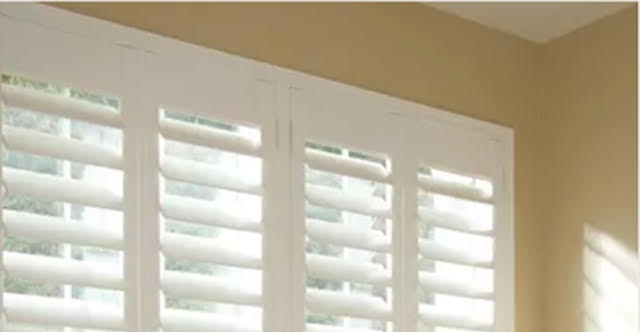
These shutters from Smith & Noble are made from a new nontoxic wood composite—they’re nontoxic and affordable.
I’m very excited to write this post today because it is the first post that contains links to my new Zero Toxics Knowledge Base. These links give you more information about the material, so I can link to that materials information again and again from different posts. Eventually you will begin to become familiar with materials as you read. Be sure to click through as you read.
One of the reasons why I love to do what I do is because my readers come to me all the time with products I don’t know about and ask me if they are toxic-free.
Often I point out toxic materials and reject the product, but yesterday one of my ongoing consulting clients (who doesn’t buy anything without running it by me first), brought some window shutters to me to check out. At first they looked suspicious, but they turned out to me wonderful, and opened the door to a whole new world of possibilities for affordable toxic-free products.
The description on the Smith & Noble website said “Eco Wood Shutters…These beautifully styled shutters are crafted to bring you all the beauty of wood alongside long lasting superior strength. Made from sustainable materials and featuring a tough poly coating that contains no VOC’s..Patented poly coating resists staining to ensure longevity in any environment.”
Eco wood..the beauty of wood…sustainable materials…sounds like wood but the description doesn’t actually say wood.
So I called customer service for my client and asked about it.
“Yes, It’s wood,” they said, “It’s a wood composite.”
“But this doesn’t make sense, “ I said. “Wood composites outgas toxic chemicals like formaldehyde. Why would they put a zero-VOC finish on a wood composite?”
“I’m pretty sure they made the composite with no toxic chemicals.”
“I need to know for sure what this composite is made of.”
“Well, I don’t know so you should just get our real wood shutters rather than the DuraWood.”
Ah ha! A brand name. I hung up from customer service and looked up DuraWood.
Yes yes yes!
Turns out that DuraWood is a wood and plastic composite that has the look, smell and feel of wood but has the durability of plastic. The great part is the plastic is polyethylene , which is one of the least toxic materials on the planet.
The finish is zero VOCs because it’s not a finish at all. It’s “poly” (polyethylene).
You can go online and type in “durawood” and you will find all kinds of products made with this materials.
I haven’t yet seen a sample of this material, but on paper it checks out as toxic-free.
Smith & Noble also sells Durawood blinds , which would be another affordable choice.
COMMENTARY ON PRODUCT DESCRIPTION
This is yet another example of businesses giving insufficient information on the health aspects of the product.
The material is actually nontoxic, but they don’t tell us that. I had to call customer service and even they didn’t know what to say to me. I had to research the material myself.
It would have been so much better if they would give full disclosure, tell us about the materials, and show us it’s OK for us to use.
Shopping for Pumpkin Pie + 6 of my favorite ways to celebrate pumpkin

Last night Larry and I went shopping for a pumpkin pie.
Usually I make something pumpkin, but this year I’m so immersed in working on my new website that it was enough to make the organic turkey and and gluten-free cornbread stuffing and yams and cranberry sauce sweetened with local apples and green bean casserole. So I thought we could just buy a pumpkin pie this year. And I’m living with Larry’s family at the moment, so want to make a Thanksgiving dinner that will be familiar to them.
So we went to Whole Foods because I thought they might have house-baked pumpkin pies, but they didn’t. They had two brands of packaged pies. One was not even organic and had a lot of additives that don’t belong in pumpkin pie. The other was gluten-free and vegan and the second ingredient was tofu, so that was not an option for me because I don’t eat soy. Plus it was $20 for a smaller-than-usual pie.
We actually ended up purchasing a huge pie made with organic pumpkin from Costco, which seems to carry more and more organic food every day. Eleven-inch pie for only $7.99. And none of the additives found in the Whole Foods pie.
Times are changing. Whole Foods is no longer Whole Foods. Their basic operating principles are gone.
Next year I’ll go back to baking my own, but it was interesting to see what is going on in the world of pumpkin pie.
Here are some recipes I’ve shared in the past for pumpkin. I highly recommend the Pumpkin Pie for Everyone if you want something close to the standard pie, but try some of the others too. All yummy.

Pumpkin Pie for Everyone
The ingredients are so simple, practically everyone can eat it. There’s no crust (though you could add one if you want) so there are no grains, and there is no sweetener of any kind (though it tastes remarkably sweet!). And it’s so delicious you won’t miss the usually-soggy crust or the sugar. It’s my favorite pumpkin pie ever! RECIPE >>>

Twice Baked Pumpkin
You probably know twice baked potatoes…I roasted the pumpkin, fluffed up the roasted pumpkin with a fork in its shell, added butter and molasses, and some toppings, and baked it again. The result was “awesome”, according to my taste testers. Both preferred this to pumpkin pie and so did I. You get to see the pumpkin in its natural shell and natural state, not pureed, but as nature made it. A wonderful celebration! RECIPE >>>

Twiced-Baked ”Pumpkin Pie”
This tastes like pumpkin pie but is made with a very sweet little squash called “Sweet Dumpling.” If you can find this squash where you live, it’s the best squash. It’s very smooth and creamy and SWEET. So no added sweetener of any kind is needed. RECIPE >>>
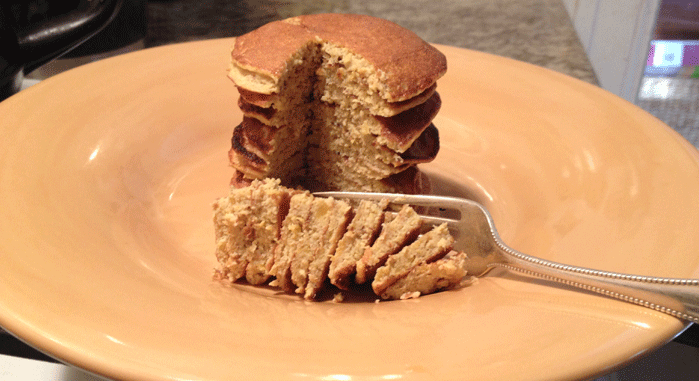
Amazing Pumpkin Pancakes
If you’ve roasted a pumpkin for pie and have some pumpkin puree left over, make these pancakes for breakfast. It’s a real pancake made only with pumpkin, eggs and spices, but it has the texture of a pancake and tastes like a pancake. RECIPE >>>
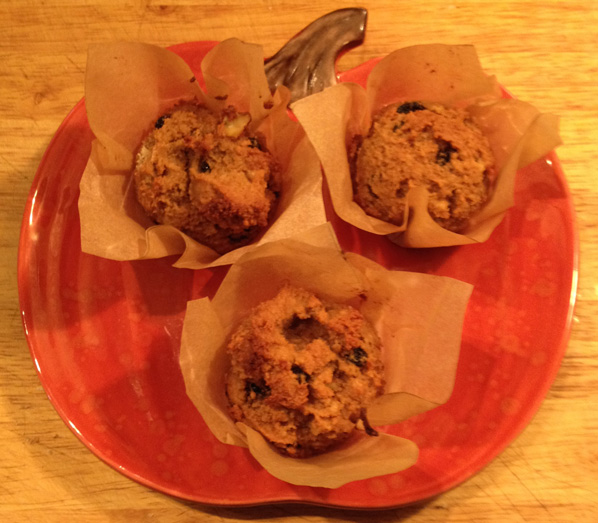
Pumpkin Muffins
These low-carb, gluten-free muffins are moist, delicious, and easy to make. Almond flour instead of wheat flour gives them extra protein. RECIPE >>>
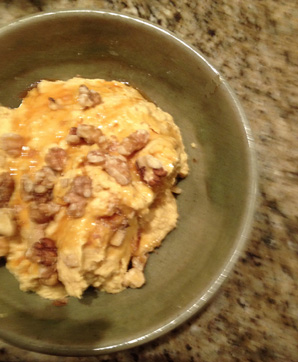
Pumpkin Hummus
Had some roasted carnival squash and cooked garbanzo beans, and thought I would try the two together. Delicious! Autumn in a bowl. RECIPE >>>
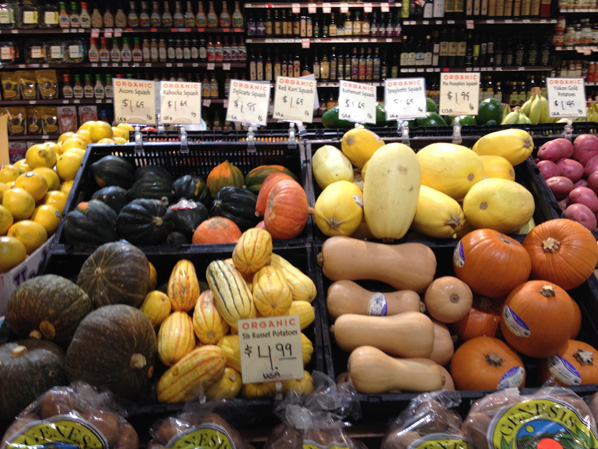
How to Roast A Pumpkin . . . And Other Winter Squashes
Please use real roasted pumpkin in these recipes—not canned pumpkin. It’s easy to roast a pumpkin or any winter squash! RECIPE >>>
Oxford Dictionary Word of the Year is…TOXIC

Well! The world is catching up with me. After forty years of talking about things toxic…the Oxford English Dictionary chose “toxic” as the Word of the Year!
The Oxford Word of the Year is a word or expression that is judged to reflect the ethos, mood, or preoccupations of the passing year, and have lasting potential as a term of cultural significance.
There was a 45% rise in the number of times the word was looked up on the Oxford Dictionary website.
Read more about the word and how the idea of “toxic” is permeating our world here:
San Francisco “Worst Air Quality in the World” Yesterday
You may have heard in the news yesterday or this morning that San Francisco had the worst air quality in the world.
So I just wanted to let you know I’m OK and what is was like here.
Yesterday was day 9 of smoky skies. Larry and I had been staying pretty much indoors for a week and decided to go out to lunch. It seemed in the morning that the sky was clearer than it had been.
But as we were driving around for several hours, I kept saying, “you know, it looks like the smoke is getting worse.” Until finally we both were not feeling well, so we came home to the news that the air quality here was now worst in the world.
There is something called the Air Quality Index that rates how polluted the air is.
We were in the HAZARDOUS range.
Here’s our local San Francisco Bay Area map:
We just stayed in our bedroom with the door closed and turned up our EnviroKlenz air filter the highest setting. We were so relieved to have this filter.
For the past forty years I have made a point to always live where there is clean air. So I can go outdoors anytime I want and be able to breathe. This past week and especially yesterday I haven’t had that option because the air outdoors was worse than the air indoors.
But the EnviroKlenz Mobile air filter did it’s job. We were protected, I slept well, and this morning I’m feeling fine and up working. It’s still smoky outside, but here next to the filter, I can breathe.
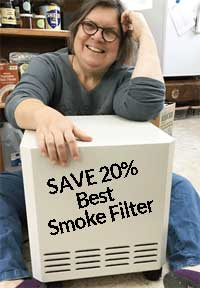 The air quality is down to UNHEALTHY this morning, here.
The air quality is down to UNHEALTHY this morning, here.
But this is exactly why I think everyone needs an air filter. And one that removes both particles and gasses. If I didn’t already have this air filter, yesterday I would have really wished I had it.
[This morning I’ve been here in my office writing without the air filter for about two hours. After sleeping in the bedroom with it overnight I was feeling really good. Now after two hours of being indoors without the air filter my lungs are irritated and it’s getting hard to breathe. My eyes are burning, I have a headache, getting tired and sleepy…I’m going to the bedroom now to get the air filter and bring it to my office. I really need two air filters, one for each room.]
I’ve arranged a 20% discount on EnviroKlenz Mobile air filters for you, through Tuesday.
Why Buy Organic Turkey

Willie Birds Organic Turkey was the choice of gourmet food purveyor Williams-Sonoma this year. And my choice for my Thanksgiving dinner.
Last week I wrote a post about choosing my Thanksgiving turkey.
This week I want to give you more information I just received from the Organic Consumers Association about why you shouldn’t buy the standard supermarket turkey.
I did make a decision about my turkey.
I chose a local organic Willie Birds turkey, which was the choice of Williams-Sonoma this year. In their catalog, these turkeys are about $10/pound + shipping. I ordered one down the street from where I live for $2.49 a pound. Same turkey.
Here’s more information about turkeys:
ORGANIC CONSUMERS ASSOCIATION:What Turkey Producers Don’t Want You to Know
Thanksgiving Turkey 2018
Last year I wrote a long post about all the different choices we have for Thanksgiving turkeys.
After doing this research I decided to purchase a locally-grown heritage turkey from a 4H project and wrote about that experience as well at My Thanksgiving Organic Heritage Turkey—A Shining Example of a Toxic Free Product.
This year I am considering my choices yet again.
Again, here where I live I can purchase a fresh heritage turkey and organic and, of course, conventional turkeys.
This year I’m on the fence between buying another heritage turkey or buying an organic turkey.
Here’s what I’m thinking.
Last year I wanted the experience of a heritage turkey. I was willing to spend $9 a pound for that experience. But I didn’t know what the turkey would be like, and I didn’t want to deprive my family of the usual turkey experience they were expecting, so we actually had two turkeys.
An organic turkey is half the price and it’s organic, but it’s what is called a “broad-breasted white”—a hybrid breed that have been created to produce a lot of breast meat. This year I’ve been eating a lot more heirloom and heritage foods so the thought of eating a hybrid turkey seems much less appealing to me.
But stil, it’s better than a conventional turkey. It’s organic.
My choices for organic here are to buy one of two brands:
- Willie Bird Organic is our very local brand. In fact, they are almost in my back yard. They were one of the first companies to go natural with their turkeys years ago. Their organic birds are limited and local and not on their website. But my the butcher at my local independent grocery offered to order one for me when I asked. Willie Bird Organic Turkeys are being shipped by Williams-Sonoma this year.
- Mary’s Organic Turkeys are being sold by my local organic food co-op. This brand is very highly regarded in my town and sold at all the best places. On their website you can order a conventional turkey, a free-range turkey, an organic turkey or a heritage turkey. Again these are very local and you can’t order delivered-to-your-door, but check out their website and see how they are raising their turkeys and look for something similar in your local area.
I haven’t decided yet which turkey I’m going to choose, but I have to show you my dream turkey. My favorite restaurant—SHED in Healdsburg, California— is offering these turkeys for special order, starting at about $200.
They are from Good Shepherd Poultry Ranch in Kansas. They DO ship turkeys, chickens, ducks, and geese. The primo primo primo restaurants here serve these birds, Naturally bred, sustainably raised, and humanely harvested. Again check their website and see what they are doing and look for local. They are the oldest continuous strain of standard-bred heritage birds in North America.
See more turkeys on the Meat & Poultry page of Debra’s List.
New Study Shows Organic Food Really Does Reduce Risk of Cancer

There are many lists on the internet about why you should choose organic food. They say things like
- No synthetic pesticides
- No GMOs
- No herbicides like glyphosate
- No sewage sludge fertilizer
- No obesogens that can make you fat
And more.
But now there is a new study from France in which a team of researchers evaluated the diets of almost 70,000 adult volunteers over a period of several years.
The volunteers were categorized into four groups based on how often they consumed organic foods, including fruits, vegetables, meat, fish, cooking oils. Even processed food was included.
The researchers collected data for several years. Then they made note of those who did and did not develop cancer. The results were dramatic.
Volunteers who reported eating the most organic food were 25% less likely to be diagnosed with cancer. The greatest reductions of risk were seen in post-menopausal breast cancer and non-Hodgkin’s lymphoma.
I agree this is a likely outcome. A basic law of toxicology is “no poison, no poisoning.” That sounds obvious but people don’t seem to understand that eating or drinking or breathing poisons that cause cancer are likely to result in cancer. Thus people smoke even though there is a warning label on the package.
I go out of my way and spend more money to eat the best local, seasonal, fresh organic food. I just ate yummy organic roasted carrots from my farm market and just made the rounds this morning to find out who’s selling organic turkeys for Thanksgiving.
Organic is worth it. 70,000 French citizens just proved it.
Portable Heaters with Metal Housings
I originally wrote this post in 2010. Not much has changed since then in terms of types of heaters, but I’ve updated it to bring the links to products up to date.
Readers, I’d love to have some comments with the brands of heaters you are using and like.
I had someone ask this week about portable heaters. I had written that I have a “ceramic heater” with a metal housing and she didn’t know what a ceramic heater was, or what to look for. So I’m going to give you a little review here of different types of portable heaters that come with metal housings, including pictures, so you know what your options are.
First, though, I want to say that with any portable heater with a metal housing, there will likely be an initial odor from the finish that is not fully cured. These finishes are heat cured during manufacture, but there can be residual outgassing as the finish is dry to the touch, but not fully cured. Once the finish is fully outgassed, you can use these heaters with no problem.
About outgassing heaters…From reading your comments, I see that some of you are not outgassing them long enough. It requires a lot more than a few hours. I gave mine to a friend to use all winter. Others have just run the heater outdoors or in the garage. How long you need to outgas the heater depends on the model and even within specific models there are differences. Just heat it until it doesn’t smell any more. But for some types of heaters we’re talking about 100 hours or more of heat before the smell goes away.
You can buy some of these heaters used, like on eBay or try your local Craig’s List. A used heater will already be gassed out and you’ll save money too.
You may not be able to find a heater on your local store shelves that does not smell initially. But if you bake it out, the smell will eventually burn off and you will have a good serviceable heater. There are some heaters you can buy online that are unfinished.
Ceramic “utility” heaters
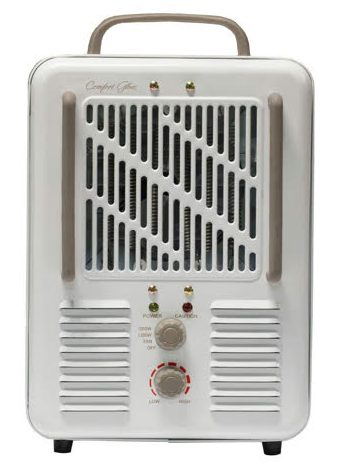 I have two ceramic heaters with metal housings that I purchased more than ten years ago. But I have not been able to find them recently in stores. They are still working now, twenty years later.
I have two ceramic heaters with metal housings that I purchased more than ten years ago. But I have not been able to find them recently in stores. They are still working now, twenty years later.
I’ve noticed now that the ceramic heaters in metal casings are called “utility heaters.” Here are some that say “all metal construction” in their description.
There are a lot more. The way I found these was I did a Google search on “utility heater” and it gave me Goggle search results for utility heater. I just started clicking and reading descriptions. Sometimes I had to read descriptions from several different vendors to find out they had metal housings.I’ve found this year that if the housing is metal, they say so in the description. If it doesn’t say metal and look further into the Q&A, it always says plastic if someone asks. So look for “metal” or “steel” in the description.
These utility heaters are the least expensive heating option, around $40. They are not beautiful [although the 2018 models are getting more stylish], but they will heat your room.
My experience with buying this type of heater is that they don’t have much odor right out of the box, You might need to run it a day or two to burn offf any odor, but it hasn’t been a problem for me.
Radiator heaters
 These are oil-filled heaters that look like old radiators. The oil is completely sealed in and should not leak. I have one and it works very well to heat up one room. And it’s totally silent. Has no fan.
These are oil-filled heaters that look like old radiators. The oil is completely sealed in and should not leak. I have one and it works very well to heat up one room. And it’s totally silent. Has no fan.
This type of heater is notoriously bad about outgassing. This is the one that requred an entire winter to outgas, But once I outgassed it, it’s been a great, reliable heater for more than twenty years. It was worth the effort.
These are made by many different brands.
Baseboard heaters
Baseboard heaters are filled with water or other substances.
One reader wrote that she moved into an apartment with 50-year-old baseboard hot water/oil heaters that also contained glycol, which was leaking. She and her cat got very sick. So that’s something to watch out for.
Another reader wrote that she installed Cadet Soft Heat baseboard heaters throughout her house and there is no odor. I just looked at their website again and they also have wall heaters and garage heaters which look to have metal housings, but they don’t say in the description. So this is something to check if their products interest you. The baseboard heaters have metal housings.
Infrared Radiant Heaters
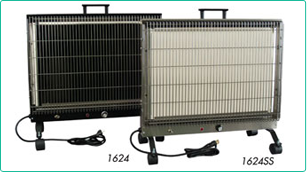 The heat produced by infrared heaters and the heat produced by the sun are very much alike. The heat we feel on our planet is infrared heat produced by the sun. In contrast to most heaters, Infrared heaters do not heat the air in the area and do not cause circulation of the warm air–instead, they heat objects directly. The rays produced by an infrared heater penetrate the skin and warm your body beneath the skin.
The heat produced by infrared heaters and the heat produced by the sun are very much alike. The heat we feel on our planet is infrared heat produced by the sun. In contrast to most heaters, Infrared heaters do not heat the air in the area and do not cause circulation of the warm air–instead, they heat objects directly. The rays produced by an infrared heater penetrate the skin and warm your body beneath the skin.
They are the heat source for far-infrared saunas.
A reader recommended radiant heaters from Radiant Electric Heat. They have stainless steel models “which produces no chemicals, dust particles, odors or fumes.” Their portable stainless steel model has no finish—just stainless steel. The company is experienced working with people with MCS.
- StainlessSteel model s DME Certified
- Non-allergenic, perfect for chemically sensitive or people with acute allergy or sinus conditions
- Built-in thermostat for accurate control of your comfort
- Internal tip-over switch for your safety
- Silent – Clean – Odorless – Economical – Reliable
Warm Your Body Instead of Your Home
I can’t pass up this opportunity to remind everyone that you can save a lot on your heating bills by warming your body instead of the air around you. It takes a lot more energy to warm the air in a room than it does to warm your body. Many body warmers need no energy at all!
- Put on a sweater or scarf or even a wool vest. In the winter I wear flannel shirts with tank tops underneath, sweatshirts, sweaters scarves, wool sock. Long underwear is great!
- Drink hot liquids. Skip the hot chocolate and find herbal teas that you like that you can sip all day, or vegetable soup or bone broth.
- Snuggle with a loved one under a blanket. Body heat is great!
Fragrance-Free Laundromats in San Francisco
Here’s a great idea whose time has come: fragrance-free laundromats!
The link below goes to a post on a blog for an acne clinic. Their concern is acne, not fragrance in general, but since fragrance on clothing from scent in detergent causes acne, they’re on board to live fragrance-free.
“laundry detergent is a major factor in the acne-safe lifestyle. so while we all are making the effort to purchase acne-safe detergent, the cloggy residues from prior machine users can still be getting on our clothes. frustrating!”
SKIN SALVATION: Fragrance-free Laundromats in the San Francisco Bay Area
Home Iron

While I was looking for an image of a woman’s hands ironing I was struck by how many paintings of women ironing exist, going back a good 100 years. So here’s a bit of art to elevate the act of ironing.
I’m moving this post up to present time (originally published 17 March 2008) because there is a new related question and I wanted to include these comments.
One of the commenters decided not to purchase a new Rowenta iron for the reasons stated in her comment. And she’d like to know what other brands of home irons you all are using and recommend.
So readers, over to you. What do you use for an iron? I’m still using my old Rowenta.
Question from bebe
Is there a specific type or brand of iron you recommend?
Debra’s Answer
The only recommendation I have for irons from a toxicity viewpoint is to stay away from nonstick finishes. Get an iron with a shiny finish and you’ll have no problems.
That said, I personally have a Rowenta iron, which costs more, but it’s a lot heavier, which means it’s easier to iron, because YOU don’t have to press as hard. I’ve had it for years–longer than my husband, so that’s more than 20 years–and it’s still working great.
Because I’m in San Francisco for three months, I just bought a cheap $20 Black & Decker steam iron at Target because I didn’t want to risk losing or breaking my Rowenta in transit. It has a shiny bottom too, but is not as heavy.
New IKEA MAUSUND MATTRESSS
Question from Concerned Mom
Hi Debra,
I noticed that Ikea recently came out with a new latex/cotton/wool mattress called Mausund. We are preparing to move to Europe and will need to buy mattresses for our three young children and this mattress is available there. It appears as though the materials in the US and EU version of the mattress are similar. Would this be a ‘safer’ option for my young kids to sleep on (ages 3, 6 and 9)? No one has any diagnosed allergies or sensitivities, I simply don’t want them sleeping on mattresses that off gas harmful chemicals. The price of the mattress in the EU is more reasonable than here, making it within our budget. Thanks.
Debra’s Answer
Well this is an improvement for IKEA but the materials list doesn’t quite match the description.
The first thing you read on the MAUSUND page is
“You’re right to be fussy about what you sleep on. Natural materials like natural latex, coconut fiber, cotton and wool provide comfort and pull away moisture. This makes for a pleasant sleeping environment with a cool and even sleep temperature.”
But when you click on the “Materials and environment” tap, here’s what it says about what the mattress is really made from:
Ticking/ Ticking/ Lining: 100 % cotton
Filling: Wool wadding
Ticking, side/ Piping/ Handles/ Total composition: 53 % linen, 47 % viscose/rayon
Comfort material: 85 % natural/ 15 % synthetic latexAt least 50% (weight) of this product is made from renewable materials.
Product possible to recycle or use for energy recovery, if available in your community.
All the cotton in our products comes from more sustainable sources. This means that the cotton is either recycled, or grown with less water, less fertilizers and less pesticides, while increasing profit margins for the farmers.
The fabric on the TOP is cotton. Not organic cotton but less pesticides, and it’s a fabric, so much if not all of the pesticides are removed during processing.
Wool is also not organic, but it’s unprocessed so anything applied to the wool (unknown) would still be there.
The fabric on the sides is linen and rayon (a manufactured fabric that starts as bits of natural fibers).
The filling is latex, but natural latex, not organic, and 15% is synthetic.
Oops! They missed the coconut fiber ?????
So up to you. It’s not a mattress I would recommend, but it’s a lot better than a synthetic mattress.
If this is what is available and affordable, it’s a “better” choice. But I have concerns about the unknowns in the wool, and mostly about the synthetic latex, which is made from petroleum.
Brentwood “Hybrid” Mattresses
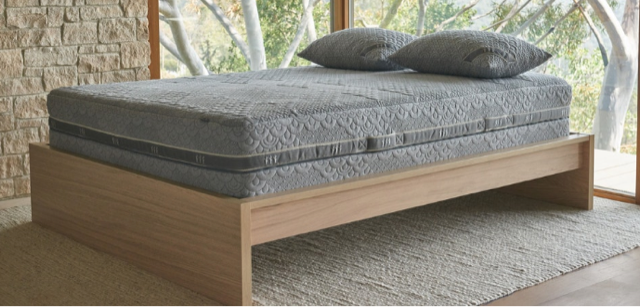
Question from Teresa
Hi Debra,
Do you know anything about BRENTWOOD HOME – CRYSTAL COVE MATTRESS OR CEDAR MATTRESS, THEY ALSO HAVE ONE THAT HAS SOME BAMBOO IN IT.
Debra’s Answer
First, it was difficult to find ALL the materials used in an organized way that was easy to find. There was no materials page, for example, as is found now on other sites.
Nowhere could I find the material used to make the covers. Looking at the photos, the covers appear to be a synthetic material.
They also refer to their mattresses as “hybrid,” which I am assuming means they are part natural and part synthetic.
And they are not GOTS certified organic, though it appears their cotton is.
I took a look at:
BRENTWOOD HOME – CRYSTAL COVE MATTRESS
This mattress is “completely vegan” but made with polyurethane memory foam.
BRENTWOOD HOME – CEDAR MATTRESS
This one is made from “all natural and organic materials.”
BRENTWOOD HOME – CYPRESS BAMBOO GEL MATTRESS
This one is basically a polyurethane foam mattress.
Again materials information was incomplete, so I couldn’t make a full assessment.
If you are looking for a vegan mattress, Naturepedic now makes one, 100% GOTS certified organic.
Test Your Polyurethane Foam for Toxics at Duke University
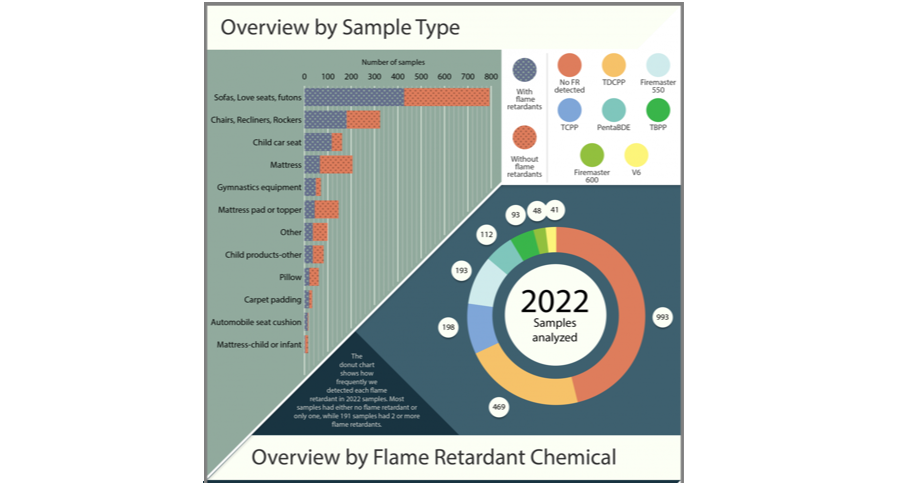
Note in this chart that most flame retardants found by this Duke University study using samples from homes were in child care seats (more than half), then sofas, love seats and futons, with chairs, recliners and rockers coming in at a close second, with about half containing fire retardants. This doesn’t mean the others are safe. There are other toxic chemicals in polyurethane foam. This study measures only fire retardants.
This reader had foam from a memory foam bed in her home through the Foam Project at Duke University.
Any US resident can submit a sample of polyurethane foam (PUF) from furniture, child car seats, or any other product containing PUF using the submission form on our website. After completing the form, samples can be mailed to us at Duke University, along with the unique ID number generated from the submission form. Individuals are notified by email upon receipt of their foam sample in the laboratory. Our laboratory will analyze the sample for the presence or absence of 7 common flame retardant chemicals. Approximately 6-8 weeks later, we will mail back a report detailing our findings, along with a fact sheet about the 7 common flame retardants. We can answer any additional questions you may have after receiving your results.
Hi Debra,
I received results from Duke university where they test peoples foam to see what flame retardants are in it.
My sleep number bed bought about 2010 has FM 550, Firemaster 550. Has brominated and organophosphates.
It said a recent study showed some of the components bioaccumulate and act as a thyroid hormone disrupter.
I have thyroiditis and nodules, and mild hypothyroidism.
I had slept on Coleman air mattresses with PVC vapors prior to sleep number.
I sent them 2 samples, a foam pad beneath the topper and the topper fabric with foam inside.
I have a mattress protector that is waterproof on it made with polyurethane and fabric. Could this block the flame retardant?
Debra’s Answer
I can’t give you a definitive answer about the polyurethane film blocking the fire retardant, but here’s what I can tell you.
The answer to the question is about porosity.
The polyurethane film used for waterproofing has a pore size of 0.03 micrometers to 10 micrometers (a micrometer is one millionth of a meter)
Micro-porous coatings and membranes rely on an interconnected network of tiny holes (pores) introduced by various means into an otherwise impermeable polymeric structure. Sheets of polymers can be produced with common salt incorporated which is washed out afterwards to leave voids/pores. Such holes (or pores) are too small to allow water droplets to pass through, but are large enough to allow water vapour to pass through. Micro-porous structures work, as do tightly woven structures, because of the large difference in size between individual water molecules present in water vapour and water droplets of rain, each of the latter consisting of many millions of water molecules held tightly together by surface tension forces. Micro-porous membranes typically weigh 10–20 g/m2and should be durable and resistant to laundering, chemicals and UV degradation.
SCIENCE DIRECT: Micro Porosity
So the question would be, what is the size of the vapor of the fire retardant? And that’s what I don’t know.
But I think this would be an interesting thing for someone to research.
If we could get a more exact number for the porosity of the polyurethane film and the sizes of various vapors, then we could calculate what types of chemical vapors could be blocked by polyurethane film.
Safety of Plastic Drinking Glasses

Question from Lyle
Hi Debra,
I have two new sets of plastic drinking glasses.
The first is hard plastic; the second is a cheaper and lighter plastic. All of the glasses have either cracked or have turned white from the hot water in my dishwasher.
Are there harmful chemicals in the plastic now that they have been changed from their original materials? Should I toss them and returned to glass? Thanks so much.
Debra’s Answer
It would be impossible for me to assess this.
So I would say return to glass.
Guava Family Lotus Crib/bassinet

Question from Akh
Hi Debra,
I was trying to search your site. Not sure if this has been asked but have you reviewed the Guava Family Lotus Crib/bassinet? It is the only portable one I have found that in greenguard certified but not sure if it is really non-toxic.
Debra’s Answer
I actually can’t assess this product because no materials are given that I could find.
The website makes many claims but no substantiation.
GREENGUARD certification does NOT mean “nontoxic.” It means that the product emissions fall below an established standard for a limited list of chemicals.
If you need this type of bassinet it may be the least toxic brand available, but without materials disclosure, I can’t assess it.
Toxic Hotel Room? Ask for Different One

My room at the Kimpton Marlowe Hotel in Cambridge MA, overlooking the Charles River
I just spent four nights at the Kimpton Marlowe Hotel in Cambridge MA. I always stay at Kimpton hotels when I can because they have “eco” policies. These don’t always translate into toxic-free actions, but I consistently find their hotel rooms to be less toxic.
So I was surprised when I walked into my room on Thursday night and the air quality was so bad I could hardly breathe. I put down my luggage and went downstairs to dinner. When I came back I decided the smell was intolerable and I would not be able to sleep in the room.
I went downstairs to the reception desk and told the woman there what was happening. She immediately got keys to another room and went upstairs with me to my room. She took one whiff and said, “There’s something wrong. The air is not supposed to smell like this.”
She took me to the new room (upgraded to a room with a view) and the air was perfect. And it was perfect for my entire stay.
I don’t know if they are filtering this air in addition to ventilation, but the air quality was just exceptional there for a hotel room.
The next evening when I came to my room after being out for the day, there was a beautiful plate of perfectly ripe berries and grapes and a bowl of mixed nuts waiting for me, with a note of apology for the inconvenience.
Now that’s service.
Have Air Filter—Will Travel
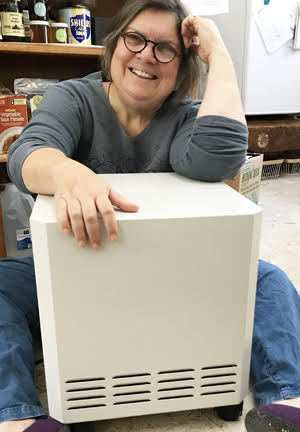 Wednesday I’m leaving on a road trip to Los Angeles, where I will be staying in a standard hotel room for five nights while I attend a retreat for the business course I’ve been taking this year.
Wednesday I’m leaving on a road trip to Los Angeles, where I will be staying in a standard hotel room for five nights while I attend a retreat for the business course I’ve been taking this year.
I’m bringing along my EnviroKlenz Mobile Unit Air Purifier to use in the hotel room.
Next week when I get back I’ll report on how well it worked to reduce all the toxic emissions typically found in hotel rooms.
Say tuned…
18 September 2018
The EnviroKlenz Mobile Unit worked great on our road trip to Los Angeles.
We stayed at the Crown Plaza hotel right next to LAX airport (not our choices, attending a conference) and we had no problems with air quality at all in our room, because we had our air purifier along.
The room itself was not the worst hotel room I’ve ever stayed in, but it did have all the standard toxic materials and fragrance piped into the hall ways. But we just plugged in the EnviroKlenz Mobile Unit, turned it on, and within minutes the air quality was completely comfortable for us.
And it was easy to take with us on a road trip. This is going to be standard equipment for us now for road trips. Now I just need to get EnviroKlenz to make one small enough to take on a plane.
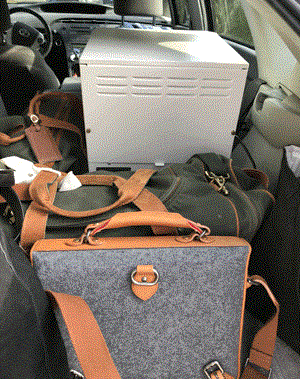
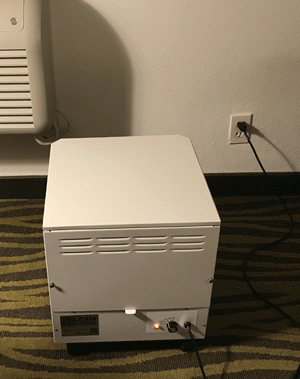
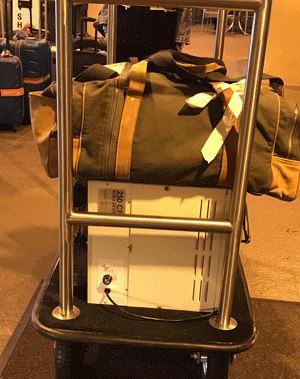
It fit well in the back of our Prius. It’s no wider than a car seat.
It didn’t take up much room in the hotel room.
It was easy to put on the luggage cart (we laid the unit on it’s side to prevent it from rolling off the cart).
What’s it Like to Live in an RV?

Inside the luxury Airstream trailers at AutoCamp, where you can spend the night in a travel trailer and see what it’s like.
Question from Bonnie
Hi Debra,
I have some health issues and have been stuck in Mi for 10 years. I have an older home and am going to sell. I am considering a RV full time for a couple years.
Just want to get out and live again.
Does anyone here live in one?
I know new ones are toxic but what about a 4 years old one? If it had a lot of real wood cabinets etc would it be doable? There are so many models that look nice and could be comfortable. Just a thought.
Debra’s Answer
This is something Larry and I are considering also and have been researching for the past year or so. You’re smart to ask lots of questions and find out as much as you can before making this decision.
I’m interested, too, in the experiences of people who have done this.
I can tell you some things we are doing.
1. Can you live in a space that small full time?
What we’ve been doing is working on reducing our stuff. This is a process. It’s not something you are going to do overnight. I think everyone has way more stuff than we actually use. We’ve released a lot of things we weren’t using and we still have more.
2. What is essential to have for your way of life?
For the past year Larry and I have been living in two small rooms: a bedroom and an office. But we also have access to a whole house with a kitchen and bathroom and garage and garden and everything else. Coming from a 1600 square foot home this is a big difference. For me, I need space to work. I prepare my own food, so I need a kitchen.
3. Do you really want to travel around to a different location on a regular basis?
I love to travel. I would love to travel and bring my home with me so I have everything I need and know I have a toxic-free environment at the end of the day. But Larry and I have also taken a fair number of road trips in our 30 years together and when you are moving from place to place frequently you are in a strange place over and over. You have to find everything and get oriented over and over again.
Some of you may remember the year Larry and I drove across the country in his Mercedes powered by vegetable oil. That was a fun adventure, but every day we had to arrive in a new city and find some vegetable oil. It was fun at first, but then got tiresome.
I think if we were to do this, we would pick and place and stay for a while and then pick another place. But I’m not sure I want to be a nomad. I like having a home base. I like belonging to a community. I like building relationships.
I would strongly recommend to anyone considering this to take a road trip in a car or van and see what it’s like. Some people clearly thrive on this, and other’s don’t.
4. Can you get an RV that is nontoxic or retrofit a used one to meet your needs?
It can be done. I know Larry and I can do it because we’ve been remodeling houses nontoxic for 30 years. But can YOU do it? Do you have the knowledge and resources and skills?
We just recently found AutoCamp , which is a small chain of “hotels” made up of Airstream trailers. They have them in Guernville, California, on the Russian River, Santa Barbara, and Yosemite. You basically get to have the Airstream trailer experience overnight.
Larry and I live 20 minutes from Guerville so we drove over there last week and looked around. It was beautiful. Like walking into a luxury California-wine-country version of summer camp. We couldn’t go inside a trailer because all of them were booked for the night. We’re going to LA this week and tried to stay at AutoCamp in Santa Barbara, but they were completely booked for the night we would be passing through. We’re going to LA this week and tried to stay at AutoCamp in Santa Barbara, but they were completely booked for the night we would be passing through. Read about how we peeked inside an Airstream trailer at AutoCamp Santa Barbara on our way home from LA.
Here some articles about the realities of life on the road from different viewpoints:
LOS ANGELES TIMES: The beautiful Airstream myth and painful RV reality of life on the road
A SMALL LIFE: Things I Wish I Knew Before Living Full-Time in an Airstream
AND THEN WE SAVED: Living Tiny: Seth And Drea’s Airstream – Home Tour
There are lots more. I searched for “airstream living” to find these, since we’re specifically considering an Airstream only (for aesthetic reasons but also because they are exceptionally well-built and originally the least toxic).
Toxic-Free Tomorrow Happens From What You Do Today

Larry and I love to watch movies together. Our cable TV service comes with more than a thousand free movie, so we’ve been exploring them.
Over the weekend we watched a Disney movie from 2015 called Tomorrowland. In the film there is a land of tomorrow that exists in kind of a parallel universe to today, and the whole story is about the characters trying to get back there.
There is a cool magic button that takes you to Tomorowland temporarily when you touch it.
But the great thing about this film for me was a machine that was monitoring the future, so when characters would say something, the machine would instantly show a different future.
And that just reminded me how making small changes can lead to big effects and change the future.
Making a choice to be nontoxic forty years ago started with a decision and then making a choice to buy the one nontoxic product I could find—Bon Ami Polishing Cleanser—led not only to regaining my own health but helping countless others do the same.
When we look around it can seem like the world is pretty toxic sometimes, but from my viewpoint spanning forty years we have come a long way. Still much more to go, but I see progress.
The more we choose toxic-free products, the more we tell others about them the more momentum we create as well as more demand.
And soon it will be tomorrow and the world will be toxic-free.
Here’s a great article to read on how even slight changes in what we think and do can result in different outcomes: How a Little Choice Can Impact Your Entire Future and Change Your Life.
Proposition 65 Warning on Readers Eyeglasses
I’ve been wearing reading glasses for years. I have prescription glasses too for driving, but readers work fine for reading and they are inexpensive. I like to have a pair in my purse, a pair at my desk, and a pair next to the bed, and that adds up when you are buying prescription glasses.
Over the years I have purchased a lot of reading glasses and have done some research on the plastics used for frames.
However, I have never seen a warning label on eyeglasses of any kind until Labor Day weekend when I tried to order a pair of glasses online from readers.com. I got all the way to checkout and was just about to click on the “buy” button when the warning above came up.
What???? I had just purchased a different pair of glasses from readers.com a few days before and there was no warning. but now here it was.
I just called Readers.com and they told me they are required by law to post this warning in the State of California. Not all of their readers contain nickel or BPA, but some do so they put the warning on all. She also could not tell me what specific plastics were used in the plastic frames.
So my problem with this is
1. This is not a useful warning label because these substances known to the State of California to cause cancer may or may not actual be in the product to which the warning label is attached, and
2. We can’t find out by asking the retailer what the materials are for any specific pair of glasses, so we can’t determine if the warning labels apply to this particular pair or not.
The representative from Readers.com also said that if I went to another website and there was no warning label, that doesn’t mean the glasses do not contain nickel or BPA, it just means they didn’t put the warning label as they are required to do by law.
This warning label applied this way just isn’t helpful and isn’t a warning label at all.
I’m already in the process of doing more research about this. We should be able to buy a pair of glasses and know what material is in contact with our skin for hours on end every day. It may be perfectly fine, but the point is, we should be able to know.
New Toxic Mattress Report From MADESAFE
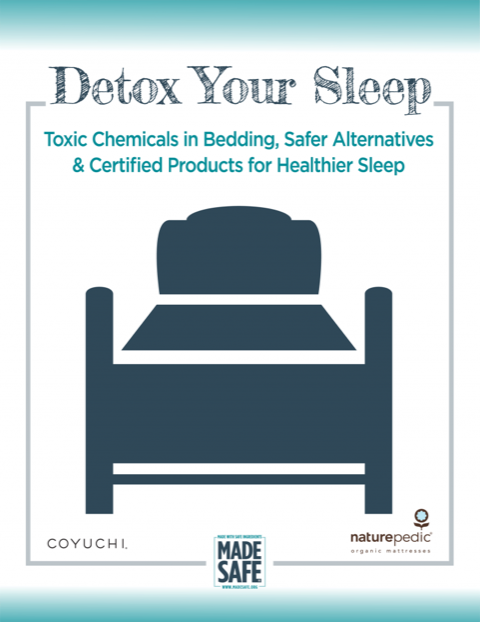 The nontoxic certification organization MADESAFE issued a new report last week called Detox Your Sleep: Toxic Chemicals in Bedding, Safer Alternative & Certified Products for Healthier Sleep . It was sponsored in part by Naturepedic, manufacturer of mattresses and Coyuchi, manufacturer of bedding.
The nontoxic certification organization MADESAFE issued a new report last week called Detox Your Sleep: Toxic Chemicals in Bedding, Safer Alternative & Certified Products for Healthier Sleep . It was sponsored in part by Naturepedic, manufacturer of mattresses and Coyuchi, manufacturer of bedding.
I want to tell you what’s good about this report and what—in my opinion—it’s missing.
The strength of this report is it’s research into the toxic materials. It contains about 20 pages about toxic materials used to make mattresses, with more than 200 scientific references. It’s a great reference for why we need to sleep on something other than the standard mattress.
But then, only three pages were devoted to the safer mattress materials.
And then three pages on chemicals in bedlinen. Formaldehyde on bedsheets, our most intimate contact with toxic chemicals was mentioned in passing without mentioning any health effects (formaldehyde causes cancer, among other problems).
From my viewpoint, this report really doesn’t tell us how to choose mattresses or bedding, only what the problem chemicals are and the MADESAFE certified brands. Even when you click through to the MADESAFE website, there is no standard for mattresses (beyond their usual does not contain their list of toxic chemicals), nor any description of the choices.
My biggest concern here is that the certified mattresses listed—Naturepedic, Happsy, and Avocado (in progress—are all presented as if they are the same, yet they are VERY different mattresses. Naturepedic and Happsy are both GOTS certified organic mattresses and Avocado is not. See my comparison of Naturepedic and Avocado here.
This gives a false impression that Avocado (and other mattresses that will be certified in the future) are as “made safe” as Naturepedic and Happsy when then are not. I know that often consumers look at a certification and think that all certified products are created equal. This is at least one example where they are not.
Still this report is worth reading if you are interested in the toxic chemicals used to make standard mattresses.
What I Learned About My Health When I Spent the Day in the Emergency Room

At about 3 an on 23 August 2018, while lying in bed peacefully, suddenly—with no warning—the room started spinning violently. Within seconds my body was nauseous and sweating.
Finally the attack subsided and I fell asleep for a few hours. But as soon as I awoke the spinning started up again. We didn’t know what was happening or what to do, so Larry put me in the car and rushed me to the Emergency Room.
It was the first time in my life I had ever been to an Emergency Room for medical care. I had taken other people, but I had never been the patient.
As much as I have a natural orientation to healthcare, I have to say, that day I was very grateful for emergency care.
The Emergency Room really is designed for emergencies. And that day I was having an emergency. My head was spinning, I couldn’t eat anything without vomiting it back up, I couldn’t drink anything and I didn’t know what the problem was. Making an appointment with my doctor and waiting in the office waiting room wasn’t enough that day. I needed help NOW.
We walked in with me crying and saying over and over. “I need to lie down, I need to lie down.” And they put me in a bed right away. Within minutes they were drawing blood and had hooked up an IV.
The first thing they determined was my body was extremely dehydrated . And it was. Over the course of the day they gave me five bags of saline. No time to consider what might be in that saline or the plastic bag or anything. My body needed fluids.
They did blood tests for diabetic complications (that wasn’t it).
They did a CAT scan to see if I had a brain tumor. Fortunately I didn’t. But I do want to mention something here. After I wrote in last week’s newsletter that I had dizziness. a reader wrote the following to me:
I want to tell you i have been into alternative health and organic foods for over 40 years, i am 68 years (young live on a farm) and a few months ago i started throwing up and then i passed out. my kids took me to the hospital and they said i had a brain tumor = not cancer and that it probably was there for 20 years and just got too big and hit my brain.
The tumor was on the back of my right ear and down below -exactly where the cell phones and cordless phones sit. I had a cell phone since they were invented and always used a cordless phone. In Europe they know cell phones are bad, but like the tobacco people lied for years the cell phone people lie and say they cause no problems since the tumor was exactly where the phones sit, i have no doubt what caused it. I had much much prayer and got a miracle but i would warn your readers about the dangers of these phones. thanks marianne
Finally, after eliminating the emergency possibilities they determined that I had simple vertigo, gave me a shot of a steroid and sent me home.
I’m going to tell you more about vertigo in another post, but here’s what I want to tell you about my health.
My body was tested all day long. They gave me two rounds of blood tests and a CAT scan, and hooked me up to an electrocardiogram, and when all was said and done, they basically had determined I AM HEALTHY except for this transient episode of vertigo.
This was actually a surprise to me because I often have attention on what is wrong with my body instead of what is right.
And then I had a big realization.
I now have been living toxic-free for 40 years. And even though my body is not perfect, I realized that at age 63 I AM HEALTHY in the sense that:
- I am alive (my mother died when she was 51 from cancer and my younger brother at 58 from prescription drugs)
- All my body systems are go: I can breathe, my heart is beating, my intestines digest food, my liver detoxes, etc
- All my senses are functioning, so I can taste, smell, see, hear, feel.
- I have energy to get up in the morning and work about 12 hours a day and then go out in the evening with Larry
- I can sleep at night. I can wake up in the morning.
- If something goes wrong, my body has resilience to set things right.
And I am getting HEALTHIER EVERY DAY instead of older and more decrepit. I don’t look 63. People think I’m about 45.
This is the result of 40 years of living toxic-free. I’m younger and stronger and healthier than people my age around me who are complaining about their illnesses and dying of cancer.
A few days later I had another realization.
There actually is a higher level of health available than can be achieved by living in a toxic home and getting standard drug-based medical care. Or even using alternative medicine and prevention. It’s above and beyond anything that can happen as long as one lives in the toxic world.
I made a little chart and it looked like this:

I realized that a toxic-free lifestyle—over time—results in a condition of health that is regenerative and transcendent to the level of physical, mental, and spiritual health we experience in our modern industrial society. It’s so different that I’m calling it “transcendent health.”
Instead of feeling like toxic-free living is moving away from toxics, I’m feeling more like I am moving toward health on a level I’ve never experienced before. And I believe this is what is ahead for everyone who continues to live this way. At first it’s about reliving immediate symptoms, but there are much more benefits down the road.
This is not something I ever expected I would experience.
I’m actually healthier at age 63 than I have ever been in my life and healthier than other people I see around me. And anyone can have this.
Wow.
The Dangers of Dehydration and Why It’s Important to Drink Enough Pure Water
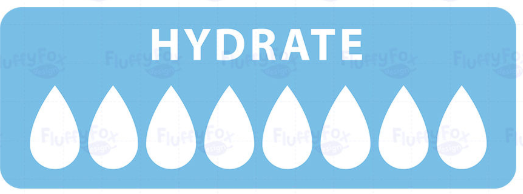
Last week I ended up in the Emergency Room with my head spinning, nausea, and sweating. By the end of the day the doctors determined the problem was vertigo, but the first thing they observed was that my body was very dehydrated. Over the course of they day they gave me five bags of saline.
This really surprised me because I thought my body was hydrated. I literally drink water all day long. I have a glass bottle of pure water sitting on my desk all the time and I am sipping it whenever I am at my desk. But here I was, in the emergency room, dehydrated.
BASIC HYDRATION
While trying to find out how many ounces of saline (water and salt) is in an IV bag, I came across this article that begins “a lot of question about hydration can be found through the IV protocol that is followed by hospitals.” Indeed, if you are admitted to an emergency room or hospital for just about any reason, the FIRST “treatment” you are given is an IV. That’s how important hydration is.
I’m just going to quote the article here (I’ve added my own bold and underline for your convenience):
The purpose of an I.V. is to supply extra water to a dehydrated patient and/or to assure that the daily water and salt needs or “maintenance needs” are met for patients unable to take them by mouth. Naturally, there are circumstances through which the patient would not be physically able to drink water but; for the sake of staff convenience AND to enhance the billable goods, the I.V. protocol is followed for almost everybody. I’m quite sure that the fact that most Americans are chronically dehydrated makes an automatic I.V. make a whole lot of sense.
Although the amount of I.V. fluids infused depends largely on size and the needs of the patient, it is typically between 1.5 and 3 liters (50-100 ounces) a day for the average adult.That’s 6.24 – 12.5 cups of water per day! Rest assured, the medical professionals KNOW that we need 50-100 ounces of water just to hydrate in a
sedentary state.
Funny how physicians fail to emphasize the need for lots of water OUTSIDE of the walls of the hospital. When was the last time you drank 50-100 ounces of water? If you need 50-100 ounces of water just to sustain hydration in a SEDENTARY state, imagine how much more water the body needs when it’s actually moving around while you’re living life!
Many patients “lose” their symptoms when they’re (finally) hydrated using I.V. fluids! Hmm…
Health authorities usually recommend eight 8-ounce glasses of water a day, which is 64 ounces or a half gallon. Barely enough to stay hydrated for a sedentary lifestyle. My doctor told me divide my weight by 2 and drink that number of ounces (for me that’s more than a half gallon but still only enough for sedentary hydration).
So drink more water! And be sure to drink [clean purified water]=lnk-to-pureeffect-on-dberaslist so you are adding hydration to your body without adding toxic chemicals.
My doctor told me a little trick. She said that your urine should be the color of “lemon water”—very light yellow. The darker the yellow of your urine, the more dehydrated you are. So just keep an eye on this and drink water accordingly.
In rare cases, too much water can be harmful. Hyponatremia occurs when your body takes in too much water, diluting vital salt levels in the blood. But you would have to greatly exceed the amount of replacement water your body needs for this to occur.
I find it helps to MEASURE out the water so you know how much you drank.
This is a basic, basic, basic necessity for health. I can’t emphasize it enough!
IS YOUR BODY DEHYDRATED?
This is a slightly edited version of a post I wrote for my Toxic Free Body blog, which is no longer live. The entire blog is available as an ebook at Toxic Free Body.
When I used to live in Florida, the daily temperature was about 88 during the day and the low 82 at night…plus it was humid…so itit was pretty much hot hot hot and sweaty day and night.
And when you go indoors, the air conditioner was dehumidifying the air, pulling even more water out of your body.
Clearly, if you aren’t drinking enough water to replenish, your body is getting dehydrated.
Bodies have a high percentage of water as an essential element of life. Where our bodies can survive two to three weeks withou food, they survive only two to three days without water.
Detoxification is occuring 24/7 in our bodies and we need to assist that process by supplying our body with adequate water to do the job. There is an old adage in natural health care: “The solution to pollution is dilution!”
When the body is dehyrdrated it tends to hold on to toxic chemicals rather than releasing them and toxics become imbedded more easily. Out in nature we can see that a flowing river is better that a stagnant pond if you want a boat to move from one point to another, Drinking adequate amount of fresh water helps the river of your bloodstream to keep moving.
Your intestinal system needs a tremndous amount of water to digest food and keep the process of elimination moving. Water helps our elimination systems work and can reduce constipation to keep the bowels moving properly. While you are constipated, wastes filled with toxic chemicals are sitting in your intestines. Toxic chemicals in those wastes are reabsorbed into your body through intestinal walls. instead of being eliminated from your body as they should. Lack of water only makes constipation worse.
 Beyond this, almost any symptom you can name can be associated with dehydration! Headaches, muscle ache or pain, muscle cramps, blood pressure problems, fatigue, anxiety, and the list goes on and on! There is a great book called Your Body’s Many Cries for Water: You are Not Sick, You are Thirsty! that thoroughly discusses the importance of hydration for health and the symptoms that can result from dehydration.
Beyond this, almost any symptom you can name can be associated with dehydration! Headaches, muscle ache or pain, muscle cramps, blood pressure problems, fatigue, anxiety, and the list goes on and on! There is a great book called Your Body’s Many Cries for Water: You are Not Sick, You are Thirsty! that thoroughly discusses the importance of hydration for health and the symptoms that can result from dehydration.
Excuse me for a moment, I’m going to go drink a glass of water!
Ahhhhhhh! That’s better!
During the summer months in particular, it’s important to drink plenty of water.
Here are some tips to help your body absorb and utilize the water you drink.
1. Don’t wait until you are thirsty to drink water. By the time you feel thirsty, your body has lost more than 1 percent of it’s water. It’s better to drink water regularly throughout the day to replenish vital stores. Carry bottles of water with you. Glass bottles, please! No plastics. Keep a bottle of water sitting on your desk.
2. Maintain adequate electrolytes. Adequate salt and potassiium are critical to proper hydration and many can benefit especially in hot weather. A low salt diet may be necessary for some health conditions but the proper balance of minerals is necessary for proper health. I have seen many people who have turned their health around with proper mineral intake. If you are drinking a lot of water, you need to supplement sodium and potassium.
3. Eat lots of fresh, raw, green vegetables and fresh fruits. Salad is the perfect food for summer! Leafy greens contain lots of water and have all the necessary nutrients needed to assimilate that water. Fresh juicy fruits are another good source of both water and nutrients.
MORE RESOURCES
MYERS DETOX: Dehydration Causes Pain and Disease
TOXIC FREE TALK RADIO: Are You Drinking Enough Water For The Sweaty Days Of Summer?

Is Your Head Spinning? How A Simple, Natural Adjustment Handled my Vertigo in Half an Hour

Vertigo is like the Tilt-A-Whrl ride at the amusement park. Your environment is spinning around and around and up and down at the same time. But you can’t choose to get on the ride or get off. It’s totally out of control.
Last week I ended up in the Emergency Room after I woke up at 3 am with the room spinning violently. nausea, and sweating. By morning I still couldn’t walk or drink or eat without vomiting, so Larry took me to the Emergency Room.
After a day of tests the doctors said I was suffering from vertigo. And because I knew nothing about vertigo, I want to share with you what I’ve learned.
First, there are apparently different types of “dizzy.” When I said, “I’m dizzy,” the doctor asked. “Are you lightheaded or is the room spinning?” Ah, that was very clear. I had experienced lightheadedness in the past, which is a feeling you are about to faint when you stand up too quickly or take too many deep breaths. This was different. I was experiencing “room spinning.” If you’ve never experienced this, you will recognize it if you ever do, now that you know it’s a condition.
Vertigo is a feeling of motion when there is no motion. It’s like that amusement park ride called Tilt-A-Whirl where the platform goes around but it also tilts. It’s violent. You can’t stand up. It’s very much like being in a little boat in stormy seas. Everything is moving and you can’t control it. You just hold on.
CAUSES OF VERTIGO
Vertigo can be the result of a number of causes. It’s not a disease, it’s the result of a condition.
When I came to the Emergency Room the first thing they did was hook me up to an IV to start hydrating my body. Because “very common cause of vertigo” is dehydration. And, in fact, my body was dehydrated. Over the course of the day they gave me five bags of saline. [Just as an aside, when I woke up with the room spinning I grabbed Larry, who was lying next to me, screamed “the room is spinning” and then immediately asked repeatedly for water until he brought it to me.]
But it can also be caused by alcohol, epilepsy, heat stroke, hypothermia, insulin, shortness of breath kidney failure, trauma, infection, stroke or poisoning.
Clearly the doctors could see I had vertigo, but they didn’t know the cause. It could be anything from dehydration to kidney failure.
By the end of the day they had given me emergency medications to stop the dizziness, which I was grateful to have, but that’s all. They gave me a prescription for a drug to stop the dizziness, but didn’t tell me anything about how to prevent dizziness in the first place. So I had to do my own research.
By this time I had been told that a common cause of vertigo is a disturbance in the vestibular system of the inner ear. Herein lies the body’s balance system that tells you which way is down and senses the position of your head. It is filled with little crystals. During the course of life, the little crystals can move out of their location and then no longer function to balance. This can be caused by many factors.
So I suspected that dehydration may have triggered the attack, but it seemed like there were other factors.
VERTIGO AND TOXIC CHEMICALS
First I wanted to know if vertigo could be the result of by toxic chemical exposure (of course). So I looked that up. And actually there are associations between vertigo and industrial chemicals. There is even a word—ototoxic—that refer to chemicals that affect functions that belong to the ear, including hearing and vertigo. An audiologist recommends people should protect themselves from hydrocarbon, asphyxiant and heavy metal exposure.
- Hydrocarbons are basically any substances made from petroleum, particularly those that are volatile, such as paint fumes, synthetic fragrance, cleaning products, and the like
- asphyxiants are a gas or vapor that can cause unconsciousness or death by suffocation due to lack of oxygen. Carbon monoxide, methane and propane are all iasphyxiants.
- Heavy metals include lead, arsenic, mercury, chromium, and others.
So if you are creating a toxic-free home, you are also helping to prevent vertigo, or improve your vertigo if you have it.
MY TYPE OF VERTIGO AND WHAT I’M DOING TO END IT
After the doctors ruled out that my vertigo was not from a brain tumor, kidney failure or many of the other possible causes, I began to observe what made the spinning start and stop.
Once my body became more hydrated, the spinning lessened enough that I could observe the spinning stopped when I was laying down and started again when I sat up or stood up. It would also start when I would turn my head from side to side while lying down. And so I began to see that my vertigo was related to position, so it made sense that the problem was those little particles in my inner ear being out of place.
There seem to be standard chiropractic adjustments that can be done, but one of my readers sent me an article and video about a simple procedure I can do at home. It was developed by a ear, nose and throat doctor. She said none of her patients she has given it to ever came back for further treatment.
I have been doing this once a day almost daily for almost a week and every day I have less vertigo. As I write this, I have no attention on vertigo as I go about my day. Last night it was only slight as I got out of bed. I’m going to continue to do this procedure every night until I no longer have any vertigo.
CBS DENVER: Colorado Doctor Finds Way To Treat Common Vertigo
This video also has a really good explanation of what is going on with the particles in the inner ear that are causing vertigo.
I’ve concluded that there are natural ways to control vertigo and possibly even eliminate it altogether. Now I don’t have to be concerned about it and can get on with life.
To Live Toxic-Free is a Basic Need of Life

Each of us has our own unique reasons for wanting to choose toxic-free products. But I just discovered that in addition to our individual motivations, collectively as human beings we actually have a deep need to protect ourselves from the harm inherent in toxic chemical exposure.
There is something you may already be familiar with called Maslow’s Hierarchy of Needs . It was first proposed in 1943 by Abraham Maslow, a psychology professor at Alliant International University, Brandeis University, Brooklyn College, New School for Social Research, and Columbia University. His work stressed the importance of focusing on the positive qualities in people, as opposed to treating them as a “bag of symptoms,” His Hierarchy of Needs theorizes that human beings are motivated by an urge to fulfill basic human needs beginning with such basic needs as food and water and culminating with being fully themselves. Above is a diagram of his original hierarchy, but later in life Maslow expanded the model to include other needs as well.
I’ve known about Maslow’s Hierarchy of Needs for many years, but looking at them again recently I noticed that we all have a need to be SAFE, and that is so basic that it comes right after our need for food, water, warmth and sleep. Included in that need are health and well-being, and to be safe against accidents and illnesses and their adverse impacts.
We’re actually “wired” to resist that which might harm us.
When we choose toxic-free products we are fulfilling oura basic human need to be safe.
More and more it is becoming clear to me in my own life the importance of having these “bottom of the hierarchy” needs securely in place. These are the necessities of life. Without them the nourishment of food and the hydration of water we can do nothing. Filling these foundation need of biological necessities and safety, we then have a firm foundation for life on which we can build to live the life of our dreams.
Air Pollution Causes a Huge Reduction in Intelligence

According to a new study, “air pollution causes a “huge” reduction in intelligence, indicating that the damage to society of toxic air is far deeper than the well-known impacts on physical health.”
The study found that, ” high pollution levels led to significant drops in test scores in language and arithmetic, with the average impact equivalent to having lost a year of the person’s education.”
“They found the longer people were exposed to dirty air, the bigger the damage to intelligence, with language ability more harmed than mathematical ability and men more harmed than women.”
This study was done regarding pollution in outdoor air, but indoor air pollutants are similar and would have similar effects.
This makes sense to me because many chemicals are known to affect the central nervous system and in doing so affects brain function.
Again, another reason to remove sources of indoor air pollution from your home and have an air filter on hand and available when needed.
THE GUARDIAN: Air Pollution Causes “Huge” Reduction in Intelligence, Study Reveals.

Sun Organic Farm
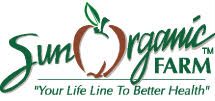 This is your basic bulk organic foods–grains, beans, dried fruits, coffee, nuts. All ingredients, not packaged food products. But what a selection! You’ll find things here you won’t find at your natural food store. Many varieties of beans and dried fruits, and “a grand selection of high quality certified organic herbs, spices and seasonings”–99% of everything on this site is certified organically grown.
This is your basic bulk organic foods–grains, beans, dried fruits, coffee, nuts. All ingredients, not packaged food products. But what a selection! You’ll find things here you won’t find at your natural food store. Many varieties of beans and dried fruits, and “a grand selection of high quality certified organic herbs, spices and seasonings”–99% of everything on this site is certified organically grown.
How Toxic-Free Do I Need to Be?

This post has been coming on for weeks. But you know, sometimes you have to watch things unfold and then you have the big realization. I finally had the big realization over the weekend, so finally I can post this post.
It started with an interesting conversation during a consultation.
A woman wanted me to look at several products she was considering purchasing, give her my opinion about how toxic they are, and if they did have some toxic exposure, could she still use them since she had an EnviroKlenz Mobile Unit air purifier.
I just want to share my reply with all of you.
First, I actually think everyone should own an air filter. I used to not think this, however, since going through the big fire last fall and also living in an area where smells of all kinds come wafting by even though the air is generally very clean, I do think that it’s wise to have an air filter on hand in case it is needed. [Weeks after I wrote this, I finally purchased my own EnviroKlenz Mobile Unit after the wind shifted one day and we got a lot of smoke from this year’s fires.]
The general recommendation for good indoor air quality is to start by reducing pollutants at the source. Which means, remove any products you can that are contributing to indoor air pollution with products that are not polluting. Even if you have an air filter, it’s best to reduce the amount of pollution it needs to filter, as your media cartridges will last longer.
Another caveat I just want to mention is that filtered air is not the same as natural air. It’s better to breathe filtered air, but the best air is clean natural air. There are just other factors to natural air that are not present in the filtered air. So if you are in a situation where you need to be breathing filtered air, get out in nature whenever you can. Even I, living where I do in an area where there is very clean air, I still drive out to the ocean that has very very clean air full of negative ions and other beneficial factors. I call this “live” air.
So then there is the fact that when you are filtering air or reducing indoor air pollutants at the source, you are only doing this at home. Once you step out your door, you are out in the toxic world, breathing toxic air. Toxic in varying degrees depending on where you live and if you are driving in traffic or walking on a store, etc. But almost anywhere is likely to be more toxic than your home.
I explained to my client that there are several levels of how to consider toxic exposure.
- At the most immediate level you would look at a product and evaluate the materials it is made from to see to what degree they may be toxic. A product might be completely toxic-free, or have one toxic ingredient or several, or the toxicity may be low or high.
- Then there is the amount of toxic exposure you get overall in life. You have your home, which might be zero toxic like mine or some percentage toxic, and then there is “beyond home” which is certainly more toxic. And you might spend different percentages of time there. I would say that for me, I spend more than 50 percent of my time in my home and even when I go out I’m in a clean air place and there are few toxic exposures in the natural food store and the farmer’s market and other small shops and restaurants I usually go to. But for other people, it might look like 50% at home during non-work hours, then sitting in traffic, then working in a toxic office building. After I created a nontoxic home many years ago my next steps were to move out of the city into a forest and create a home-based business so I wouldn’t have to community or work in an office building.
- And then you need to consider your own level of need. If you have MCS, you really need your home to be as toxic-free is you can possibly make it. If you want to reduce your toxic exposure for other reasons, you have a little more leeway.
You don’t have to reduce your toxic exposure 100%. It’s impossible anyway. Our bodies have detoxification systems that can handle a certain amount of exposure. The problem is they get overloaded. And as we reduce our exposure, our bodies continue to detox and health gets better because the amount of exposure we have begins to be more in line with what our bodies can handle.
So this really is individual for everyone.
The big question my client wanted to know was could she buy furniture she liked that had some toxic elements to it because she was running her air filter.
I told her in my home I wouldn’t do that but it’s a process. You don’t create a toxic-free home overnight. An air filter can be a great tool while you are transitioning because it WILL remove a lot of the pollutants being created by your carpet and your bed and your particleboard kitchen cabinets and all those other things until you learn what’s toxic in your home and can replace them.
But I also understand her desire to have things that are the style that she’s accustomed to. It was an adjustment for me to stop wearing the fashionable clothes I was accustomed to. My red lipstick was one of the last items to go because 40 years ago they didn’t have all the pretty colors of natural lipstick we have now.
In the end we decided that having a few items in her house that were somewhat toxic (but not the worst offenders) would be OK with her air filter running, We just looked at the fact that she is being exposed to toxics outside of her home and put those products on the side of the ledger with the “beyond house” toxic exposures.
It all comes down to what you need to do or what you are willing to do, and what you can afford to do.
My commitment is to reduce toxic exposures as much as I can and I will be as creative as I need to be, spend whatever money I need to spend, do whatever research I need to do and go to any lengths to minimize my exposures to the max. But I also choose to go out in the world and fly in airplanes and sleep in hotels and eat in restaurants. And then I come home to my toxic free environment. It’s a balance.
In a way, my client choosing her sofa for comfort even though it may still contain some toxic components is much like me going out into the world. It’s an “informed exposure”—a risk we are willing to take, like crossing the street.
It all comes down to balance. Toxics in, toxics out. Our bodies will process a certain amount. Don’t overload. If you’re exposed, then spend time away from toxics so your body can detox.
An air filter can help achieve that balance.
* * *
In the weeks that followed I had other similar questions.
But there’s a variation on this theme, and that is the so-called “nontoxic” certifications that certify that the product has passed certain tests and therefore are safe. You’ve seen them: GREENGUARD, MADESAFE, Oeko-Tex 100, Floorscore, the CARB standards for formaldehyde…and the like.
The problem with these certifications is
- they are only testing a limited number of chemicals and
- they are testing these chemicals down to a level
But that doesn’t mean that they are testing all the pertinent chemicals for that particular product and it doesn’t mean that they are testing down to the level that is acceptable to your particular body.
From my viewpoint, there is a false sense of security. Consumers look at these seals and think the product is “not toxic.” But not toxic by what standard? And what else might be in the product in addition to what is tested, which is not tested?
Just this morning someone sent me info on the “healthiest” carpet pad made of GREENGUARD-certified memory foam. No, I would not recommend that.
But these certifiers seriously think that these products are OK because they are “lower emissions” than other similar products.
Better. But better enough?
* * *
 Then this week another woman was asking me about remodeling her kitchen and replacing kitchen cabinets. And then someone commented on her question and said he was living with toxic kichen cabinets too because he couldn’t afford to replace them. I’m thinking about all this and then…
Then this week another woman was asking me about remodeling her kitchen and replacing kitchen cabinets. And then someone commented on her question and said he was living with toxic kichen cabinets too because he couldn’t afford to replace them. I’m thinking about all this and then…
Over the weekend Larry and I were driving to a different farmer’s market than we usually go to because I wanted to buy some organic olive oil directly from the farmer. For all the fake olive oil on the market, I am fortunate to be surrounded by producers of olive oil. I can go walk in the groves if I want to, I actually drive by some of these groves on a regular basis, so I know where the olives and the oil come from.
So we were driving and I suddenly remembered that when I first learned that toxic chemicals in my home were making me sick, my first instinct was to remove all the toxic chemicals from my room. I was living with my father at the time, so I only had control over my bedroom. But I took all my polyester clothes out of the closet, removed all my books, removed my furnture, my bed and my mattress and all my bedding. I pulled up the carpet. All that was left was four walls and a cement floor with dried paint spatters all over it.
I was not concerned with how it looked. I was concerned with getting my body away from toxic chemicals. It was only later that I learned that in every case of poisoning the first step is to get the person away from the poison or get the poison away from the person.
It takes exposure to a poison for it to cause a poisoning. I know that sounds obvious, but it is forgotten every day. And “toxic” is just another name for poison.
So when I speak to you, my viewpoint is wanting not to reduce your exposure to toxic household products. I want to eliminate your exposure to toxics in your home. Just as I did in my own home. Just as I continue to do every day.
The goal is zero toxics.
That doesn’t mean I actually achieve this goal every moment of every day. But any time I can eliminate a toxic exposure—by any means—I will. That includes leaving a place if necessary, removing things if necessary, ending relationships if necessary…
And that’s really how I feel about how toxic-free I need to be. How toxic-free you need to be is up to you.
* * *
I want to make one more point.
We talk about “toxics” but in actuality toxic chemicals are poisons.
There are two types of poisons: acute and chronic.
Acute poisons cause immediate symptoms and are the reason for poison control centers.
Chrinic poisons create health effects over time, after being exposed day-in-and-day-out.
Let’s take formaldehyde, for example. Formaldehyde has been in use for a long time.
Here is an early warning label for formaldehyde what would have appeared on a bottle of formaldehyde:
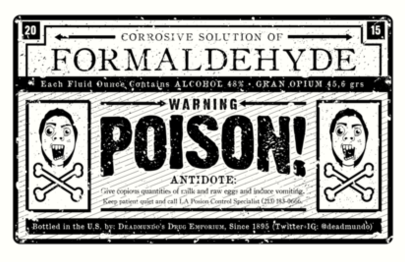
Here are some current warning labels for formaldehyde: used in a workplace setting:

Here is the warning label for formaldehyde for a consumer product such as particleboard kitchen cabinets or permanent press bedsheets, both of which are continuously emitting formaldehyde into the air in your home.

I didn’t forget to put the warning label there. There isn’t one.
The same formaldehyde that is an acute poison is also in consumer products at levels that act as chronic poisons when you are exposed to them day after day.
This is what we are dealing with.
Years ago when I was very sick from toxic chemical exposure and struggling to get well, I kept eliminating exposures and eliminating exposures and still wasn’t getting well. But I wouldn’t give up my perfect shade of red lipstick. And finally I decided OK I have to do this. And that was it. It was the last exposure I needed to breakthrough and stop overwhelming my body. I’ve seen this over and over where there is one thing someone won’t give up and when they remove that exposure their health turns around.
The moral of this story is: eliminate as many toxic chemicals as you can.
My order of priority is: first, toxic-free, then functional, then beautiful.
I always choose the least-toxic option available. When I’m at home, I pretty much eat organic, for example. When I’m traveling I’ll seek out organic but it may not always be available. So then I’ll eat food with pesticides, knowing they will leave my body within a few days. But I never eat junk food. I just don’t eat if all there is available is fast food. That’s just one example of my level of choice.
Again, we each need to make our own choices about the degree of toxic exposure that is necessary to have good health or prevent toxic harm in our own bodies. Lots more information that will help you make these decision will be coming soon when I launch my new website Zero Toxics at the end of September.
My Temporary Toxic-Free Corner Kitchenette

A few days ago a reader comments on last week’s post Thermafoil Kitchen Cabinets and Offgassing saying:
I feel duly chastised. We too, moved into our home and didn’t check the cabinets.
We removed old carpet throughout entire home which cost a fortune to redo with tile. We completely re-did (3) toxic bathrooms, and removed tons of toxic cabinetry from the garage which was being used as a workshop. We simply ran out of money.
After we moved in, I discovered the previous owner had put these kitchen cabinets in himself approx. 5 years prior. When opening the cabinets I saw that the back part looked thin and like an mdf. Yes, mortified…
But kitchens are expensive to remodel and we had to stop somewhere.
When finances permit, I’d love to rip out these cabinets. In the meantime, I’ve gotten better living here so I will go out on a limb and say I don’t think I’m being too poisoned by them. Hence, we air out the house often and use air purifiers. For now, it has to suffice.
And I replied:
For me (and I’m not saying you have to do this), I have always operated on “get rid of the exposure first and then figure out how to replace the item with something nontoxic.” Even if that means not a beautiful kitchen, but just a make-do one.
As I’ve written before, currently I’m living with Larry’s family, helping to care for his 85-year-old mom after her husband’s death last year. She’s totally happy to share her kitchen with me, but the logistics just weren’t workable. I’m using a room in a separate building on the property for my office, and Larry built a kitchen for me in the alcove.
Perhaps “kitchen” is not exactly the right word, but it’s a food preparation area with a sink unit I got from IKEA, an apartment-size refrigerator, an island with a butcher-block top and an induction burner. I prepare most of our food here. And some used wood shelves. Investments was less than $500 and all totally nontoxic. Mostly used.
So if it were me, I would rip out your toxic kitchen and be safe, and rebuild as you can afford to.
I’ve been wanting to write about my kitchen but it’s not quite done (needs some sufficient lighting and a beautiful spice rack is in progress from Larry).
Larry put this together for me on a shoestring budget in an alcove of a room we share for an office.
We started with a wall unit from iKEA that has a sink, countertop and shelf, under $200. I’d give you the link but couldn’t find it online so maybe they are no longer selling it.
Then we installed some wooden shelves above. We just got the brackets and wood shelving at a local hardware store. No finish.
We had to do some plumbing to connect to the pipe on the other side of the wall.
We got a used apartment-sized refrigerator in perfect condition (outgassed) from a young couple who were moving and had to sell it that day. $50.
It’s sitting on top of a low wood table (you can’t see it in the picture) that was left by the roadside. Free.
The butcher block island we brought from our house in Florida. Originally about $200 from IKEA but I consider it free because we had been planning to sell it.
Around the left corner there is a tall and wide solid wood shelving unit that we got free just for hauling it away.
We already had the induction cooktop from our kitchen in Florida, and our dehydrator (which at the moment is dehydrating organic peaches from the farmer’s market), and our toaster oven. If we need a full size oven we use Larry’s mom’s oven in the main house.
All of this for less than $500. Perfect? No. Workable? Yes. And totally toxic-free.
It can be done when toxic-free is your priority.
I want to be clear this is temporary. I’ve also remodeled some beautiful full-size toxic-free kitchens.
But the point is, I make toxic-free my first priority. Always. And so my exposure to toxic chemicals is extremely low and infrequent.
New Fragrance Studies from Anne Steinemann + A Call for Ingredient Disclosure for Fragranced Consumer Products

This week Professor Anne Steinemann, who has been a champion for the elimination of scented products, has released some new studies that are very interesting
Fragranced baby products (both regular and “green”) – nearly all products emitted chemicals classified as hazardous, with no significant difference between the regular and green products.
Essential oils (both regular and “organic”) – all essential oils emitted chemicals classified as hazardous, with no significant difference between the regular and organic products.
Regulation of fragranced products – no law requires disclosure of all ingredients in a consumer product in Australia, or of any ingredients in a mixture called “fragrance”.
Here’s another paper related to fragrance from a different source. This one is about the need for more ingredient disclosure for fragranced consumer products.
And here’s another from Professor Steinemann on indoor air quality at a university:
Indoor air quality at a University – the green building had some of the highest levels of pollutants
California Fires Releasing Radioactive Particles in Smoke

As if breathing smoke itself wasn’t enough, this morning I read a disturbing personal account of one man’s measurements of radioactivity in the smoke coming from our California fires.
As horrific as this season’s fires have been so far, with all the destruction of homes and loss of lives, what disturbs me most is what I have just recorded in my logs, photos and readings. At the peak of the fires and smoke just a few days ago, the readings were significantly higher – – and not by just a little. I recorded a peak reading of 1,333 cpm on the morning of July 31st, and had multiple readings above 1,000 cpm during that period. And, none of the fires is even close to us this time. The likely source of much of the smoke here is a fire near Yosemite National Park, over a hundred miles away. I suspect heavier concentrations of smoke would yield higher results.
Has the vast bulk of the 40 million population of California just been unknowingly exposed to high concentrations of radioactive particles? What are the constituents of these particles? How hazardous are they? It was recently widely reported that radiation from Fukushima, in the form of Cesium-137, was detected in small quantities in California wines. There can be little doubt that Cesium-137 from Fukushima has also been absorbed by all the vegetation here, and when burned, is re-released.
FINDING THE MISSING LINK: California’s Wildfires and Nuclear Radiation—A Personal Story
So what do we do?
1. Filter our air during smoky times.
2. Take PureBody Liquid Zeolite, which can remove radioactive particles from your body. If all the vegetation in California is absorbing radioactive particles, then all the food grown here is absorbing them too.
Is there Glyphosate in Your Breakfast Cereal?

Following last week’s stunning news that a California jury ordered Monsanto to pay $289 million in damages to a man dying of cancer, which he says was caused by his repeated exposure to large quantities of Roundup and other glyphosate-based weed killers while working as a school groundskeeper, Environmental Working Group released the results of their testing of breakfast cereals for glyphosate.
“Glyphosate, an herbicide linked to cancer by California state scientists and the World Health Organization, was found in all but two of 45 samples of products made with conventionally grown oats. Almost three-fourths of those samples had glyphosate levels higher than what EWG scientists consider protective of children’s health with an adequate margin of safety. About one-third of 16 samples made with organically grown oats also had glyphosate, all at levels well below EWG’s health benchmark.”
I’d like to phrase this from a different viewpoint.
45 samples of conventional-grown oats:
43 samples contained glyphosate
31 of the samples had glyphosate levels higher that what is considered safe
16 samples made with organically-grown oats
5 samples contained glyphosate
all were lower than what is considered safe
This tells us that if you eat organic, it’s more likely than not that you won’t be eating glyphosate. But even if you do, it will be at levels considered by EWG to be below the safe levels for children.
EWG: Breakfast With a Dose of Roundup?
Click on link above for more about the testing and a chart of the levels found in various brand-name samples.
Beyond Toxic-Free Industrial Products

I spend a lot of my time (as you know) working on finding and writing about toxic-free, manufactured industrial products because that’s where most people shop.
But for many years now, I’ve actually been living this “other” life that is beyond industrial products. It’s the next level of living toxic-free. Much more difficult and not available everywhere, but oh so rewarding.
I actually started envisioning living this way in 1987 but gave up because I couldn’t find it. But now thirty years later…
Here’s how I spent last Sunday
I spent most of my day going to our local “farm market” (that’s what they call it here, not “farmer’s market”) and also our annual Gravenstein Apple Fair, which celebrates the harvest of the Gravenstein Apples, unique to our area.
Both of these experiences made me very happy I live here as they take my experience of toxic-free living well beyond the action of choosing products without chemicals from store shelves. They take me back to LIFE.
THE CHANGING OF THE SEASON AT THE FARM MARKET
About 30 years ago I began to study nature, and one thing I learned was about the changing of the seasons. On our civil calendar “The First Day of Autumn” has been fixed September 21, but it’s not. The Autumn Equinox that falls on that day is the middle of autumn.
I had an ancient calendar that marked a date in early August as the end of summer and the beginning of autumn and there was a festival to celebrate it. That this time of year was the end of summer and the beginning of autumn was kind of theoretical to me because it is always hot in August wherever I’ve lived, but I could see small indicators.
I’ve now been going to the farmer’s market every Sunday for almost a year, and this week, I really saw that ‘autumn is a comin’ in’. The Gravenstein apples are here, as well as Gravenstein cider and a tent telling you where you can use the community apple press to press your apples for juice. The multicolored cherry tomatoes are gone. My farmer who has been providing gorgeous cherry tomatoes and bell peppers and Persian cucumbers said good-bye to me this week. He won’t be back until January. The entire spectrum of foods in the fields is changing.
While tomatoes are ending, cauliflower is just beginning. I can’t resist these baby cauliflowers. So tender and sweet.

We don’t see this change of season in the supermarket. But it’s very real at my farmer’s market and on my plate.
We’re moving into the time of harvest. I’m working hard now to bring in the “harvest” of the work I’ve been doing all year to move my work to the next level with a new website. I can start to see the new website now. Structure is up. I’m starting to organize data. I’ve found someone to help me with the technical challenges and we were started work on that yesterday. I’m working full speed ahead.
Eating seasonal, local, organic food is part of my “practice” of living toxic-free. It goes beyond reading labels to avoid toxic chemicals in industrial products, to the next level of aligning with life itself.
For the past two weeks we’ve been sampling different varieties of peaches. We’ve been putting each variety in separate bags with their names on them to get to know them. The farmer explained how the best peaches were the first peaches picked from the outside of the tree where they get the most sun and that the following week that week’s varieties would be coming from the inner branches and new varieties would be being picked from the outside of other trees.
Imaging my surprise when I brought these peaches home and cut them open and there was a sunset of colors inside the peach! Not just white or orange, but white and orange and deep red and purple. I though I would pull a photo off the internet with these colors and couldn’t find one. But this week we bought a whole entire box of peaches, and as I was peeling peach-after-peach I discovered the deep turn of color comes from ripeness. I had just never before eaten a peach that was actually ripe. But it’s only ripe like this for moments. The next day they begin to rot.

AND THEN WE WENT TO THE GRAVENSTEIN APPLE FAIR
This was the first time I’ve been to this particular fair and it moved me deeply.
First, it was a city fair, so it wasn’t at a fairgrounds, it was in a park, under oak trees. There were local craftspeople, food tents set up by local restaurants and children showing and explaining their 4H animals, and bands providing music. The entire fair was the city in microcosm. And Gravenstein apples—apple pie baked by the ladies of a local Church who bake the pies every years, apple fritters, apple cider, boxes of apples, bags of apples—all Gravenstein everything. One food stall offered a grilled cheese sandwich made with slices of Gravenstein apple, local blue cheese and local honey. Apples, apples, apples!
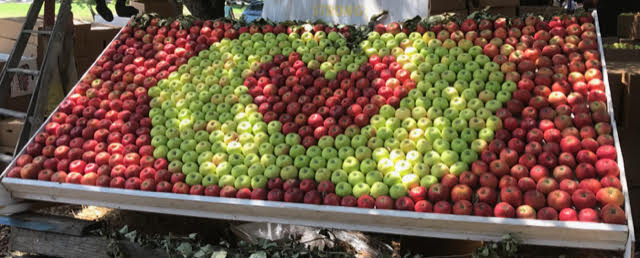
Of course, Larry and I walked in an immediately bought a piece of pie to share. I looked up and everyone around me was eating pie made with our local apples, baked with the loving hands of our local women, and tears came to my eyes. This is what creates community. Once of the reasons I left Florida was because I was once told not to bring homemade food for refreshments to a meeting—only packaged foods. Sitting under the oak trees eating apple pie with my community made me feel part of the community, not only in the moment, but part of it’s history past and future.

I had to include this photo above of the disposal area. It’s more that trash and recycling. It was landfill, recycling, compost, and pig food.
But of course. This is a farming community. And so our fair had woodcarving and historic farm equipment and “agrarian games” (I didn’t see those, but I’m thinking they may be like the Scottish Highland games, which are competitions of skill based on things actually done in local work life).
Here the food is seasonal, local, and organic with full disclosure. You can’t buy Mindful Meats online. They are local. And you can call up all these farms on this chalkboard and they will proudly tell you all about how they grow and raise their food. No secrets here.

This is how life should be!!!!! Everywhere.
Enough. I think you get the idea. I feel like I’ve come home.
As we were walking to our car I said to Larry, “This fair is in agreement with me. It’s just how I would design it. And I am in agreement with it. This is where we belong.”
And he agreed.
Safe Pesticide for Spiders?

Question from Michelle
Hi Debra,
I ask this question in the light that we are fighting brain cancer. We are also fighting spiders.
We have done everything possible around the house-changing lighting cans, switch plates, stuffing windows with molding, diatomaceous earth and we are still getting spiders.
I called Ecola and although they pushed their standard pesticide which we will never use, they also mention a “green version” made with “essential oils.”
I asked for the ingredients and they are as follows: thyme oil 20%, 2-phenethyl propionate 14%, rosemary oil 8 % and a combo of polyglyceryl oleate, isopropyl alcohol, wintergreen oil, and isopropyl myristate 58%.
Do you consider this a safe, non-toxic alternative? Thank you very much for your advice and help.
Debra’s Answer
First I want to just be clear that I can’t tell you if any product is “safe” for you.
I can tell you if it contains ingredients that are known to be toxic.
But there is a difference between the ability of a substance to cause harm and whether or not it will cause harm FOR YOU. Many factors about your body can affect how sensitive or tolerant you are to a substance or how well you r body can withstand whatever danger may be present.
That said, here’s what I can tell you about these materials.
Thyme oil, rosemary oil and wintergreen oil are essential oils. They are concentrated oils from plant sources. Some people who are sensitive to these oils react to them, but they are not toxic, per se.
2-phenethyl propionate is a natural substance found in peanuts. It is considered a “low risk pesticide” in the US and can be used here without registration. It is commonly used in natural pesticide products.
Polyglyceryl oleate is not considered be toxic or harmful.
Isopropyl alcohol is rubbing alcohol. It is generally made from petroleum when used as an ingredient. It is not expected to be toxic or harmful.
isopropyl myristate is composed of of isopropyl alcohol and myristic acid, a common, naturally occurring fatty acid. It is not expected to be toxic or harmful.
Based on this information, I would say this is likely to not be harmful. It does not, for example, contain known carcinogens.
It’s about as “not harmful” as a pesticide can be, That said, your body may not tolerate this and other products in ways not accounted for by toxicology.
If I needed a pesticide for spiders, I would use this.
Health Effects of Gas Stoves

I saw a blog on Treehugger that environmental engineering professor Shelly L Miller tweeted a whole rush of scientific papers on the health effects of air emissions from gas stoves, so I had to run right over to her Twitter page and get them for you. Imagine my surprise when I arrived on her page and Twitter said Shelly “follows you.”
As a home cook I am a fan of using gas over electric, and thought I was doing OK because I kept my stove well-adjusted. But when I started checking my indoor air with a real-time monitor, the VOCs spiked every time I cooked something on the stove.
Now here’s the scientific data about how that’s harmful to health.
BTW, I’m no longer cooking with gas. I either use my induction burner in my tiny kitchen or my mother-in-law’s electric stove.
NOTE some of these links are unclear, but I’ve just put everything here as I found it. I’ll continue to add to this list and feel free to add studies you find in the comments.
From Shelly Miller’s:
Induction stoves a great option for consumers to move towards a fossil-fuel free home, plus it eliminates a huge source of pollution (NO2, CO, particles) in the home. #healthyhome #indoorairpollution
7 Aug 2018
Get ready, I’ll be posting a bunch of references/studies on the association between adverse respiratory health and gas stoves #sciencetwitter #indoorairpollution #healthyhomes
8:46 AM – 8 Aug 2018
From the #SixCities study: strong evidence for causal effect of 2ndhand smoke on increased respiratory illness and exposure to gas stoves associated with reduced pulmonary function – all in children. https://www.atsjournals.org/doi/pdf/10.1164/arrd.1984.129.3.366 …
8:51 AM – 8 Aug 2018
Respiratory symptoms were more common in children exposed to a gas stove. “Respiratory Symptoms in Children and Indoor Exposure to Nitrogen Dioxide and Gas Stoves” | American Journal of Respiratory and Critical Care Medicine https://www.atsjournals.org/doi/abs/10.1164/ajrccm.158.3.9701084 …
8:53 AM – 8 Aug 2018
Women who used gas for cooking had increased risk of asthma-like symptoms and had reduced lung function and increased airways obstruction compared to those who did not use gas https://www.sciencedirect.com/science/article/pii/S0140673696900094 …
8:56 M – 8 Aug 2018
Children from households with gas stoves had a greater history of respiratory illness before age 2 and small but significantly lower levels of FEV1 and FVC corrected for height https://www.atsjournals.org/doi/abs/10.1164/arrd.1980.121.1.3 …
9:02 AM – 8 Aug 2018
#openaccess and shows the impact of using ventilation while cooking Shelly L Miller added,
9:05 AM – 8 Aug 2018
In homes using gas stoves, children whose parents reported using ventilation when using the stove had higher lung function and lower odds of asthma, wheeze, bronchitis compared to homes that never used ventilation or did not have ventilation available
9:05 AM – 8 Aug 2018
OK thats enough on gas stoves & respiratory health for now. Over 25 years ago when I was a PhD student at Berkeley talking to an EPA scientist about the most important #indoorairquality issue, and he said: gas stoves, because the association with adverse health is clear.
9:16 AM – 8 Aug 2018
And yet another study showing CO2 levels in offices above 1000 ppm causes lower cognitive functioning. Great study @j_g_allen Shelly L Miller added,
9:17 PM – 9 Aug 2018
Exploding Glassware and Other Hazards of Tempered “Safety” Glass
This morning I received an email asking for a brand of glass that doesn’t shatter.
The reader had just had a Duralux glass shatter into “a thousand pieces” in her daughter’s hand.
This is not the first time I’ve heard about various glass items spontaneously shattering.
But I have never never never in 40 years of using only glass glassware of various types…I have never had a glass shatter in my hand or sitting on a shelf or in any other way, shape or form.
So I decided to look this up in the internet and see if it had been investigated as a hoax.
The first thing I found was an informative blog post from another mom who had experienced shattering with the same type of Duralex glass. She had done some research and had found a reference that explained there is a phenomenon by which toughened (tempered) glass may spontaneously break without any apparent reason.
Then amazon had more than two dozen reviews with similar stories of shattering.
Here’s another discussion group where many users had theirs shatter and many others had no problem.
But for those that had the glassware shatter, they all say the same thing: it shattered into a million pieces, “not like any glass I’ve seen break before.”
There’s no mention of any kind of hoax.
As I continued to research I found this shattering is not limited to glassware, it’s any kind of tempered glassused to make any kind of product (see the video).
Ironically, it’s called “tempered safety glass” and is designed to break into those tiny pieces instead of big shards of glass that are even sharper. [How and why tempered safety glass was developed CHICAGO WINDOW EXPERT: Safety Glass: Is it Really Safe?]
Apparently microscopic imperfections during the manufacturing process eventually grow for days, months and years — long after a customer buys the glass product.
So what can we conclude from this?
Glass has been used for centuries to make household items. Really. It’s a pre-industrial material. When I was in Cologne, Germany I visited the Ancient Glass collection and was awestruck by the beauty of this handmade glass.
Glass is not toxic unless toxic metals are added (such as leaded crystal glassware).
Glass can break. Tempered glass can shatter.
When I was much younger, glass was universally used as a packaging material. But shampoo bottles would slip out of soapy hands and break, which is why all shampoo and many other products are now packaged in plastic.
But I have never had any glass spontaneously break that I’ve ever used. Of course, some glass items break if I drop them.
Perhaps it’s because I tend to buy glass items that are more heavy duty. I’m looking around on my desk and I have a tumbler made of recycled glass that is about 1/4” thick. I’m not going to drop it on the floor as a test, but I’m thinking if it did, it would break into a few large pieces. Likewise my water bottle is very heavy glass. I have had a few delicate pieces, but they don’t last long because they break if they are not handled very carefully.
My conclusion is we shouldn’t abandon glass altogether, but we need to learn a lot more about it to be able to use it wisely and safely.
There are many risks in life. Just because a glass might break doesn’t mean we should never use glasses. That would be like saying one is never going to ride in a car or cross a street because there are accidents. But we take precautions to reduce risk.
More to come about glass…
Window Air Conditioner Without Odor?

Question from Bonnie
Hi Debra,
I have owned Kenmore window ac over the years – no chemical odors.
I have a new one and now is 3 months old – still has the new smell chemical.
Could you post to ask others if they found one that has less odor. Thank you.
Debra’s Answer
OK posted. Readers, any recommendations for a window air conditioning unit that doesn’t smell like plastic?
Cloth-covered Ethernet Cable
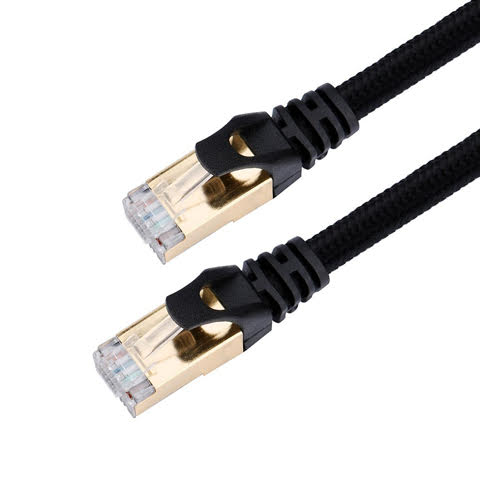
This cloth-covered ethernet cable is available online.
Question from Lindsey
Hi Debra,
Can you tell me if you know of a lead-free Ethernet cable? There are cloth-covered extension can red (links found on your site) & cloth-covered USB but I can’t find any Ethernet cables. Thank you!
Debra’s Answer
Here’s one: Vandesail Cat7 Ethernet Cable, Cat 7 RJ45 LAN Network Cable, High Speed Durable Nylon Braid STP.
It’s nylon. Not perfect, but no lead. 🙂
Also here is a “cable sash” you can use to cover PVC cables or bundle cables together. And another cable sleeve with a zipper. Both nylon.
I have been known to wrap cords with wired floral ribbon, which comes in pretty colors. The wire in the ribbon helps it stay in place.
Car Floor Mats Exposure
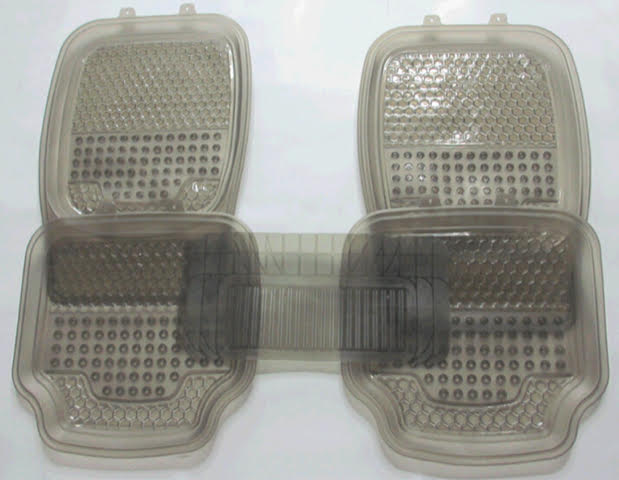
Question from Catherine
Hi Debra,
I just arrived in California to attend a weddinga nd my sister lent us a truck she has used in her business, so it’sa little rough.
My husband drove my two young daughters to the beach and hiking in it. I finally jumped in it when I was hit with a strong PVC (I think that was what is is) chemical odor and could smell it coming from the plastic floor mats. I had no idea that such toxic mats were in the vehicle, and to know my two kids were being driven in it for hours over a few days. I was so upset. The mats are apparently years old and no one else seemed bothered by them but me, butt hey smelled so strong I was hit with the odor when the door was opened.
My first question is are my children in danger from their exposure? Do I need to clean their shoes etc?
And how do you handle family who think your concerns are silly or when they don’t take your concerns seriously?
Debra’s Answer
I also don’t like the smell of floor mats, but let’s take a look at what they are actually made from before we figure out the danger.
Here’s a couple of paragraphs from an article about materials used to make floor mats and liners.
What are the all-weather floor mats and liners made of?
In order to withstand punishing year-round weather conditions and serious spills, the all-weather floor mats and liners are made from durable materials. Most of the all-weather floor mats are crafted from heavy-duty rubber, which can survive serious abuses virtually unscathed. However, the lighter-duty Catch-All Floor Mats use a thick weave of nylon rather than rubber, but they can still be washed off with a hose.
Floor liners are also made from ultra-durable materials, many of which are proprietary fabrications by the different companies. For example, Husky Liners developed a rubberized-plastic material called polydurathene, which is guaranteed not to crack, splinter or break for 99 years. What’s more, the scientists at Xtreme created Xynet, a resin with the look and flexibility of rubber. Xynet is impervious to the most common chemicals found in and around your vehicle, such as motor oil, gasoline and even battery acid.
That said, I searched specifically for “PVC auto floor mats” and they came right up.
So let’s assume they are PVC.
I’m not worried about your children having this one exposure. The problem is being exposed to these chemicals day-in-and-day out. I would be much more concerned if you told me your children were sleeping every night on a crib mattress with a vinyl cover.
Cleaning their shoes won’t do much by now.
How do you handle your family? All I know to do is education. I’m actually working on putting together some materials that I hope will be more convincing for people who are not yet aware that they need to be concerned about toxics.
I don’t have floor mats in my car. If you think you need them, those made from nylon would be the least toxic. Or I might cut some natural sisal mats to fit.
Readers, any recommendations?
How to clean wood kitchen cabinets?

Question from Colleen
Hi Debra,
I have original Scheirich wood kitchen cabinets in our kitchen. How do I go about cleaning and fixing water damage on the front of the cabinets below the sink and cleaning grease and greasy fingerprints off them. I don’t know what type of finish is on them. Can anyone help? I have MCS and anything with fragrance cause migraines and breathing problems. Thank you!
Debra’s Answer
The first thing I would do is contact the manufacturer to find out the standard care instructions and then figure out how to do the same thing in a nontoxic way. But looking online it seems like this brand is no longer being sold.
Here’s a whole pinterest page about “restoring mid-century wood cabinets”.
I had to smile when I saw this.
I grew up in a mid-century suburban house. My parents bought it in 1962 when I was 7 years old for $19,000. Now those homes are about $500,000.
Here’s an article about cleaning kitchen cabinets using Murphy Soap.
However, Murphy Soap contains fragrance. I see you can substitute unscented liquid castile soap for Murphy’s Soap.
Maybe my friend Gina will jump in and tell us how she cleans wood cabinets. She’s been a professional natural cleaner for as long as I have been writing about toxic-free products. Gina!!! Come help!!!
JUST AN ASIDE: While I was researching this I came across an EWG review of Murphy’s Oil Soap. Fragrance is NOT listed on their list of known ingredients (though it does say citronella oil) and it says “ingredient disclosure: poor” All they need to do is go to the Murphy’s Oil Soap website to find out there is fragrance. This is just one example of why I do my own research and don’t rely on EWG.
Be Prepared to Purify Your Indoor Air in a Crisis

A view from the east bench taken about 1 p.m. Sunday, Aug. 5, 2018, shows ozone-heavy skies in the Las Vegas valley. (Kevin Janison | KSNV)
One of my most favorite readers sent me an article last week about air filters—one of those 10 tips articles that someone writes who doesn’t know anything about the subject. She thought I should write something on this topic, so here I am.
I agree that during a crisis—whether it be a fire, nuclear attack,or any calamity—outdoor air could be compromised. And last summer I had that experience first hand when I was mere miles from the Sonoma County Firestorm. I had to leave my home in the middle of the night and go to the beach to breathe, just a few nights after I arrived in California.
And now here we are in fire season again in California. At the moment we are fine. But you never know when there will be smoke or where it will go.
The photo above was taken Sunday afternoon in Las Vegas—445 miles as the crow flies.
When the smoke arrives, it’s too late to get an air filter.
 I was a Girl Scout when I was younger. And the Girl Scout motto is “Be Prepared.” The idea is, obviously, if you learn what to do in life or in an emergency before it happens, you’ll suffer less, or you may not suffer at all.
I was a Girl Scout when I was younger. And the Girl Scout motto is “Be Prepared.” The idea is, obviously, if you learn what to do in life or in an emergency before it happens, you’ll suffer less, or you may not suffer at all.
Air filtration is just one of those things you just need to be prepared for.
And you only have seconds to get air filtration going when you need it most:
- Between 30-180 seconds of oxygen deprivation, you may lose consciousness.
- At the one-minute mark, brain cells begin dying.
- At three minutes, neurons suffer more extensive damage, and lasting brain damage becomes more likely.
- At five minutes, death becomes imminent.
- At 10 minutes, even if the brain remains alive, a coma and lasting brain damage are almost inevitable.
- At 15 minutes, survival becomes nearly impossible.
AIR IS THE MOST ESSENTIAL THING TO LIFE
Q&A: The Greatest Danger to Firefighters Isn’t the Fire—It’s Cancer from Toxic Smoke



